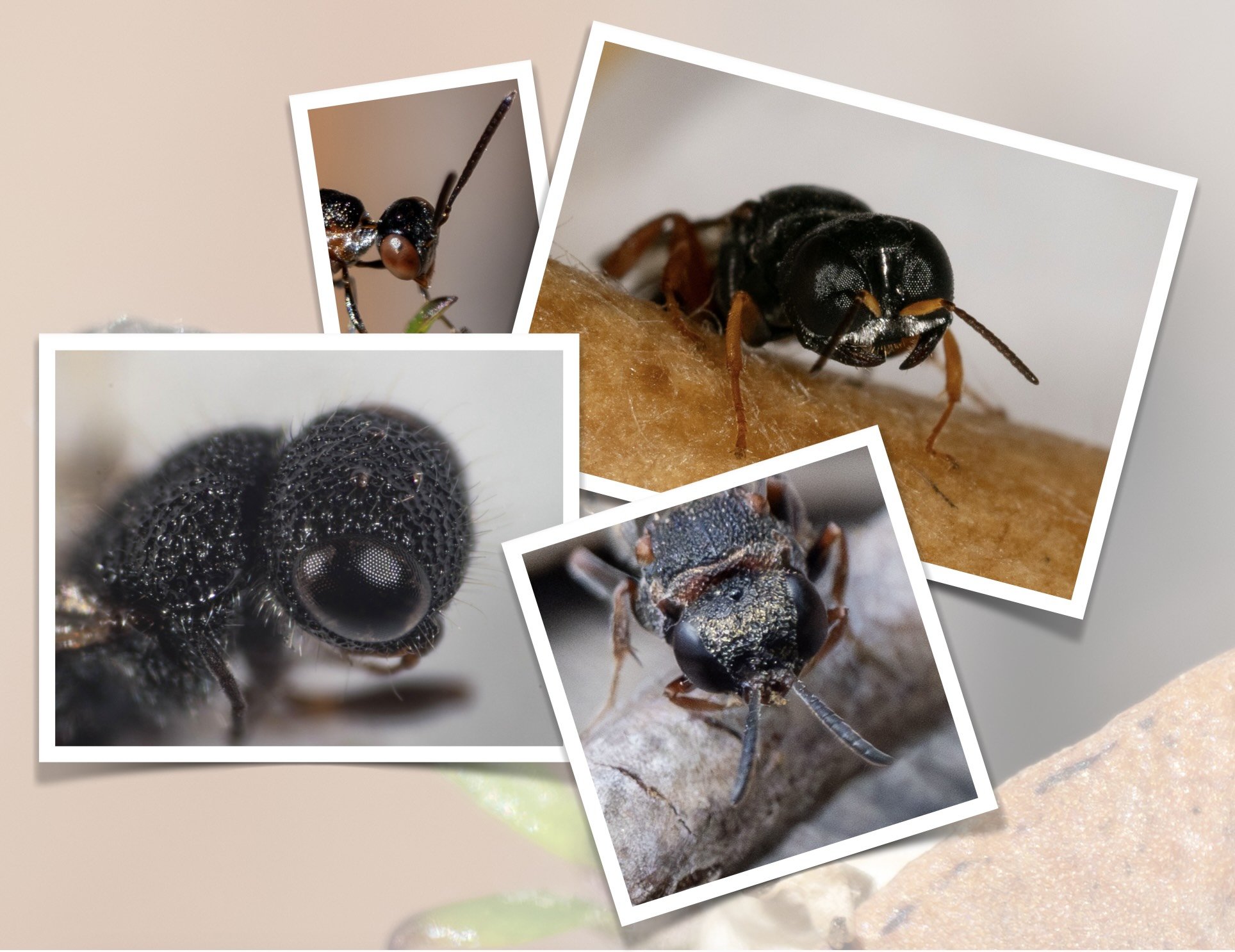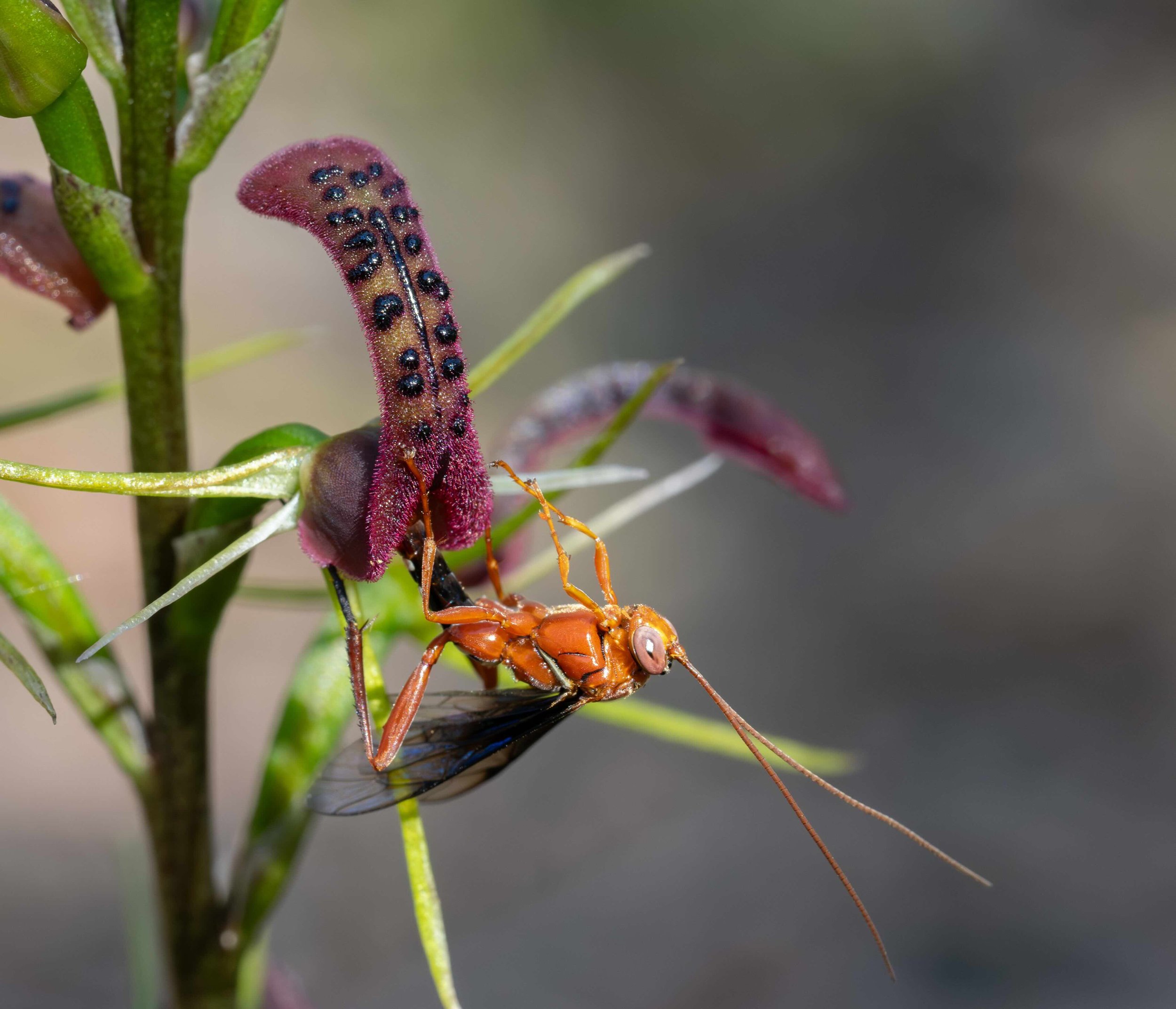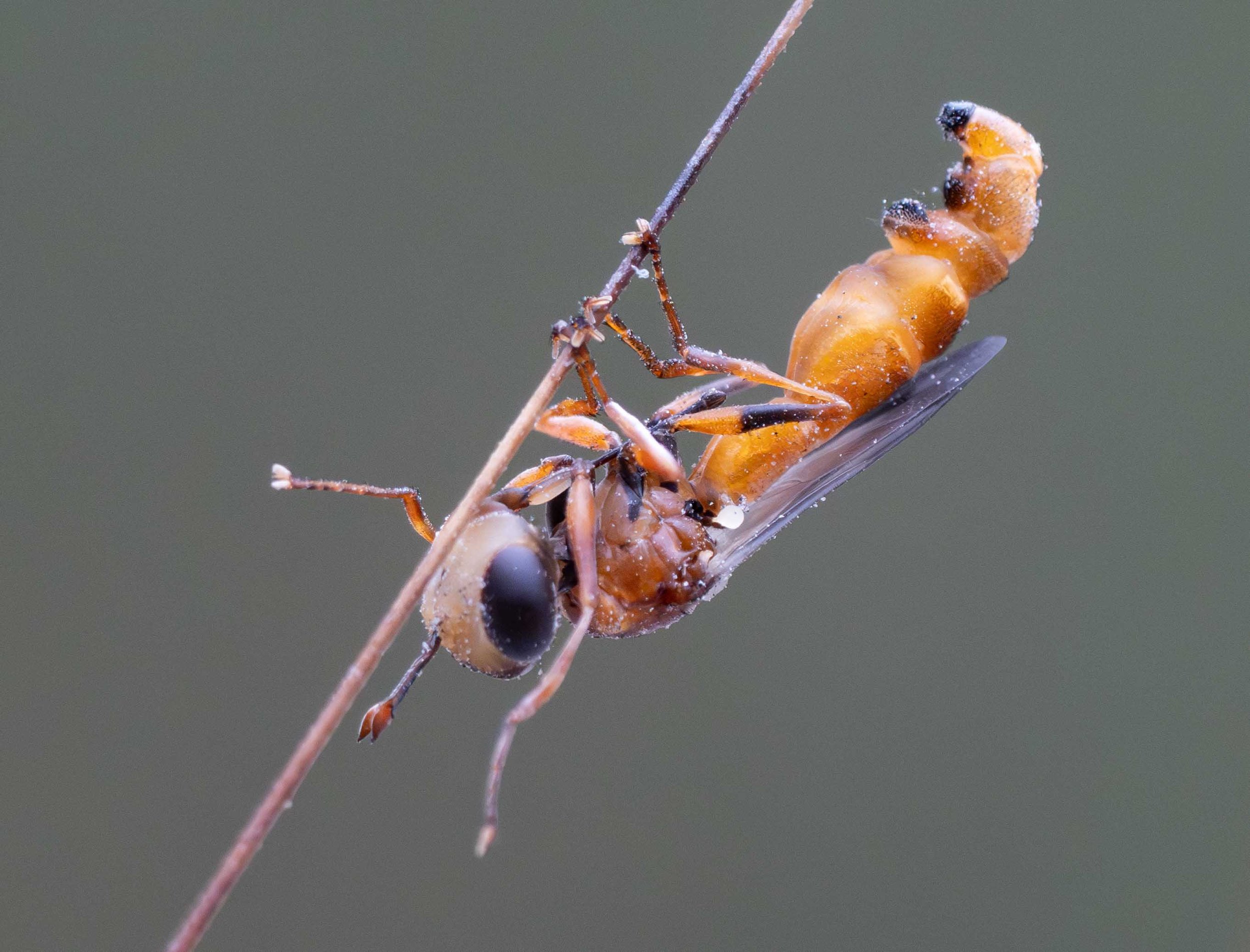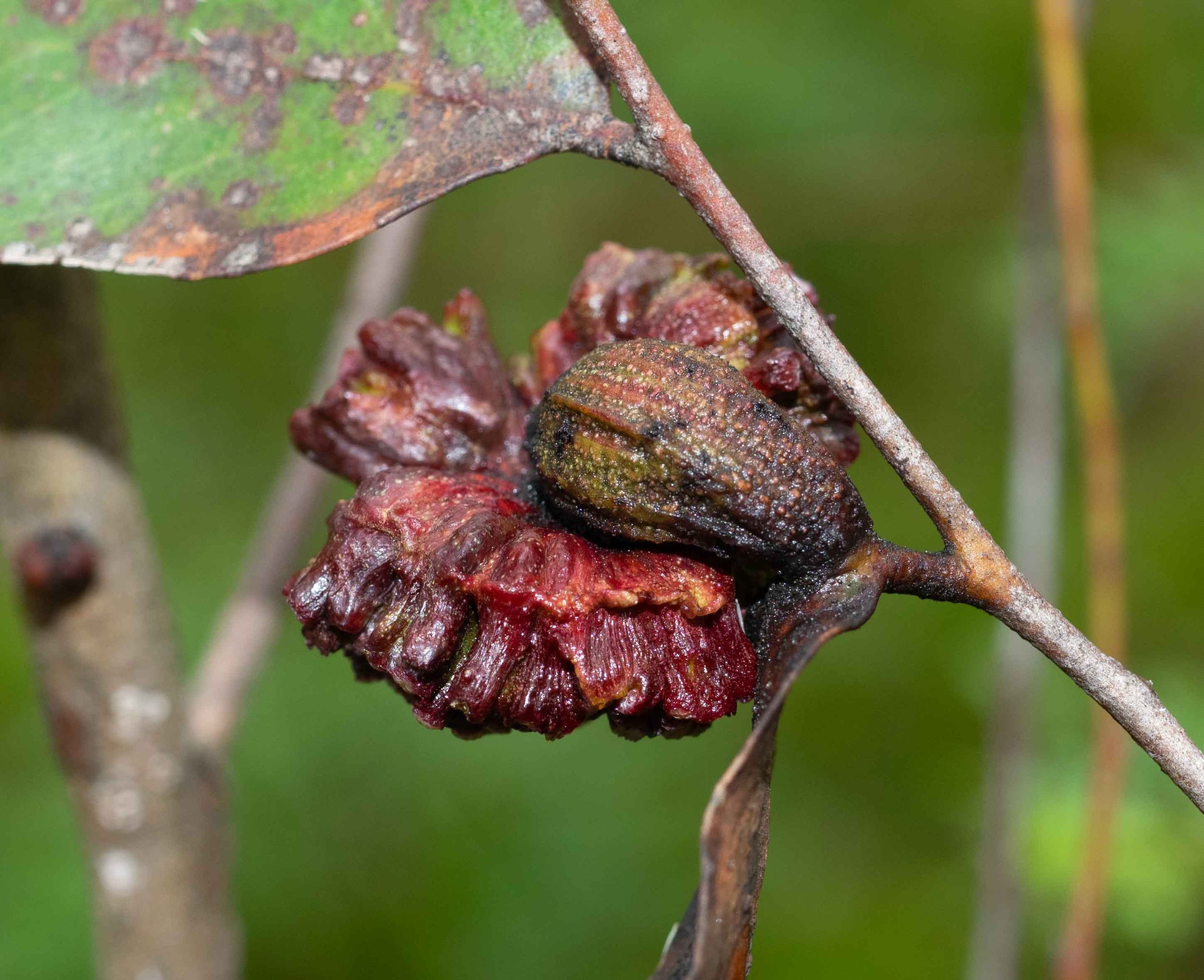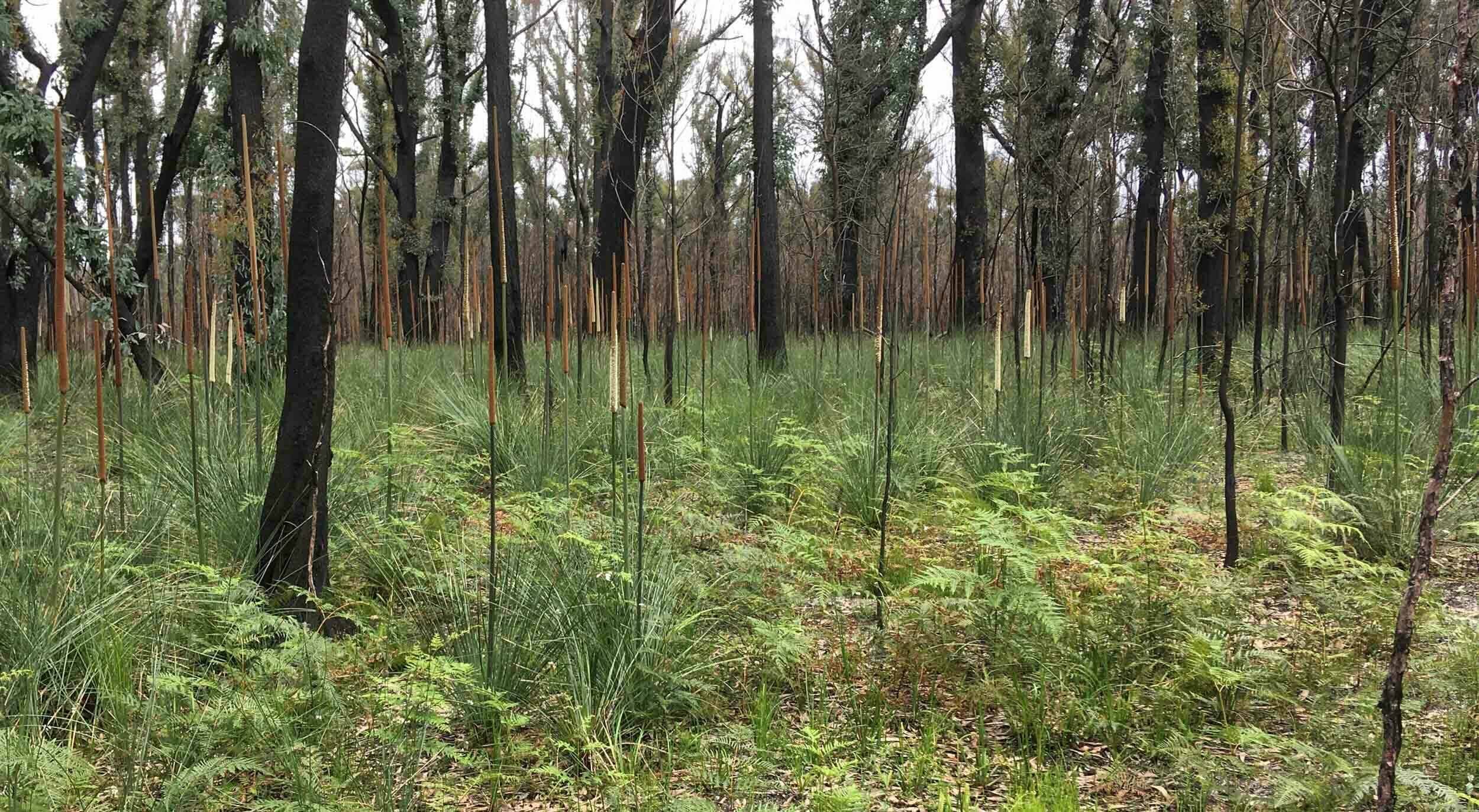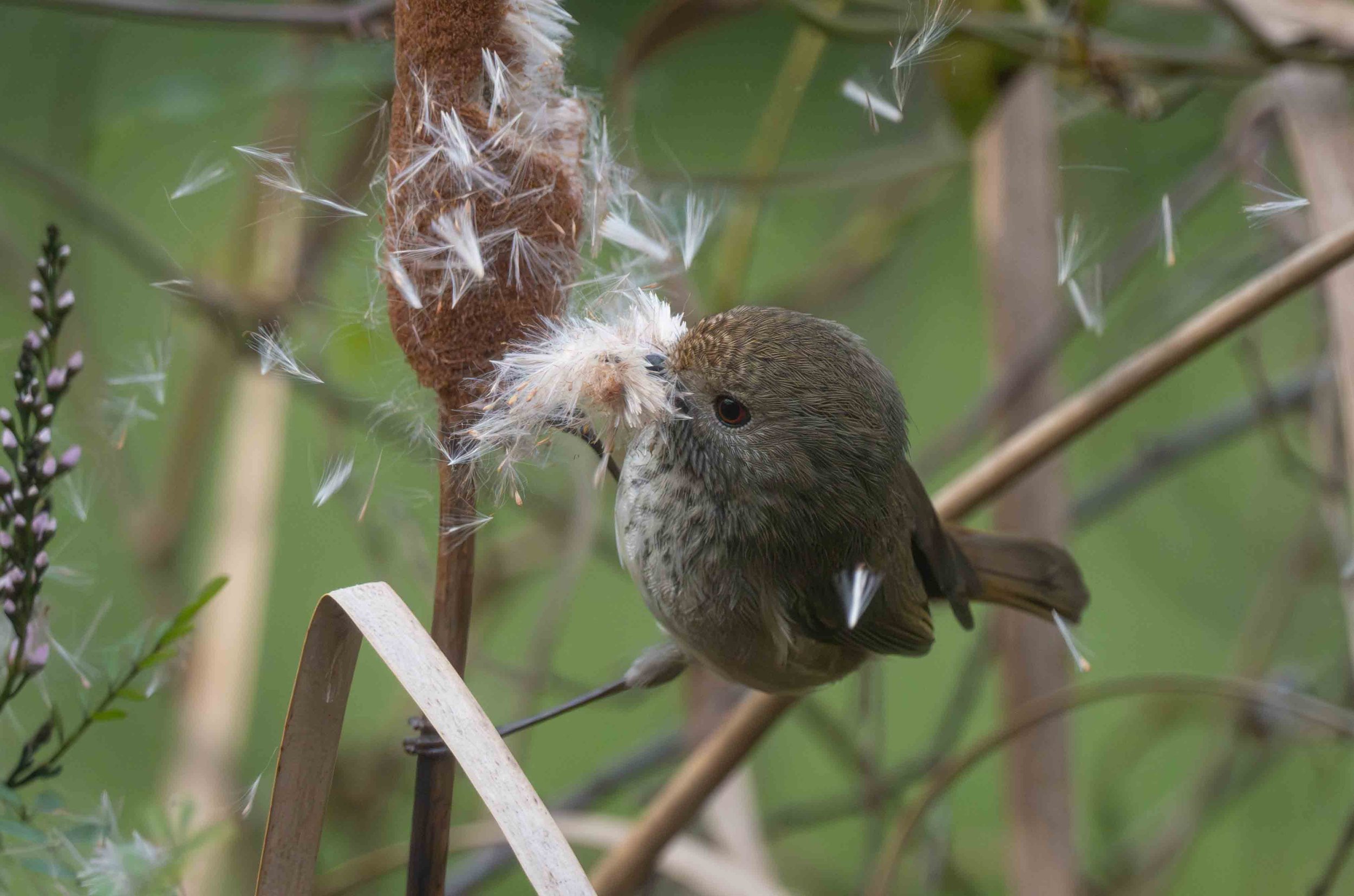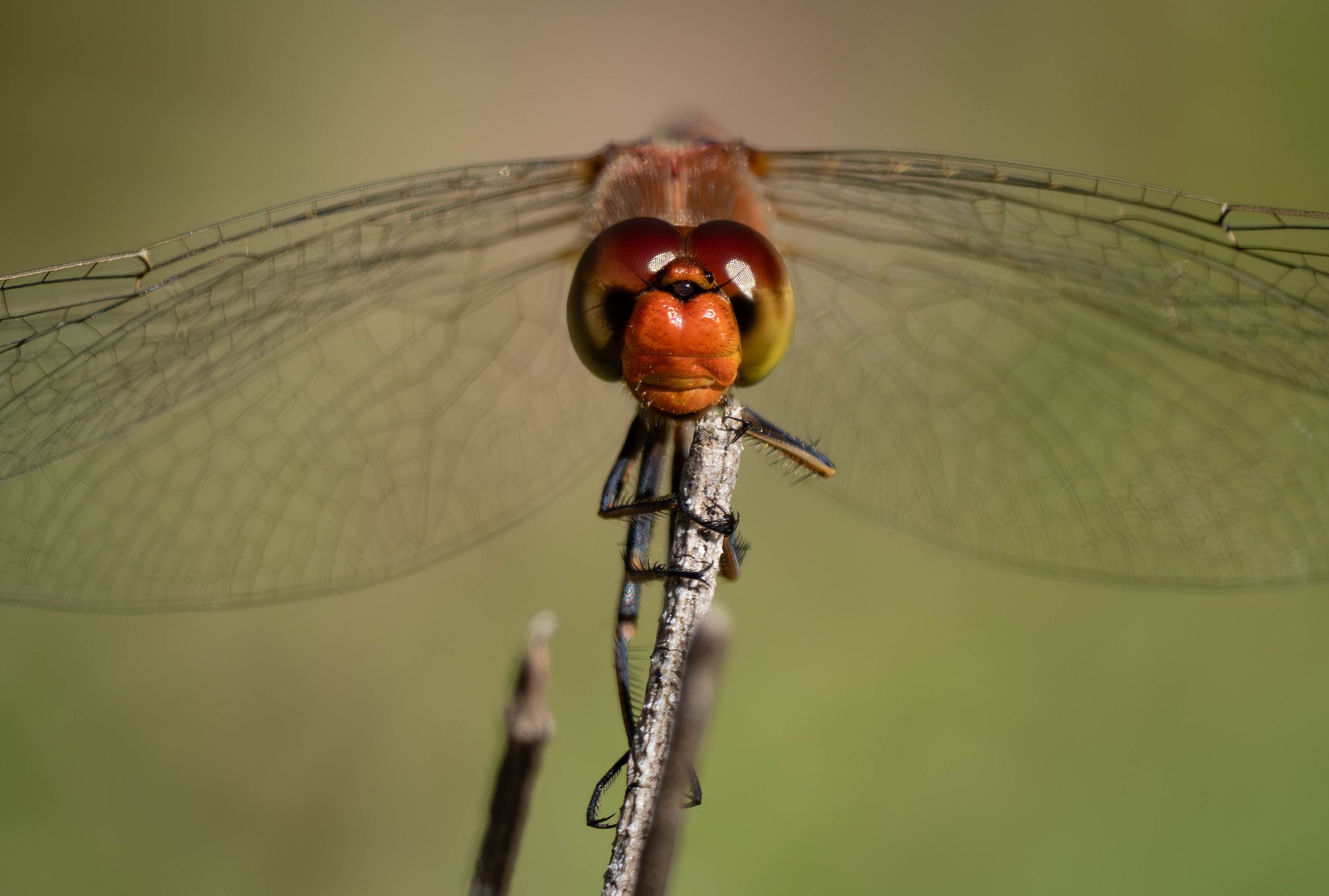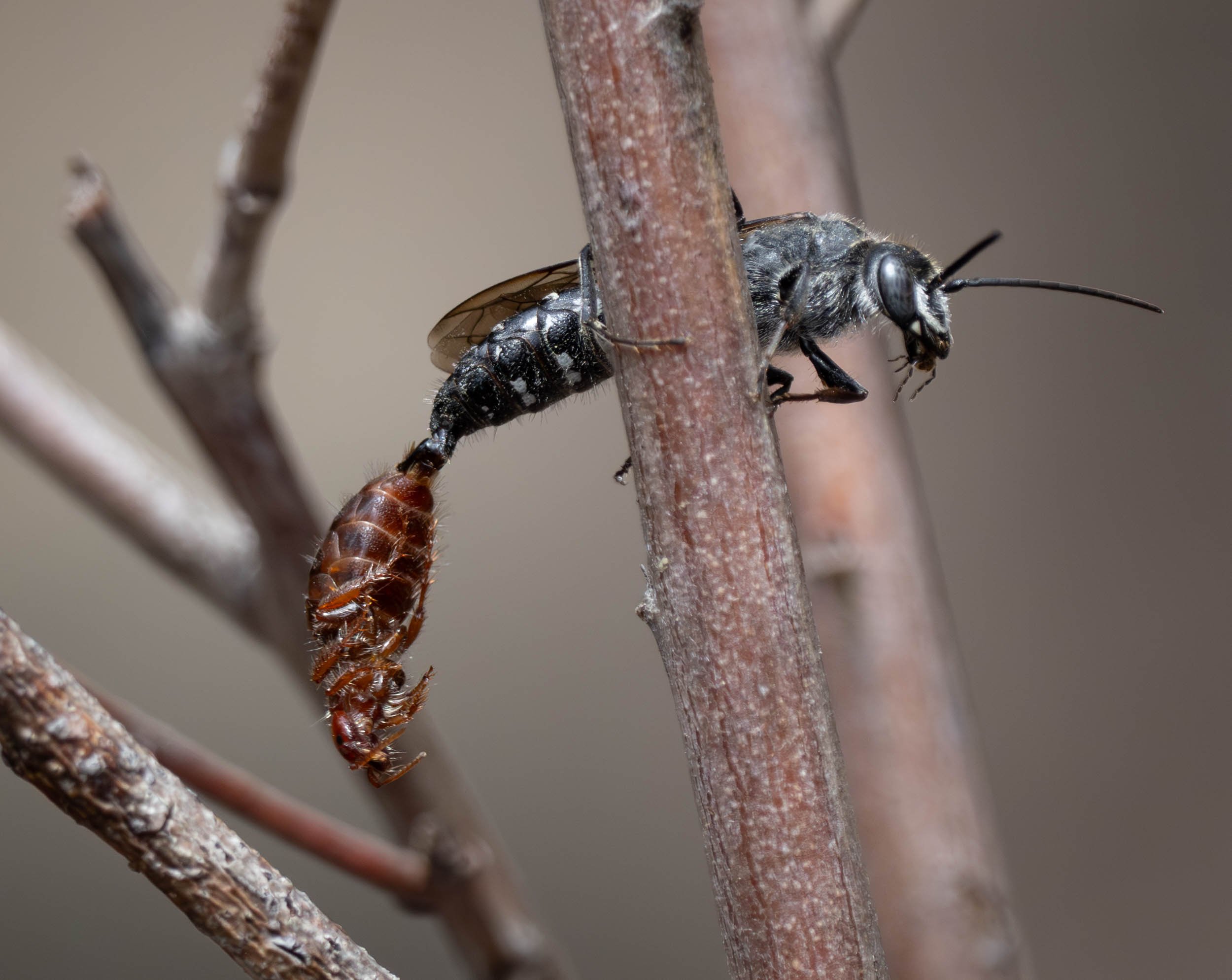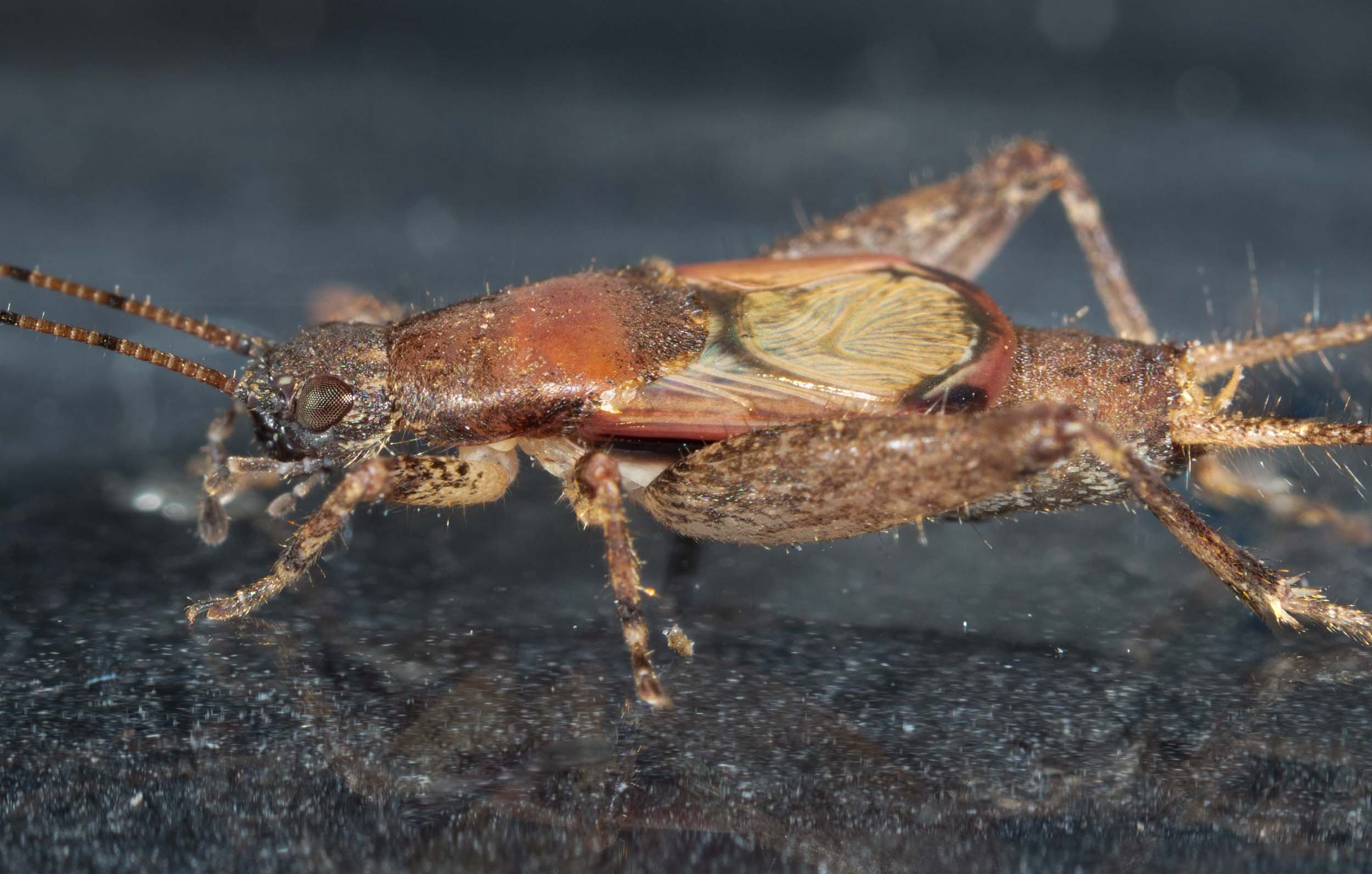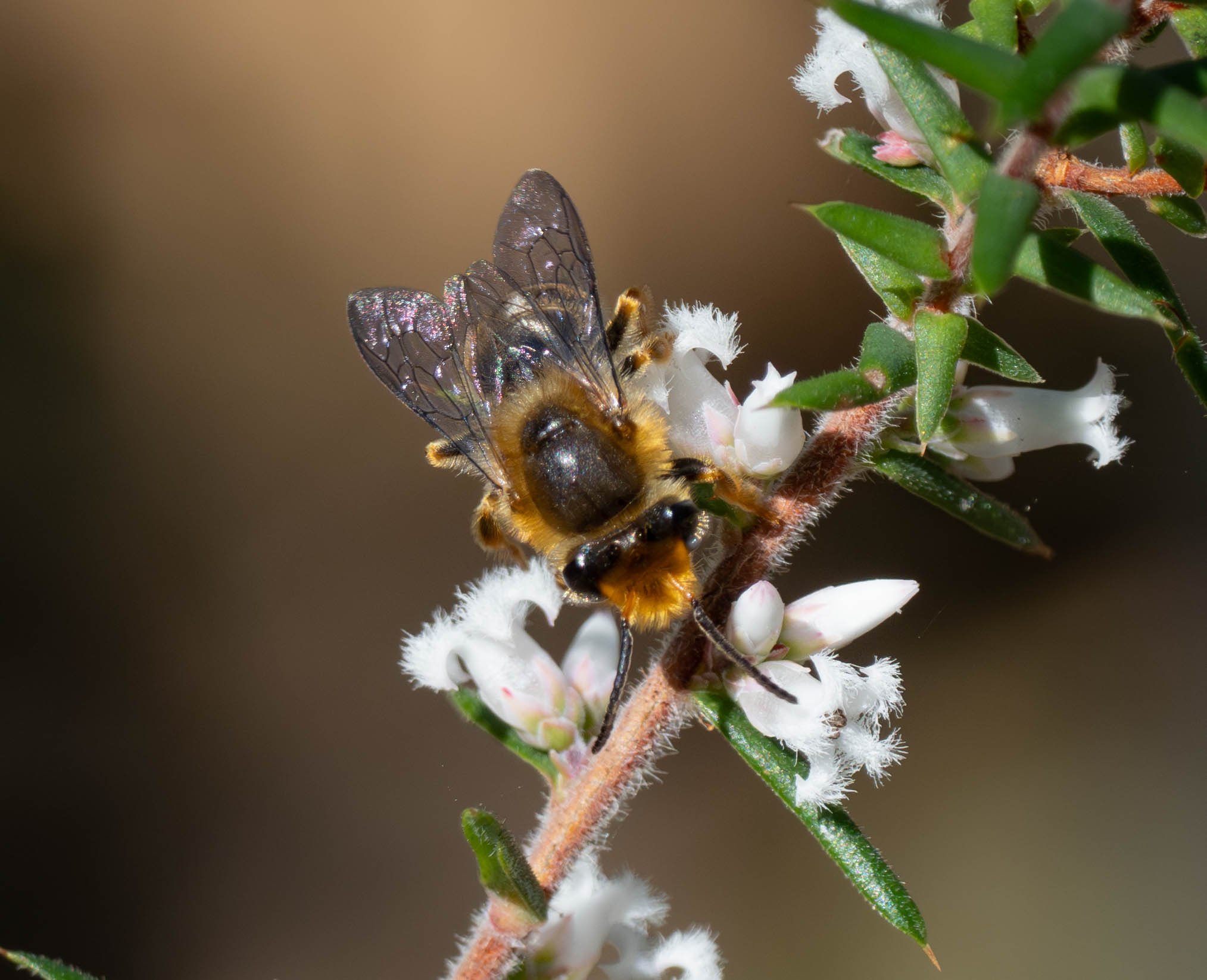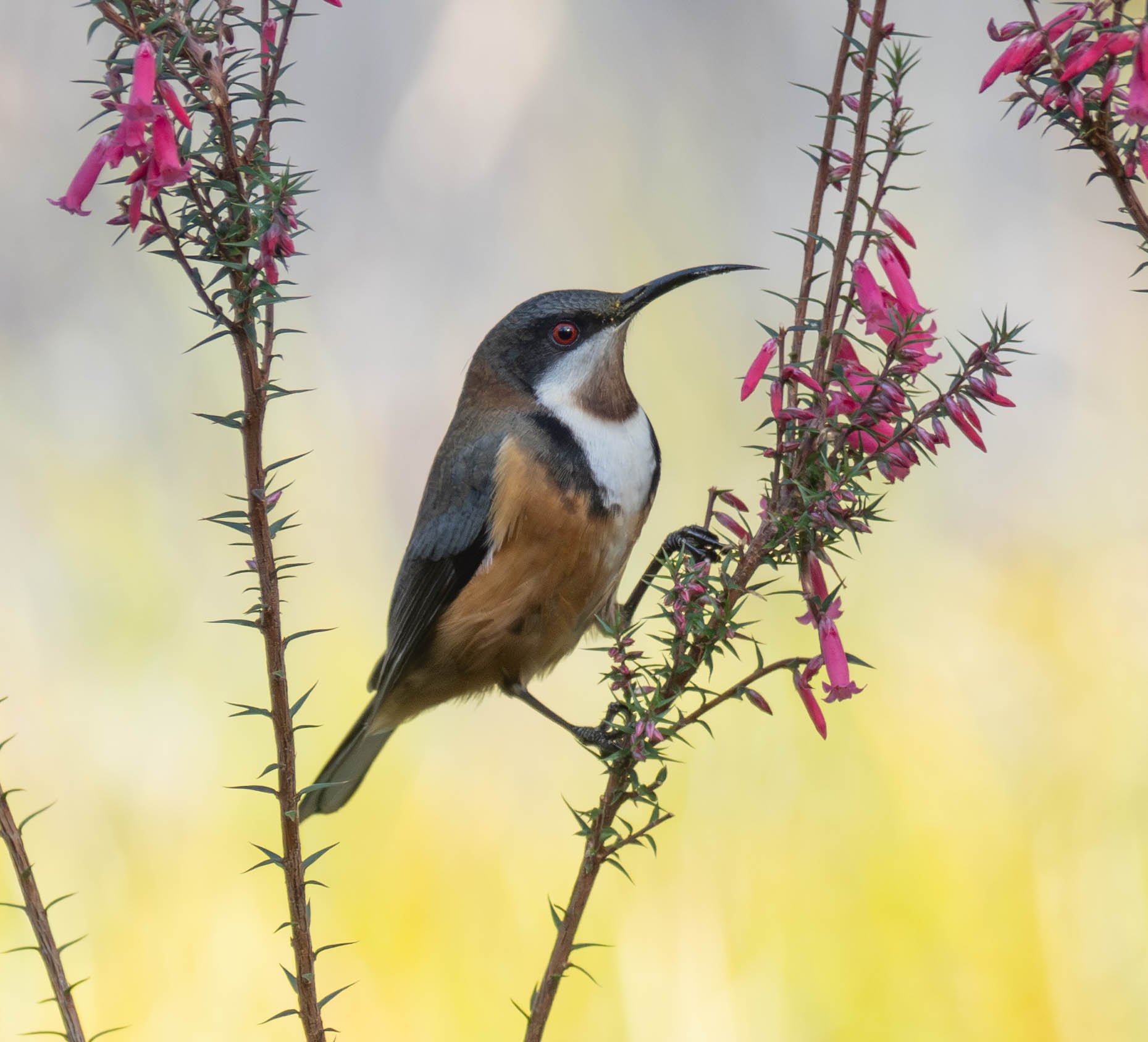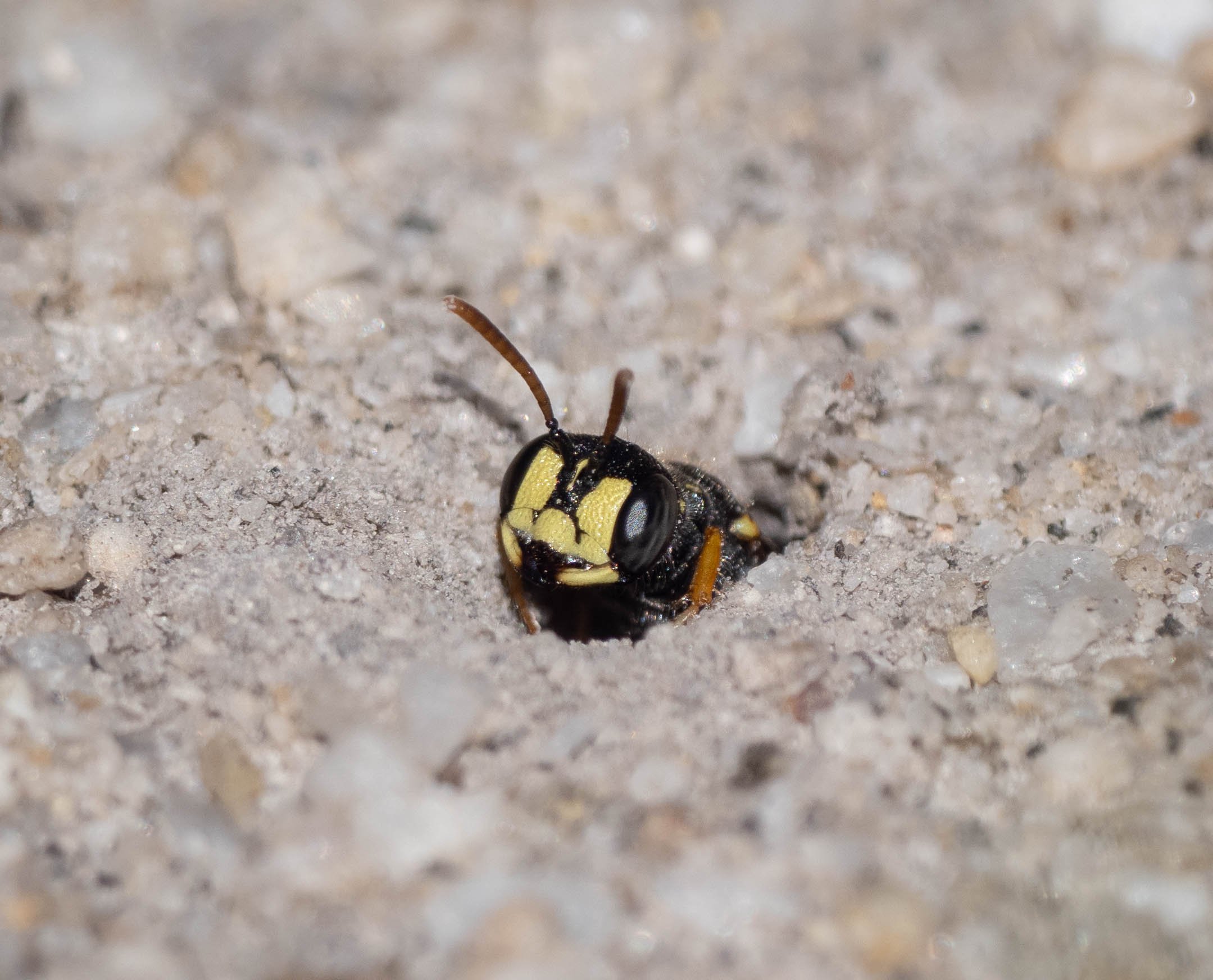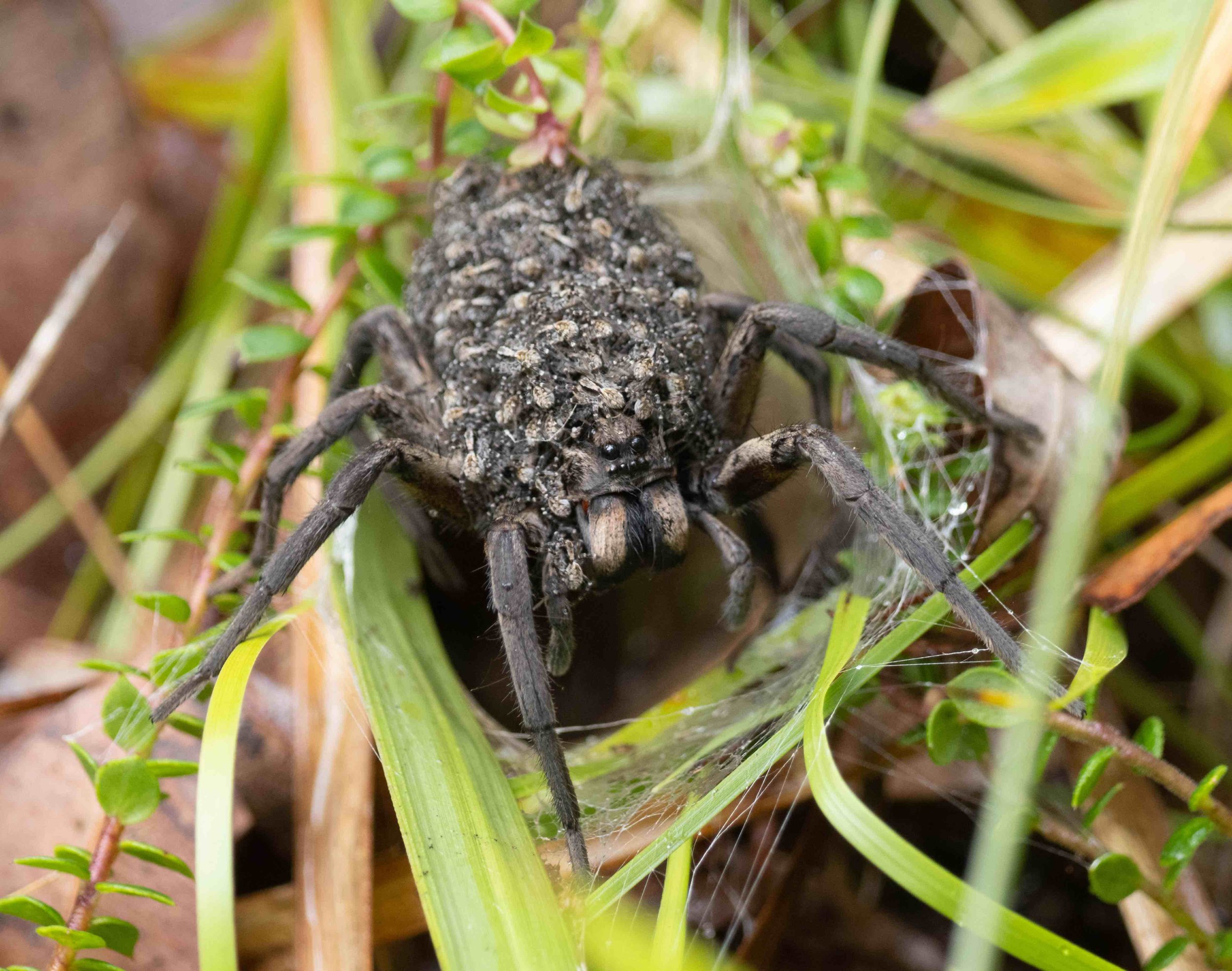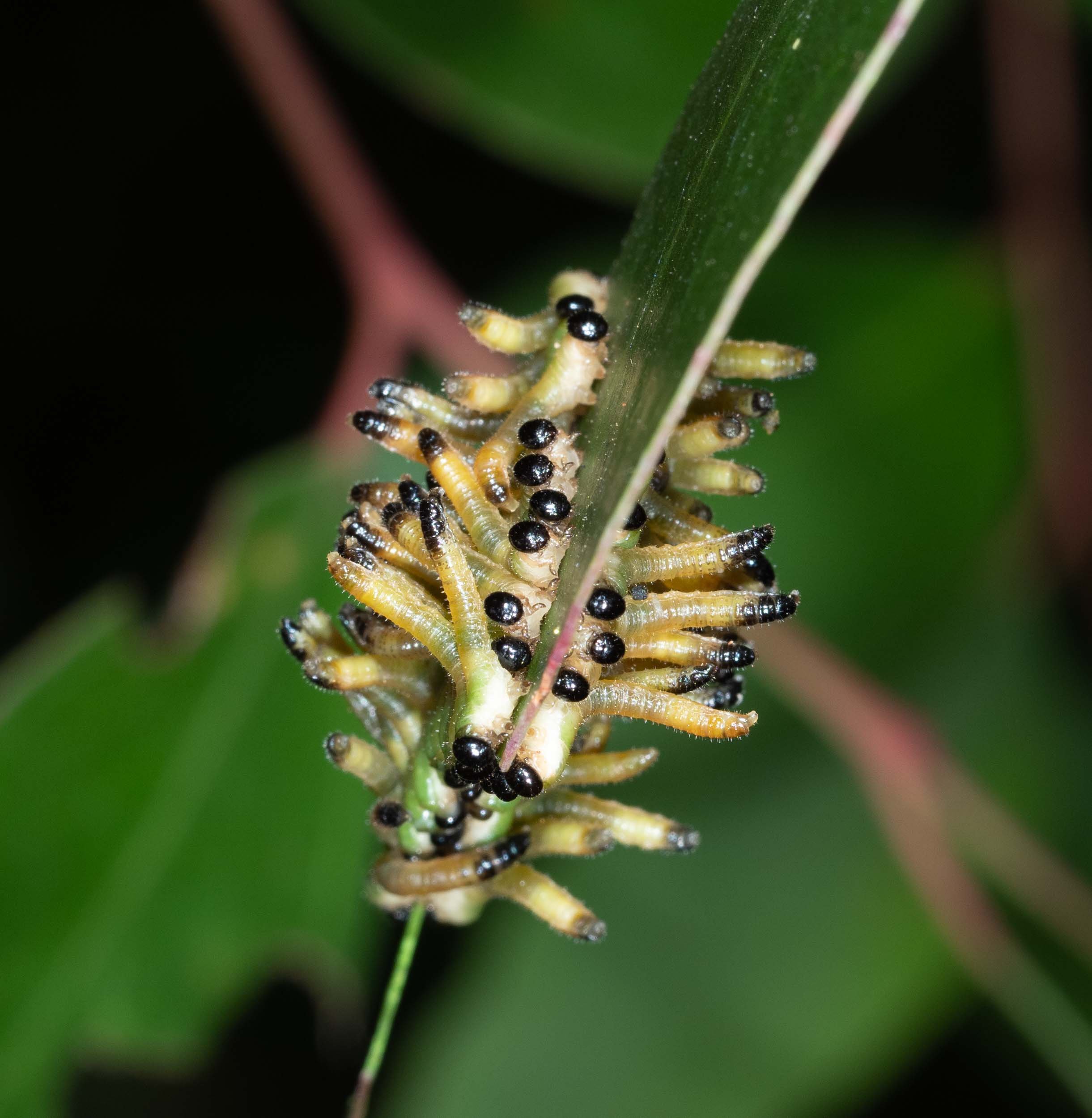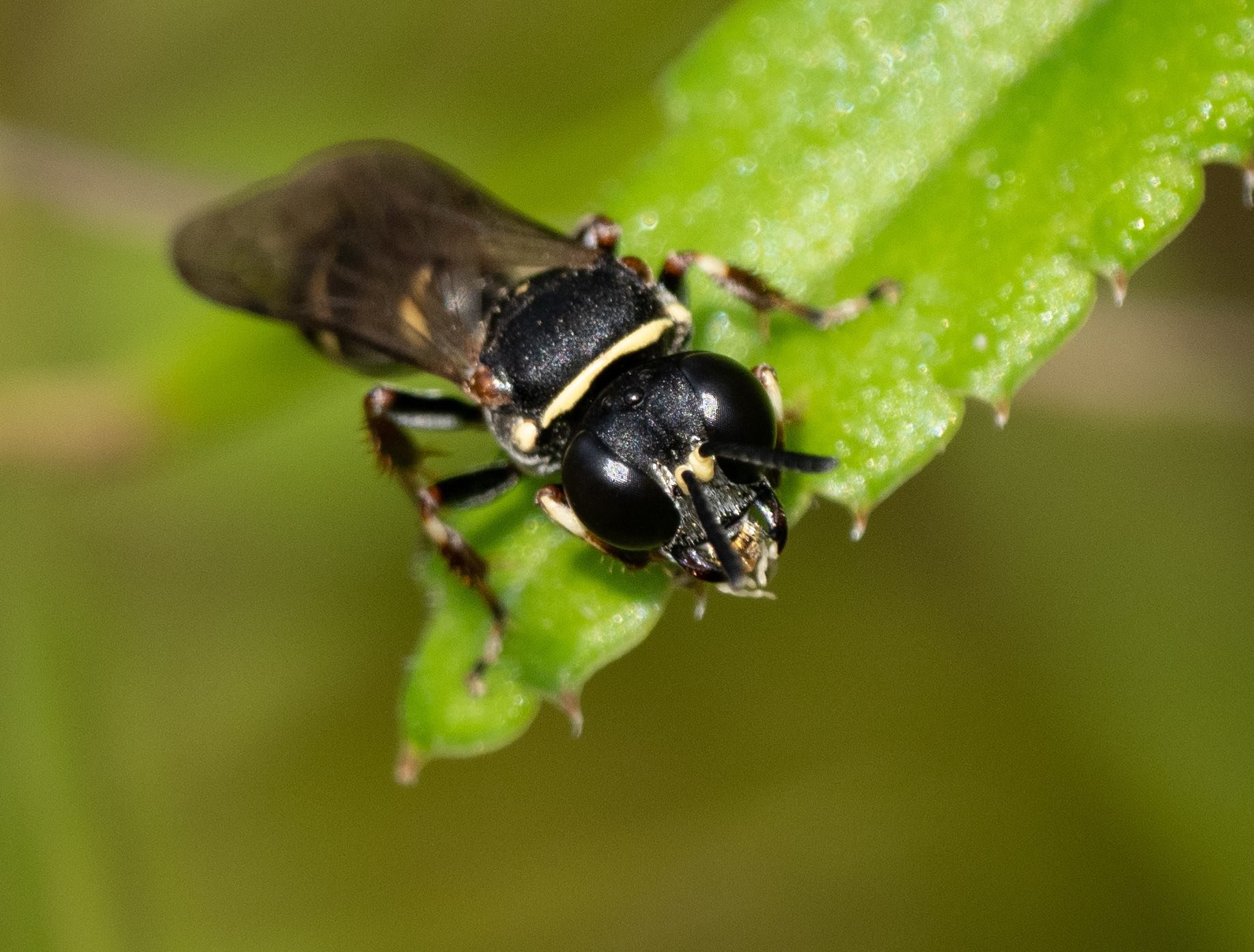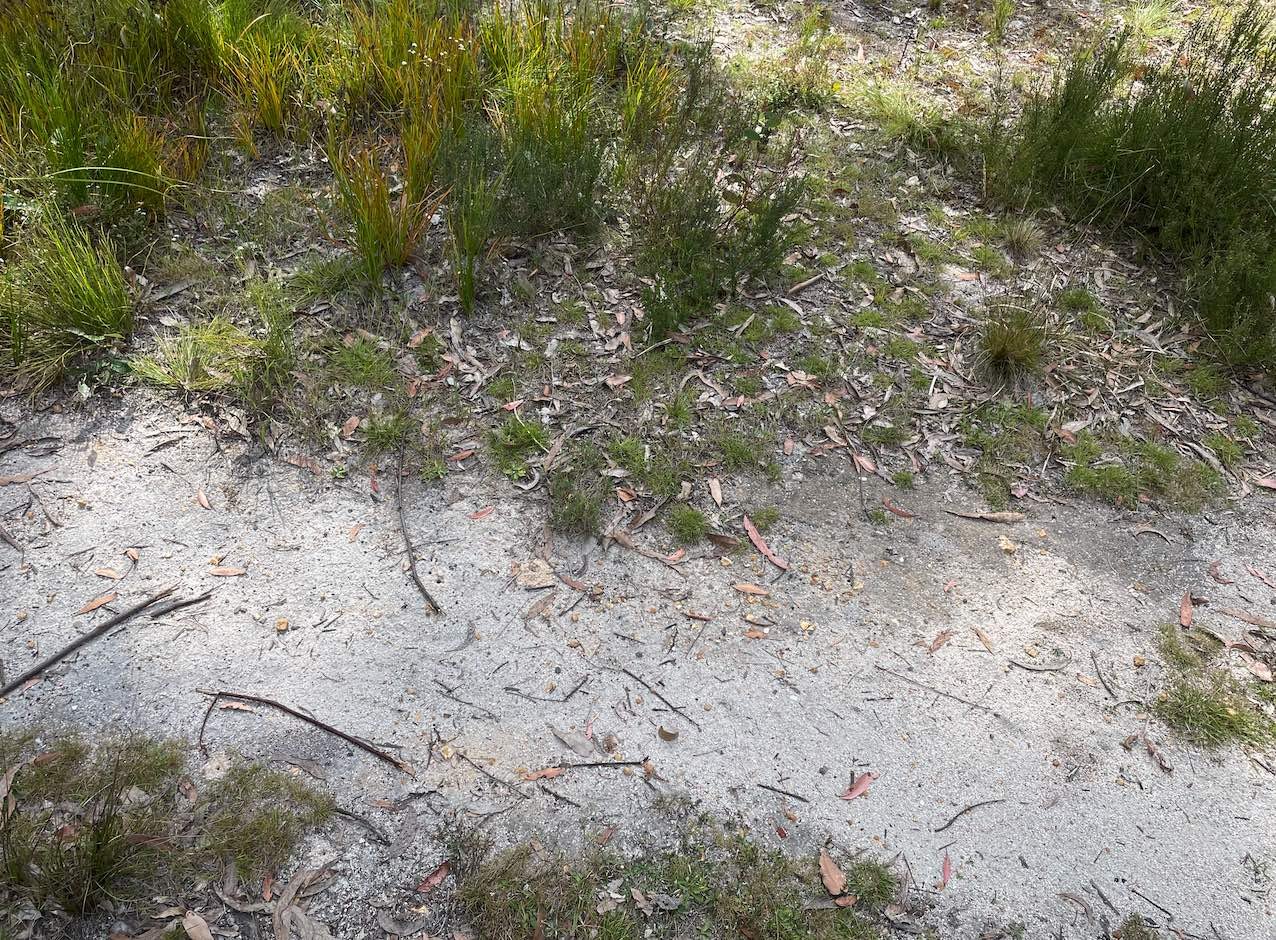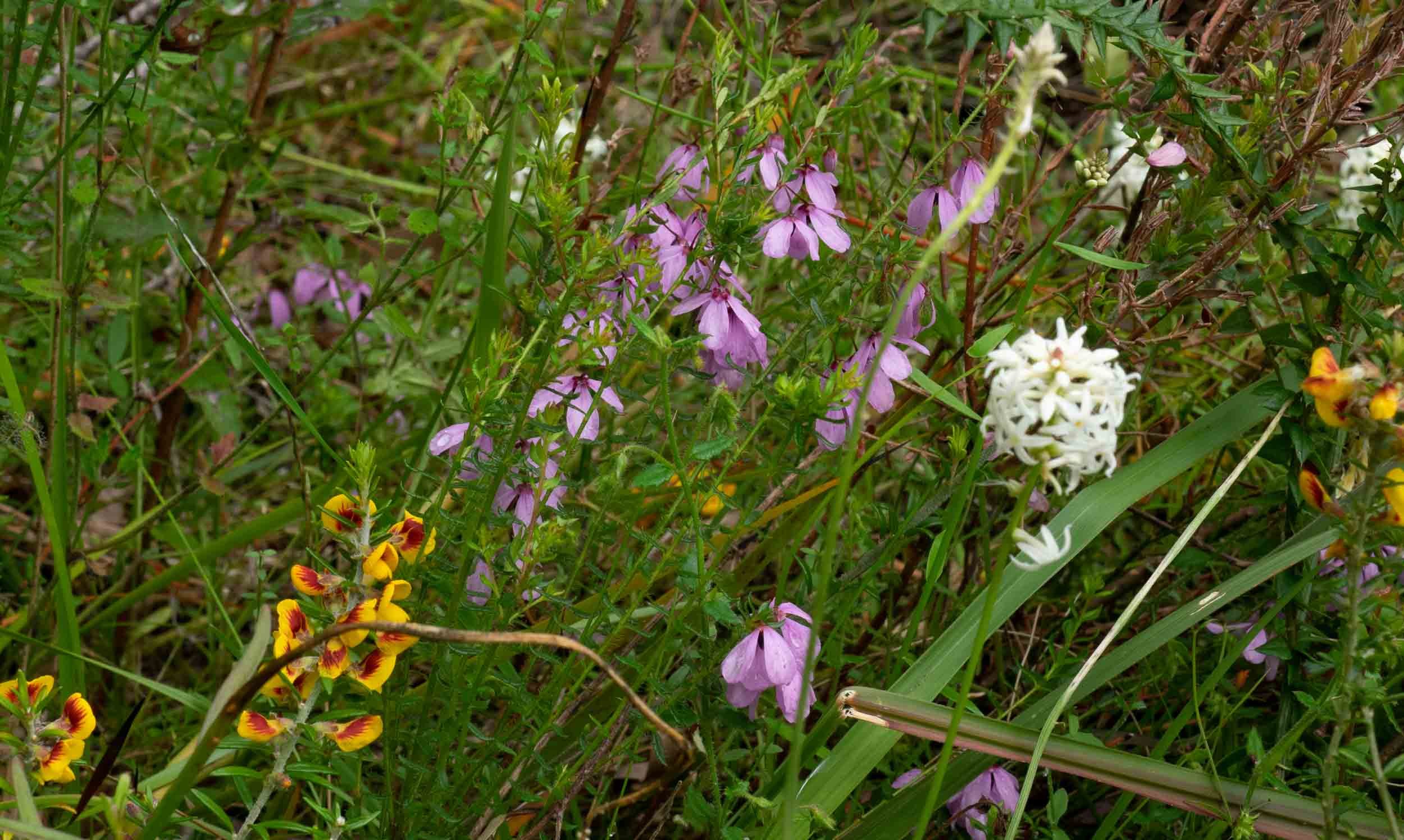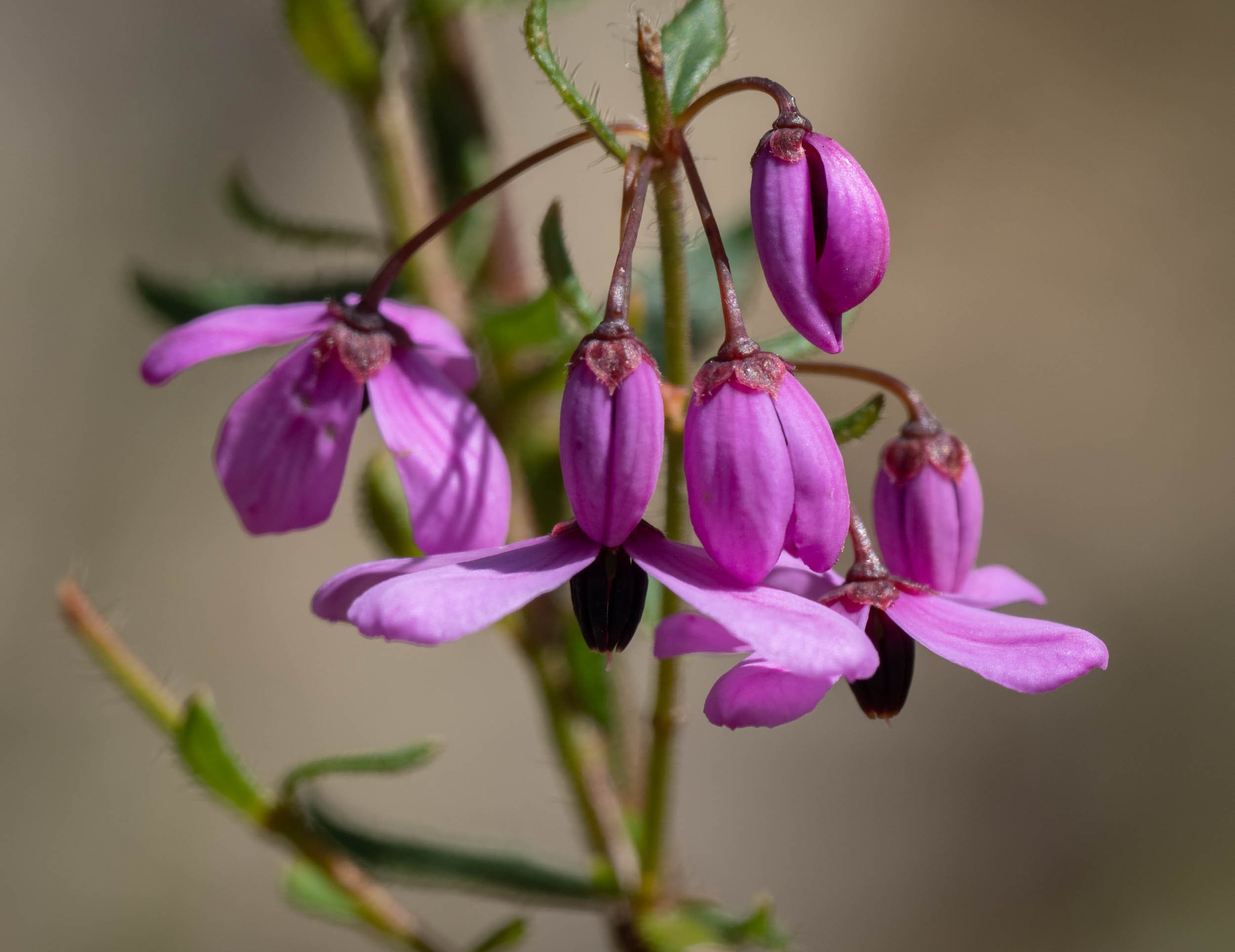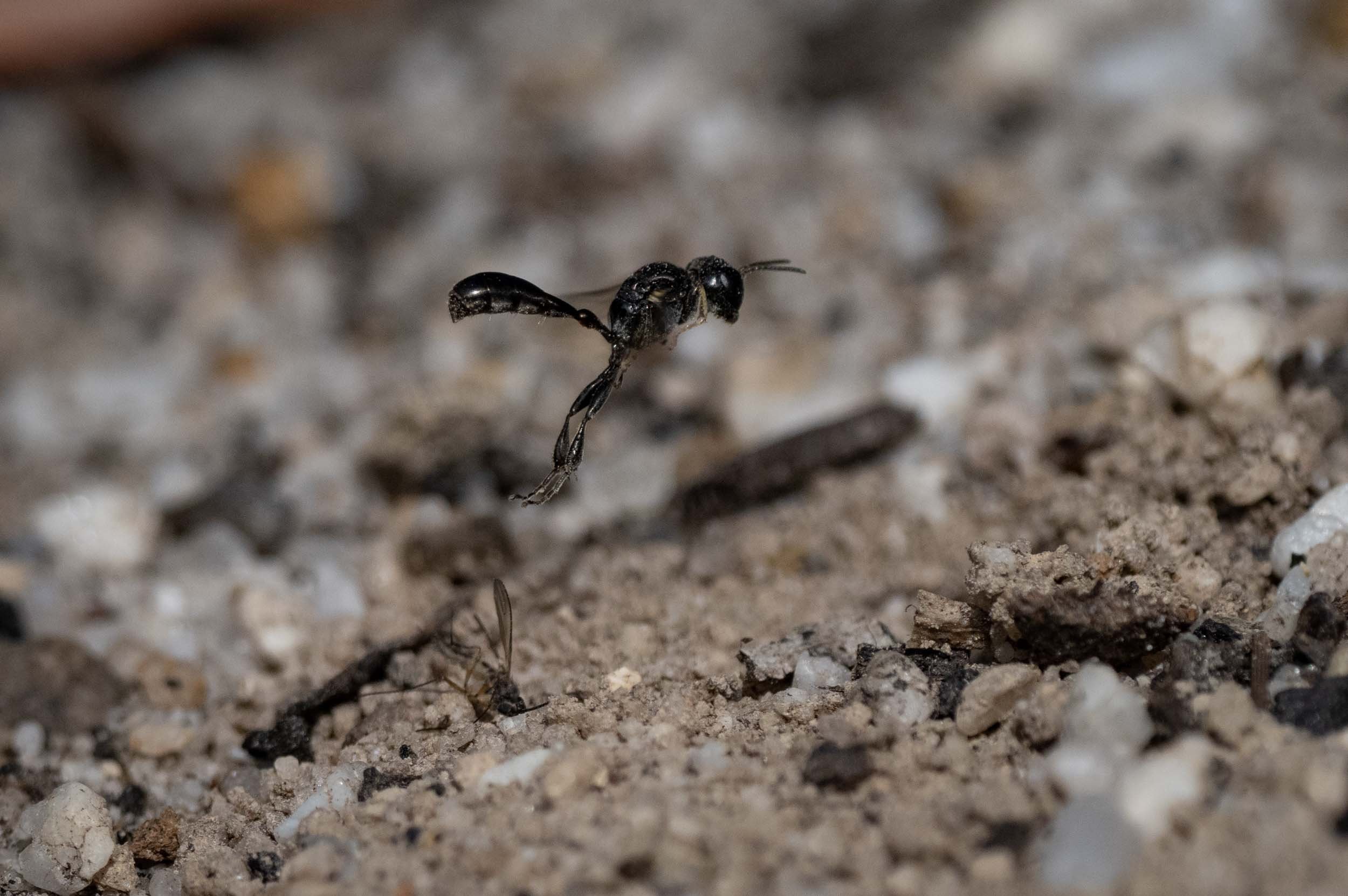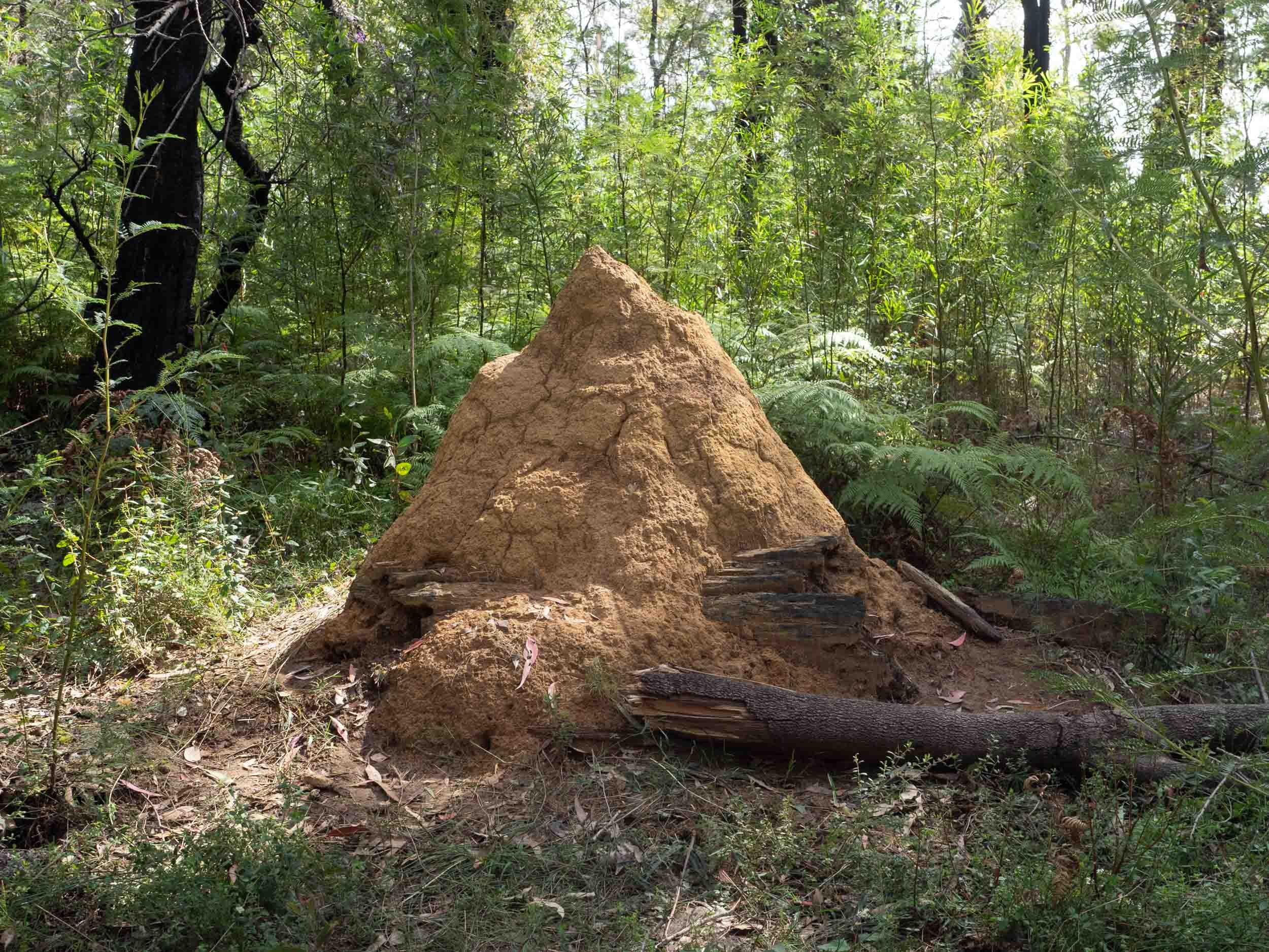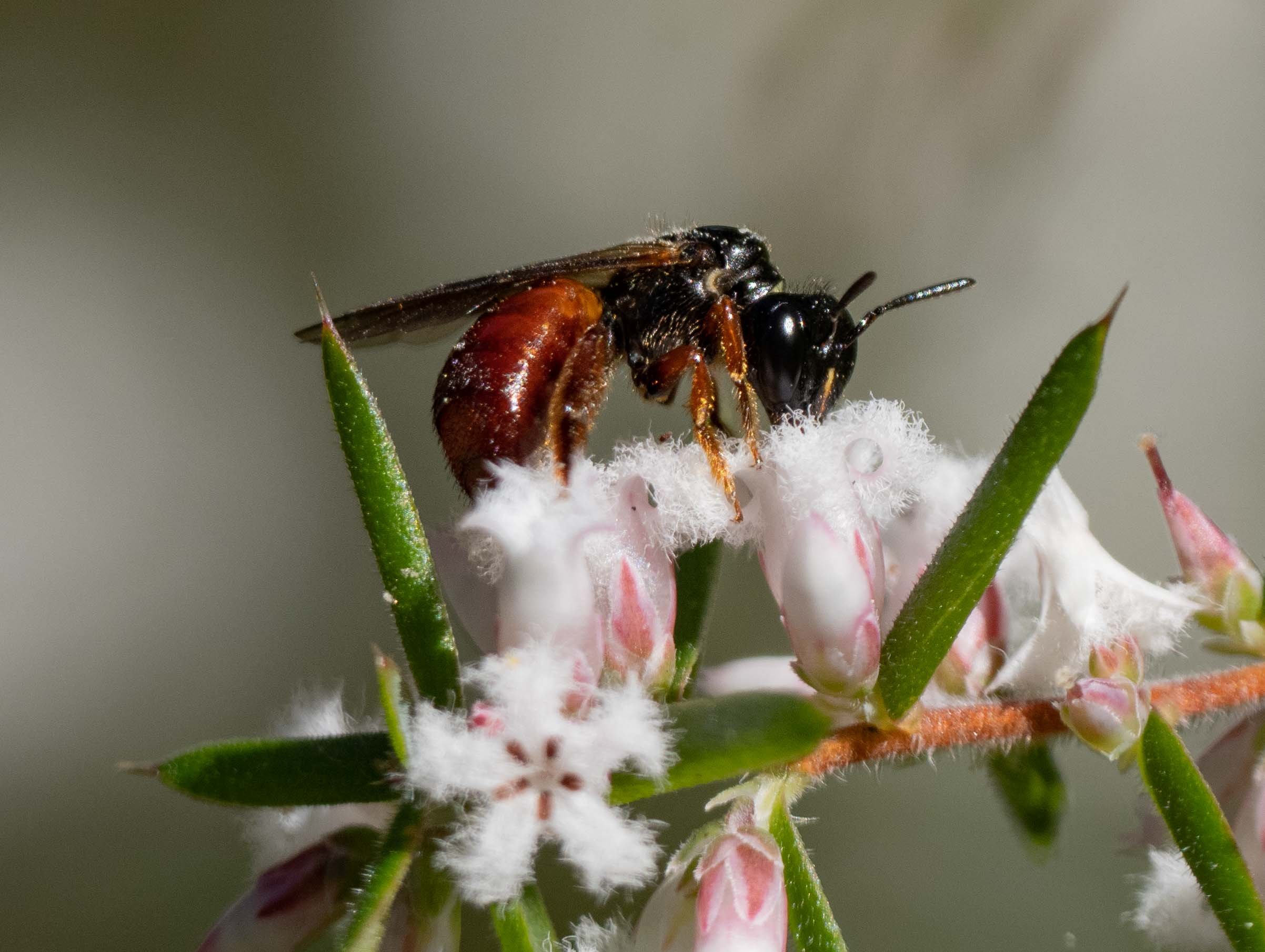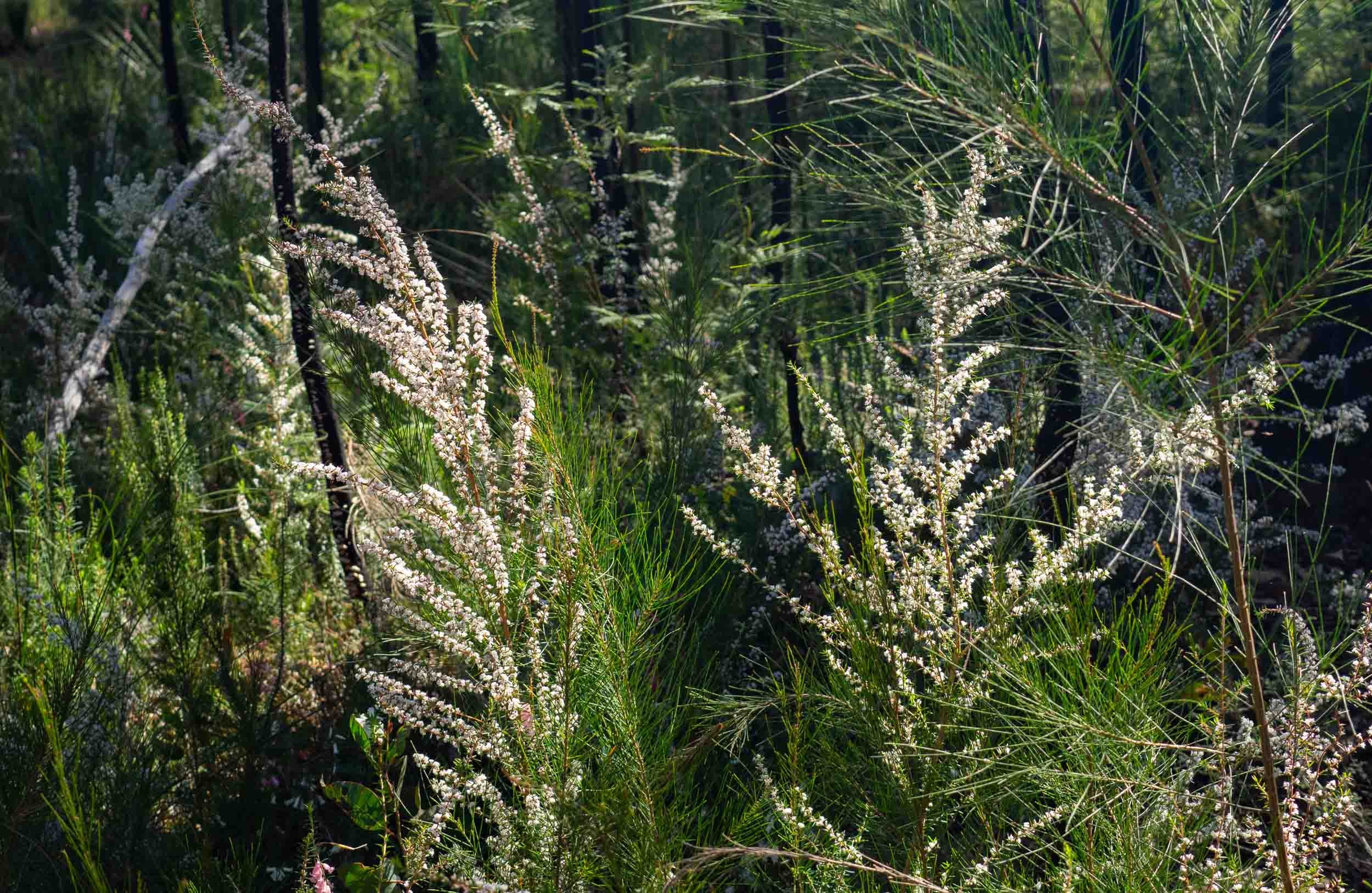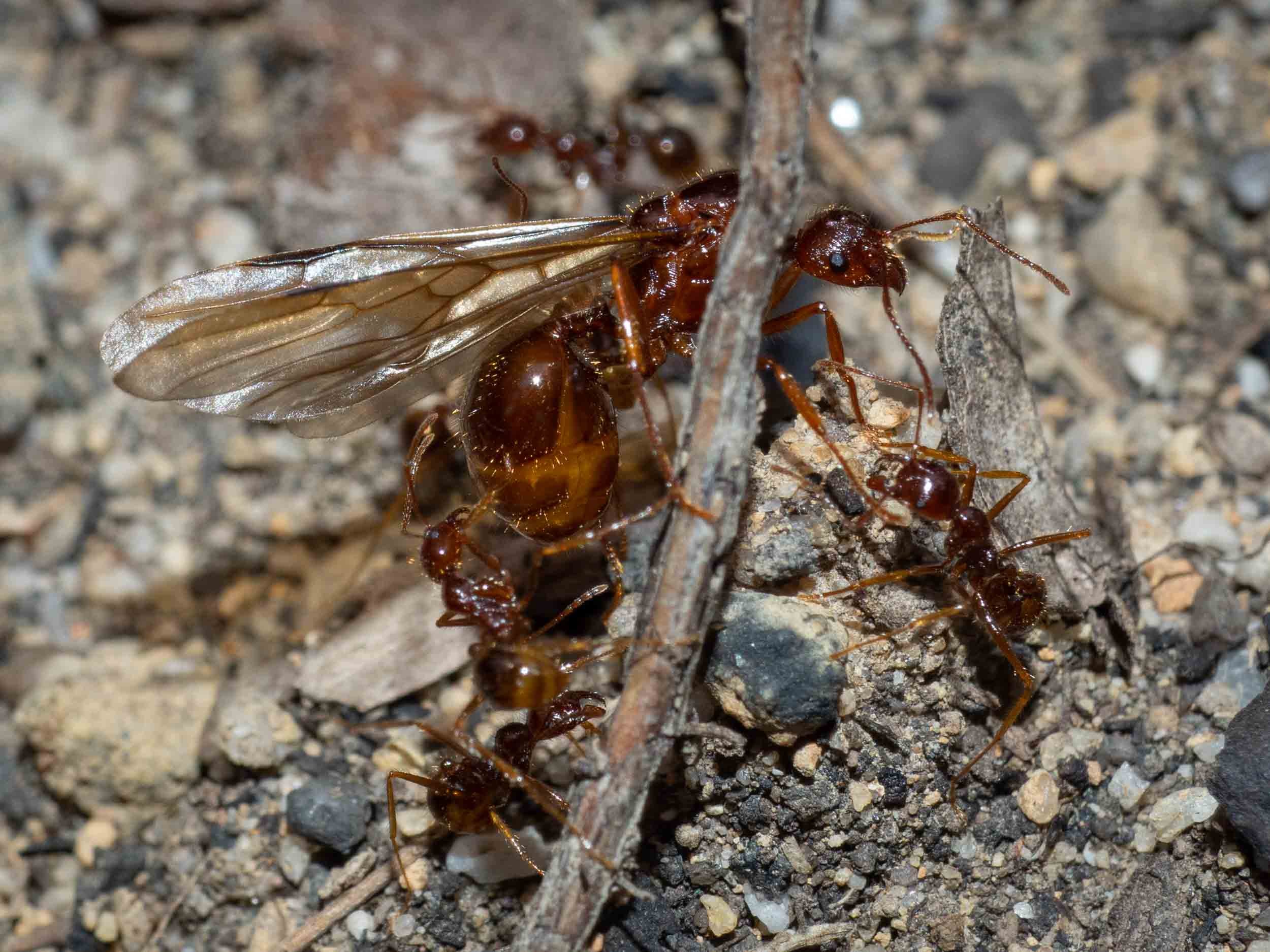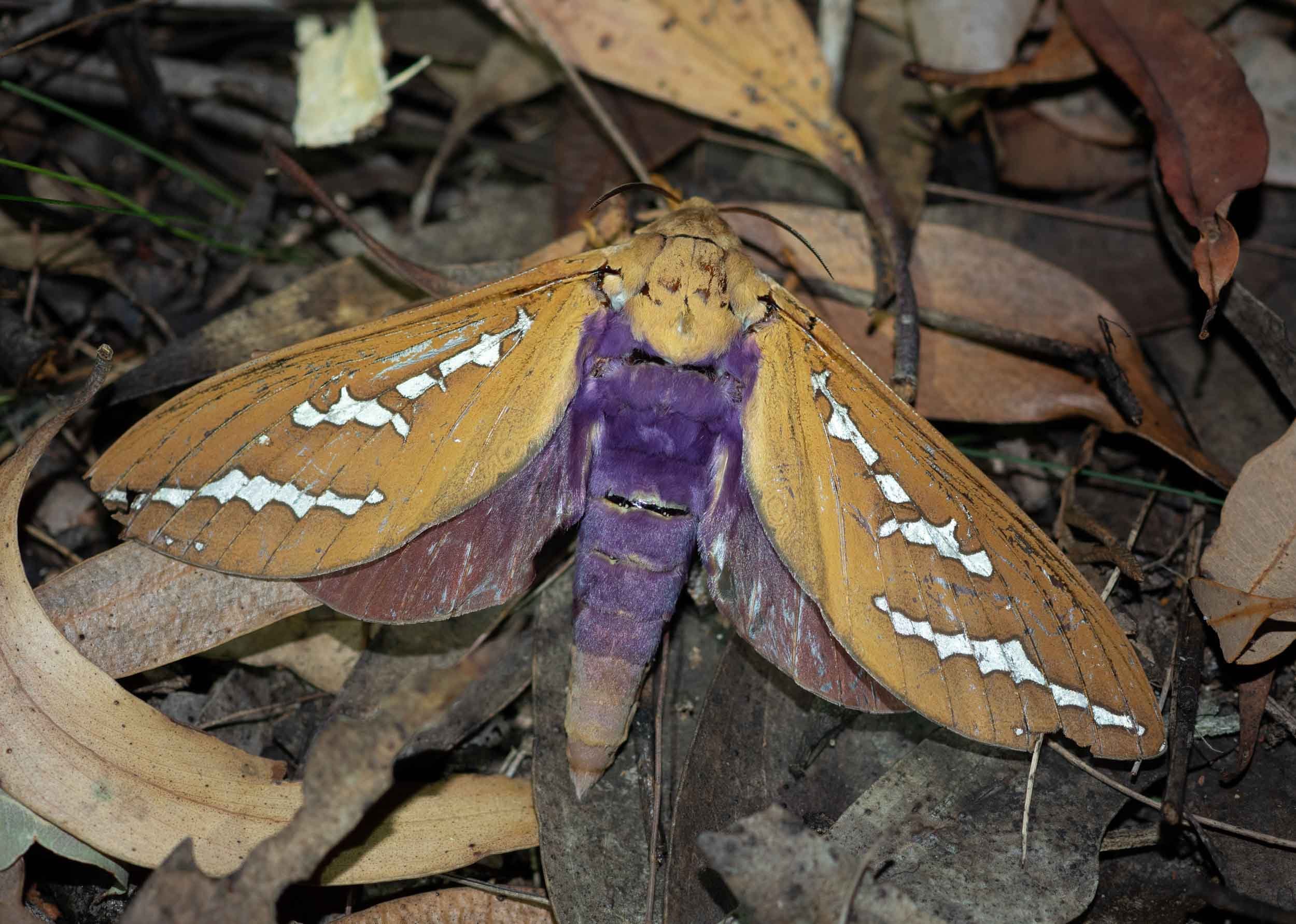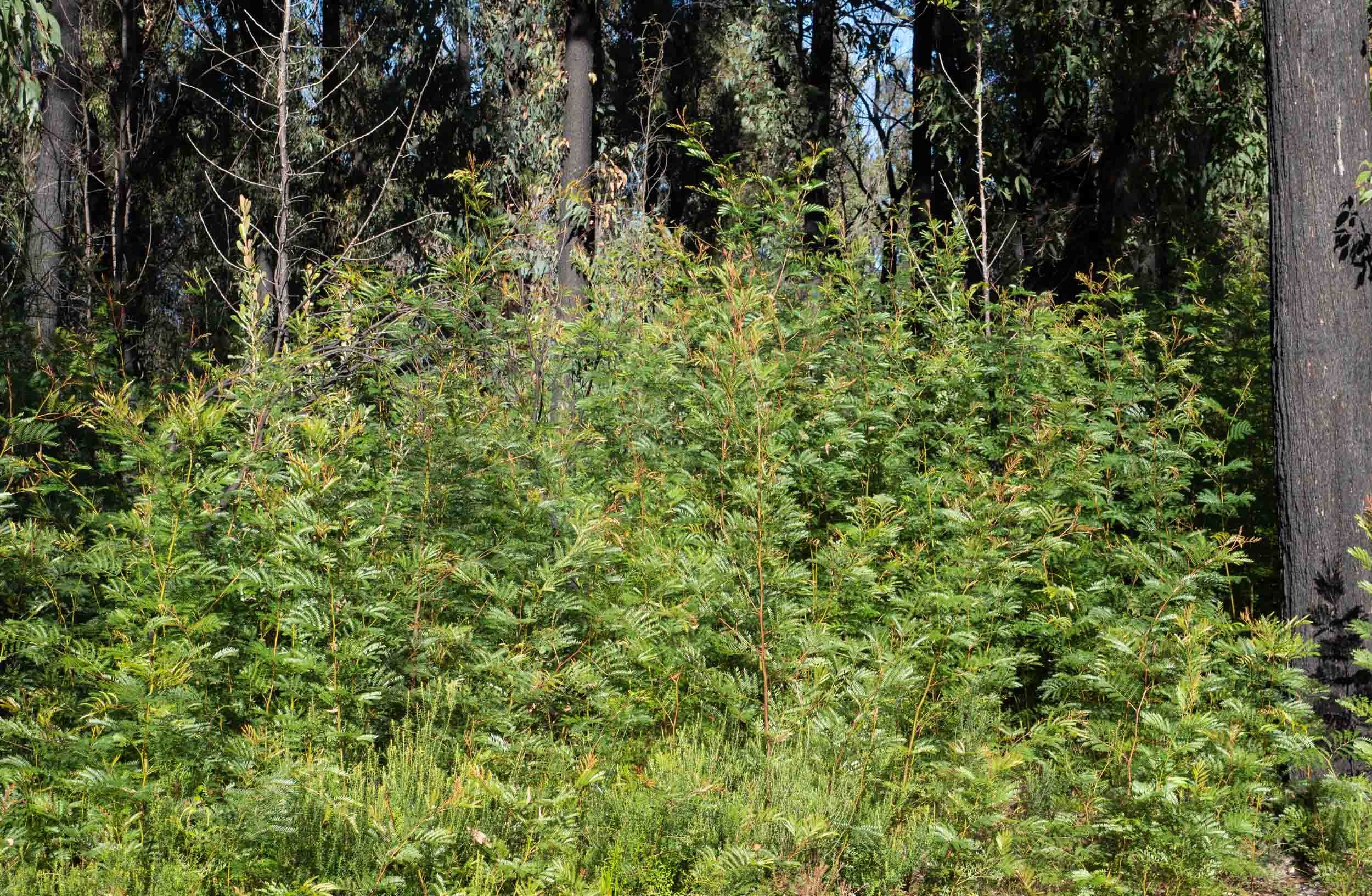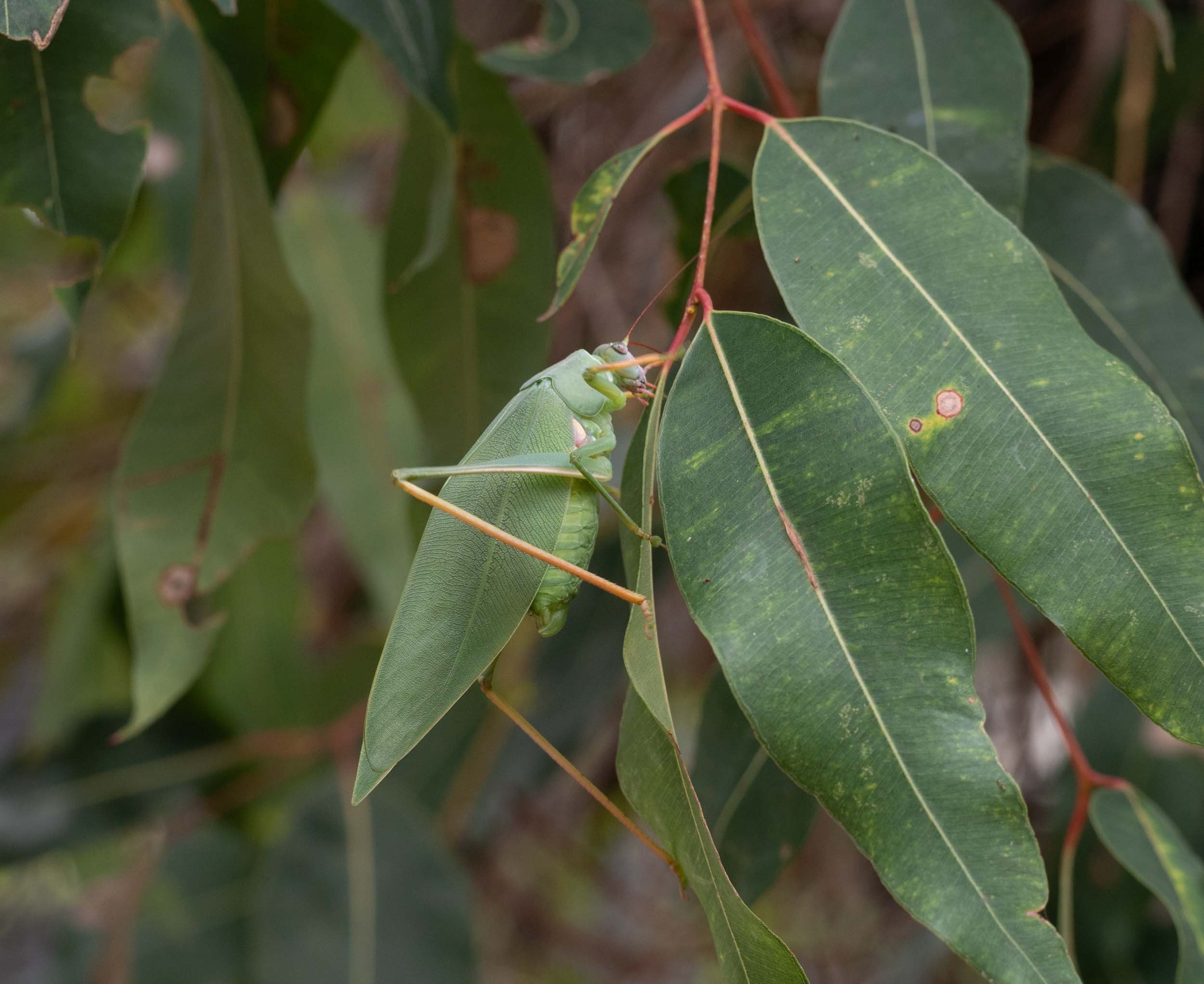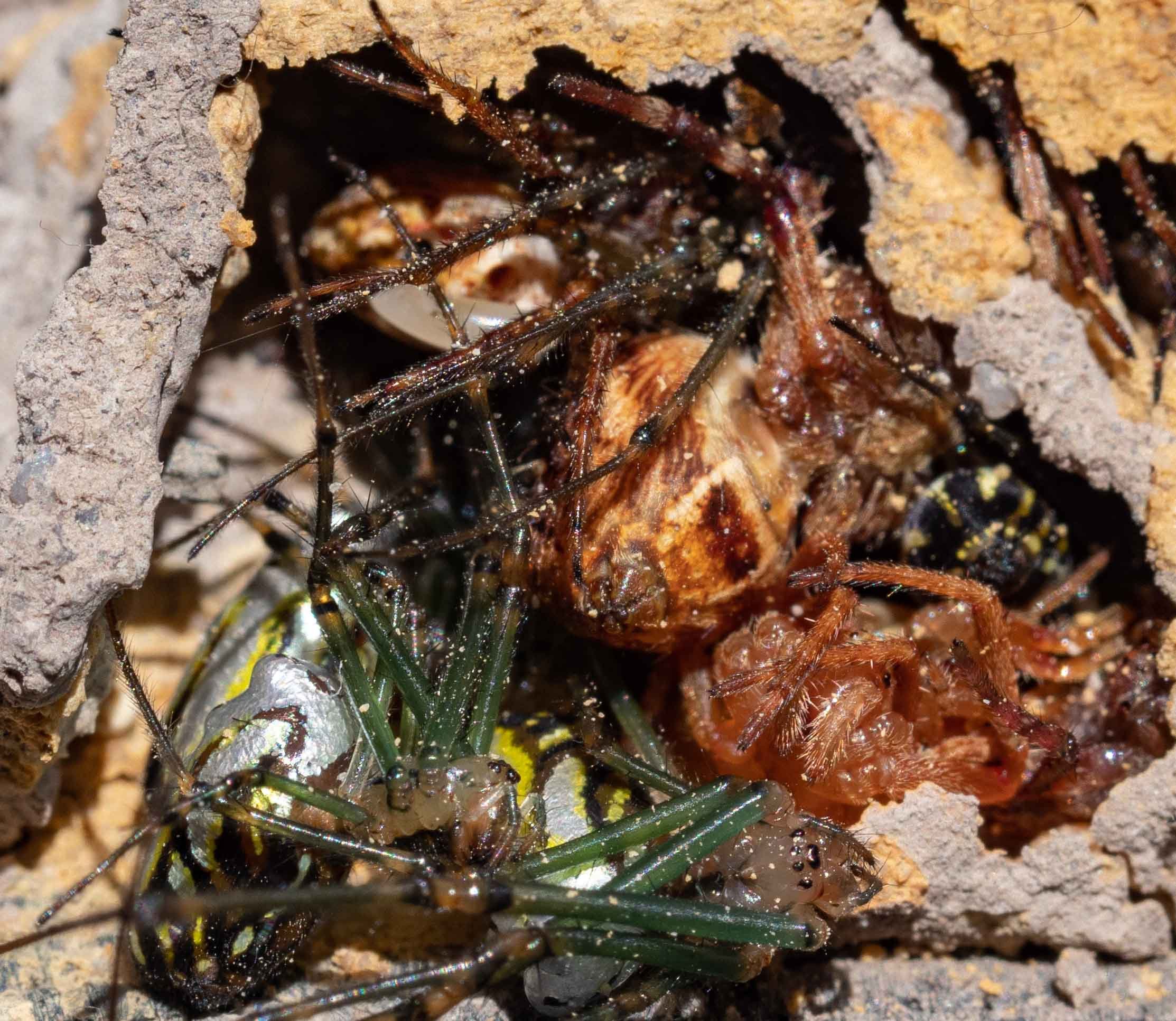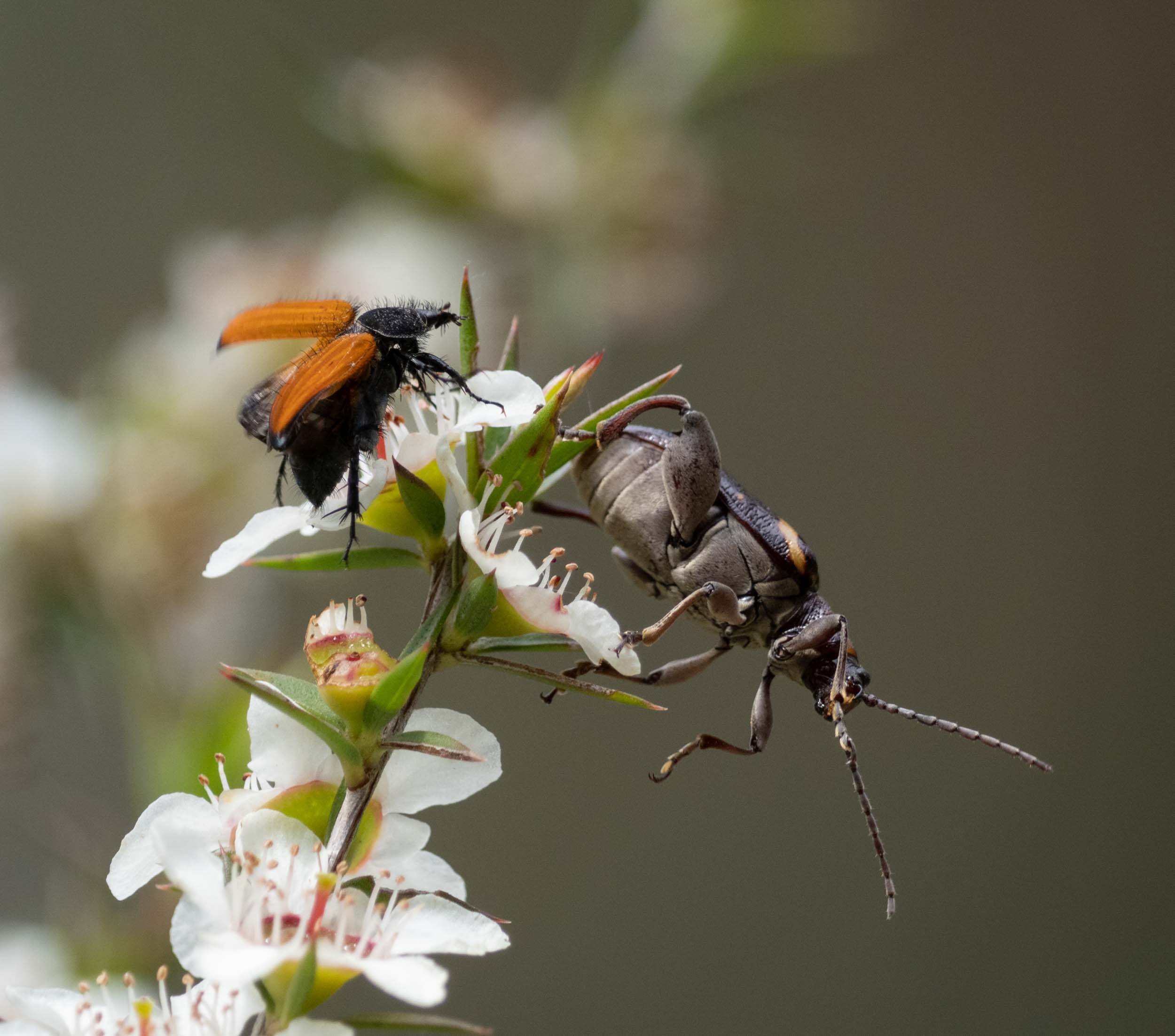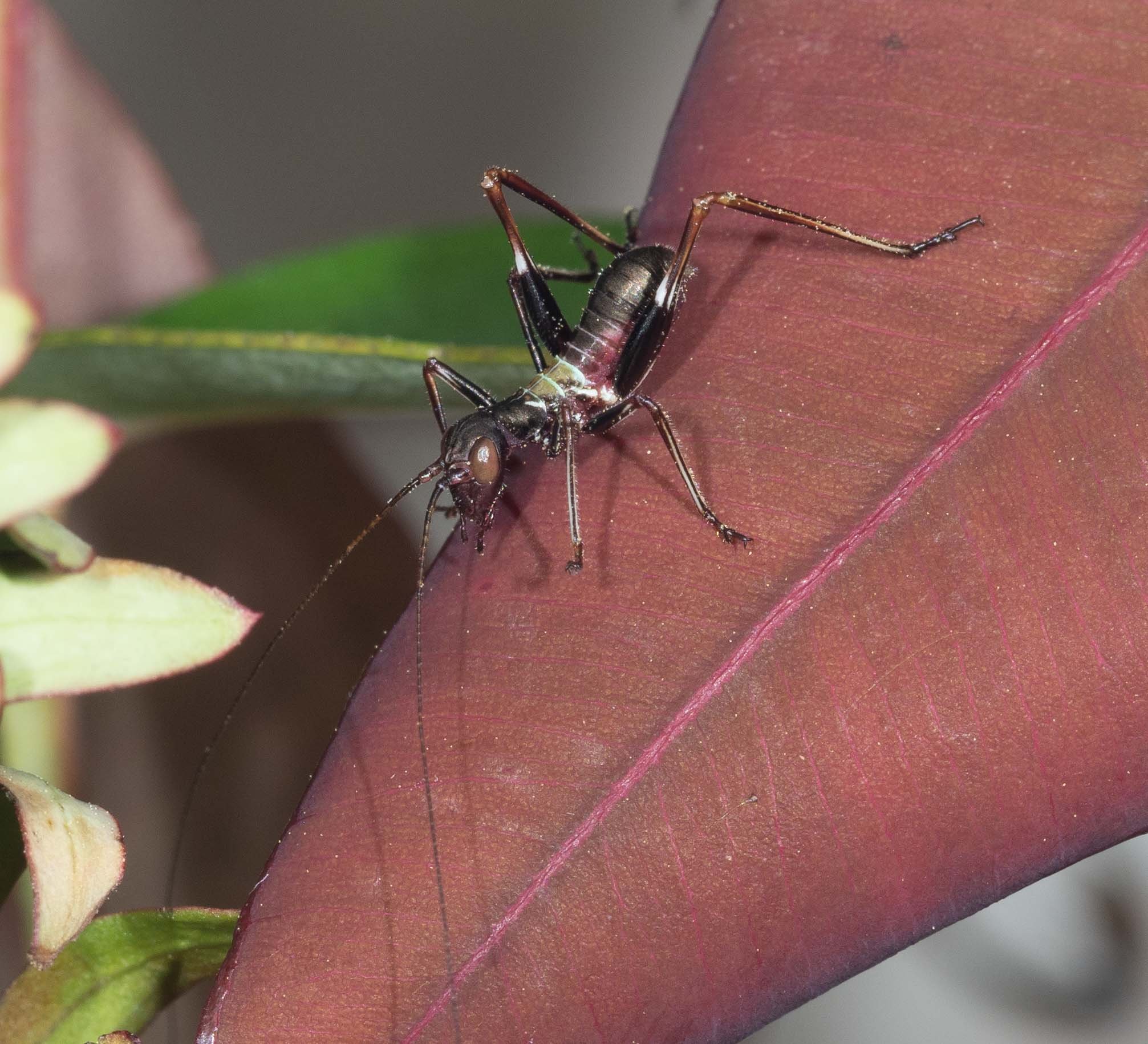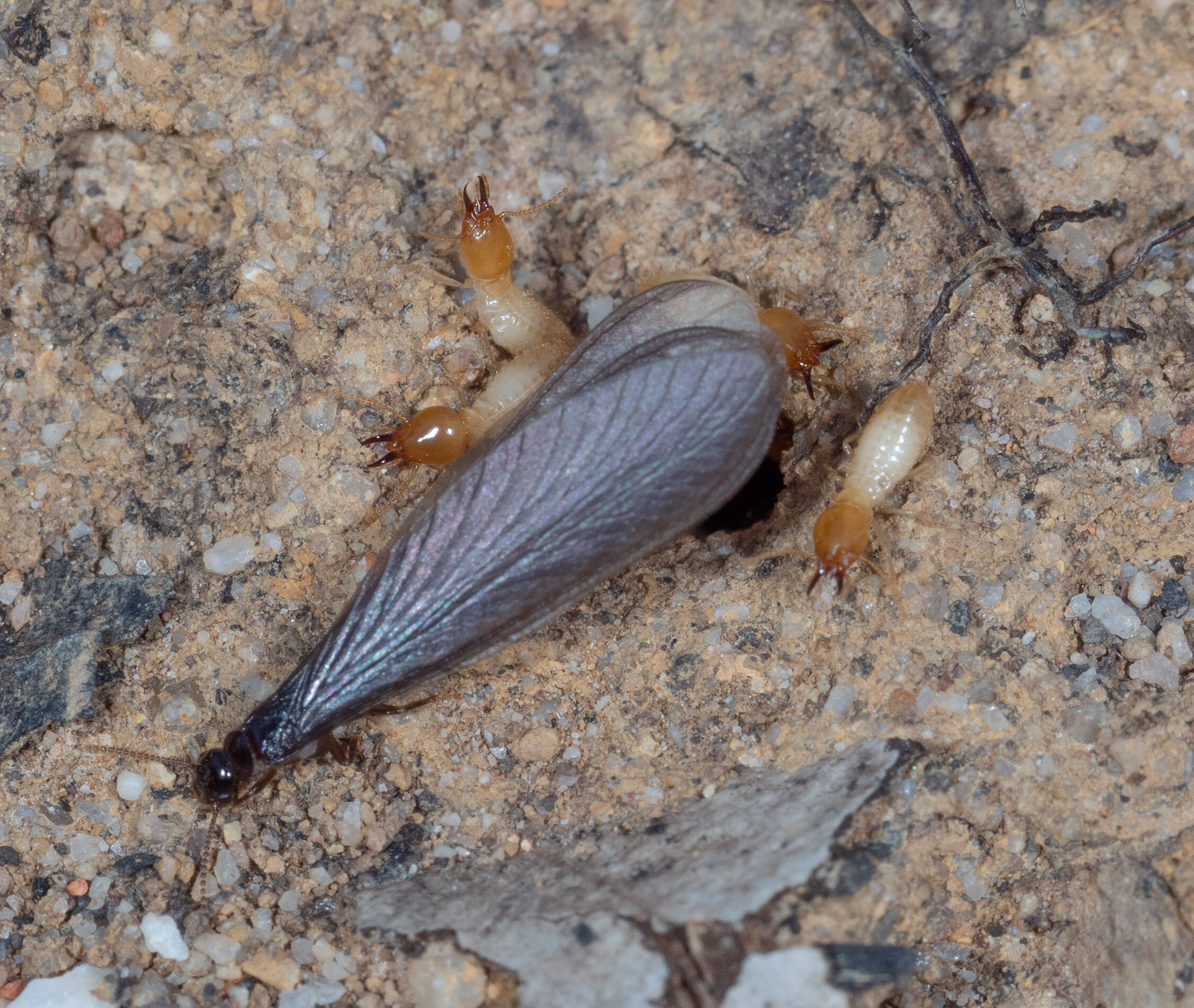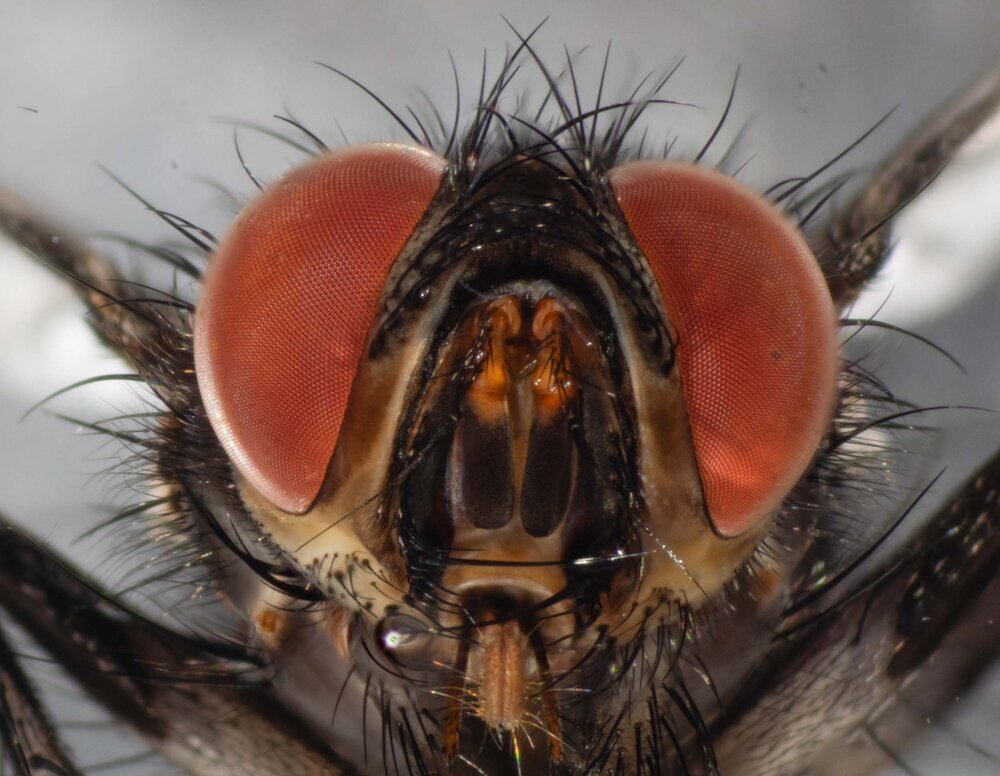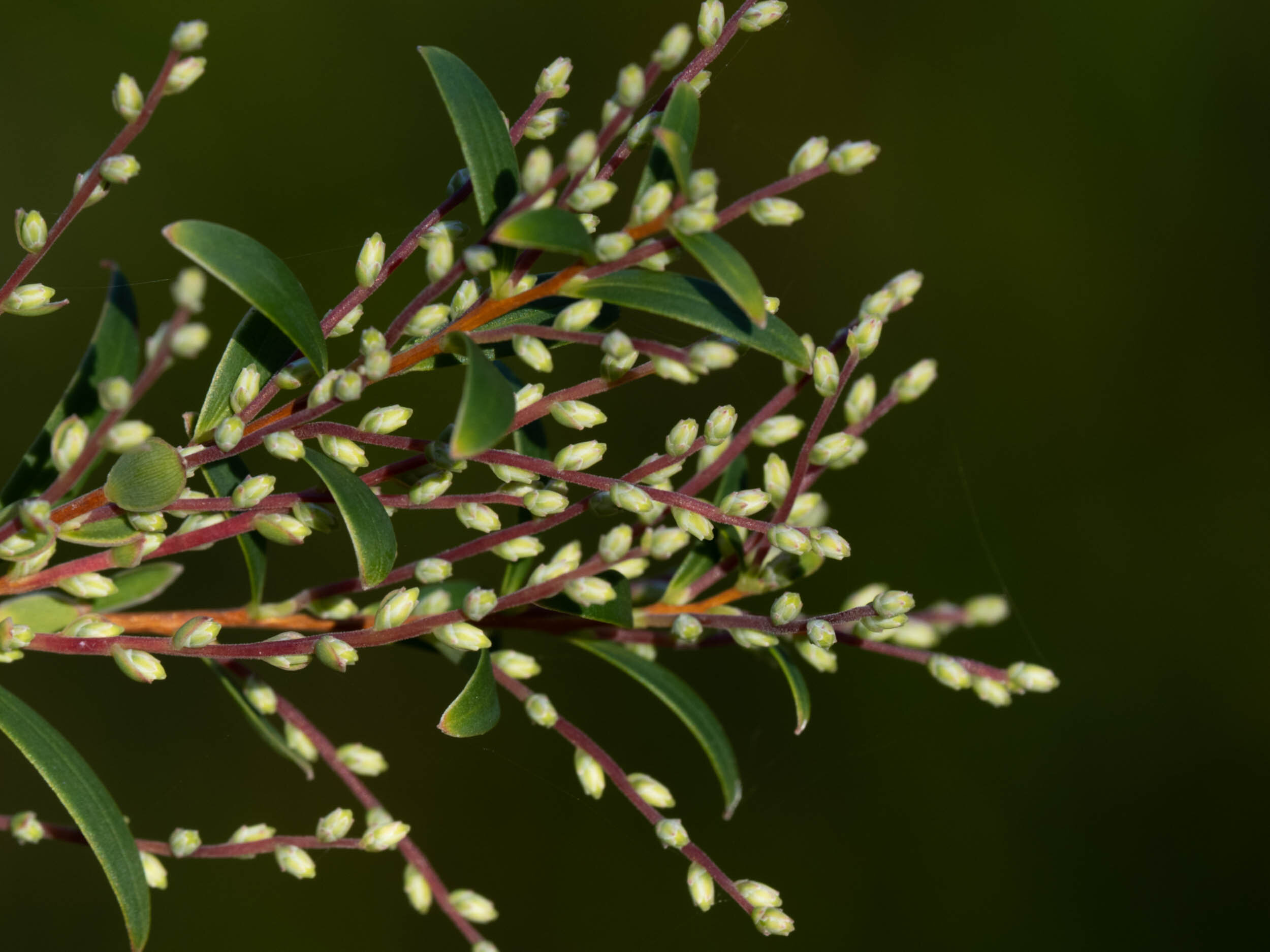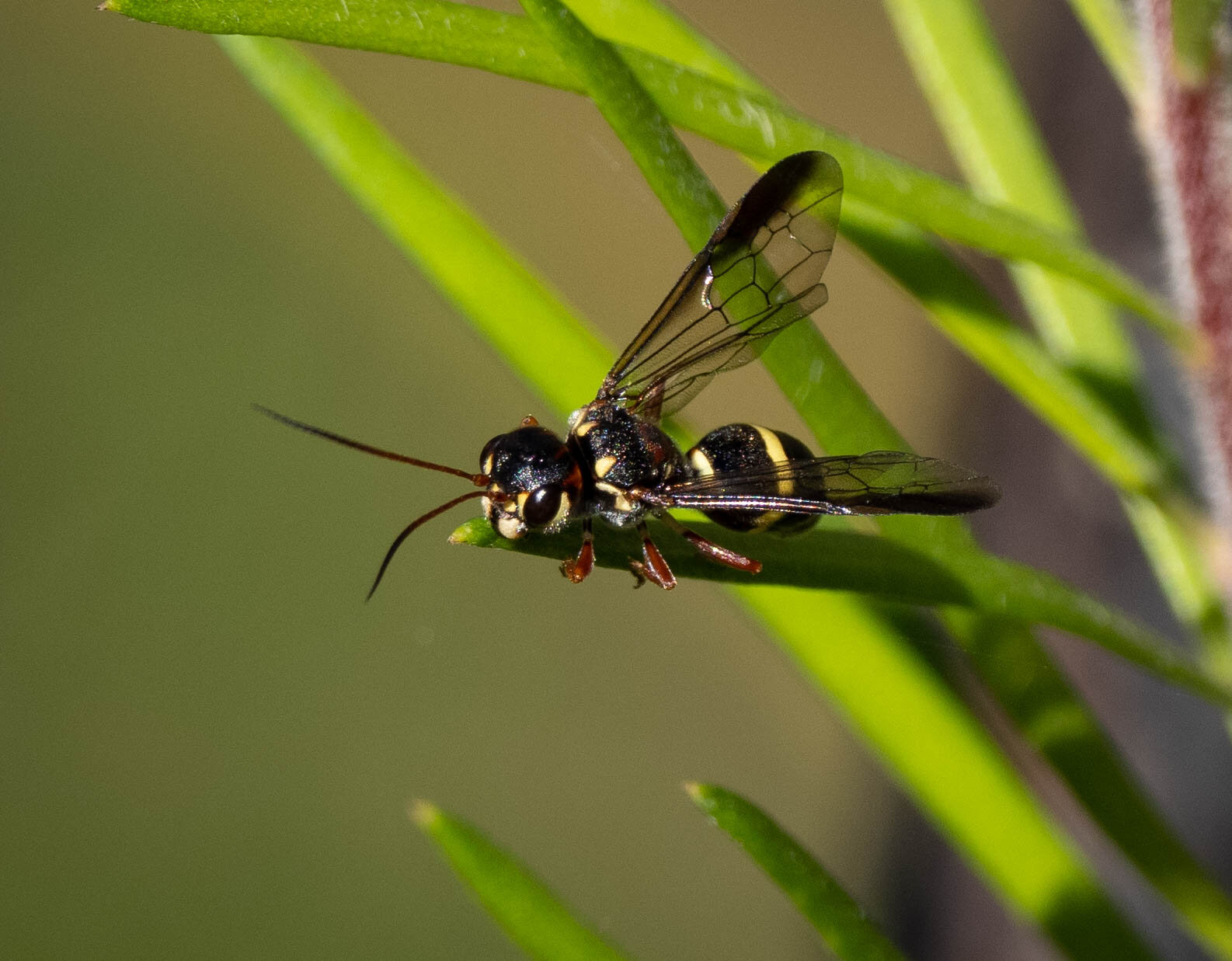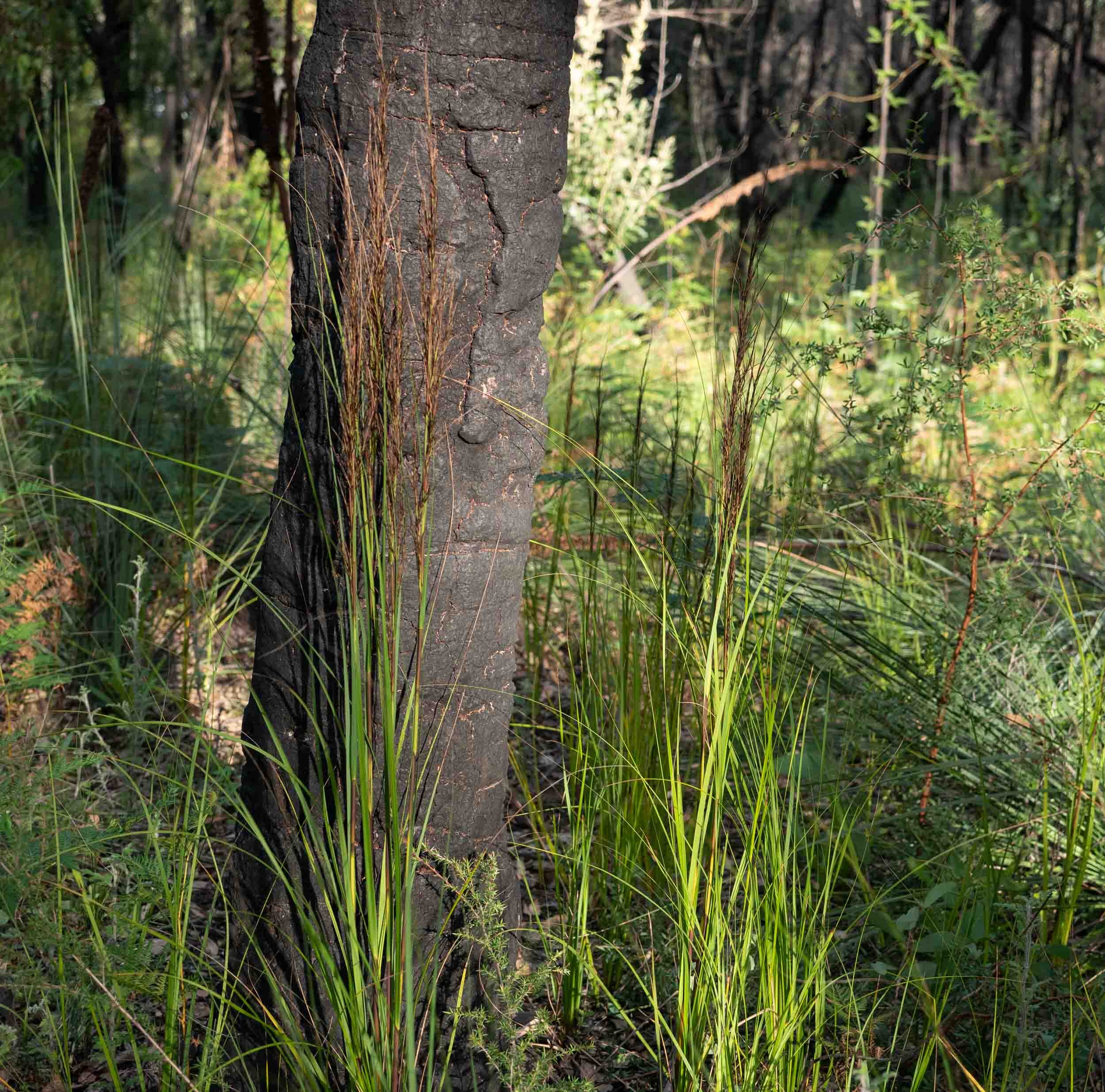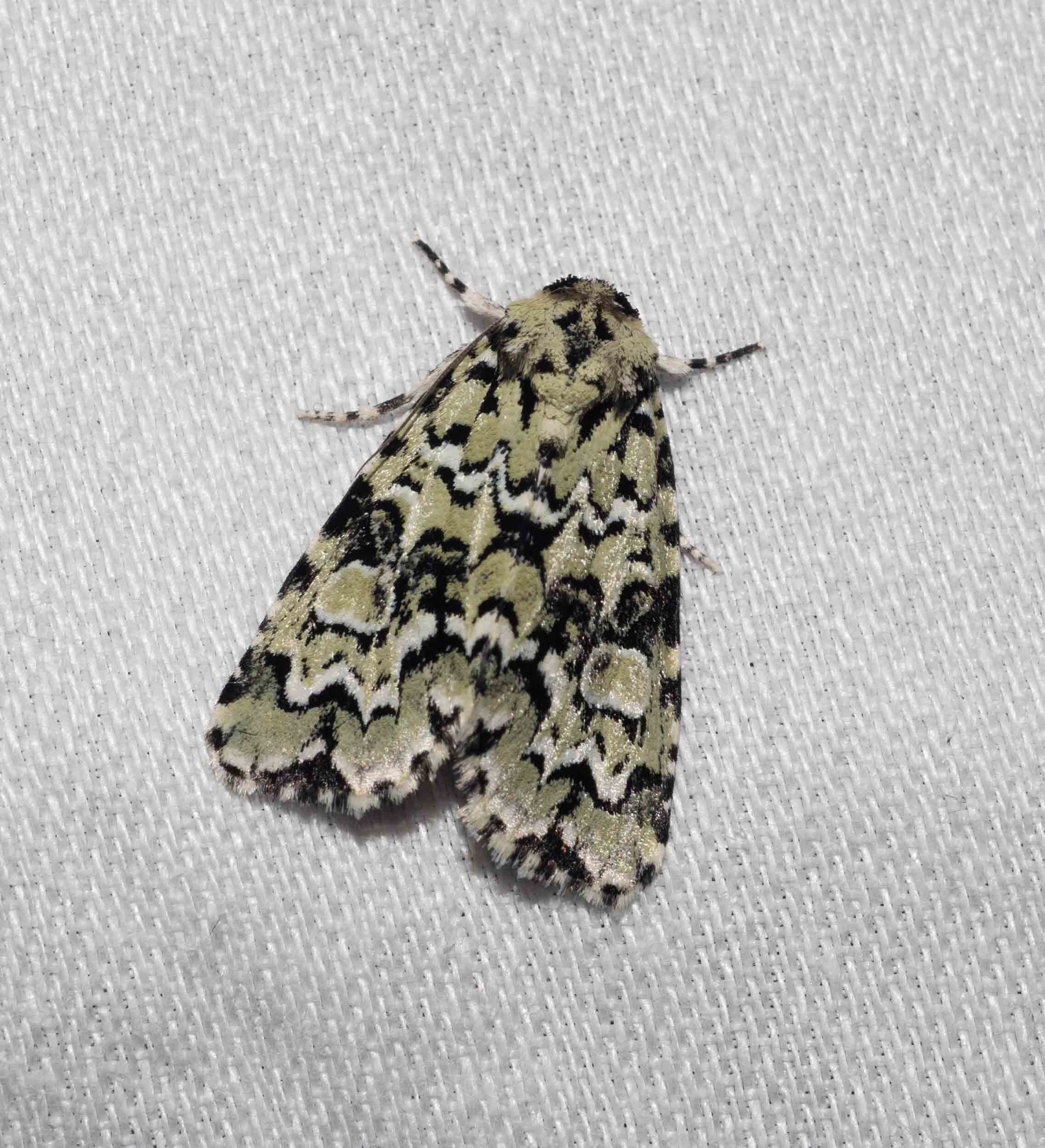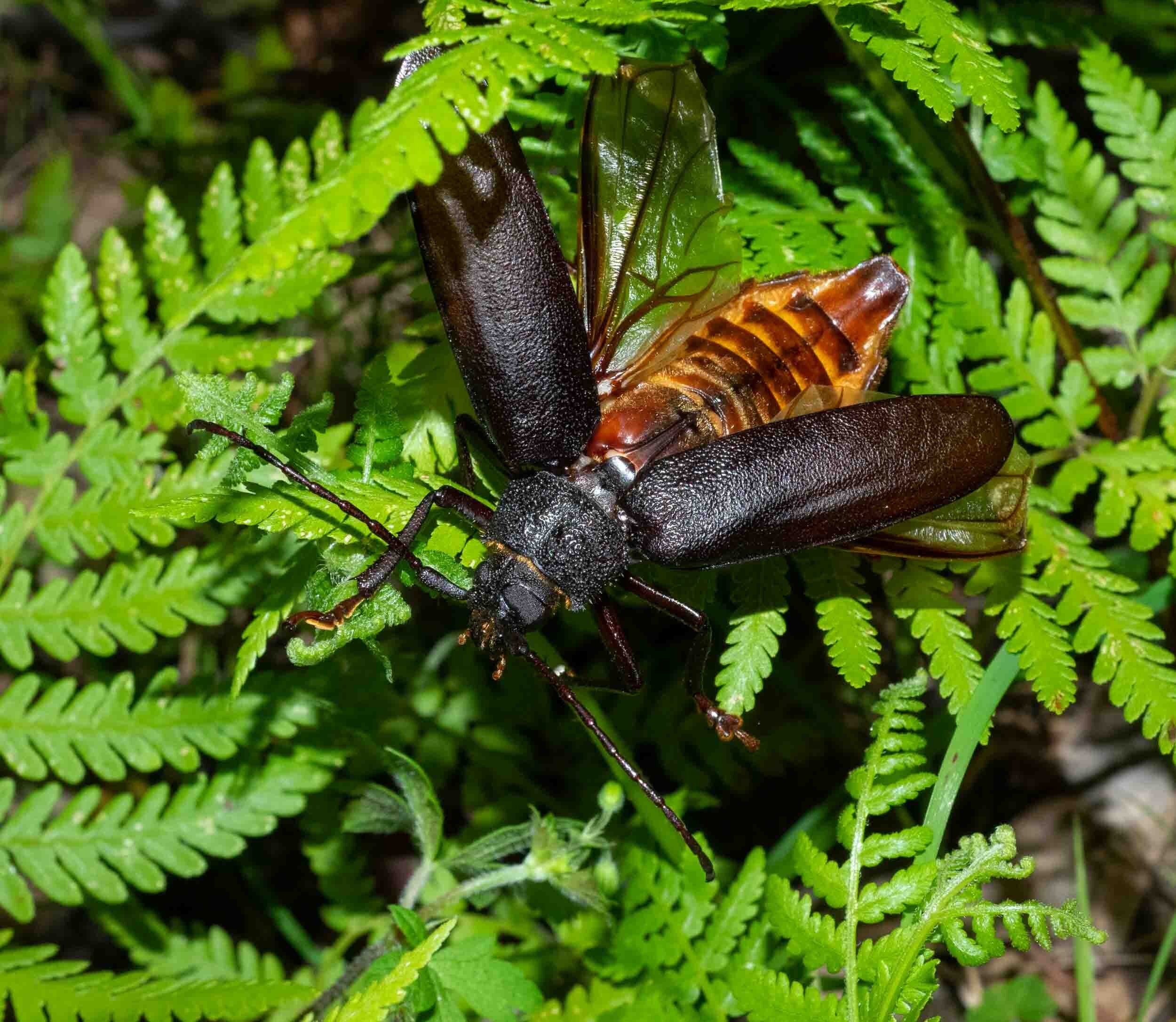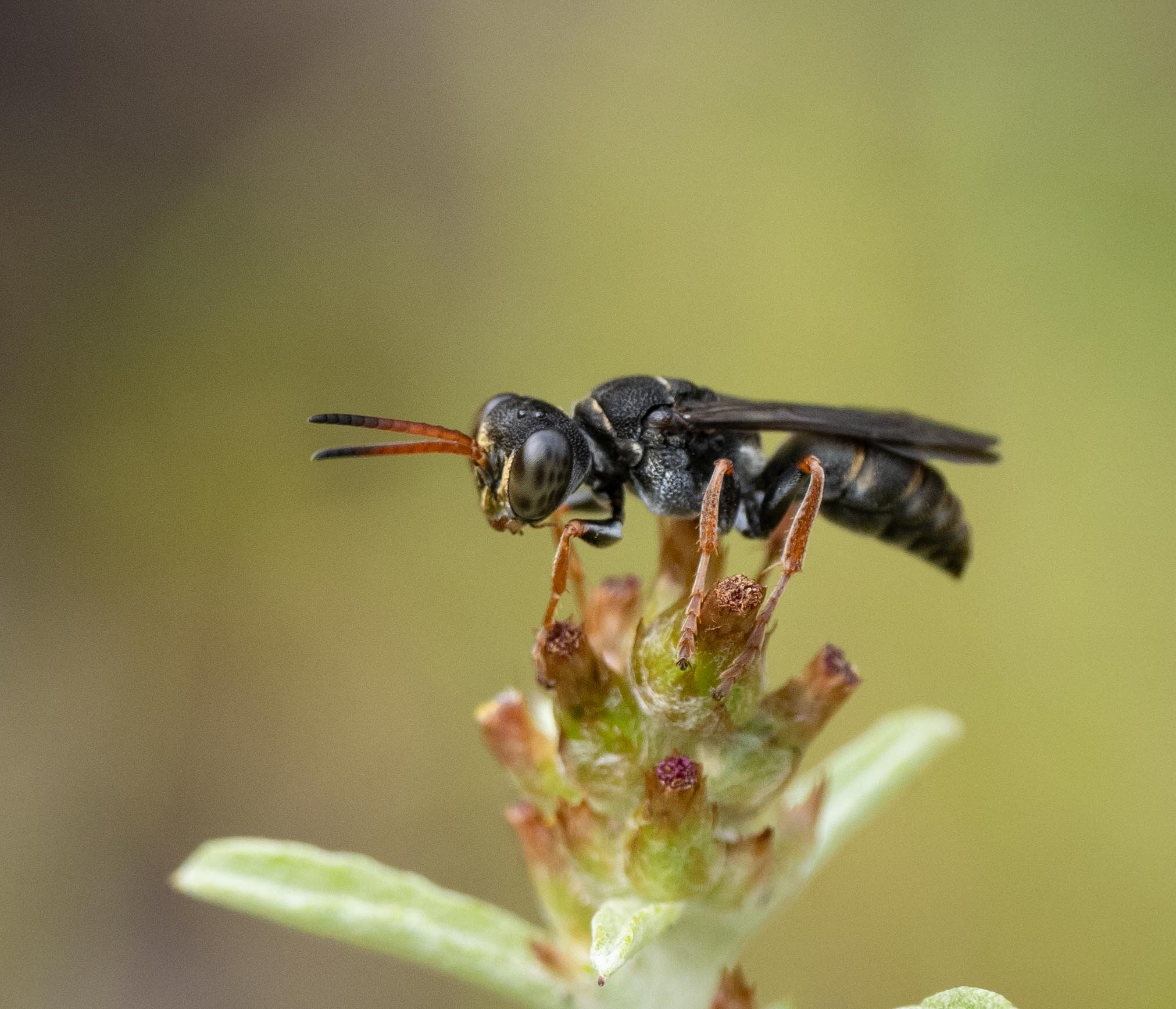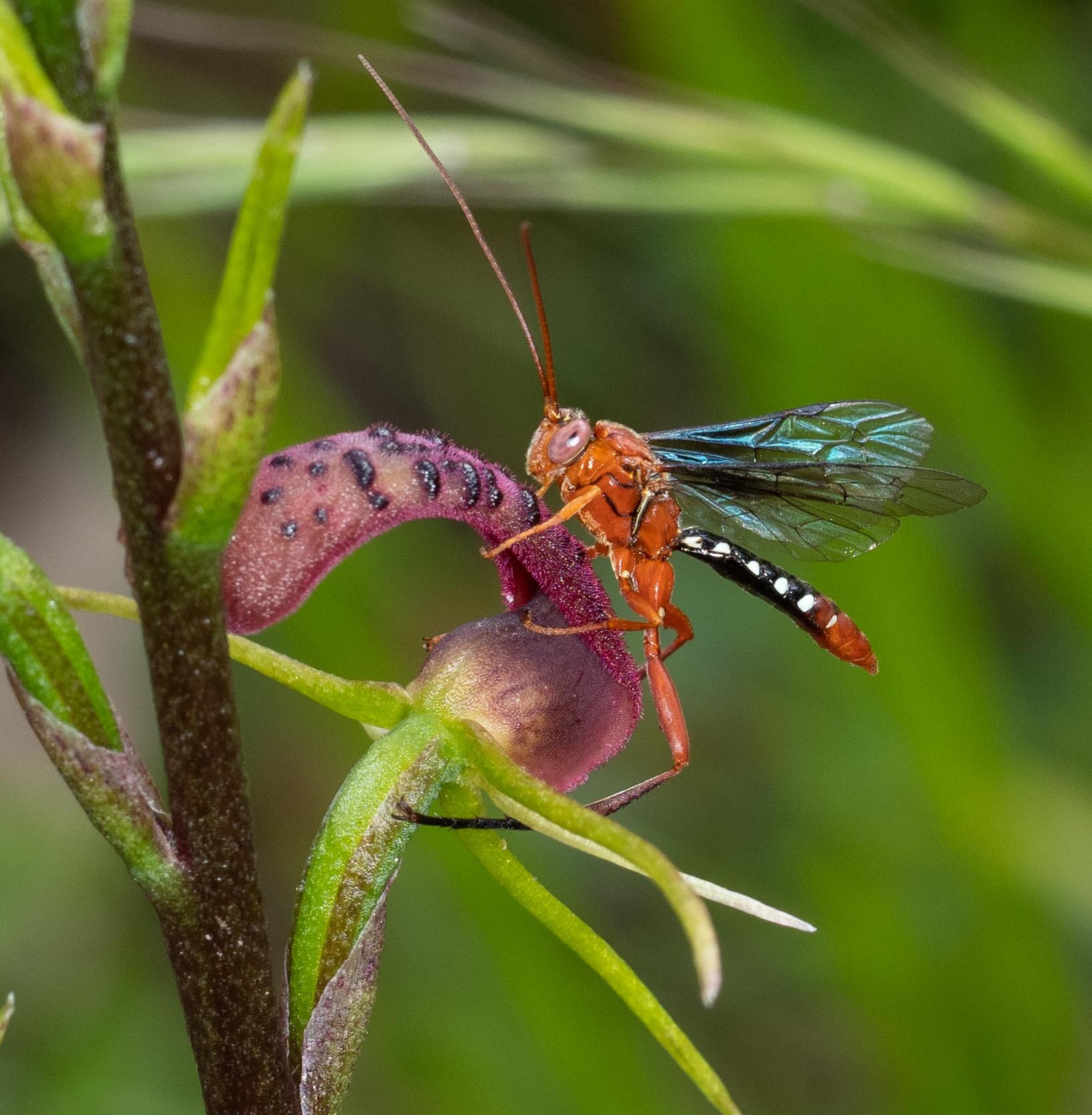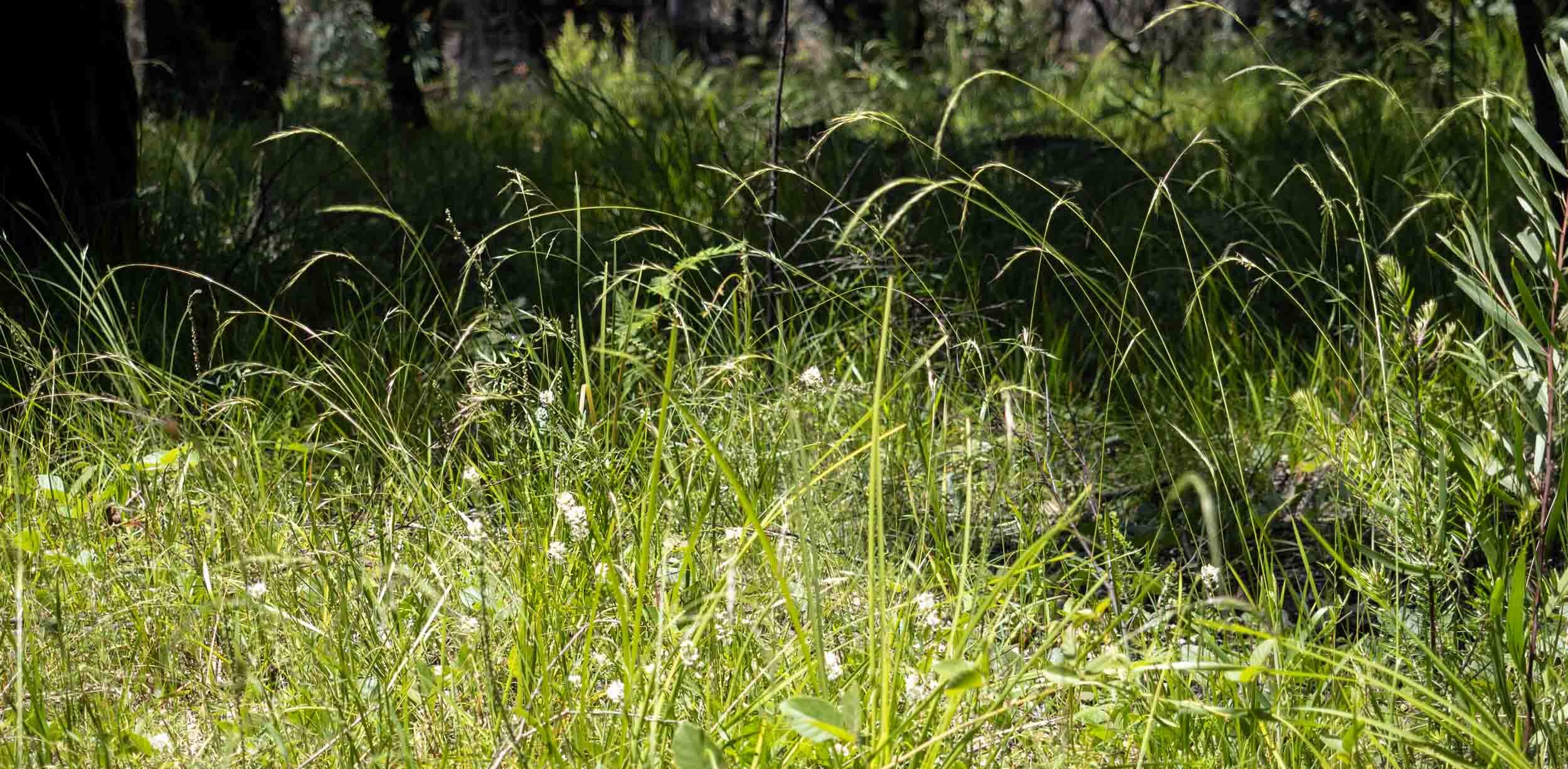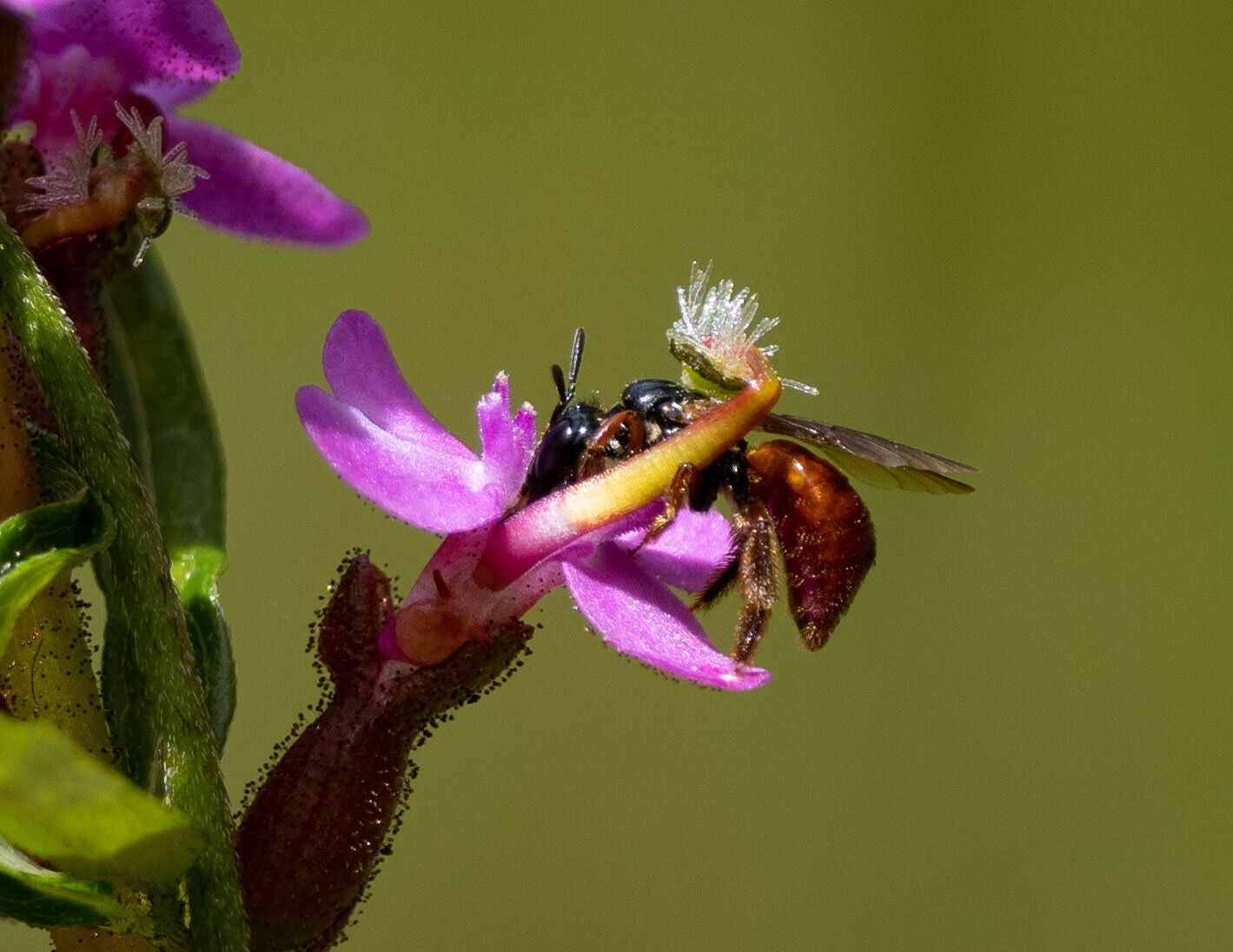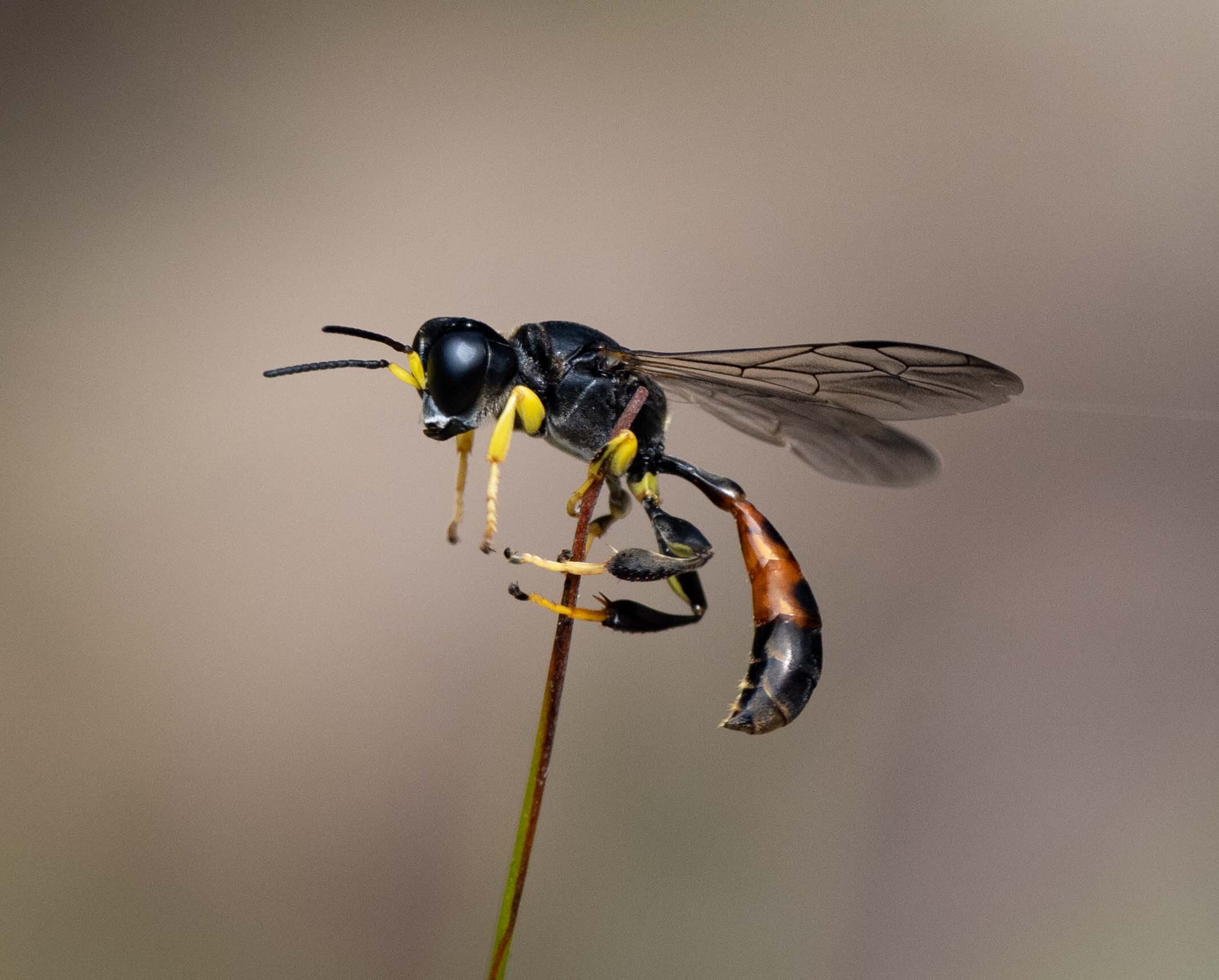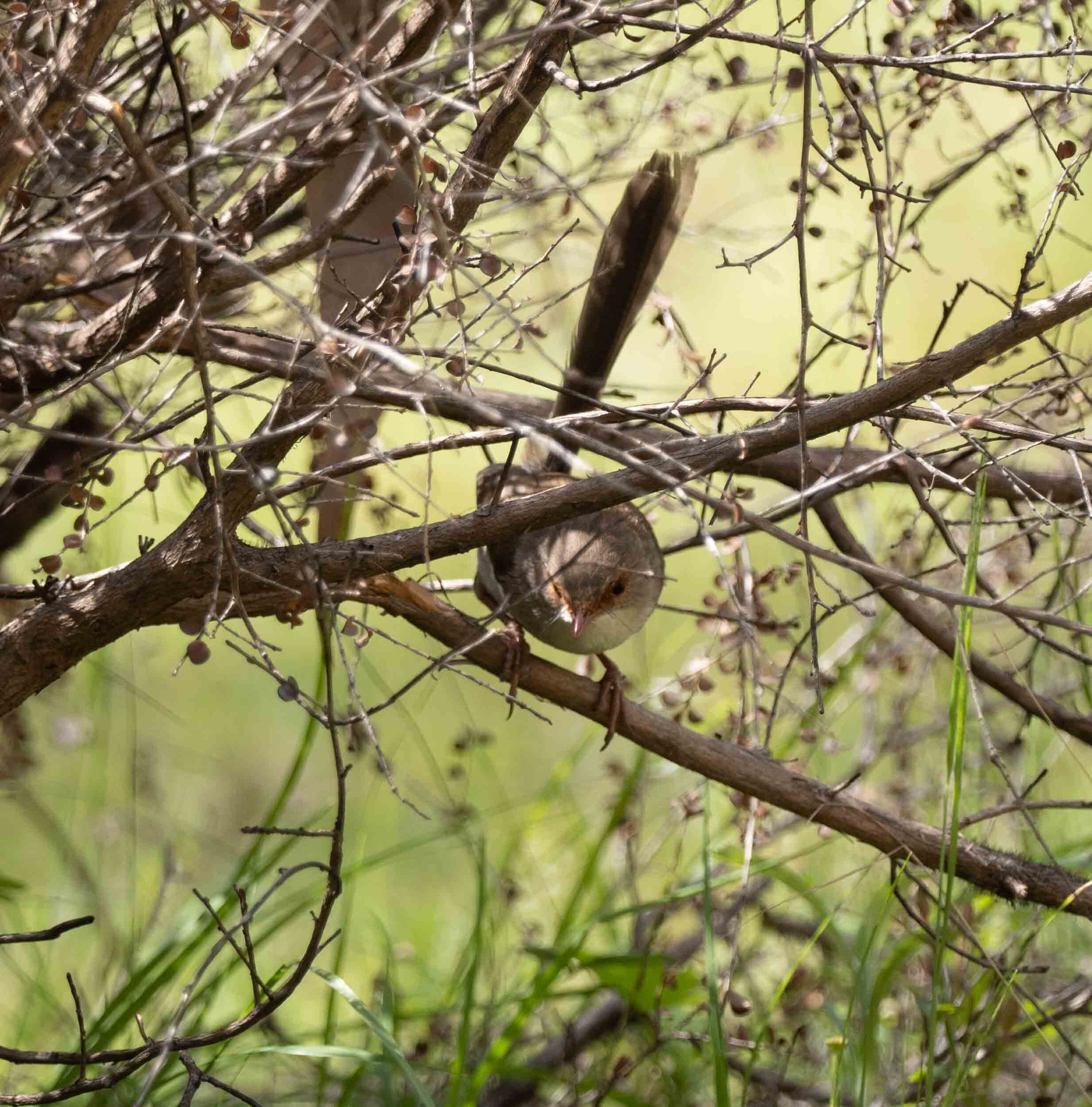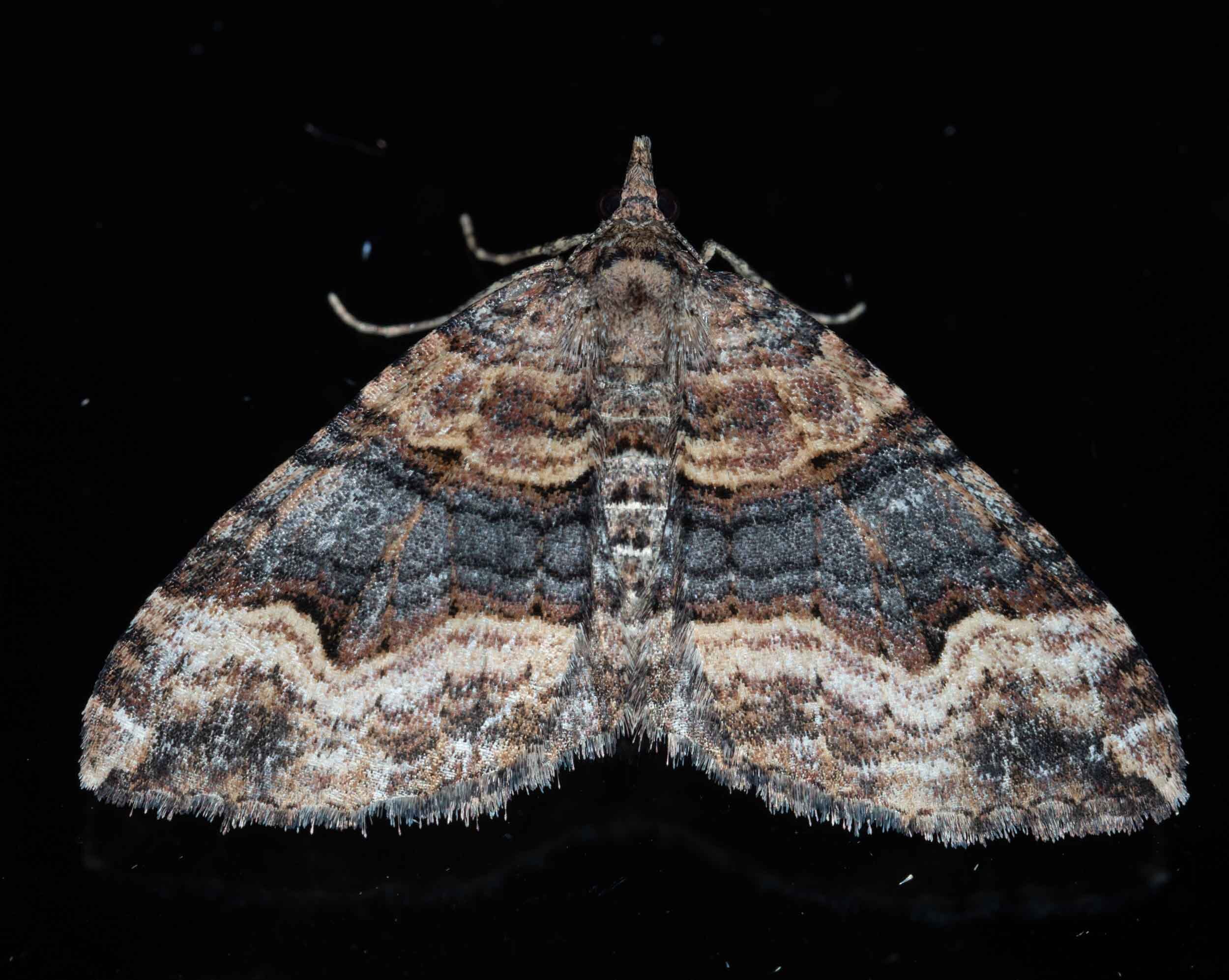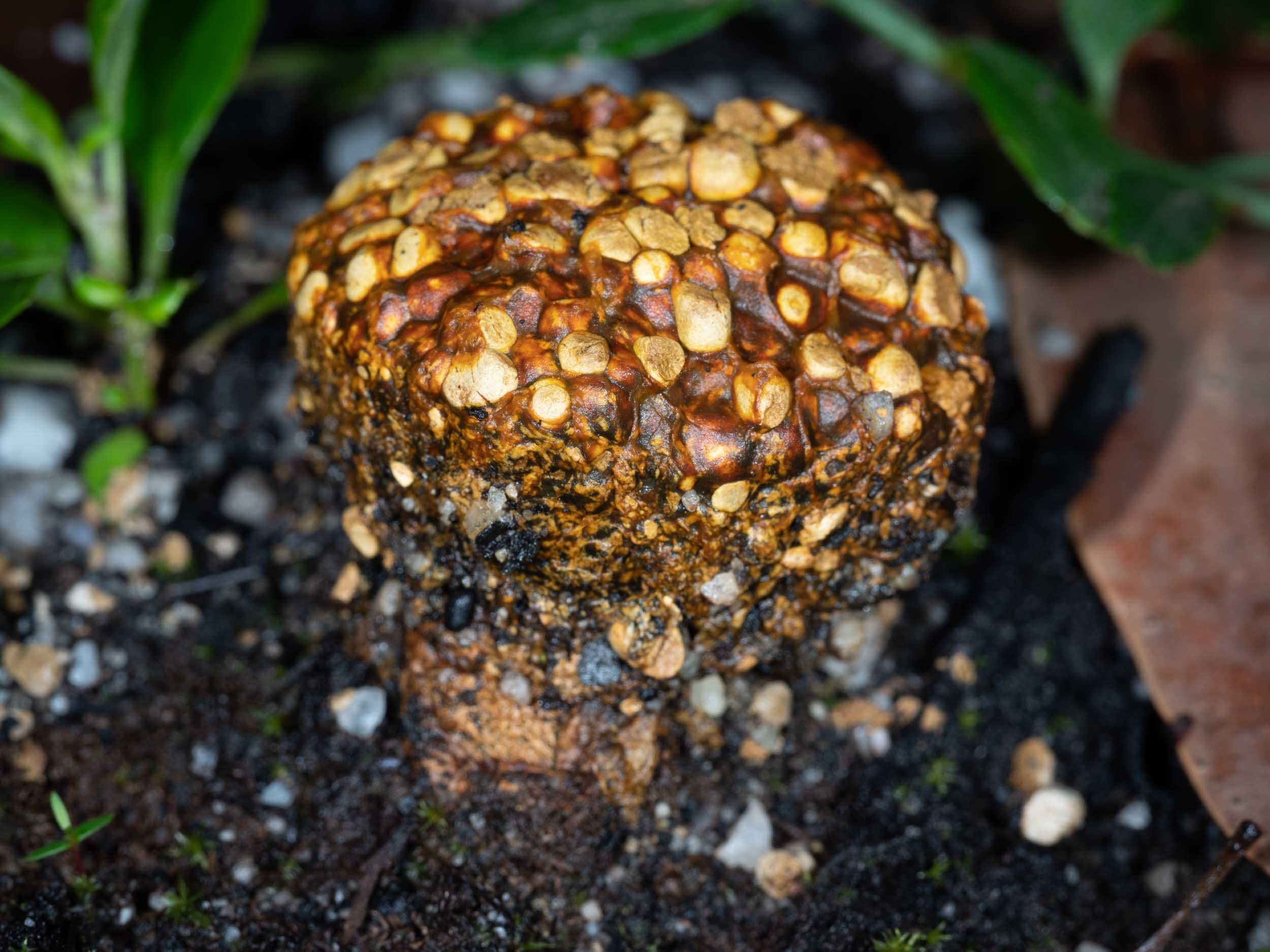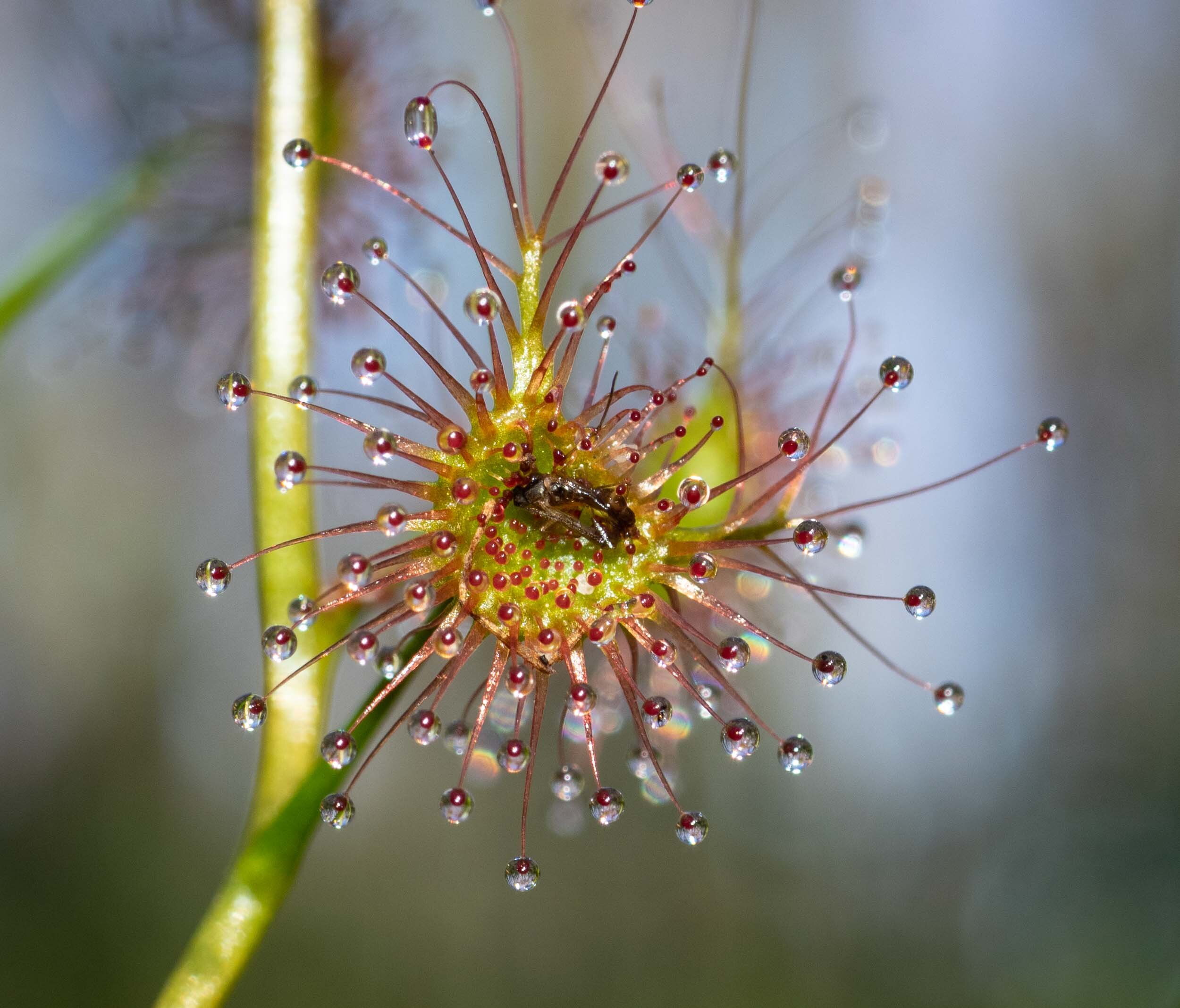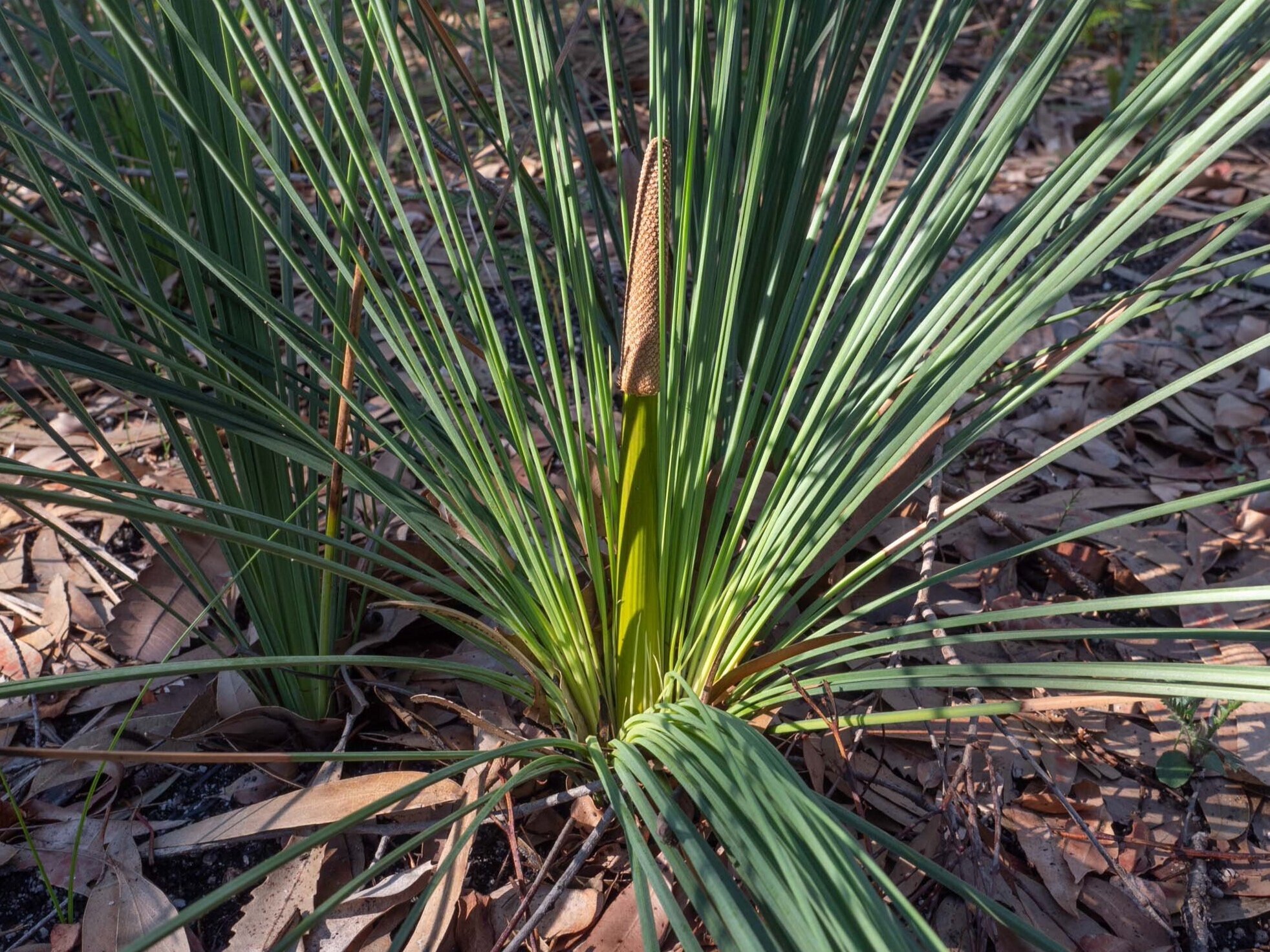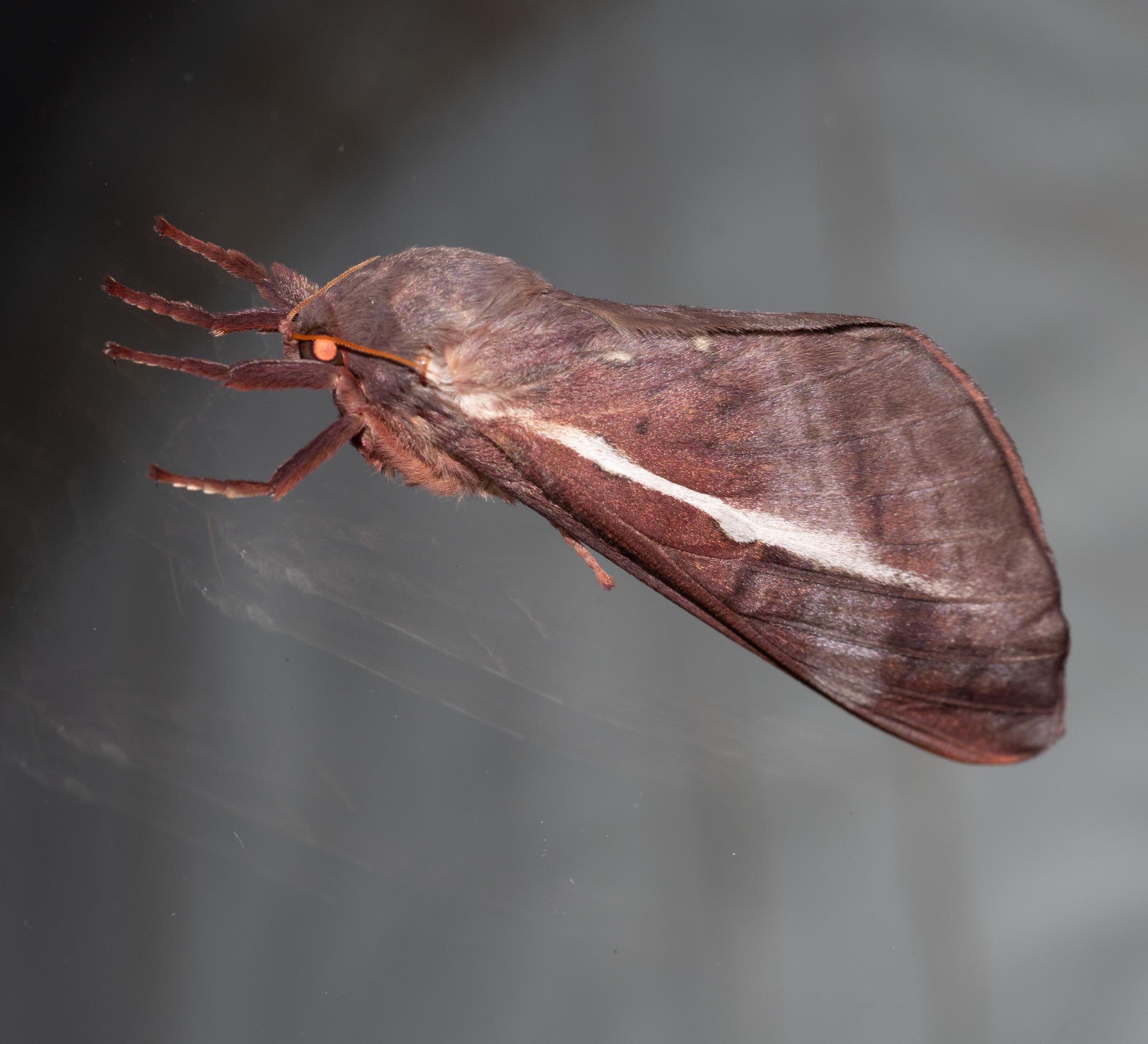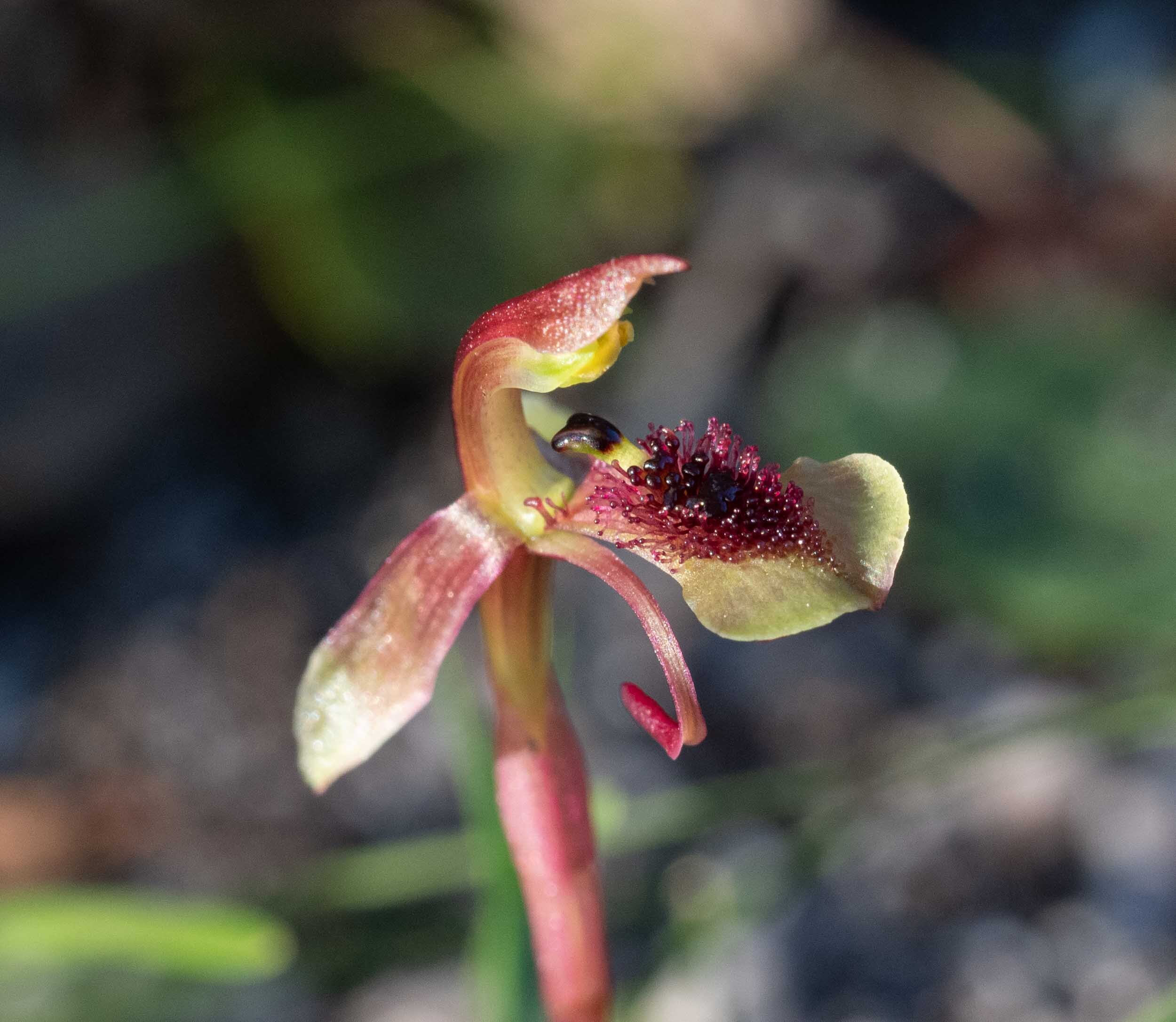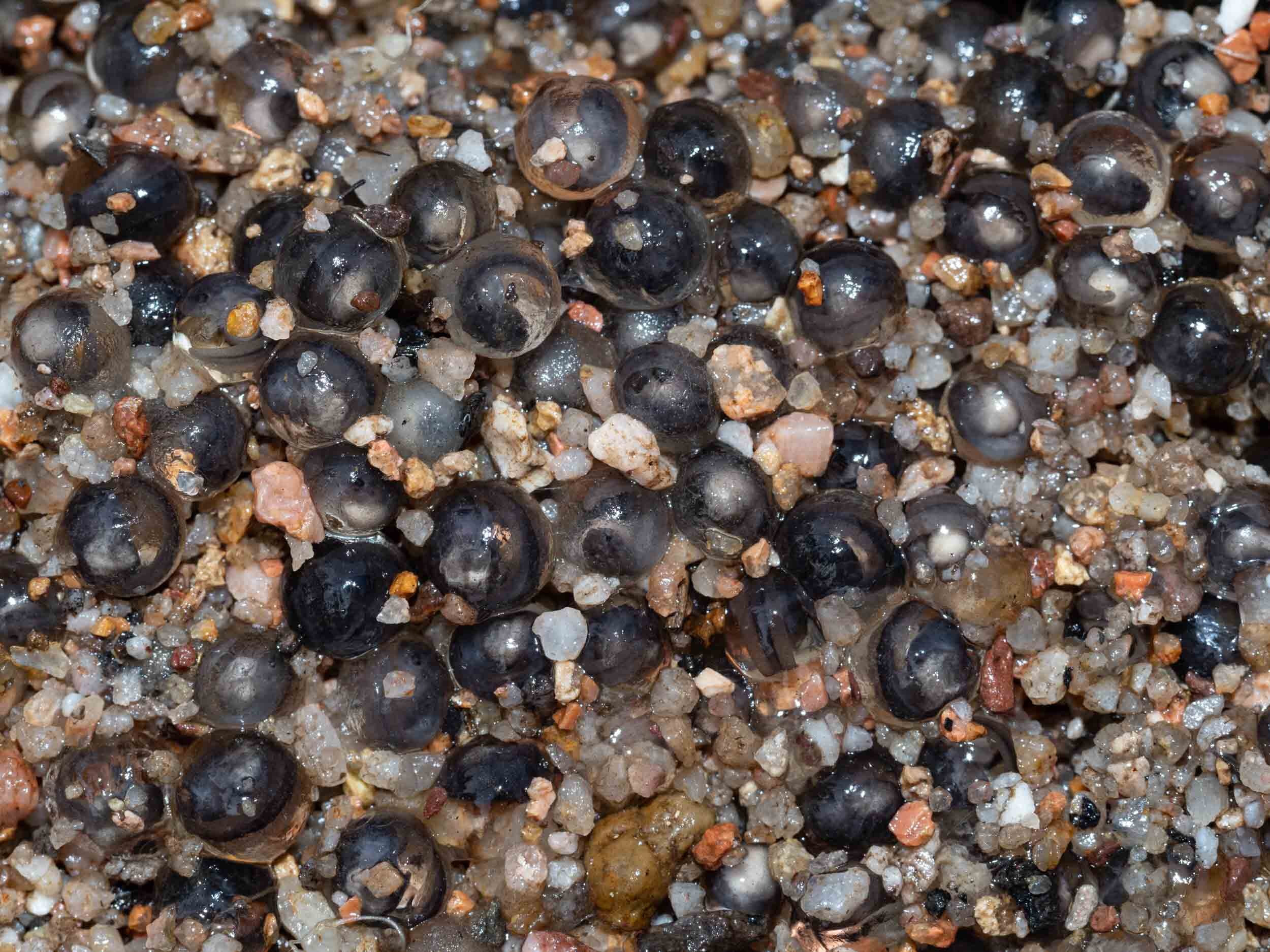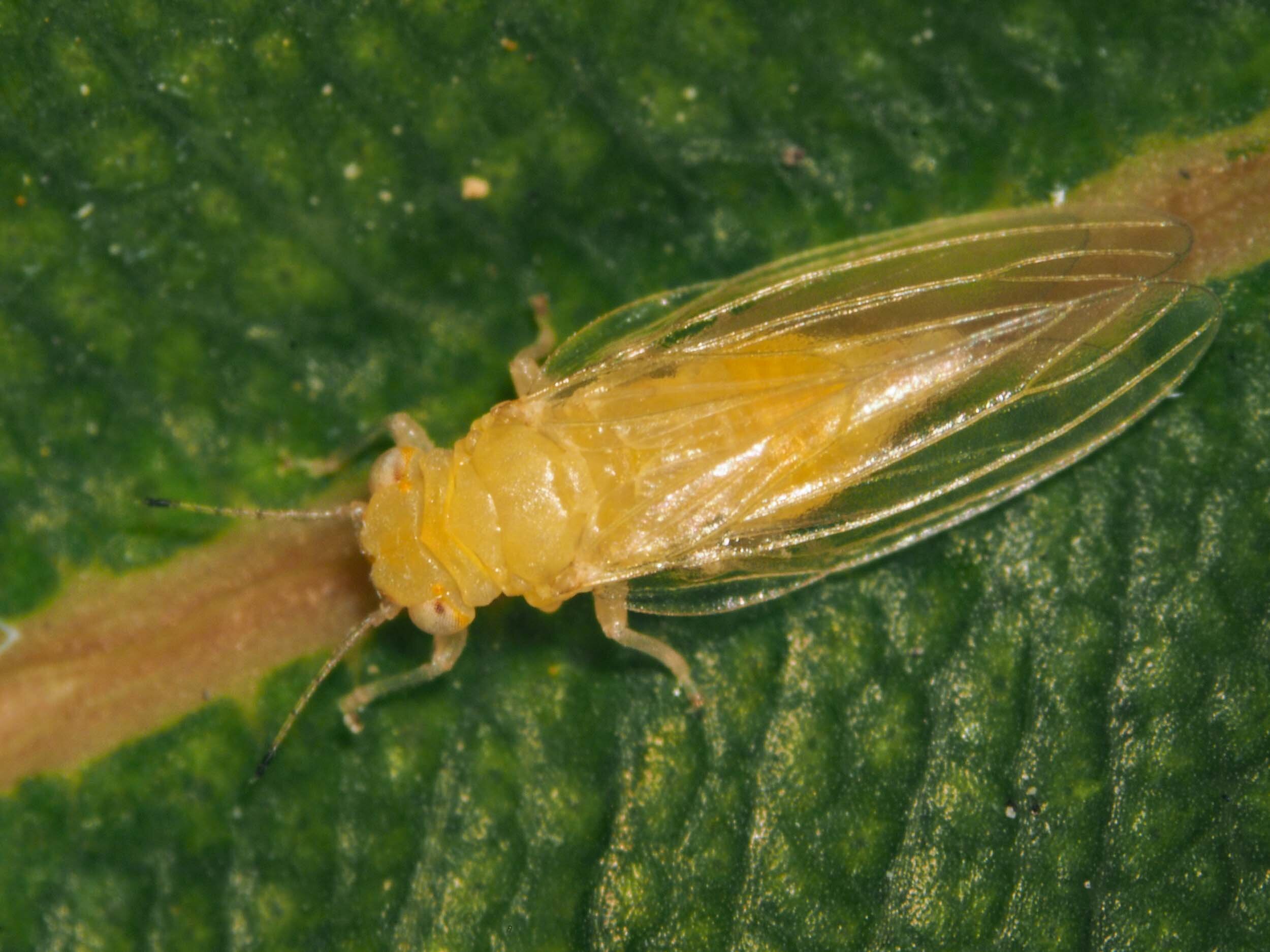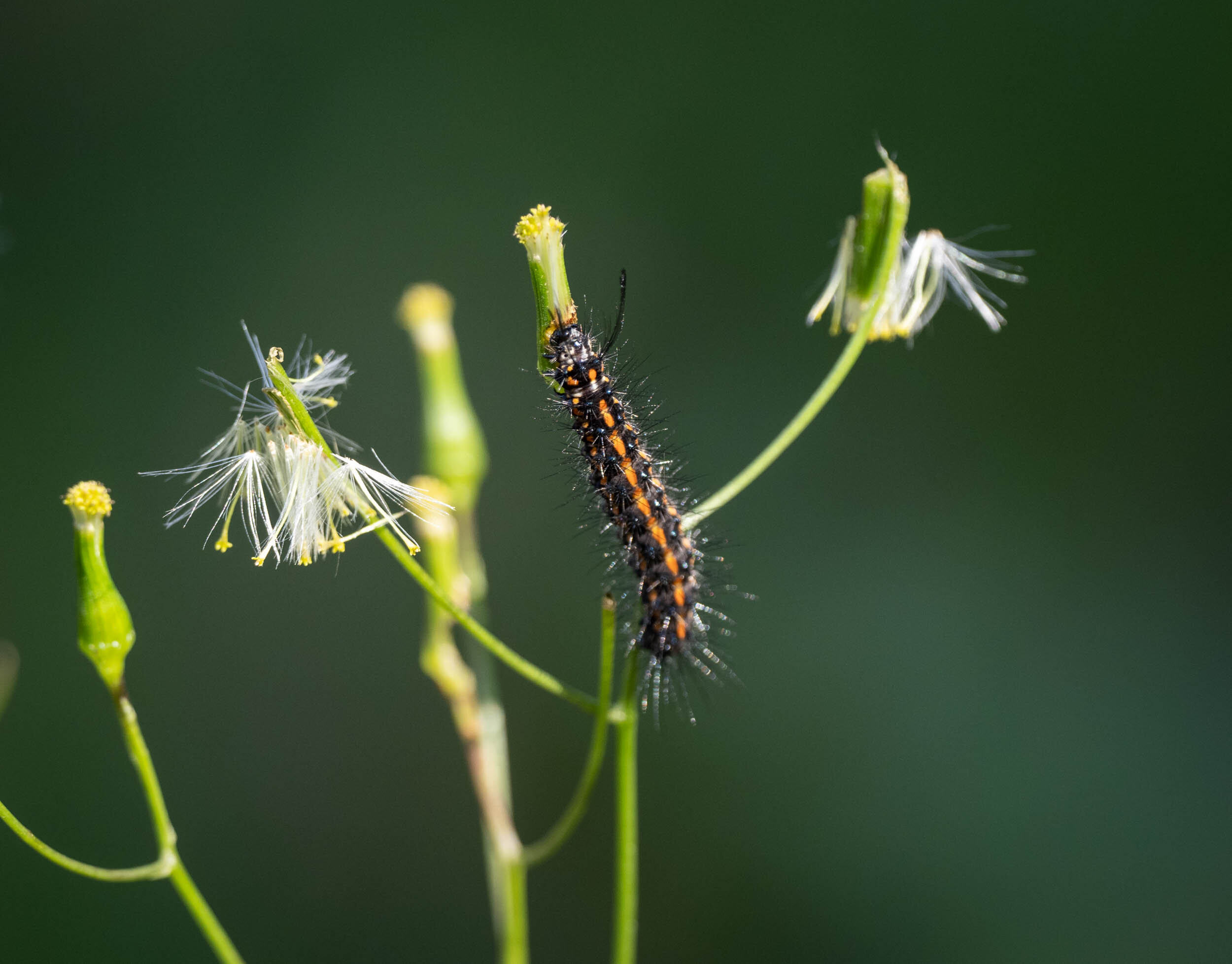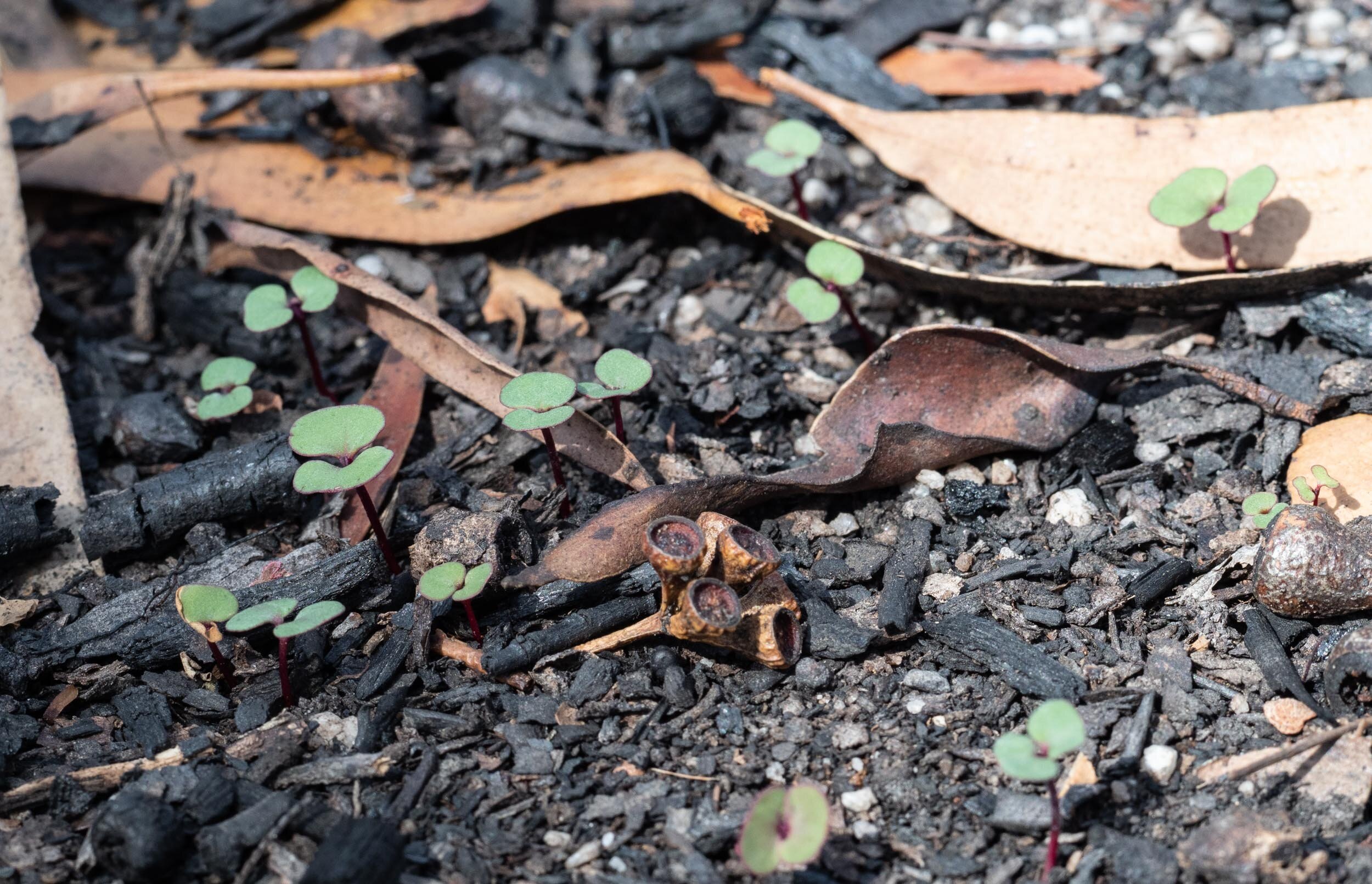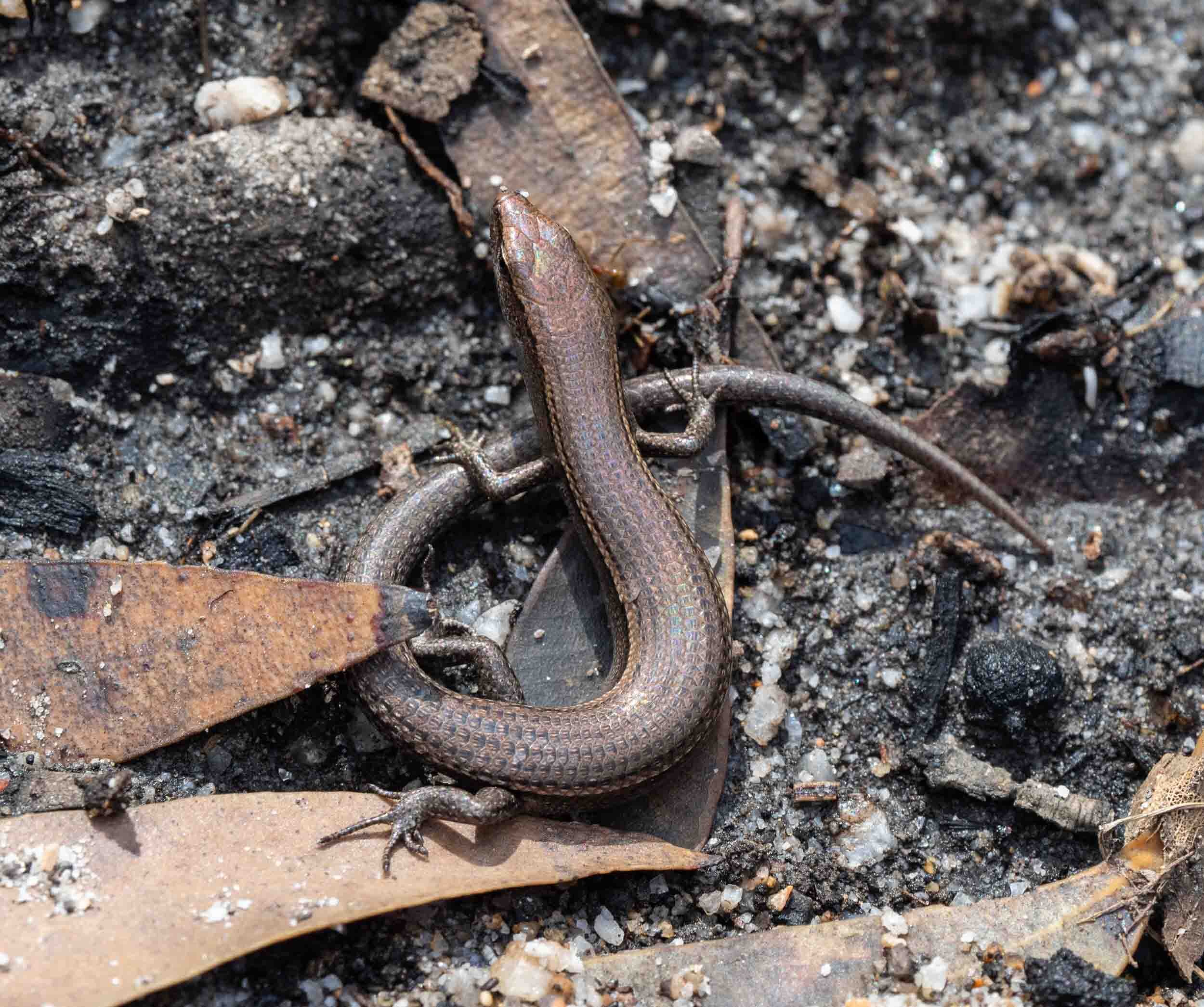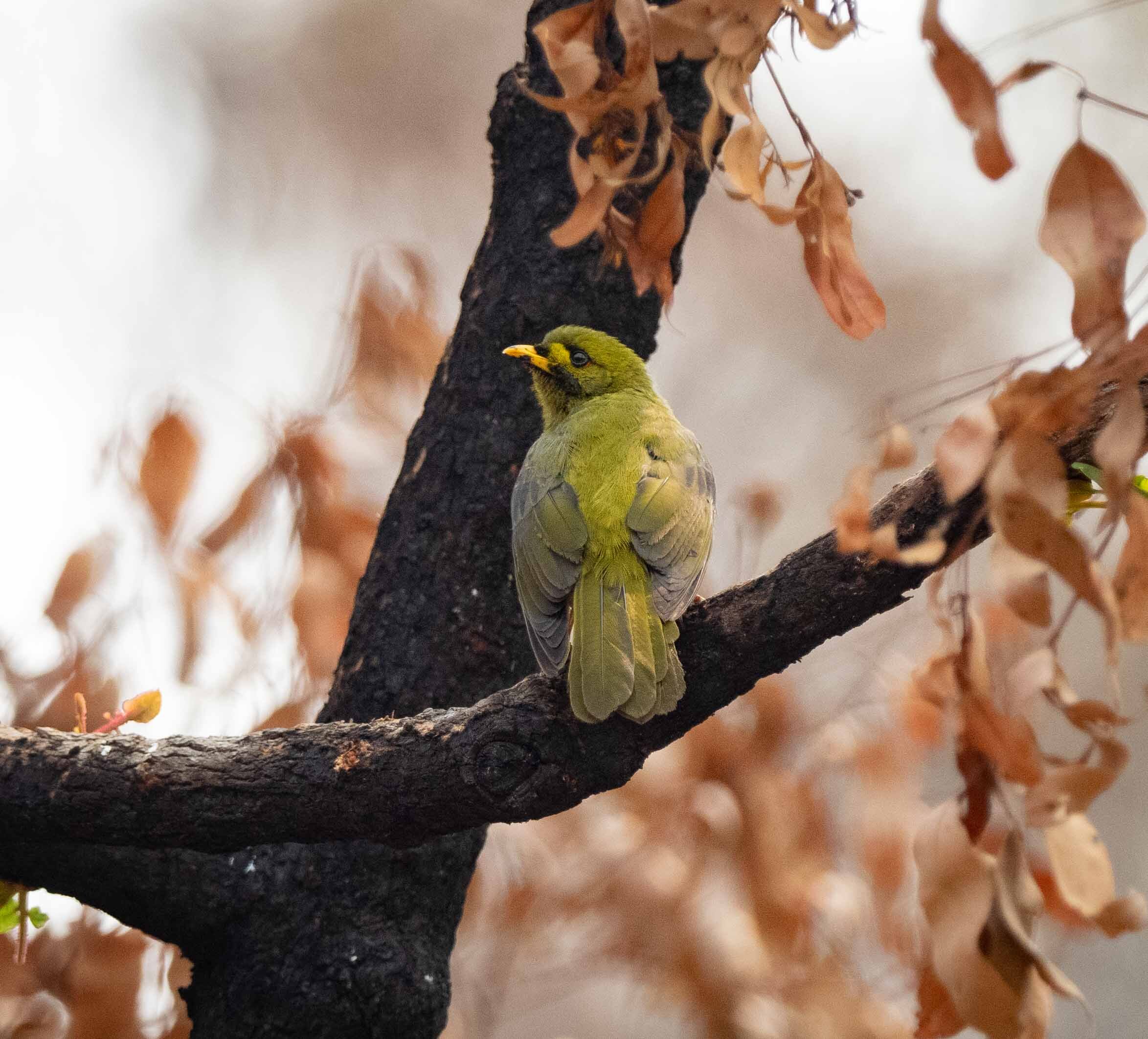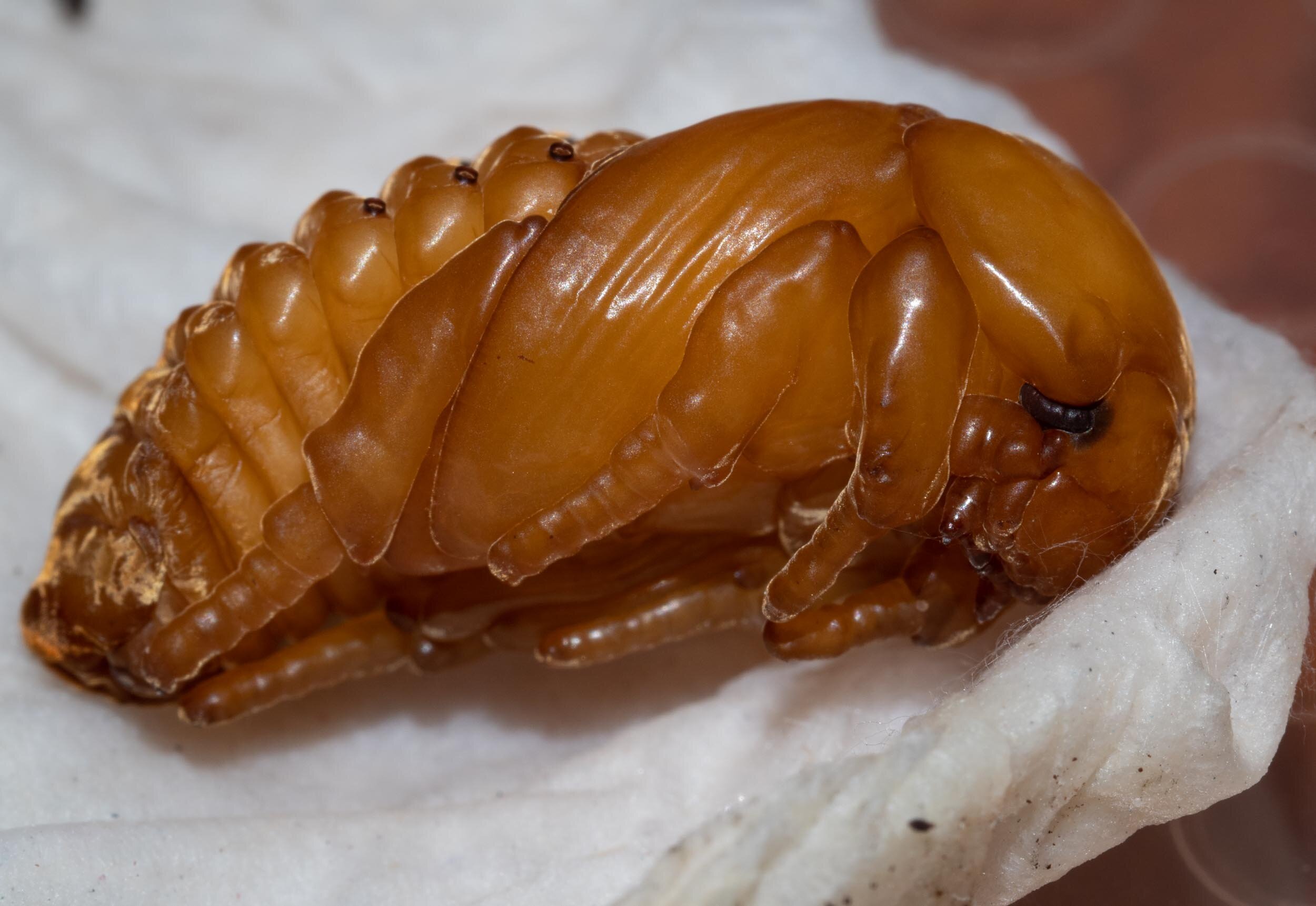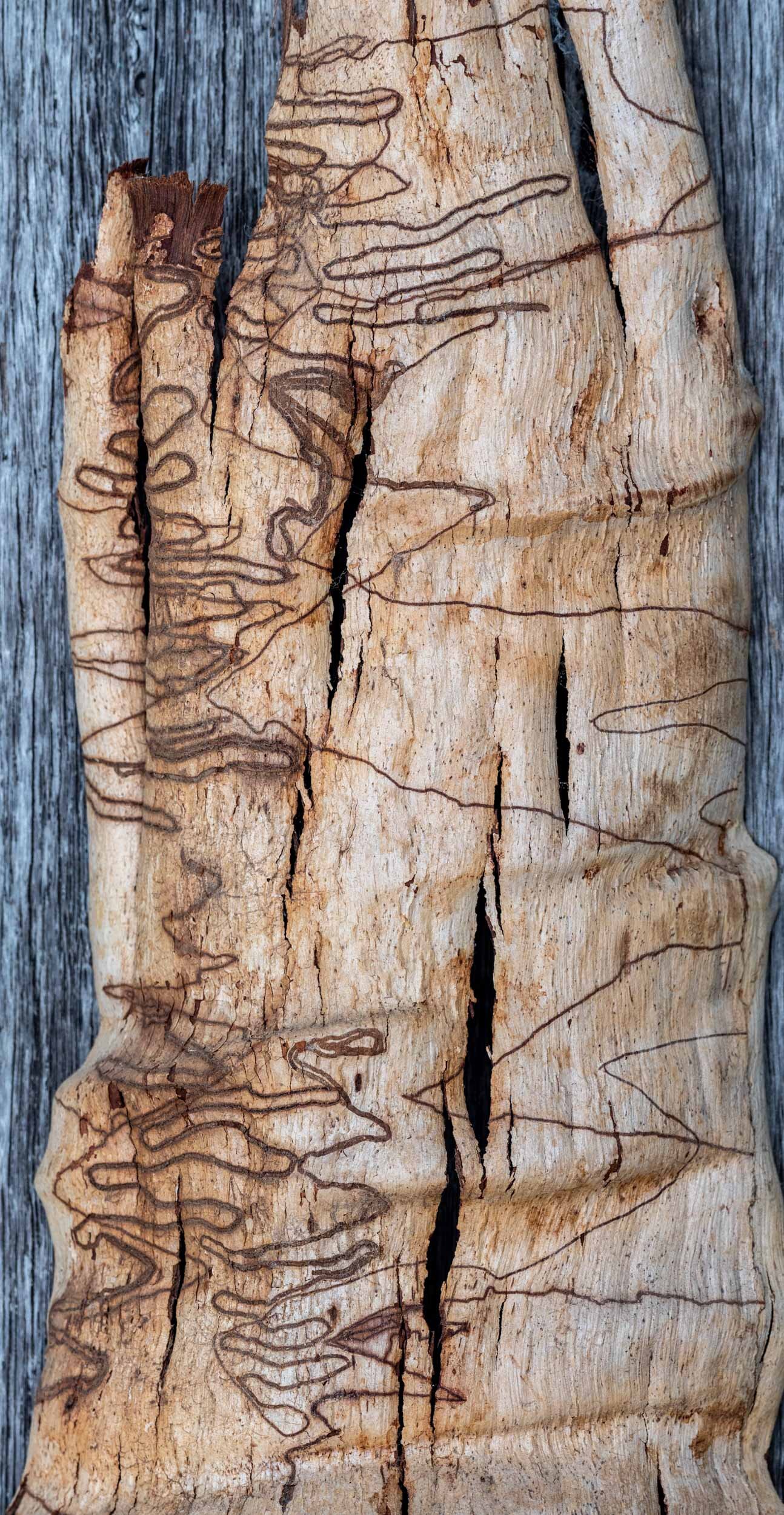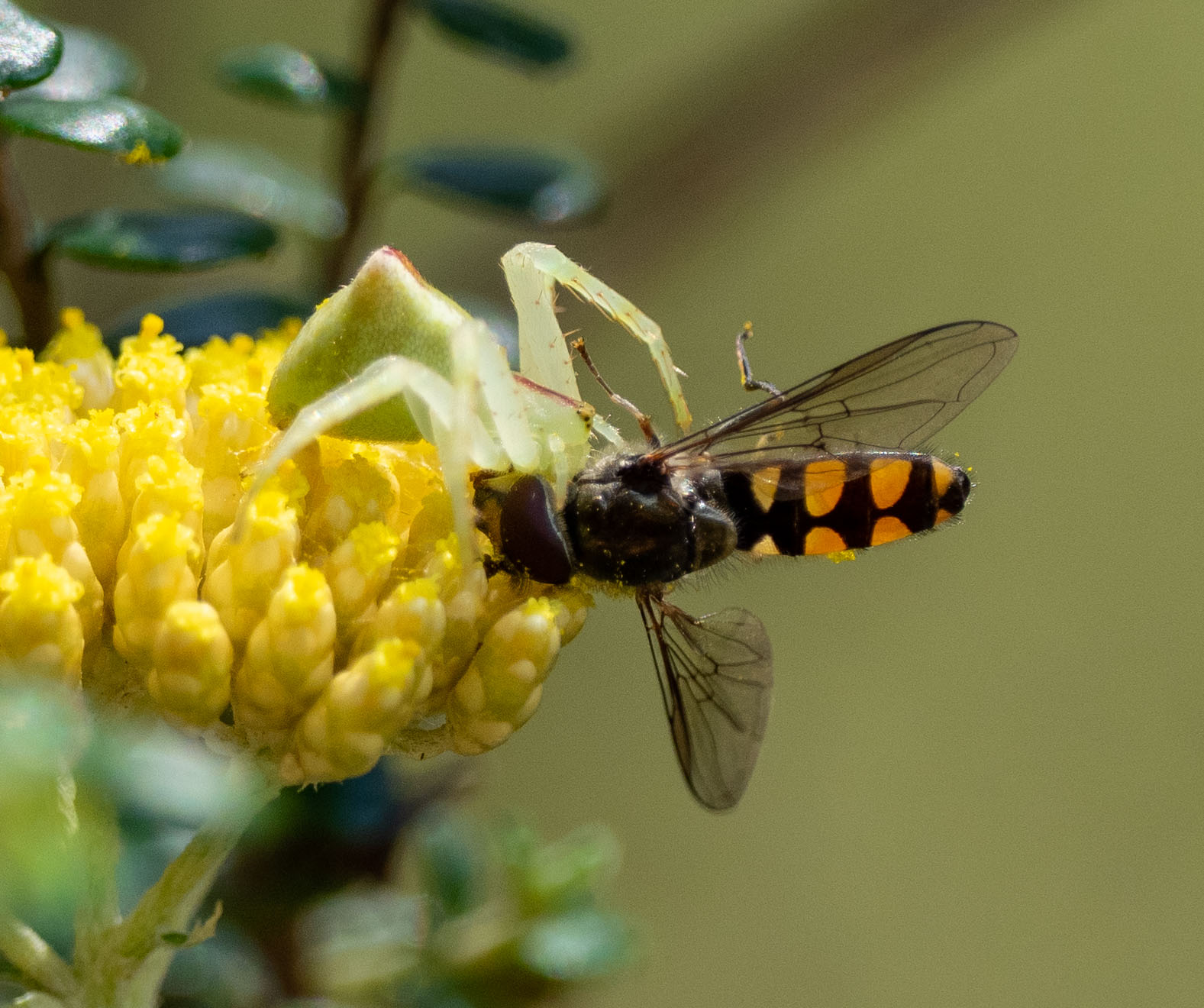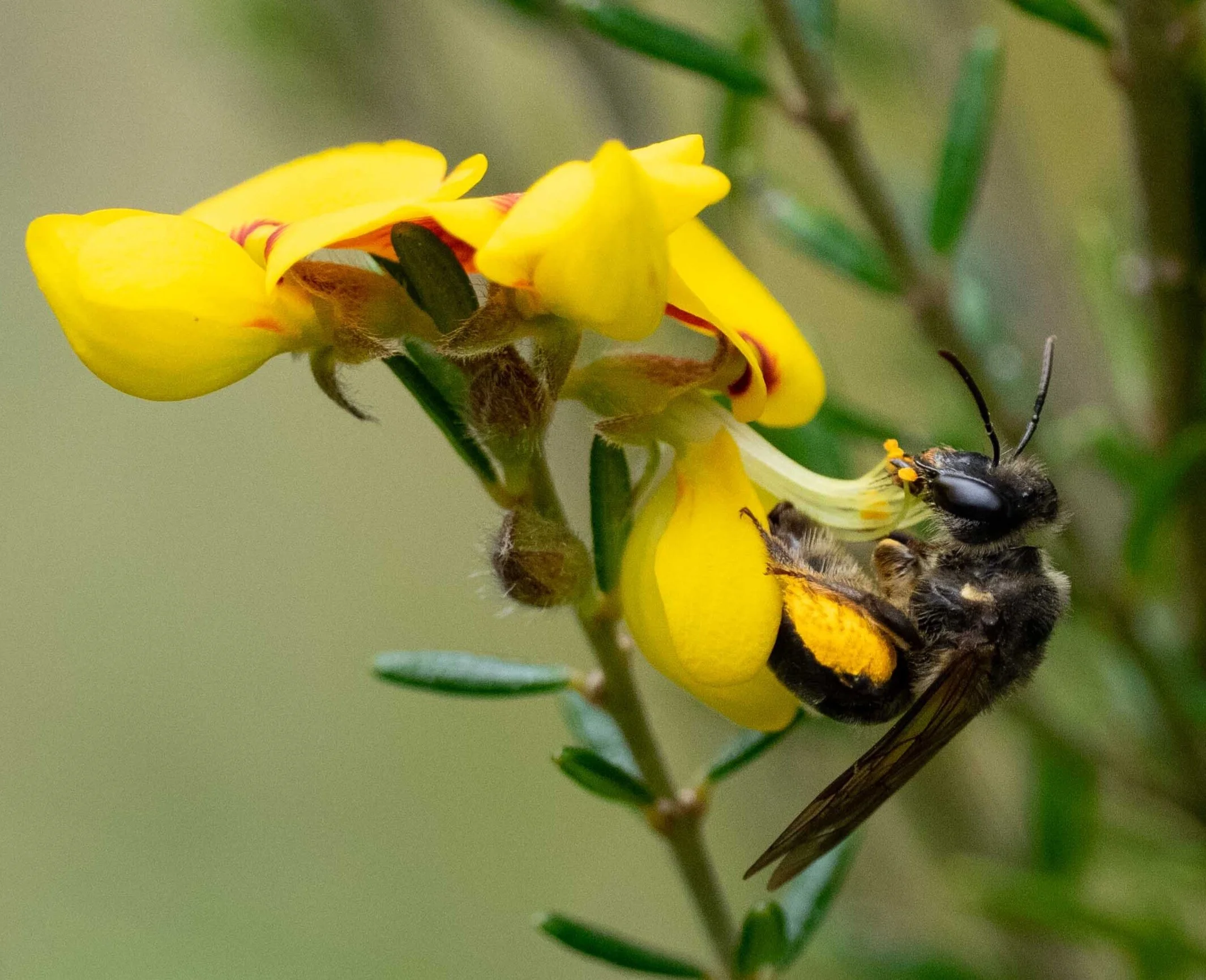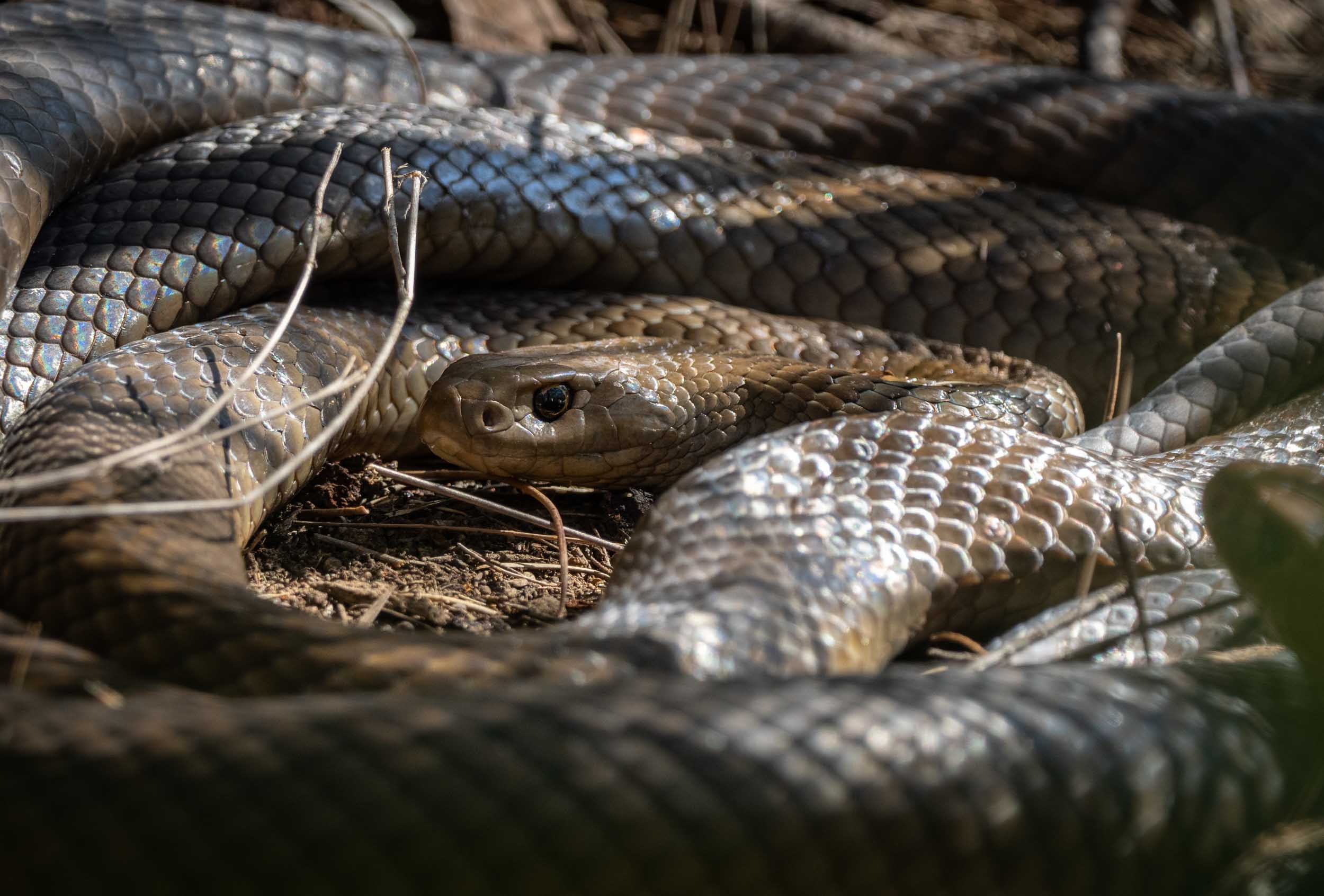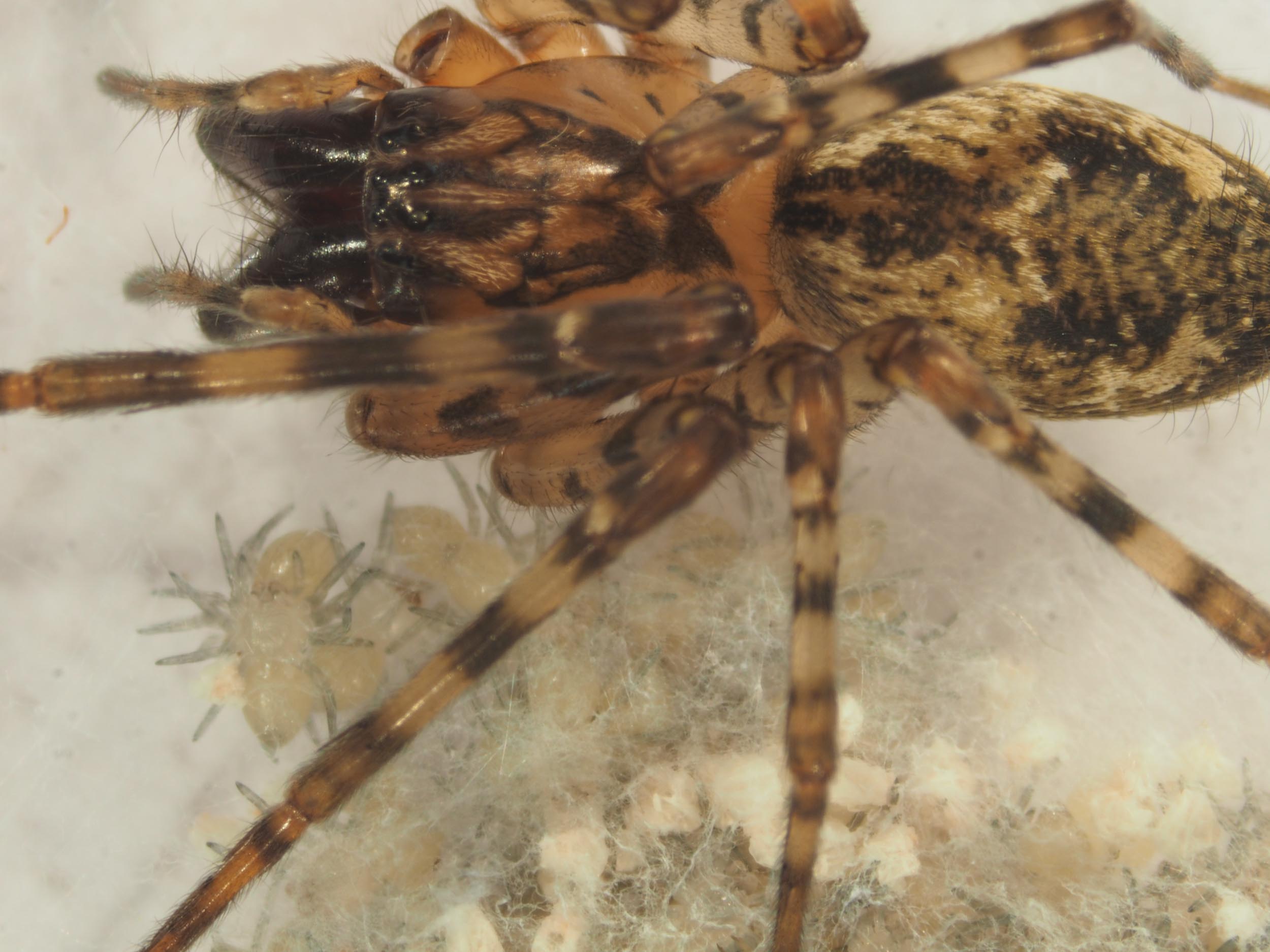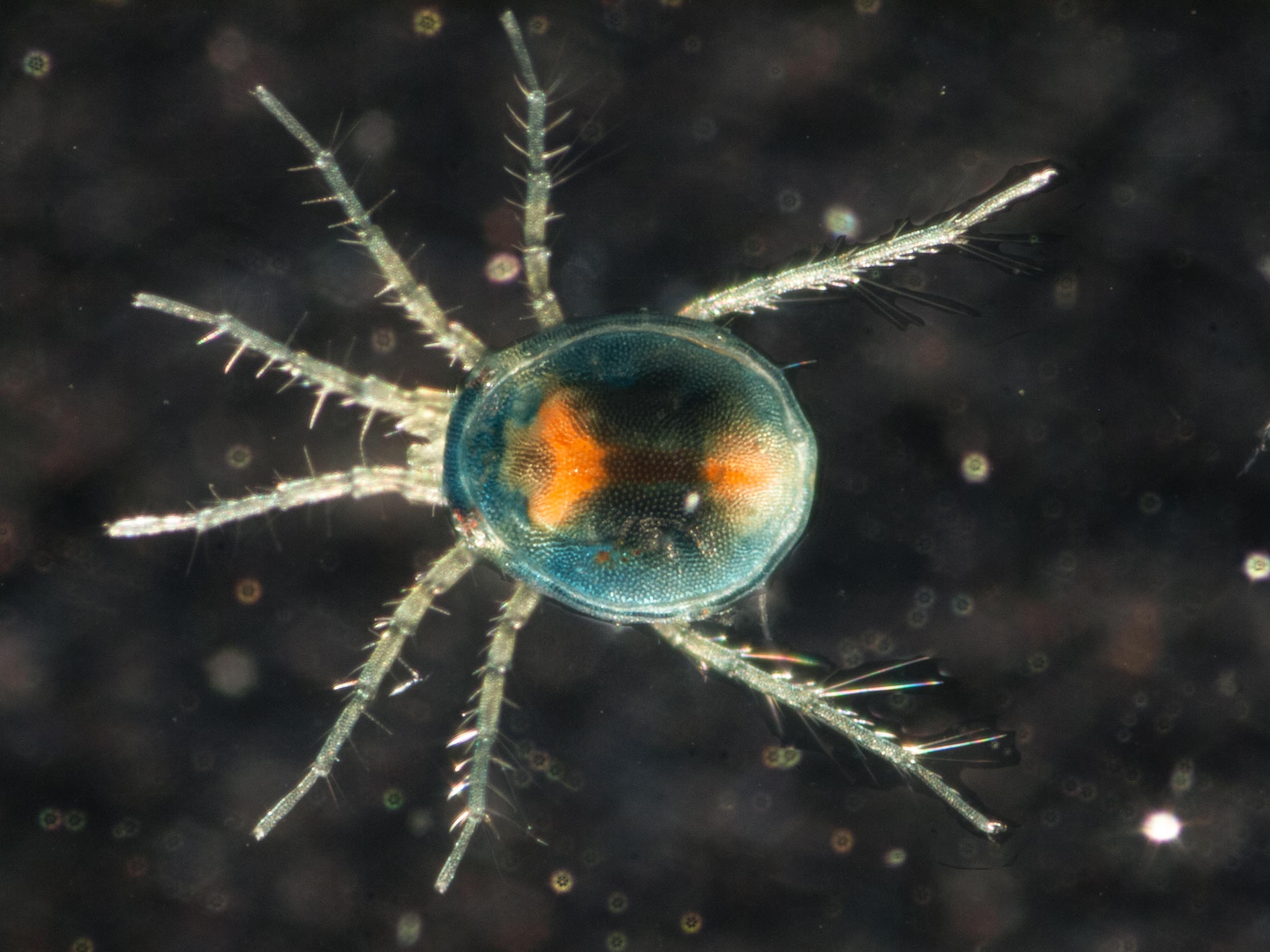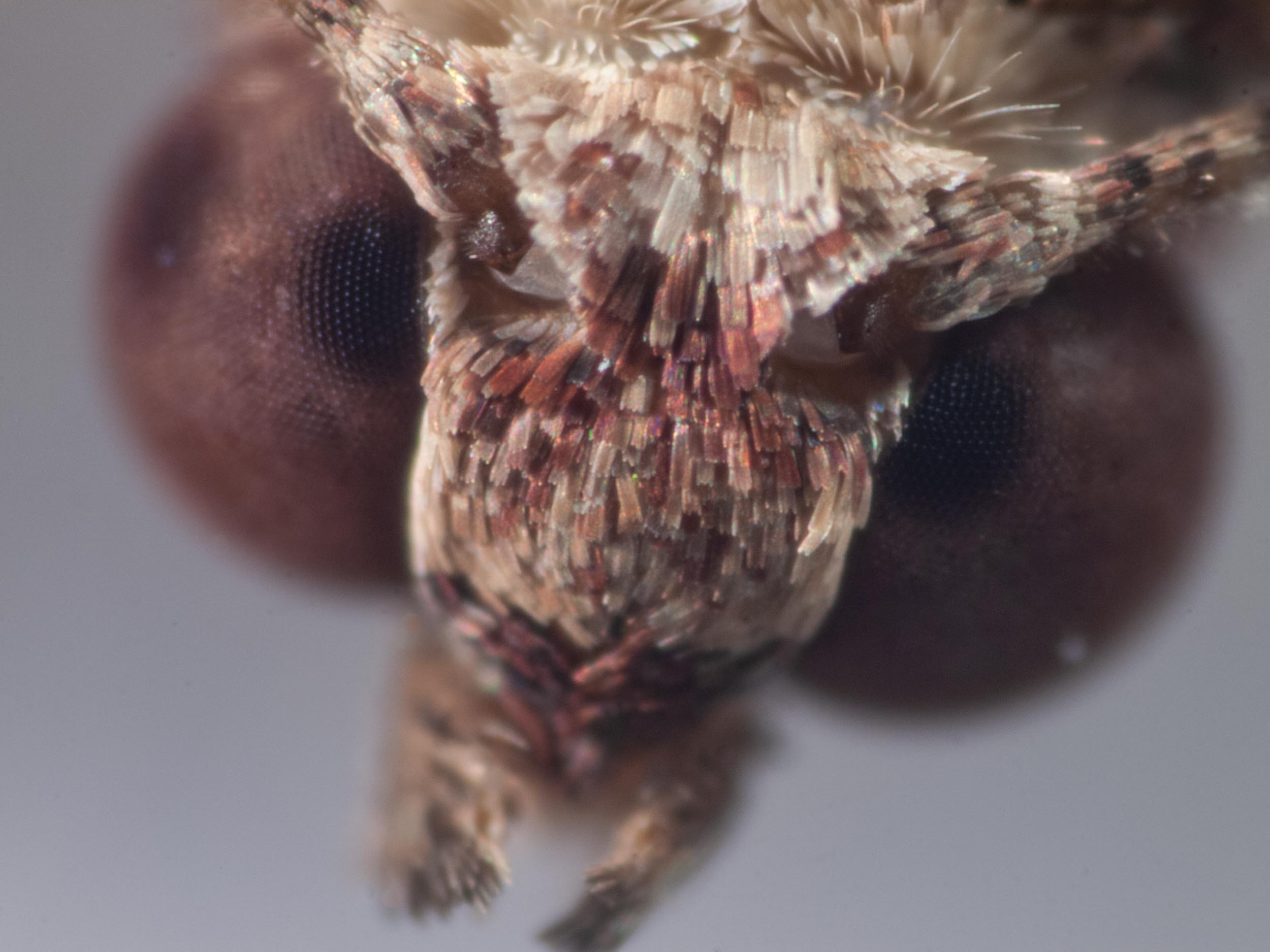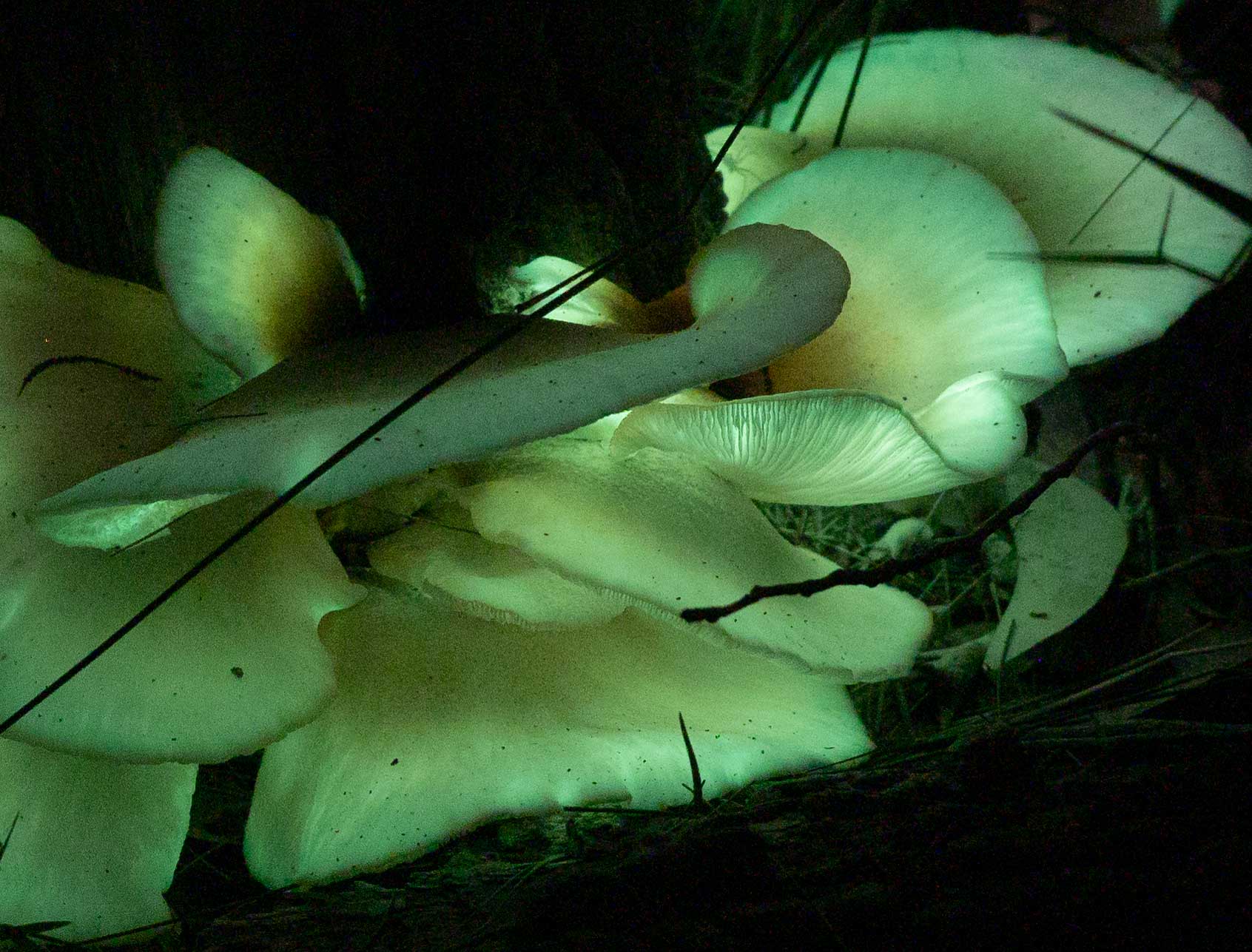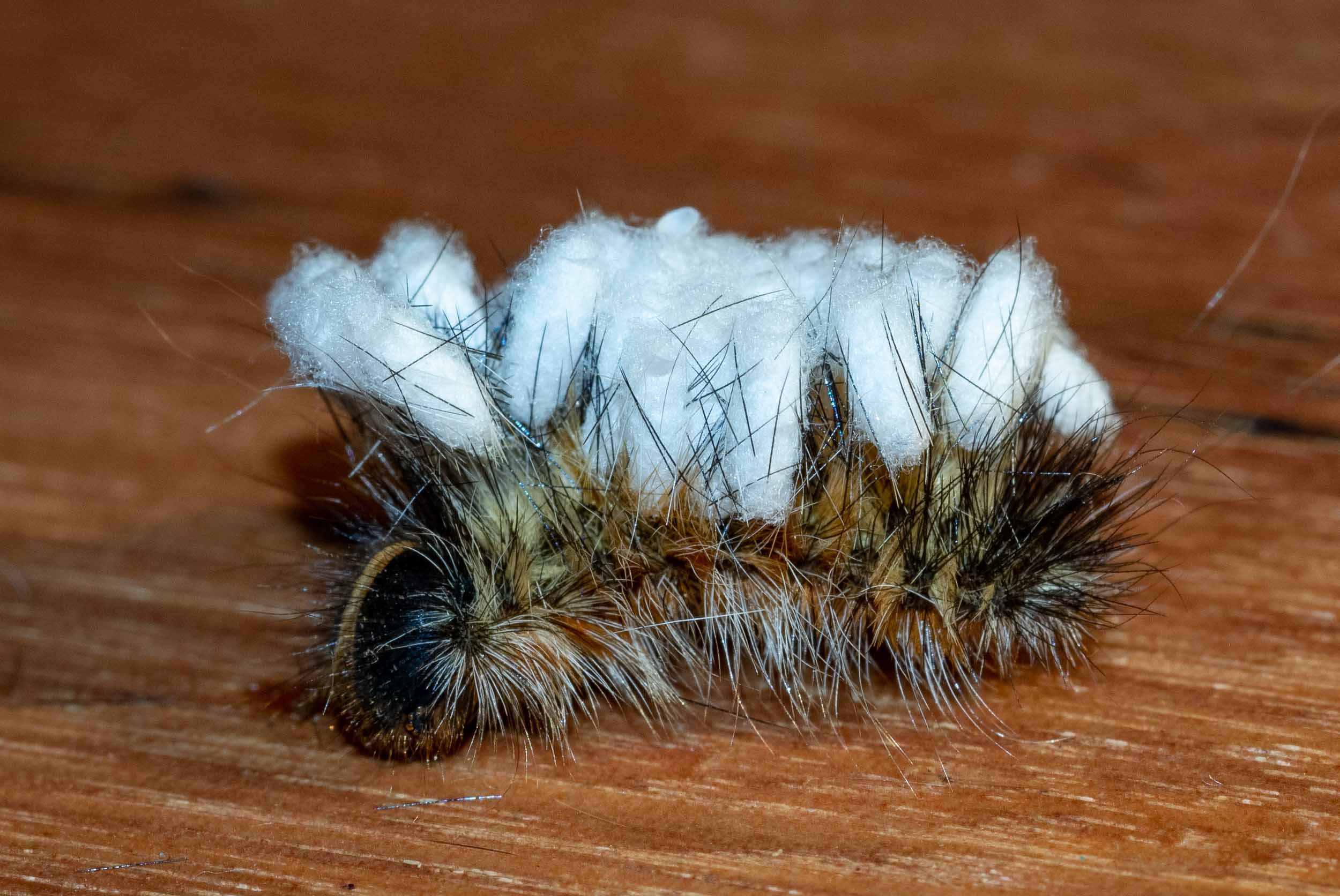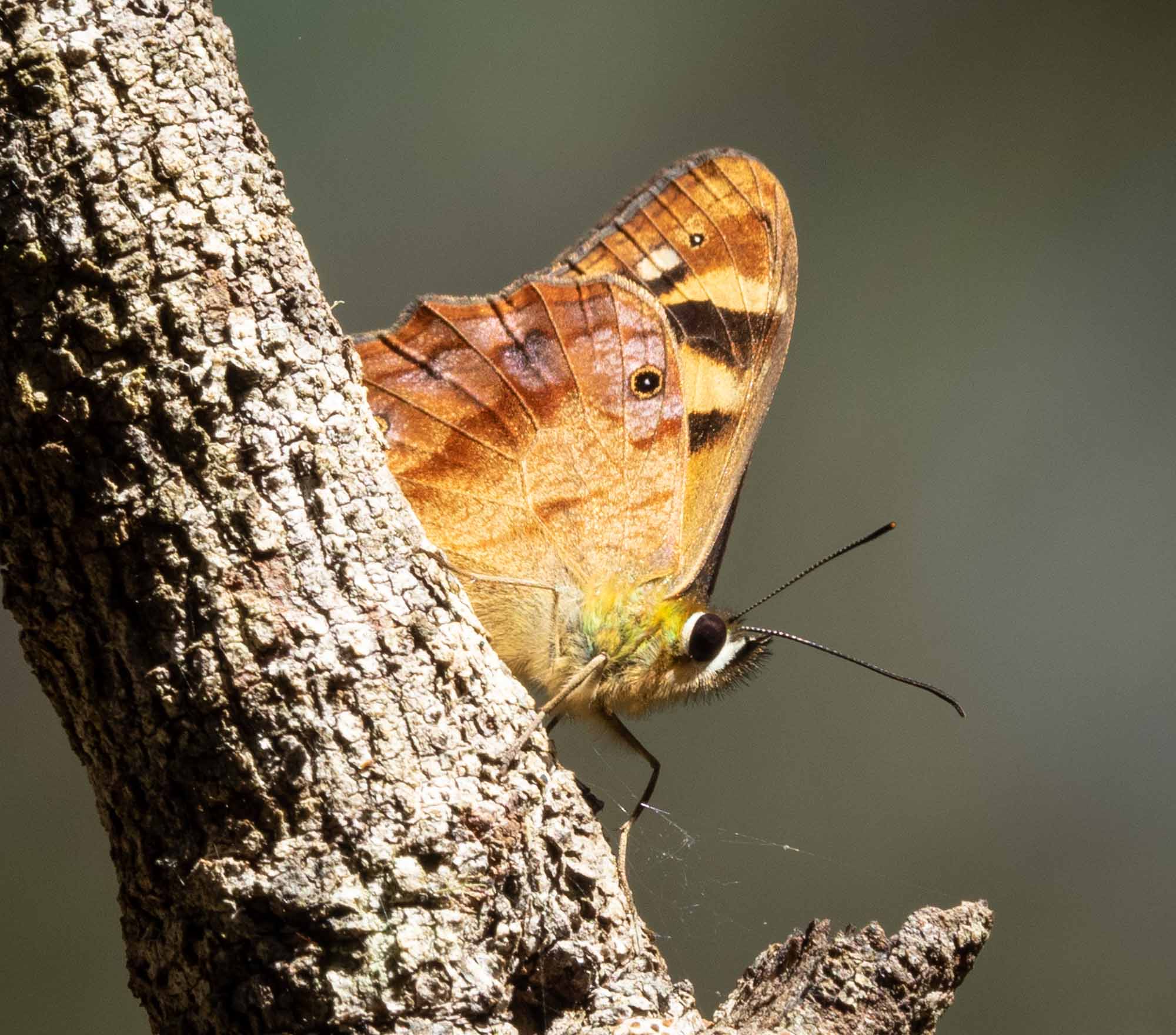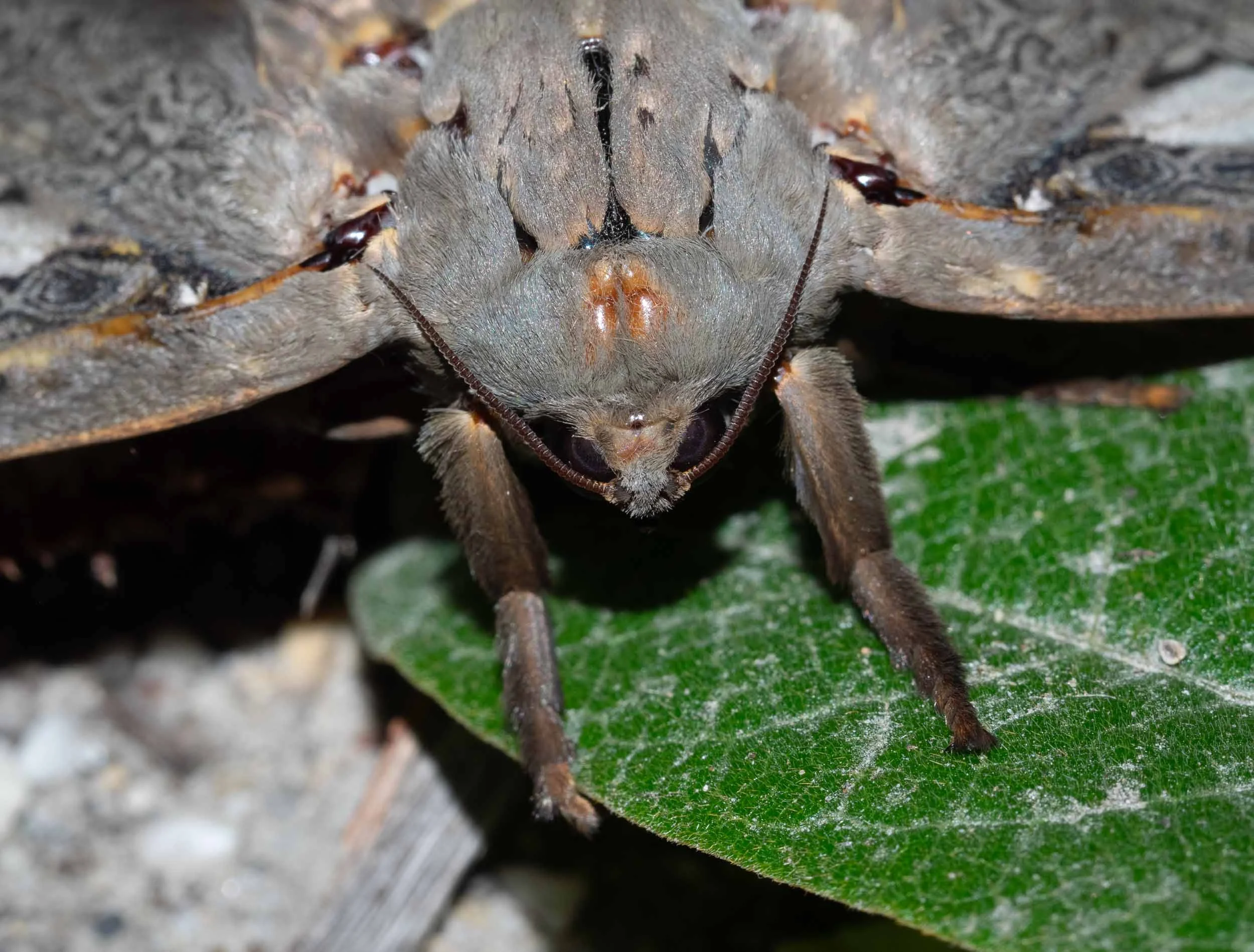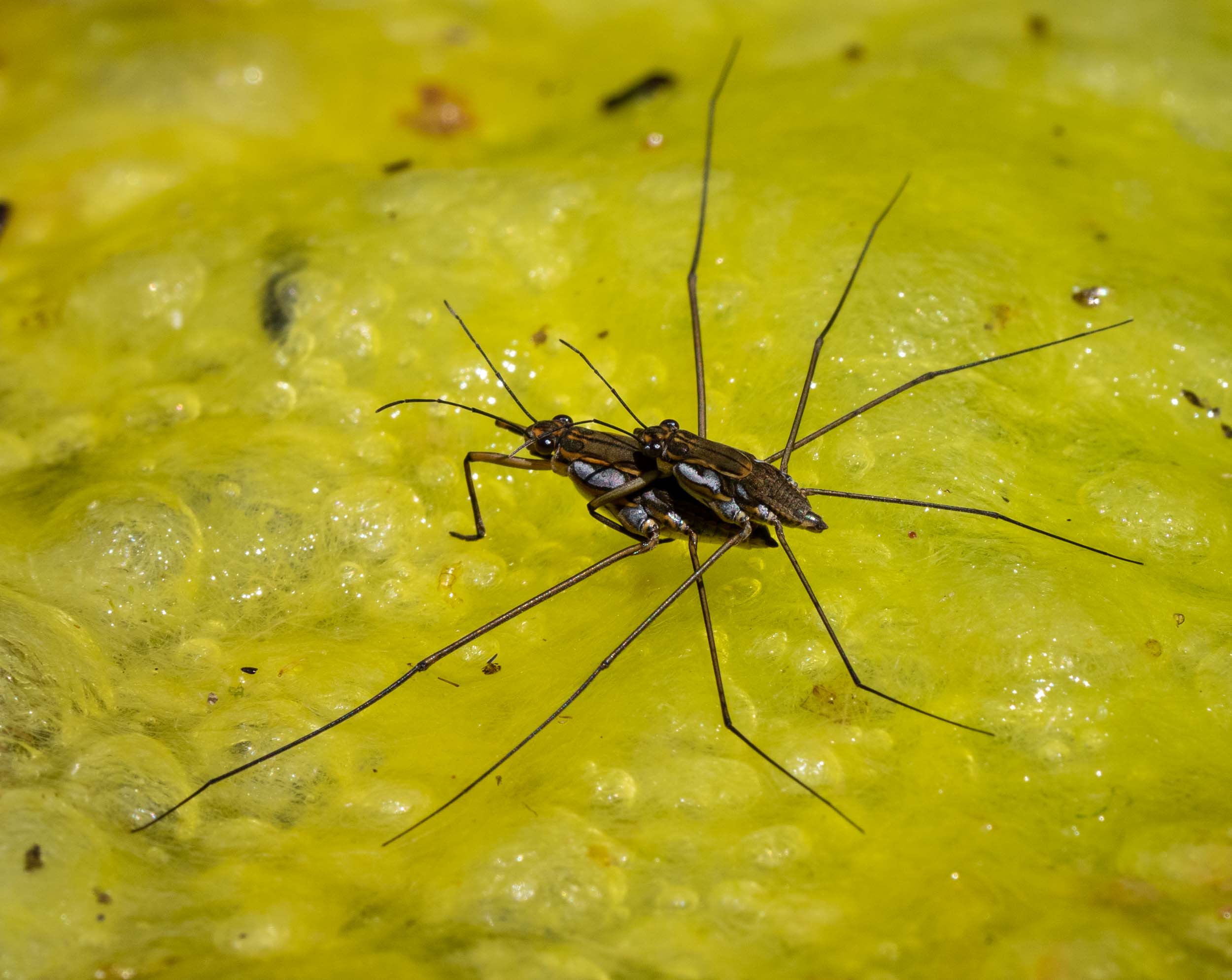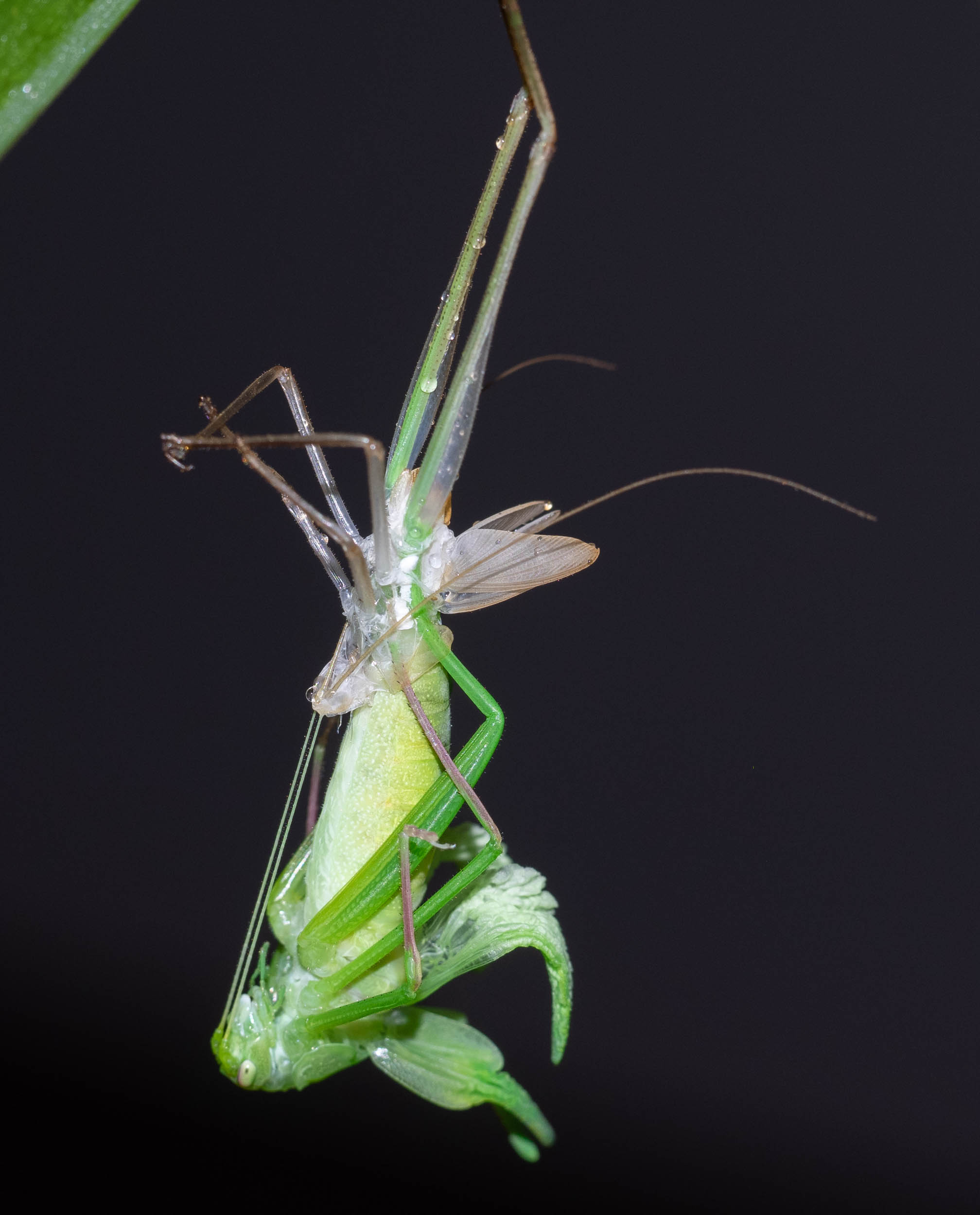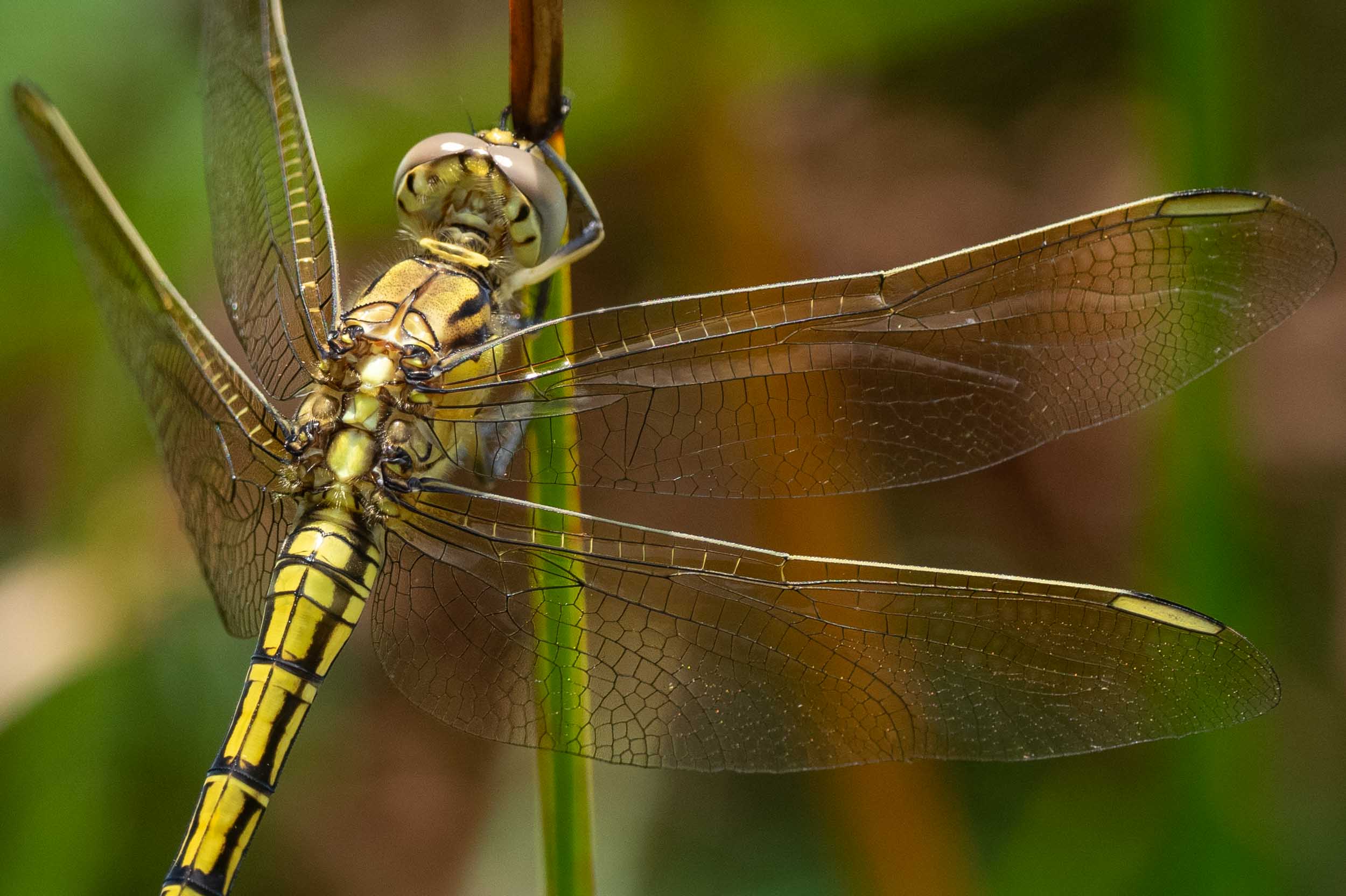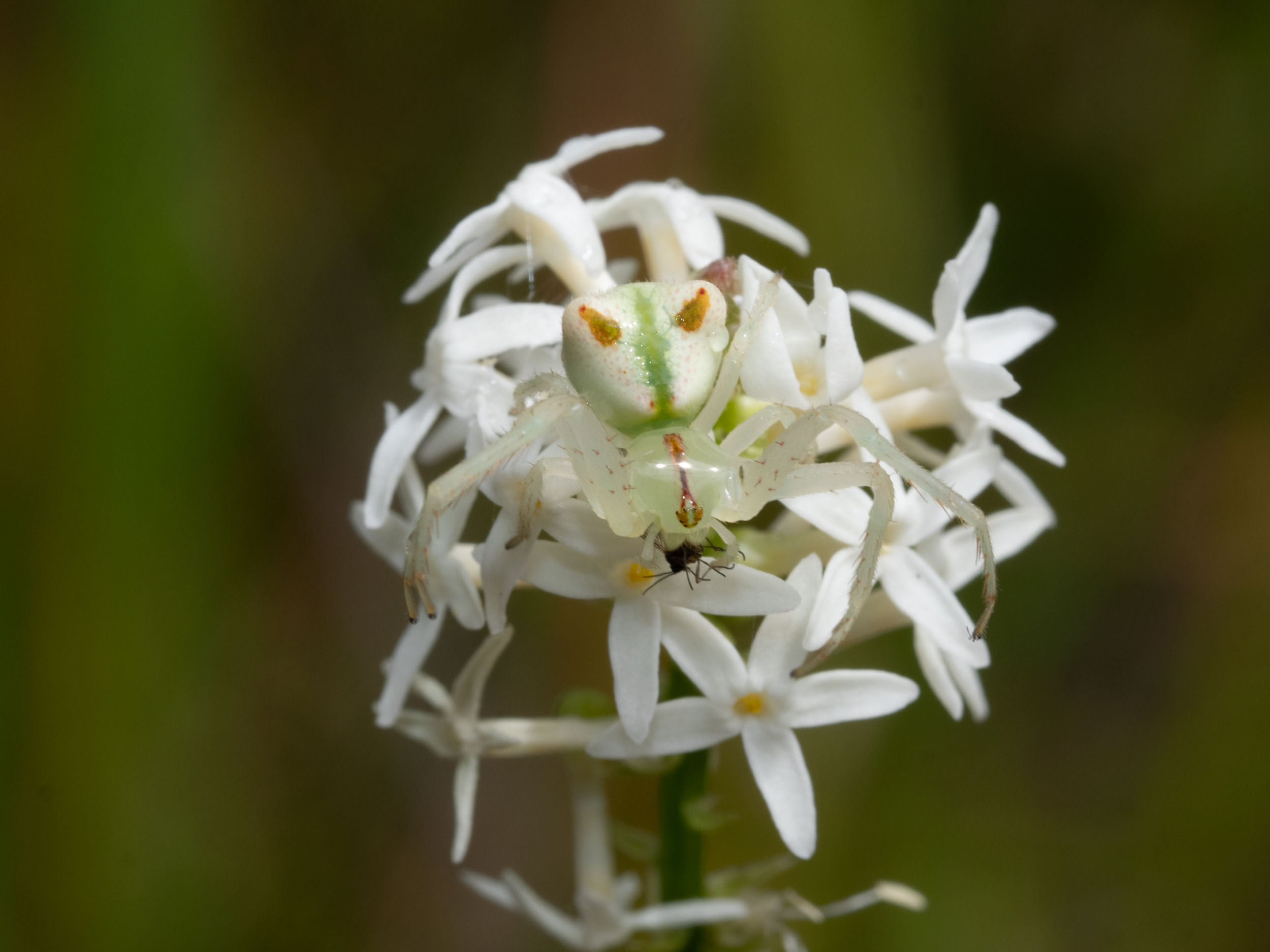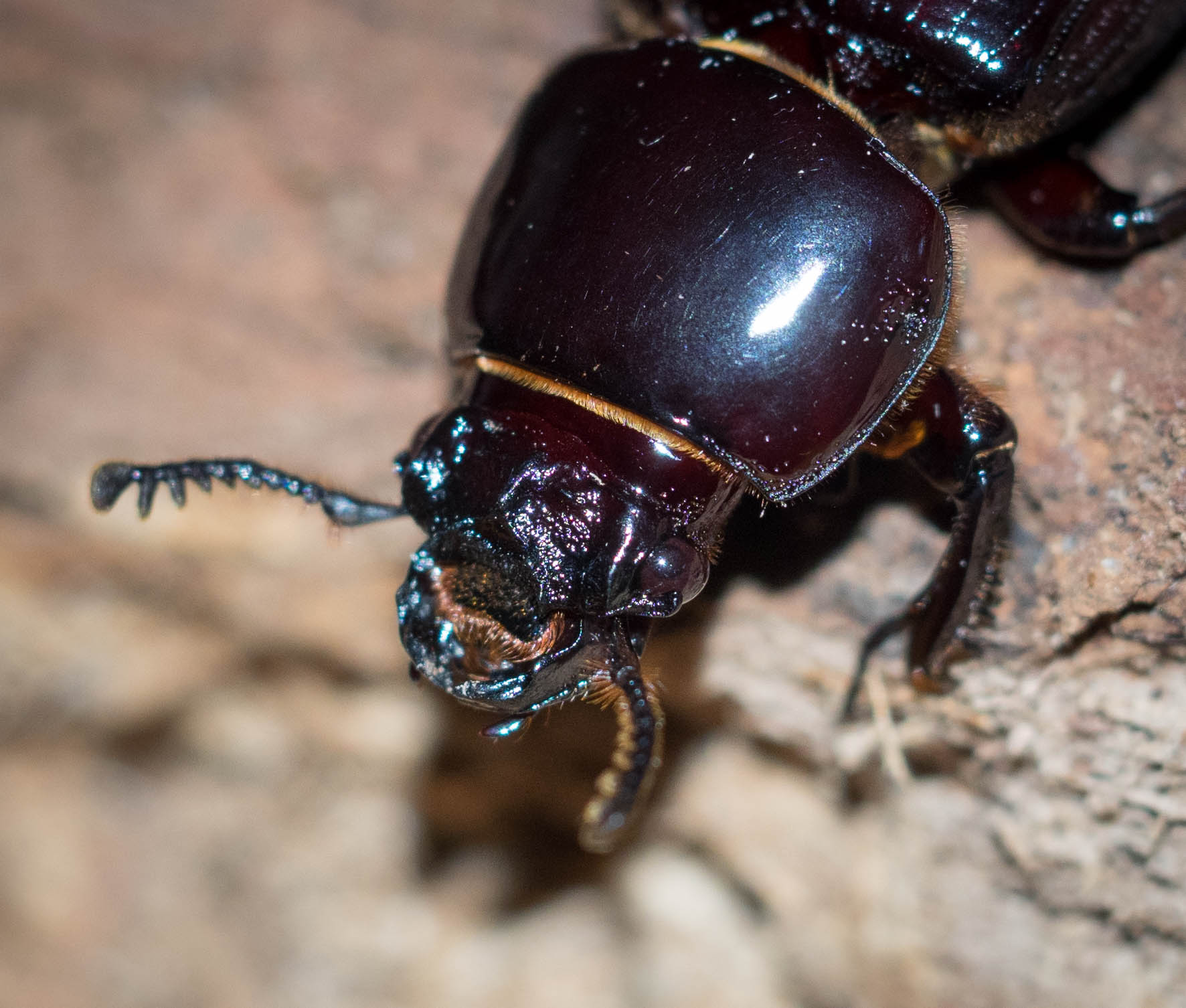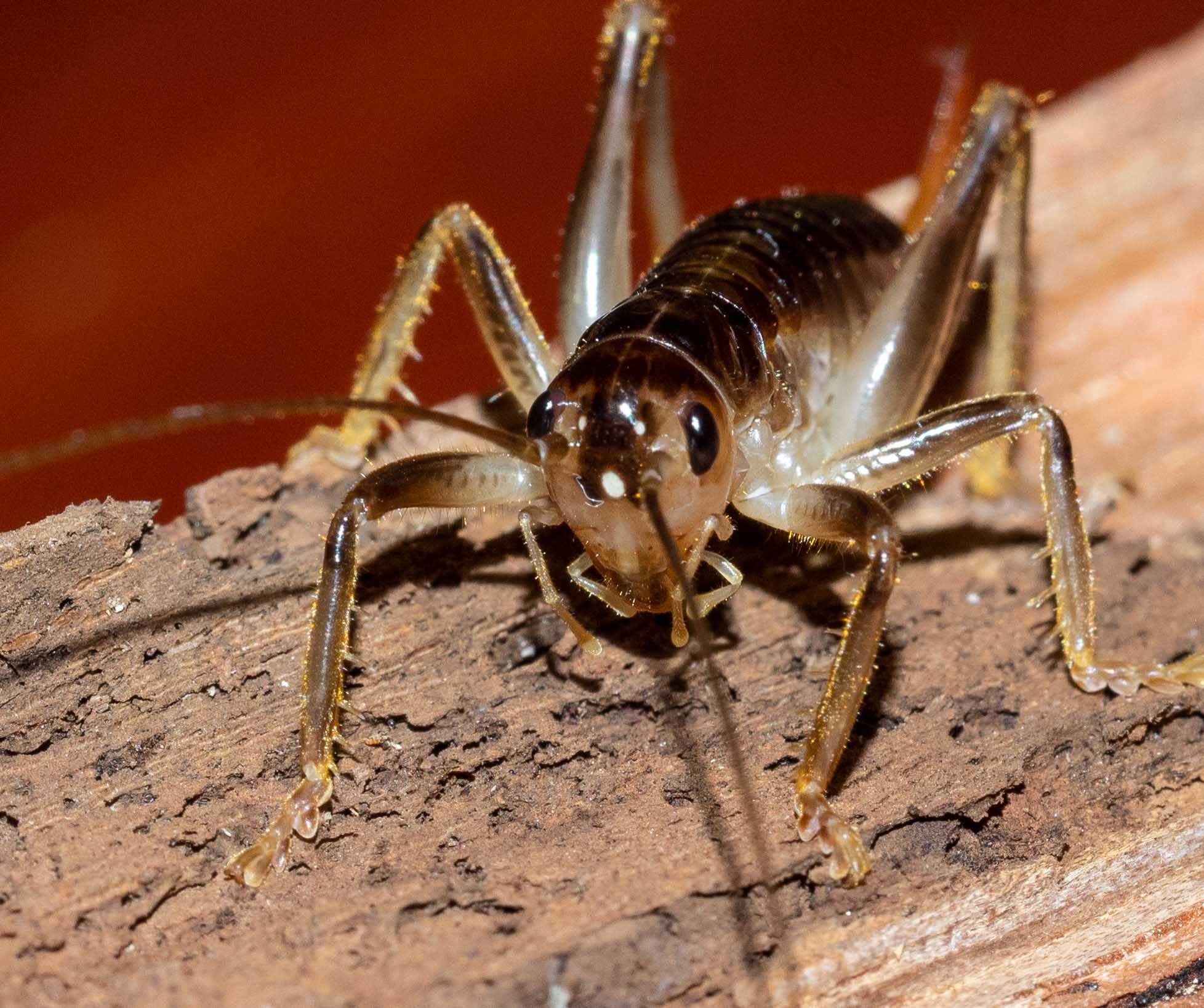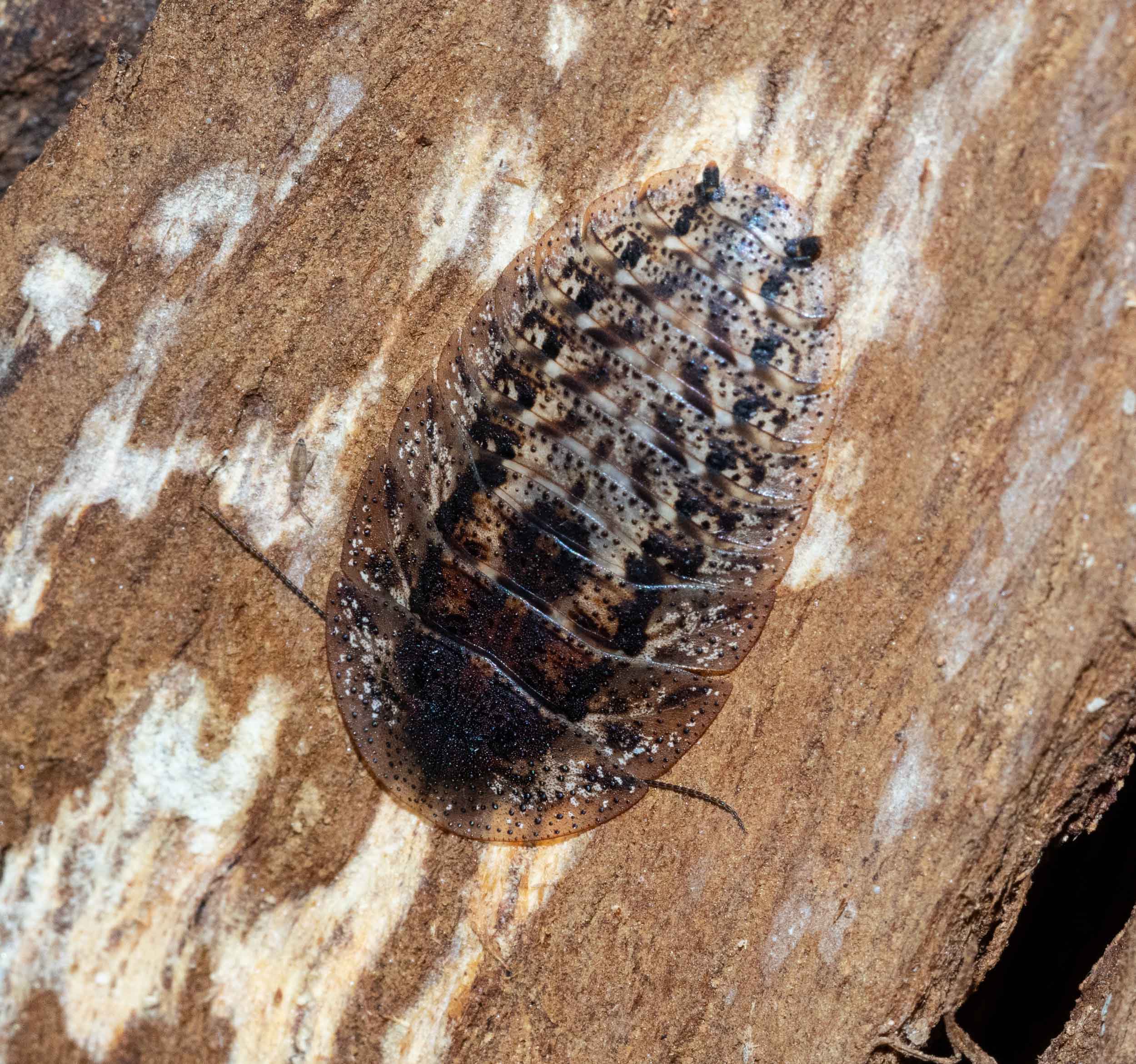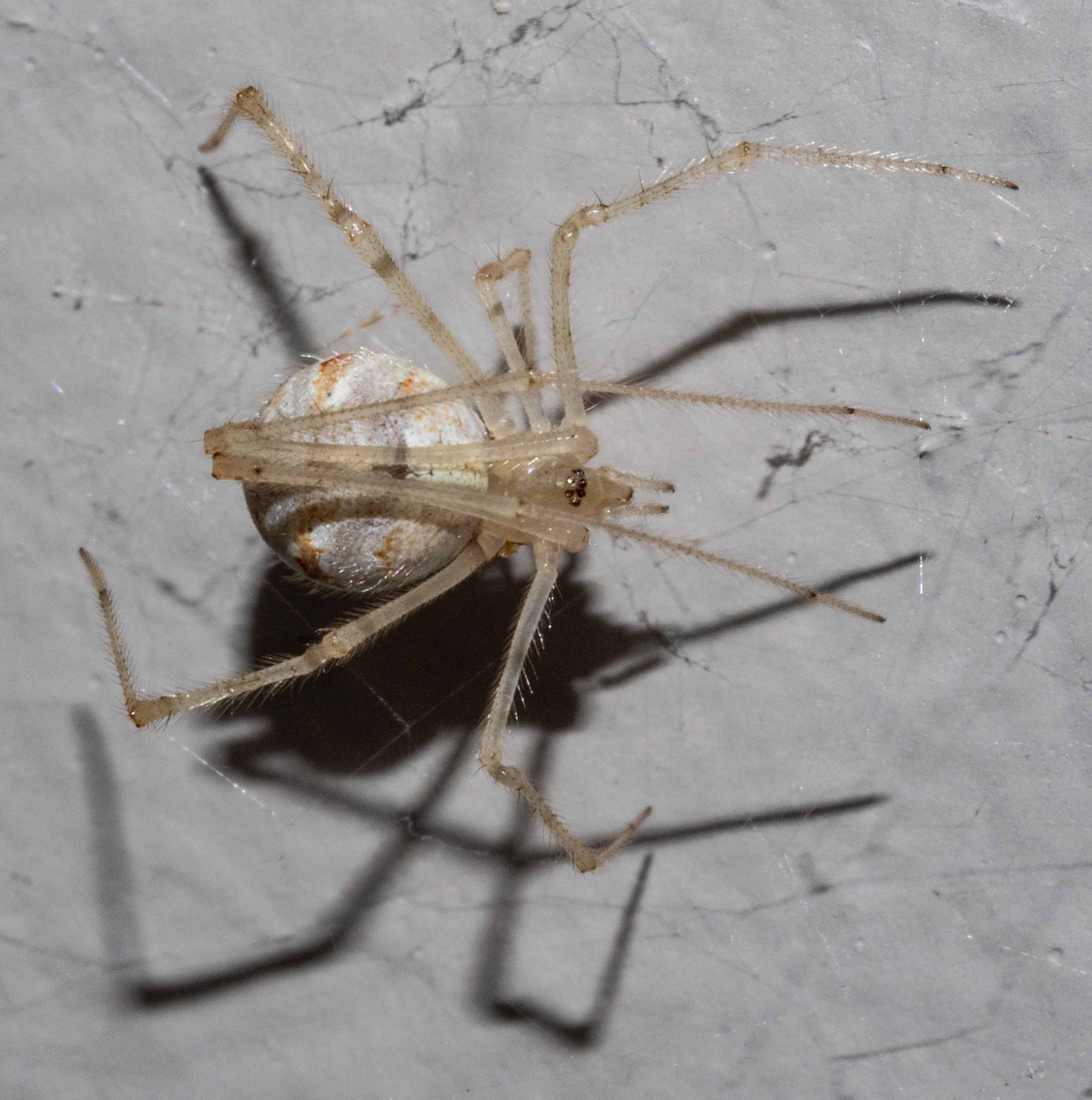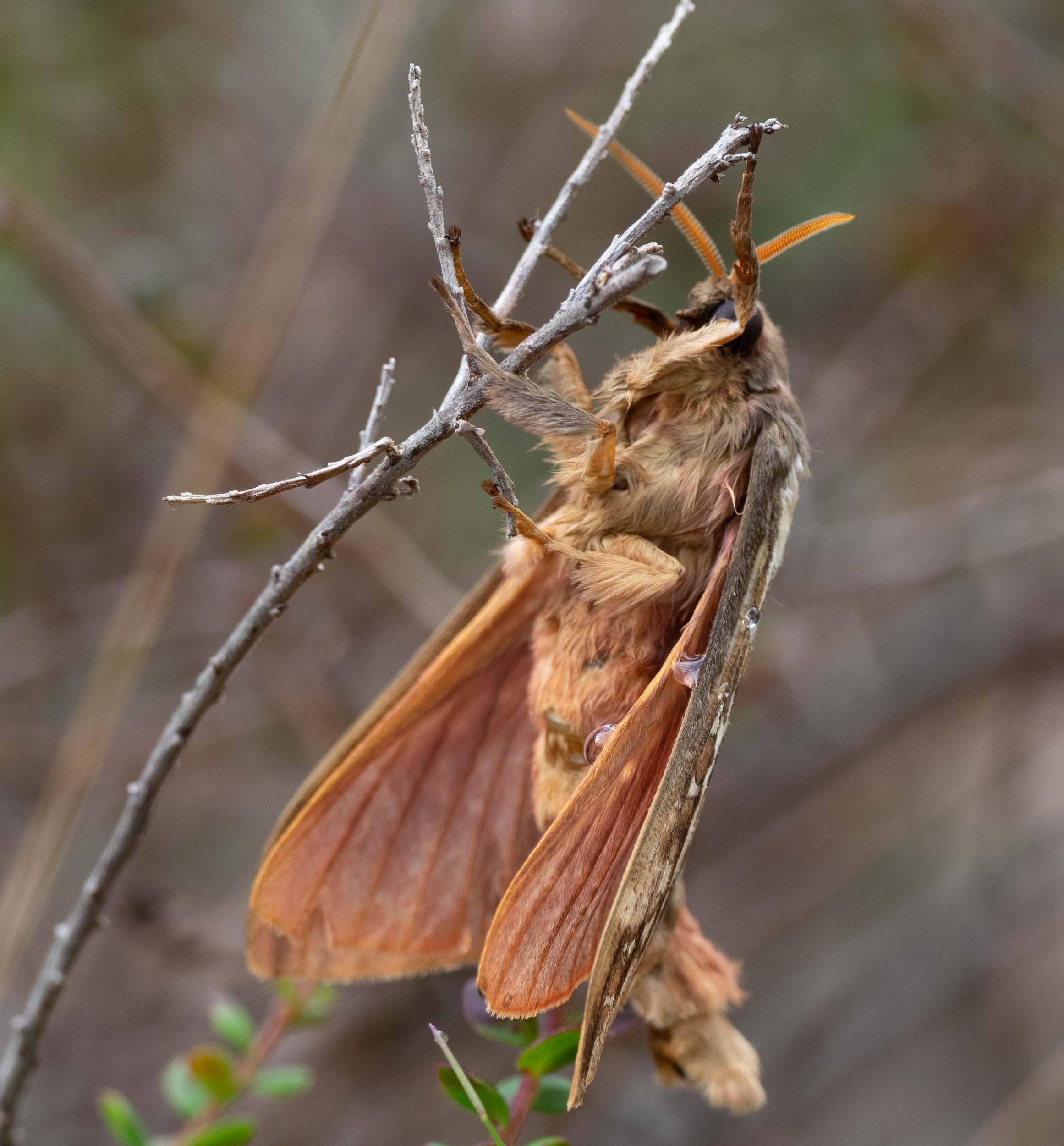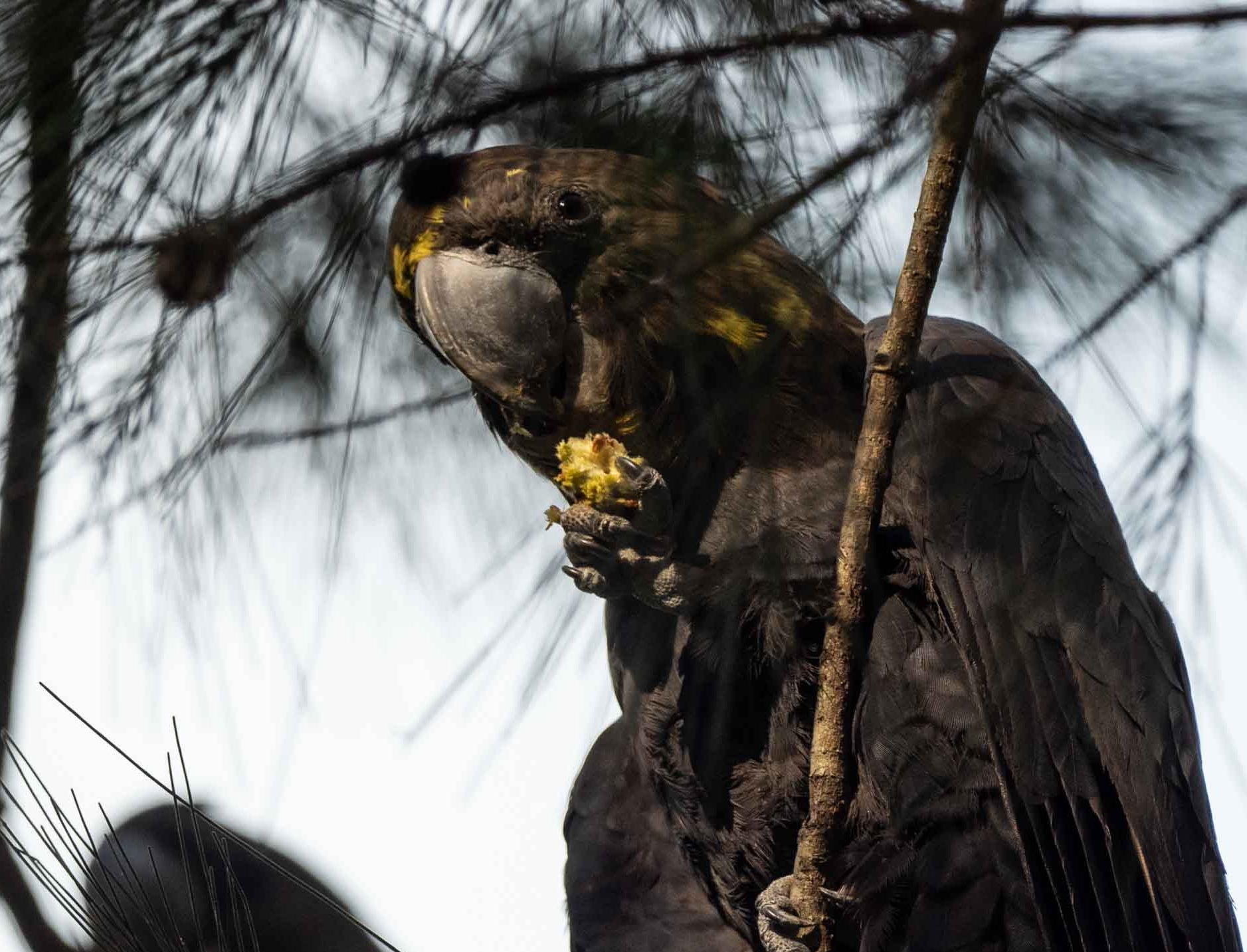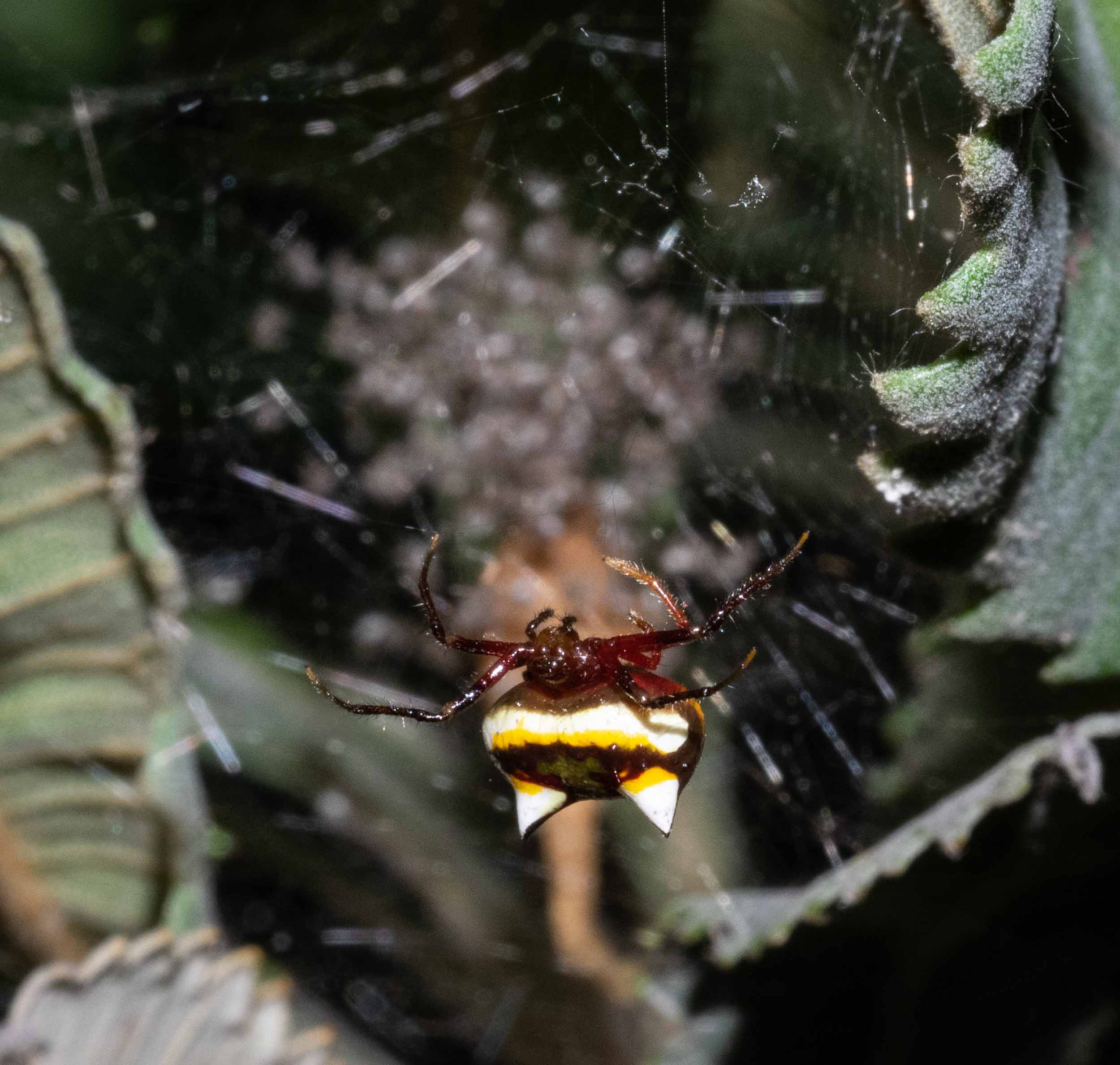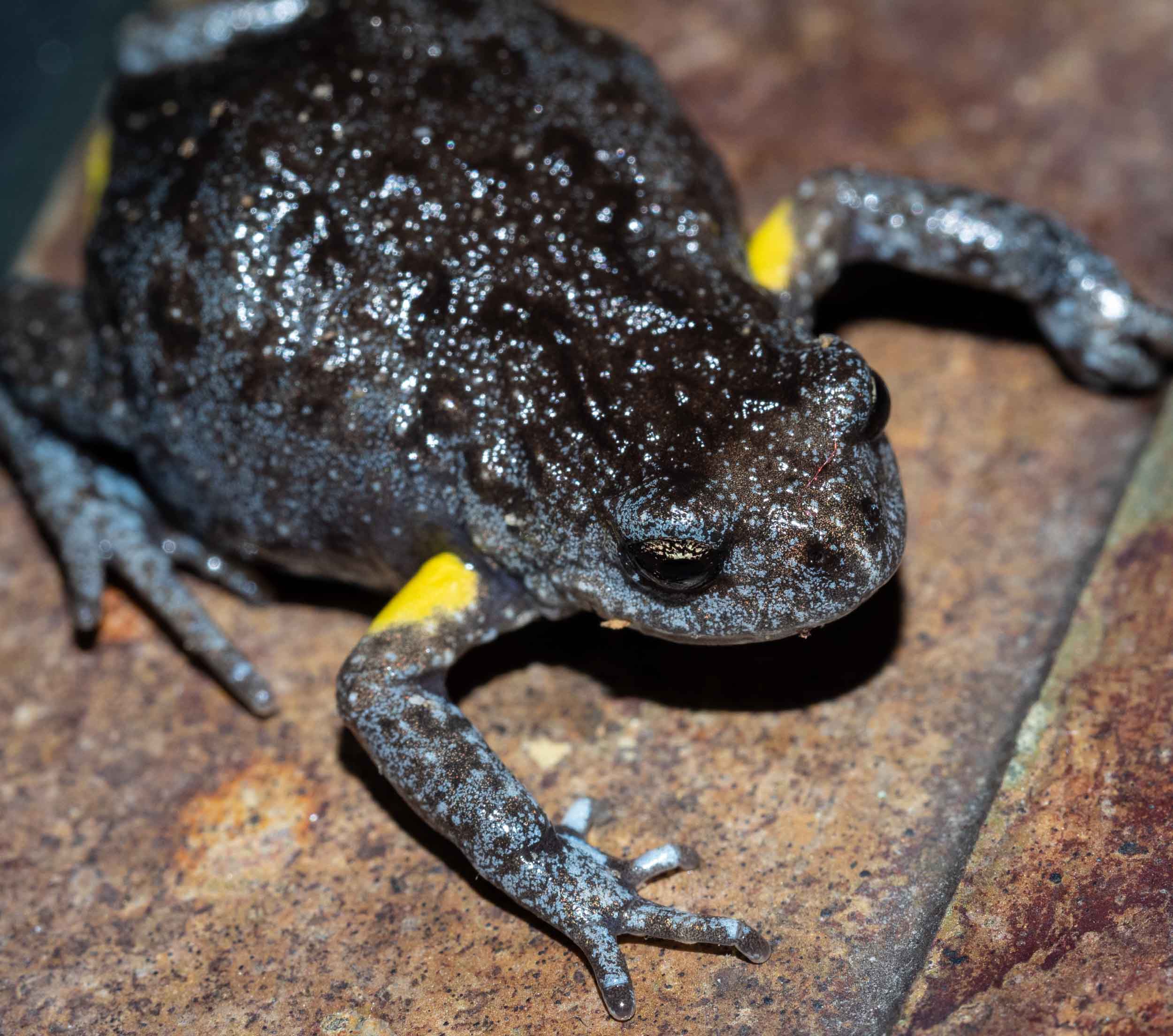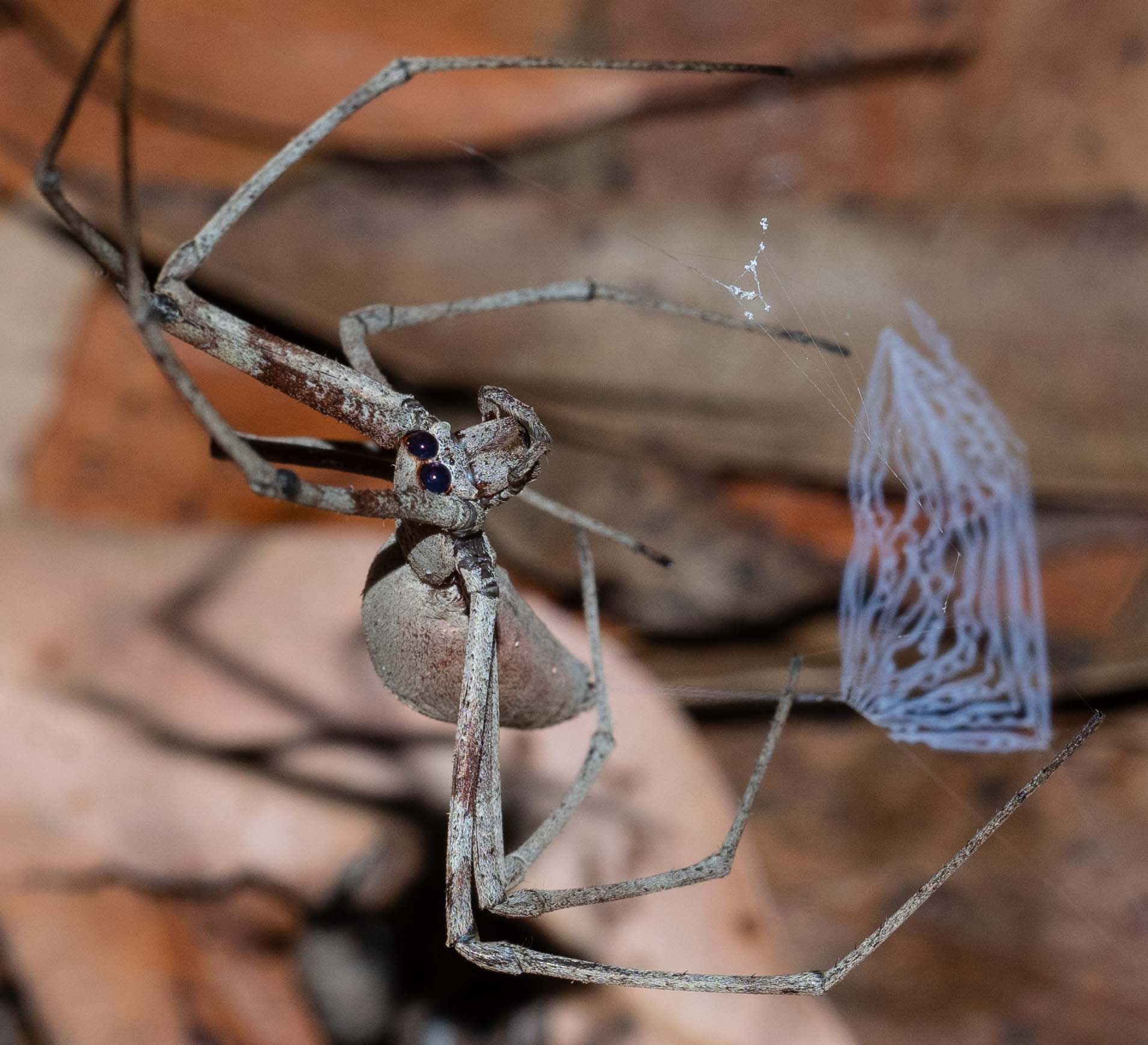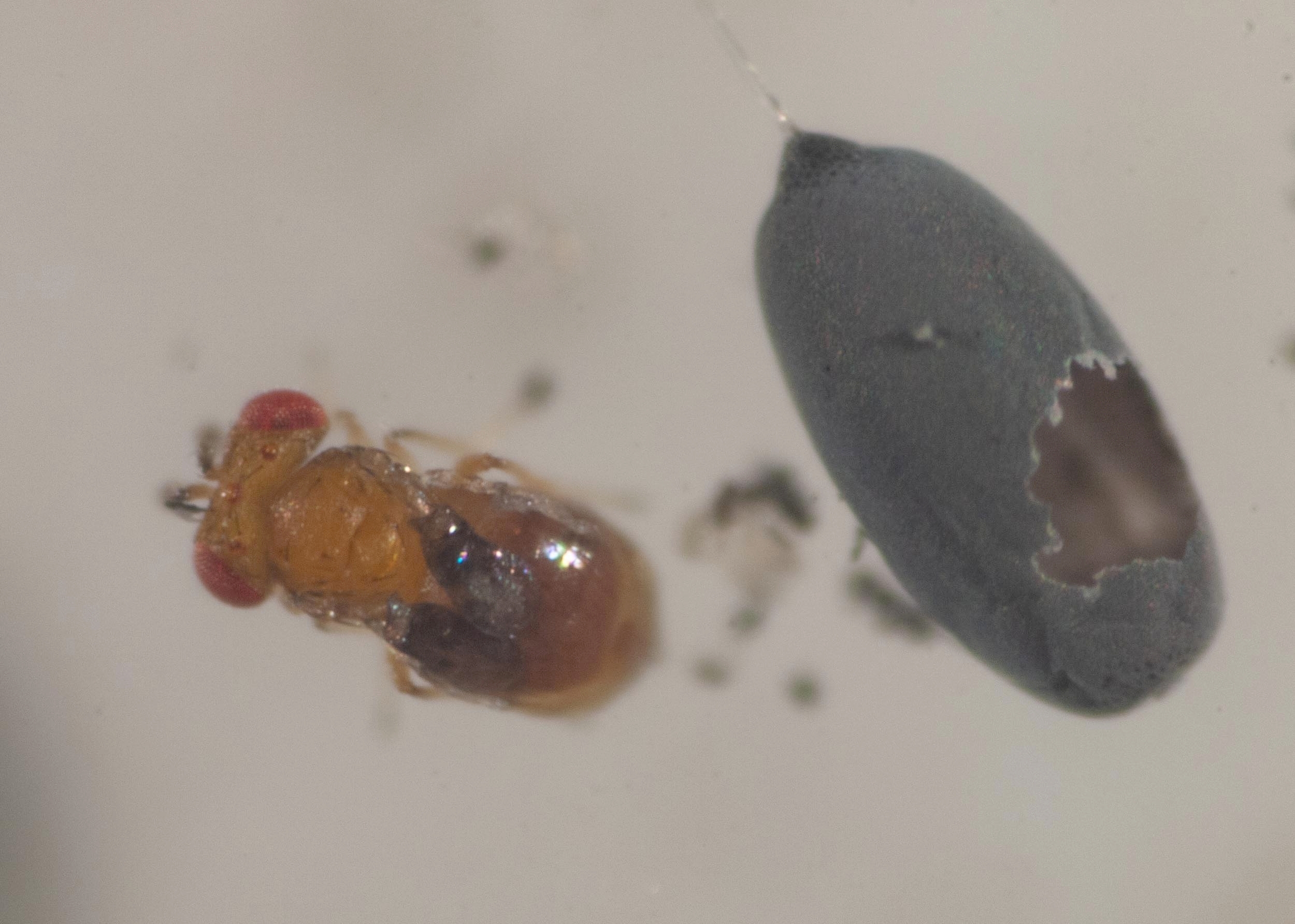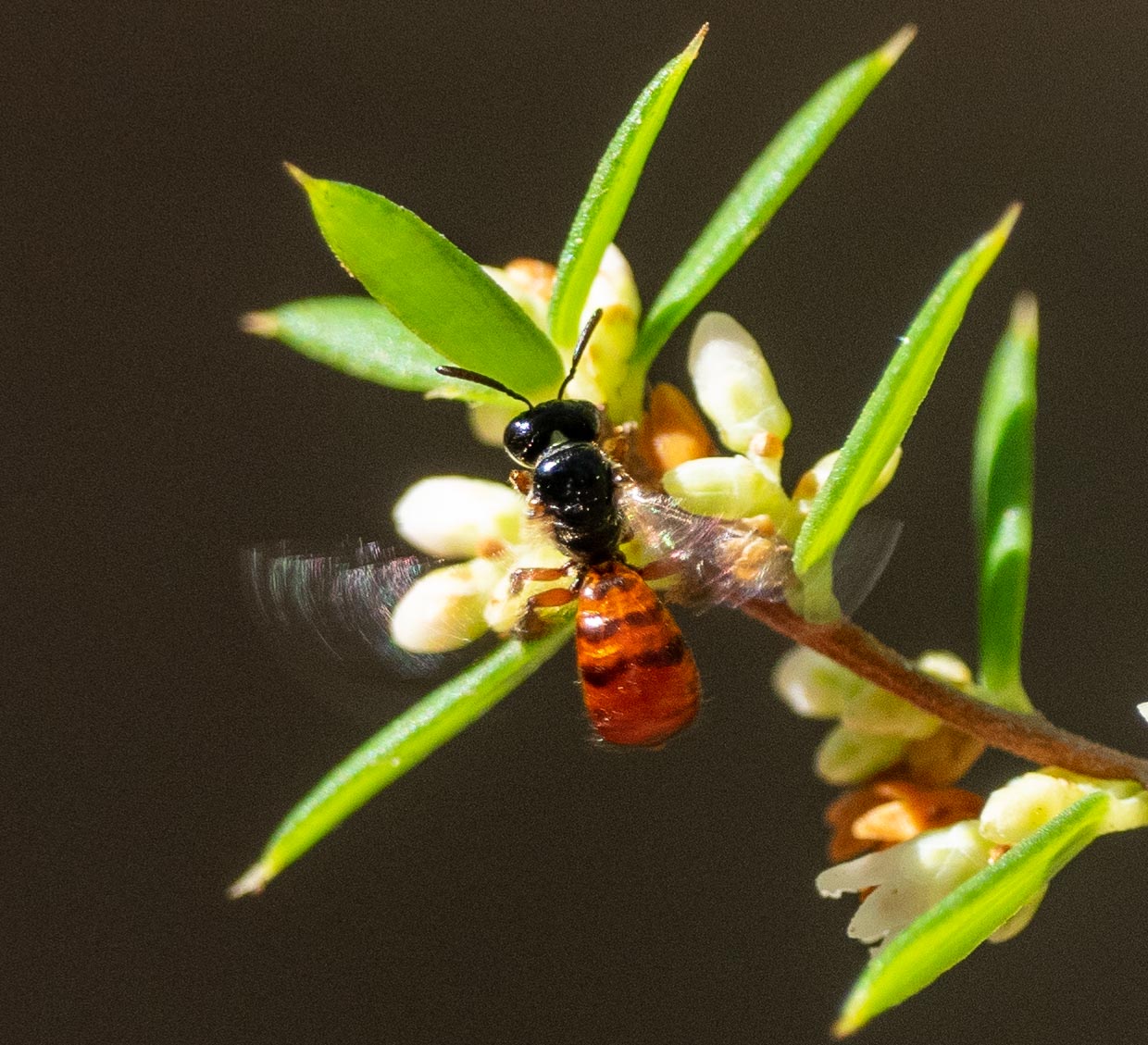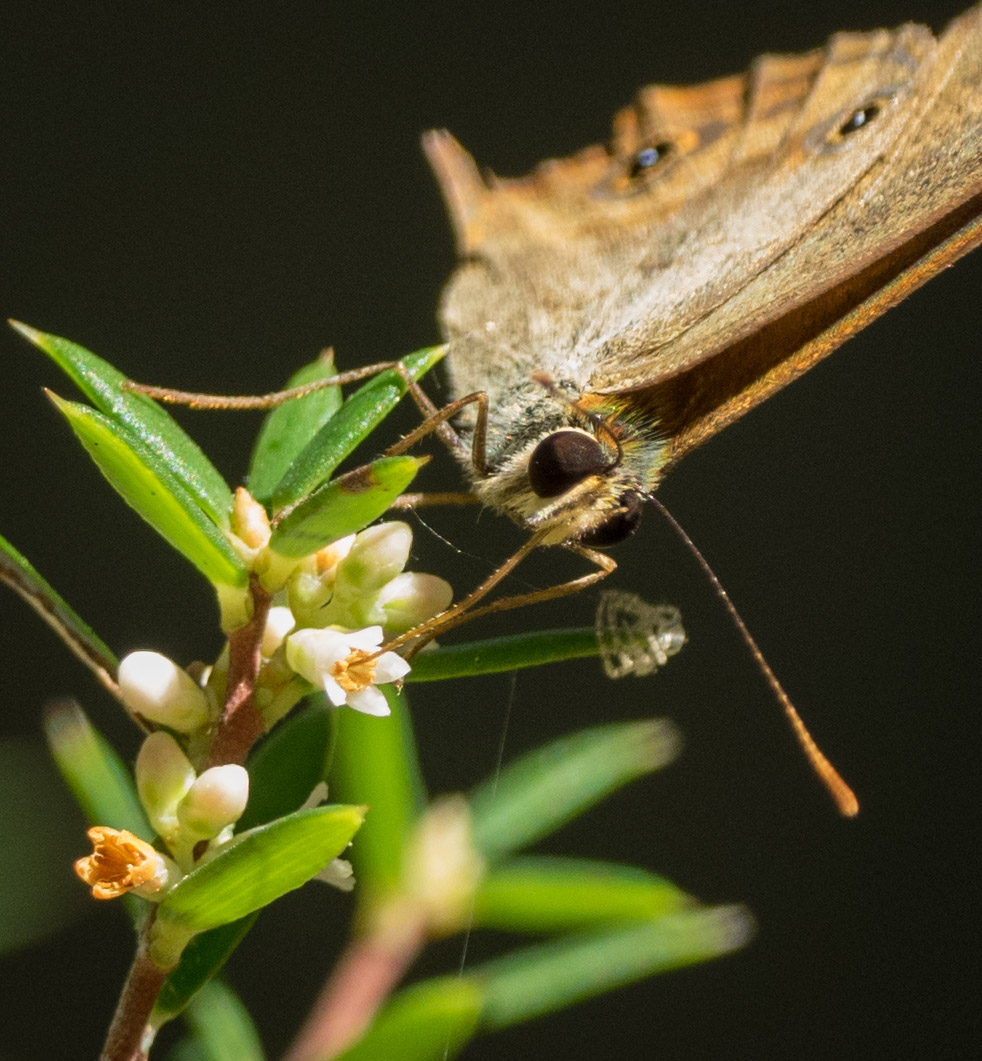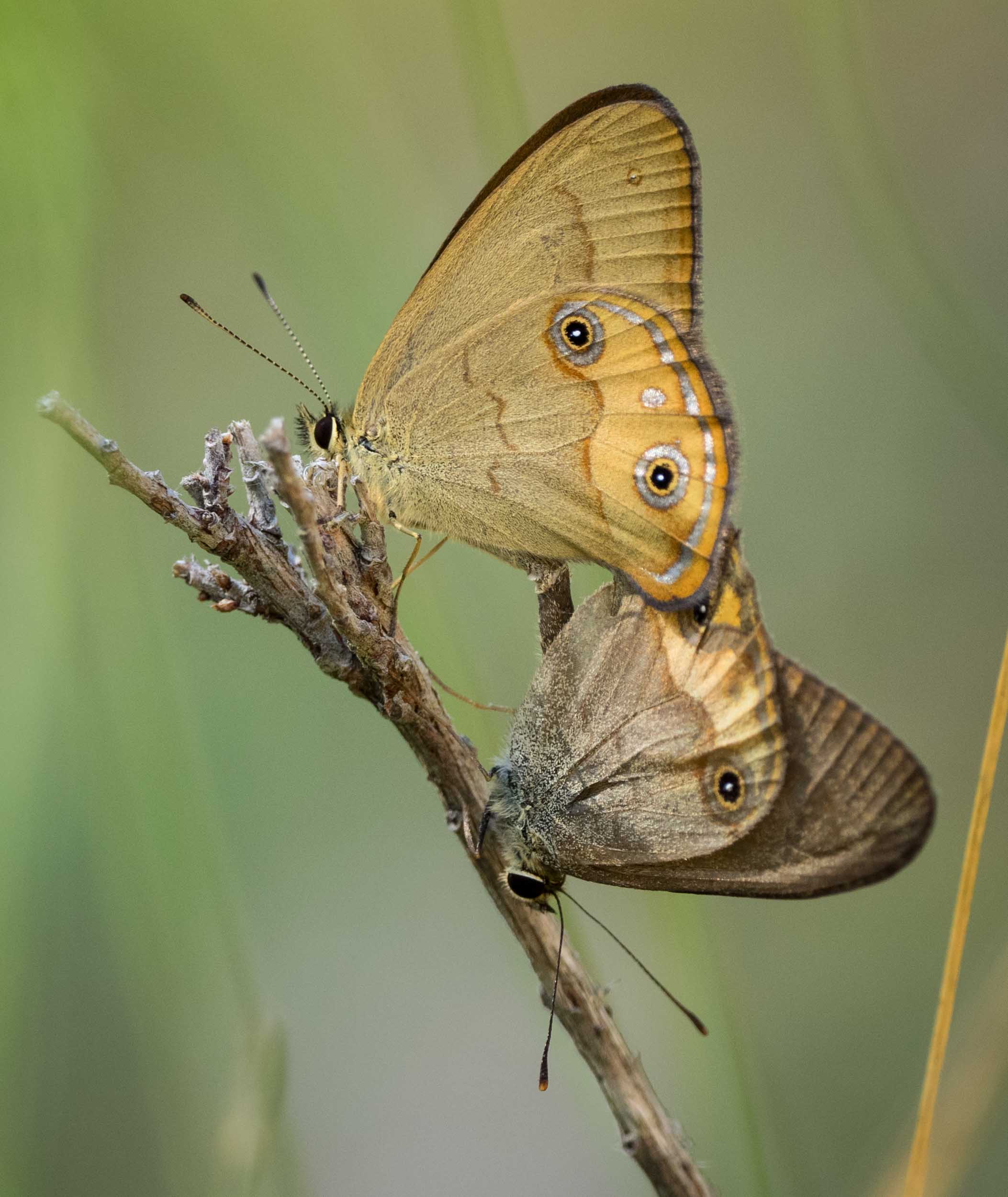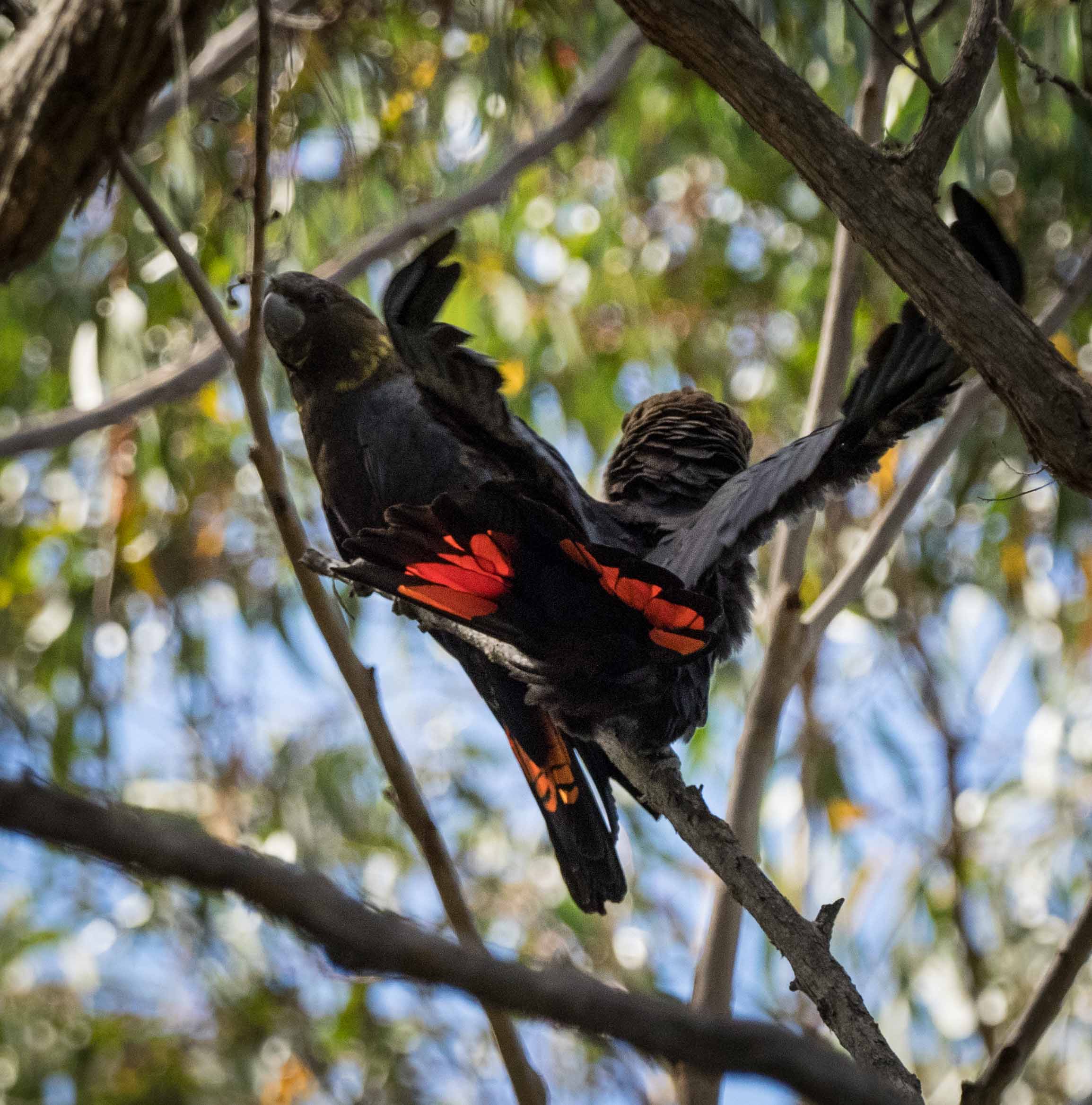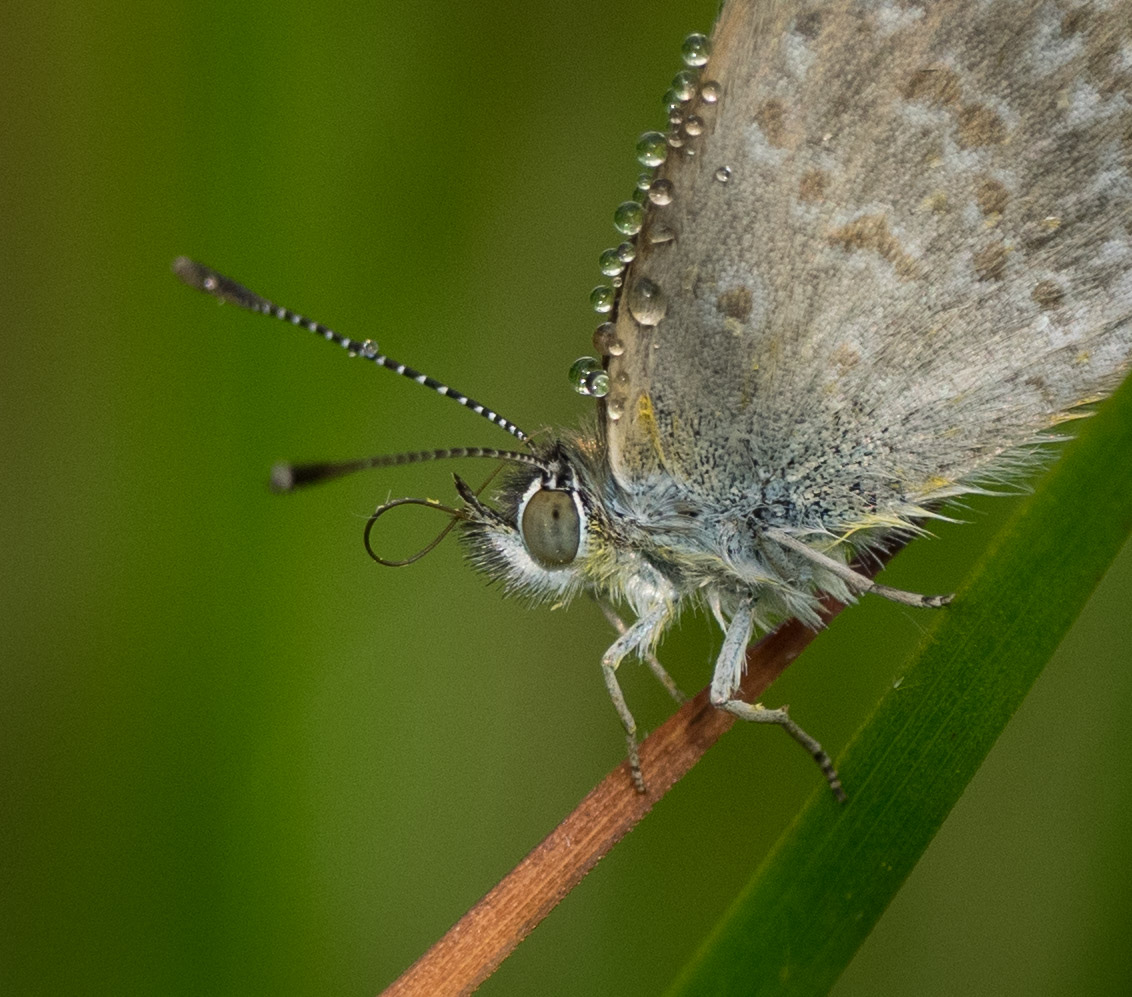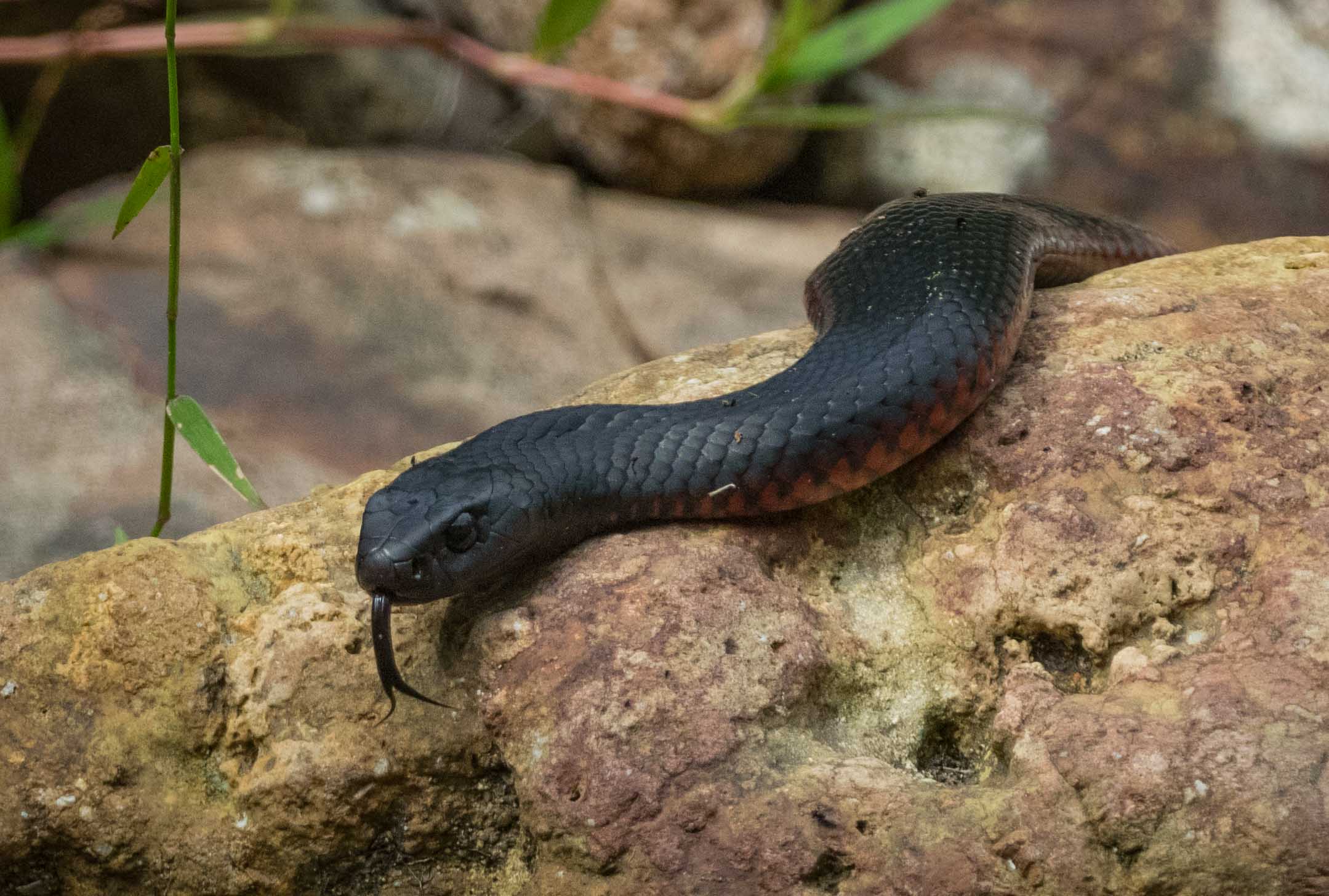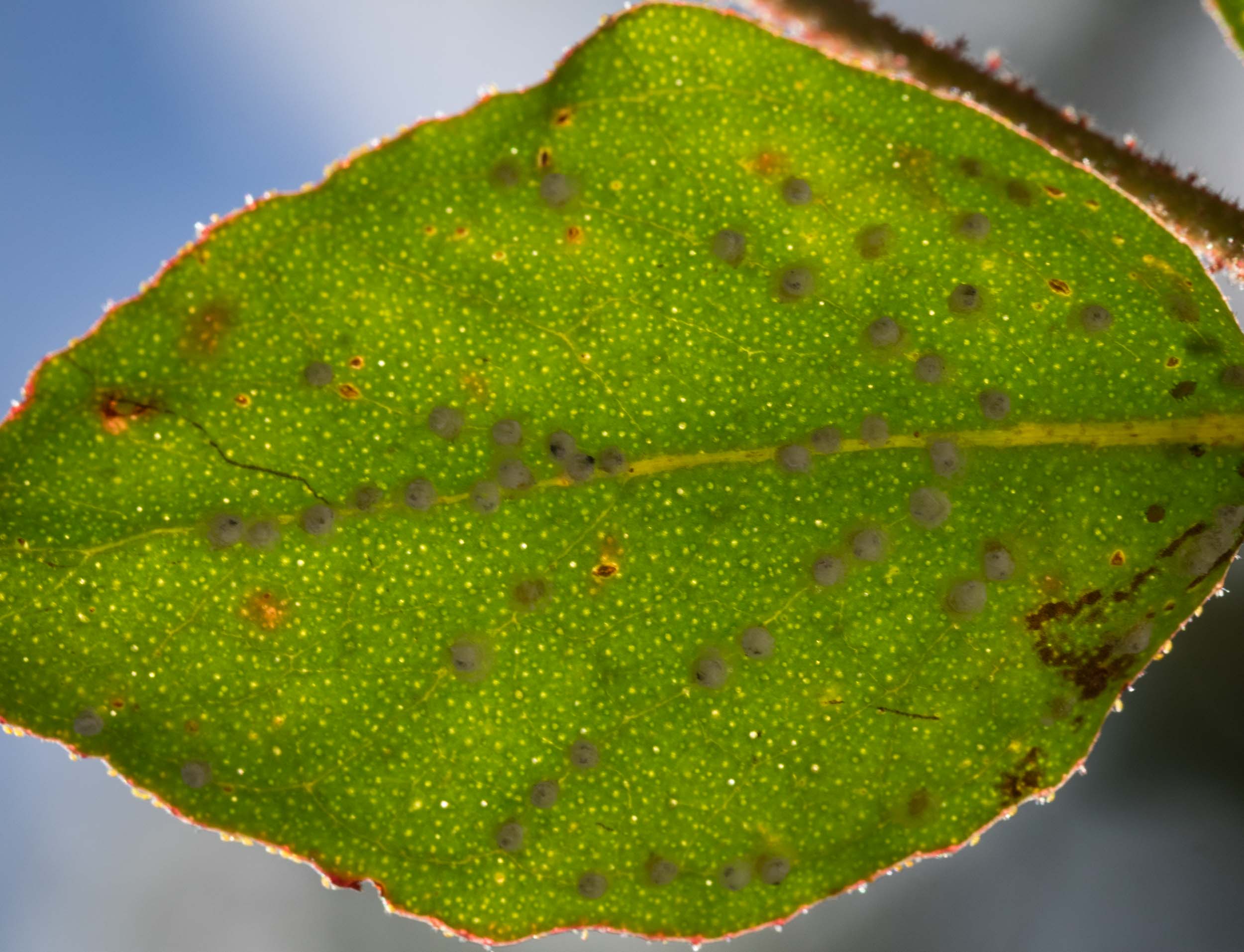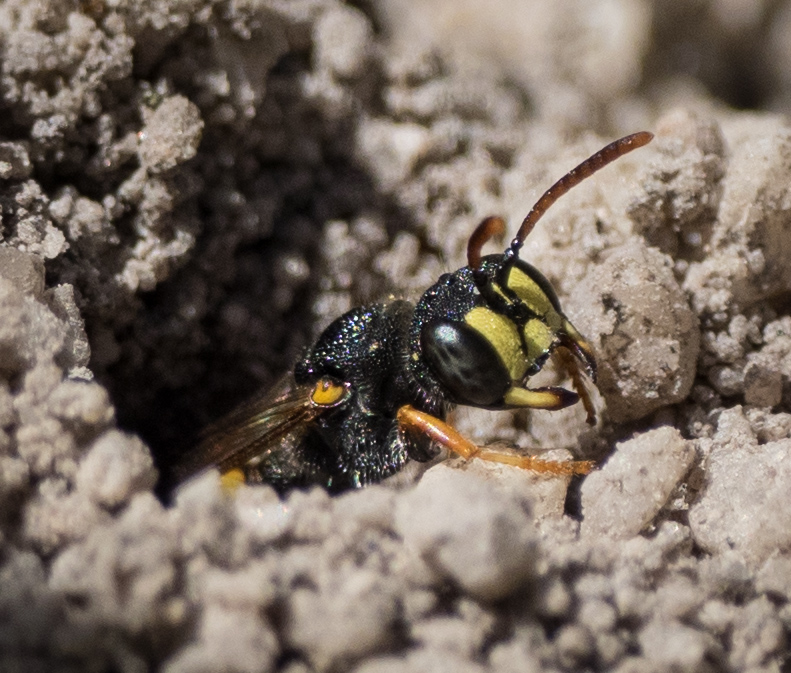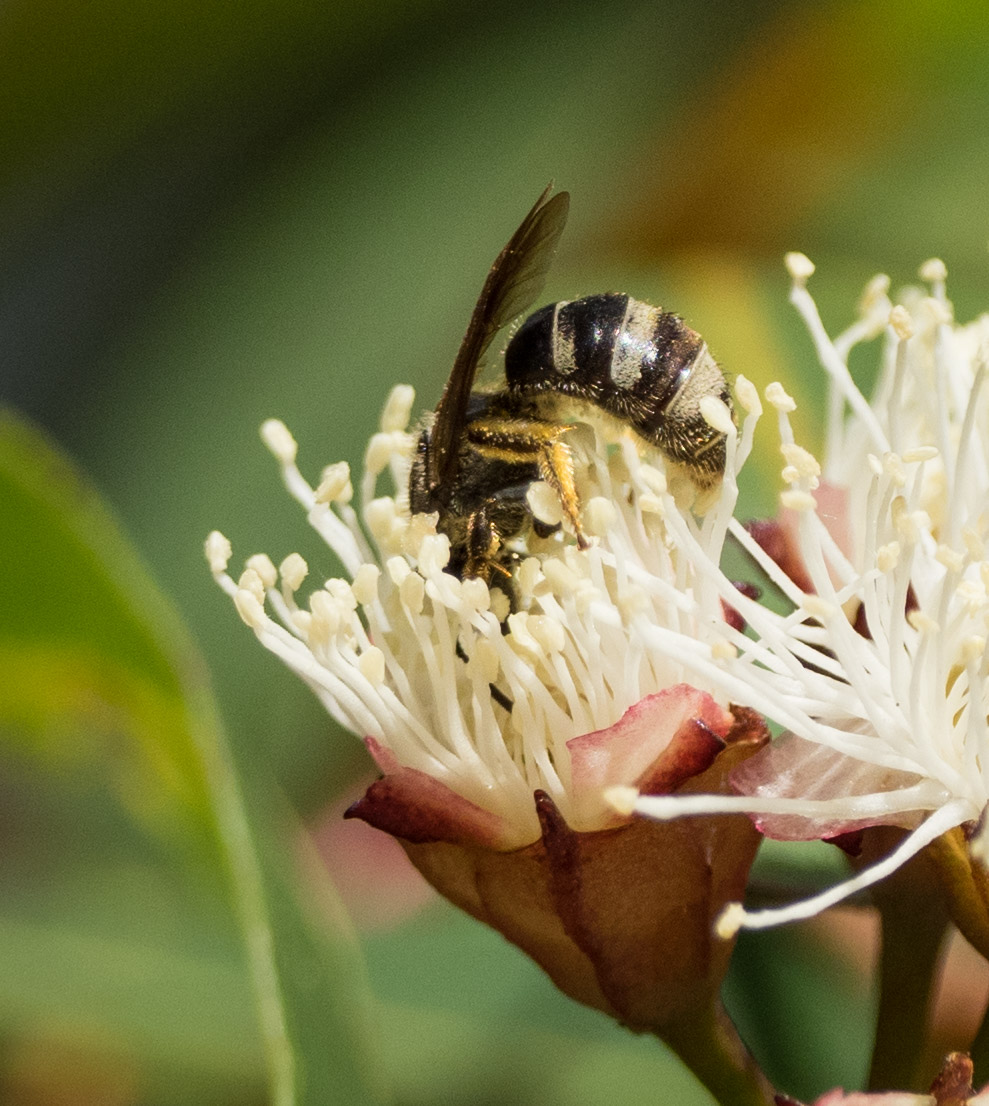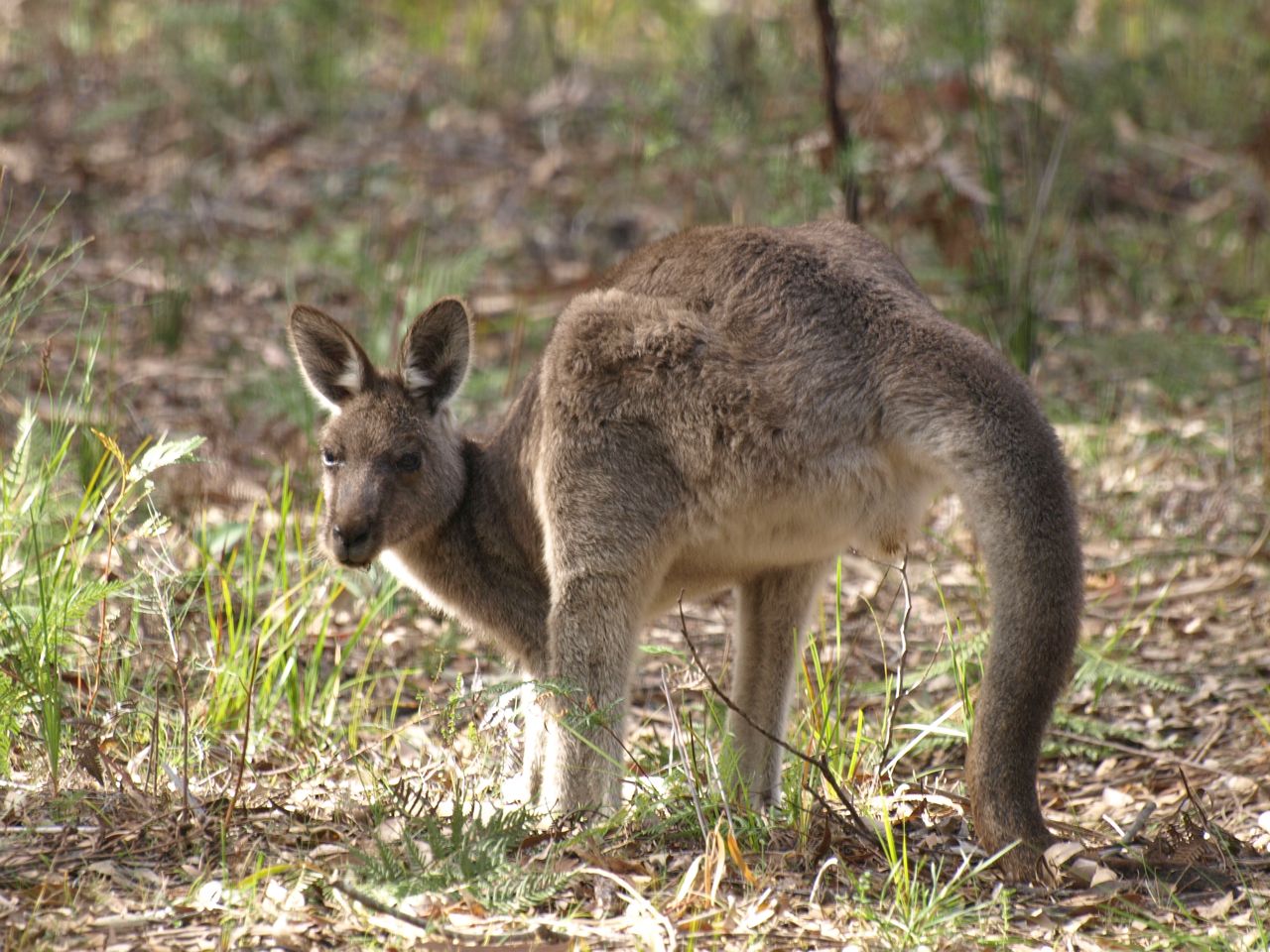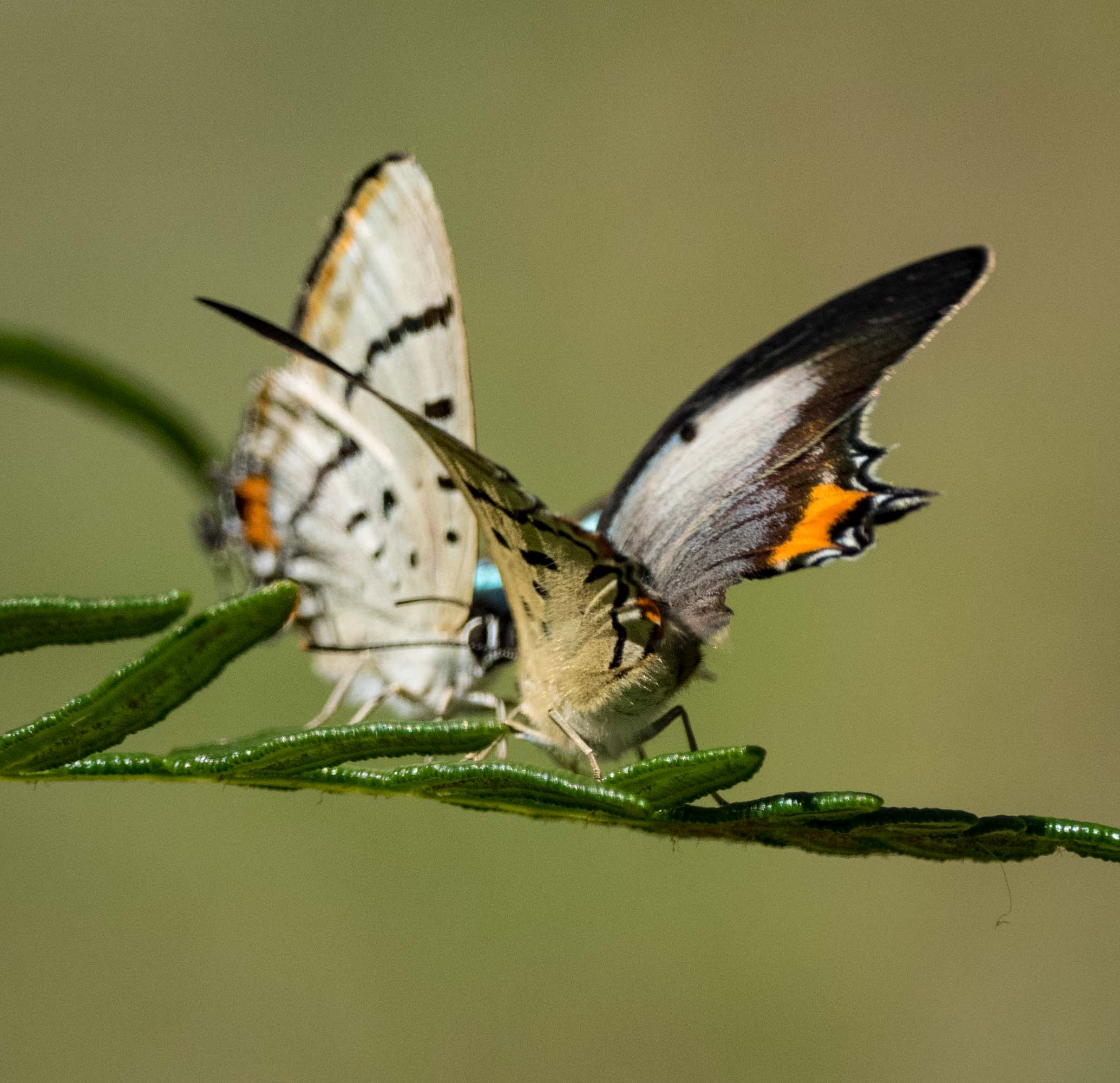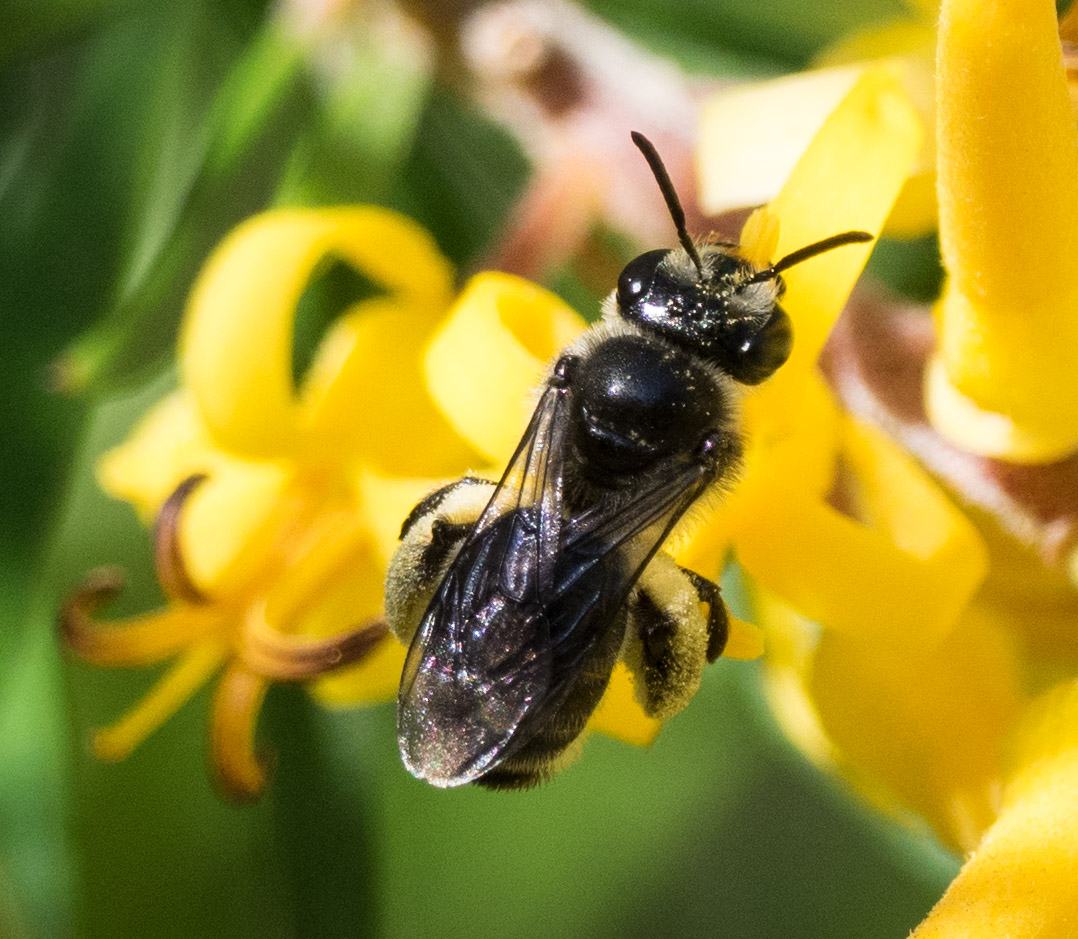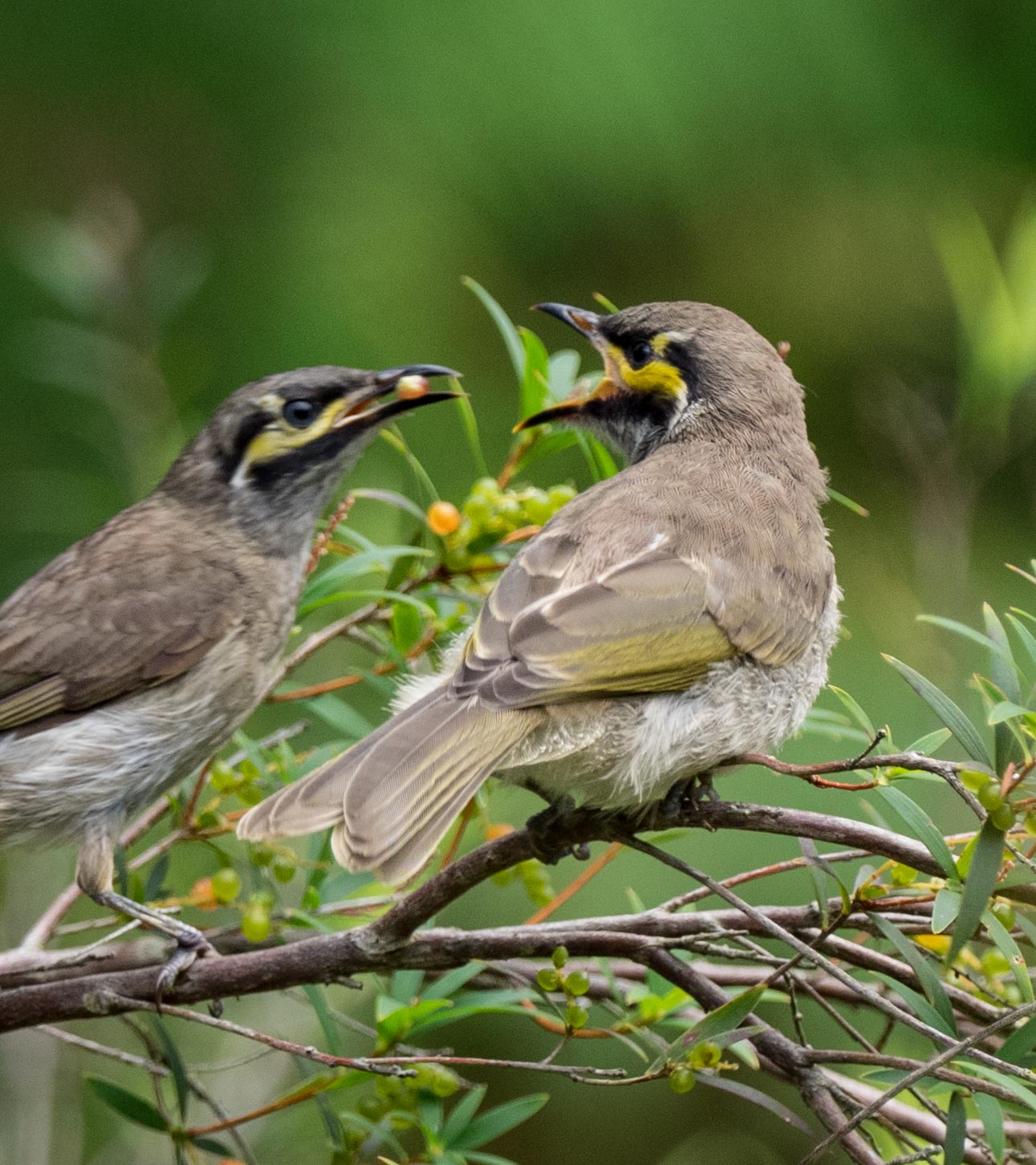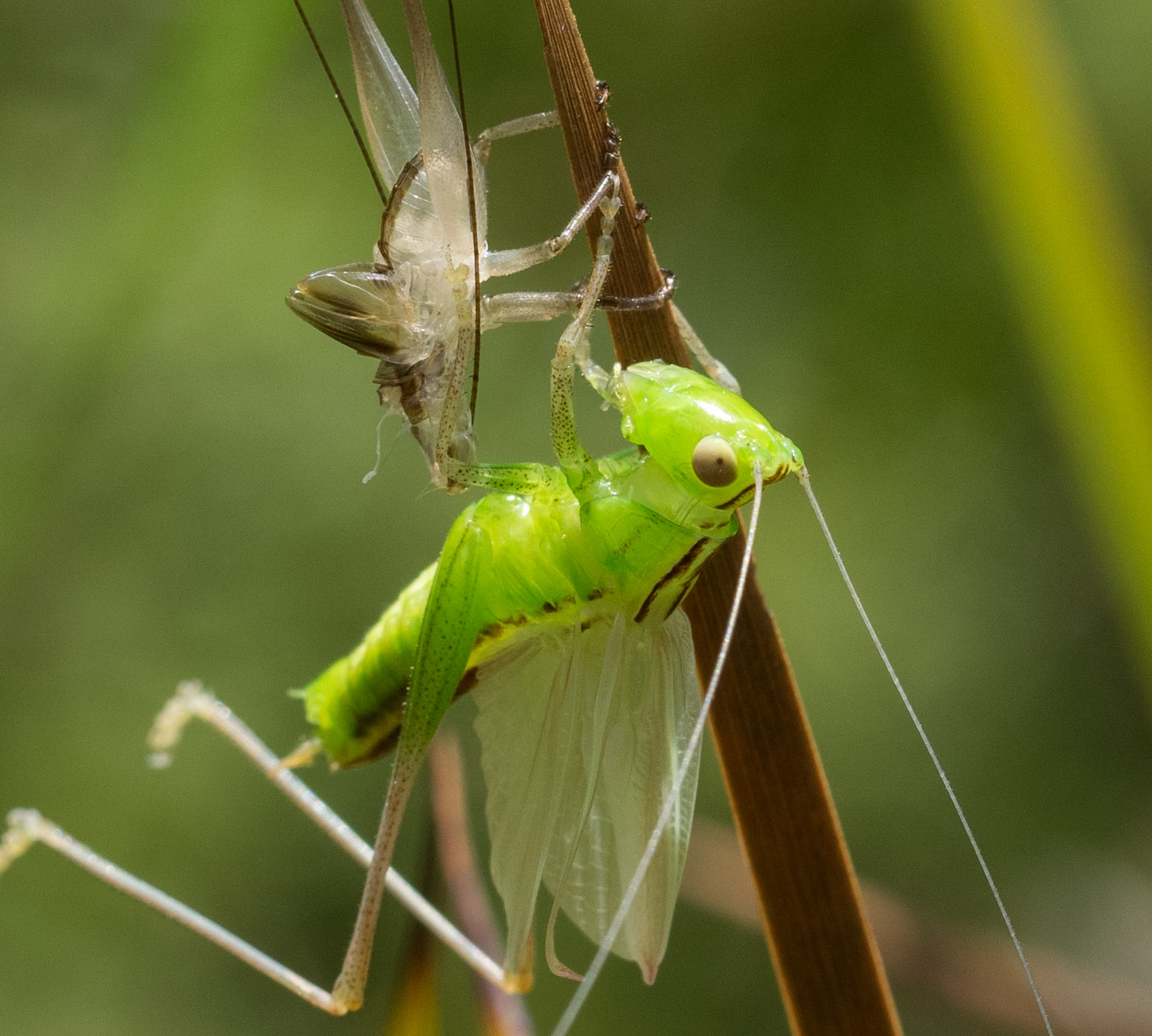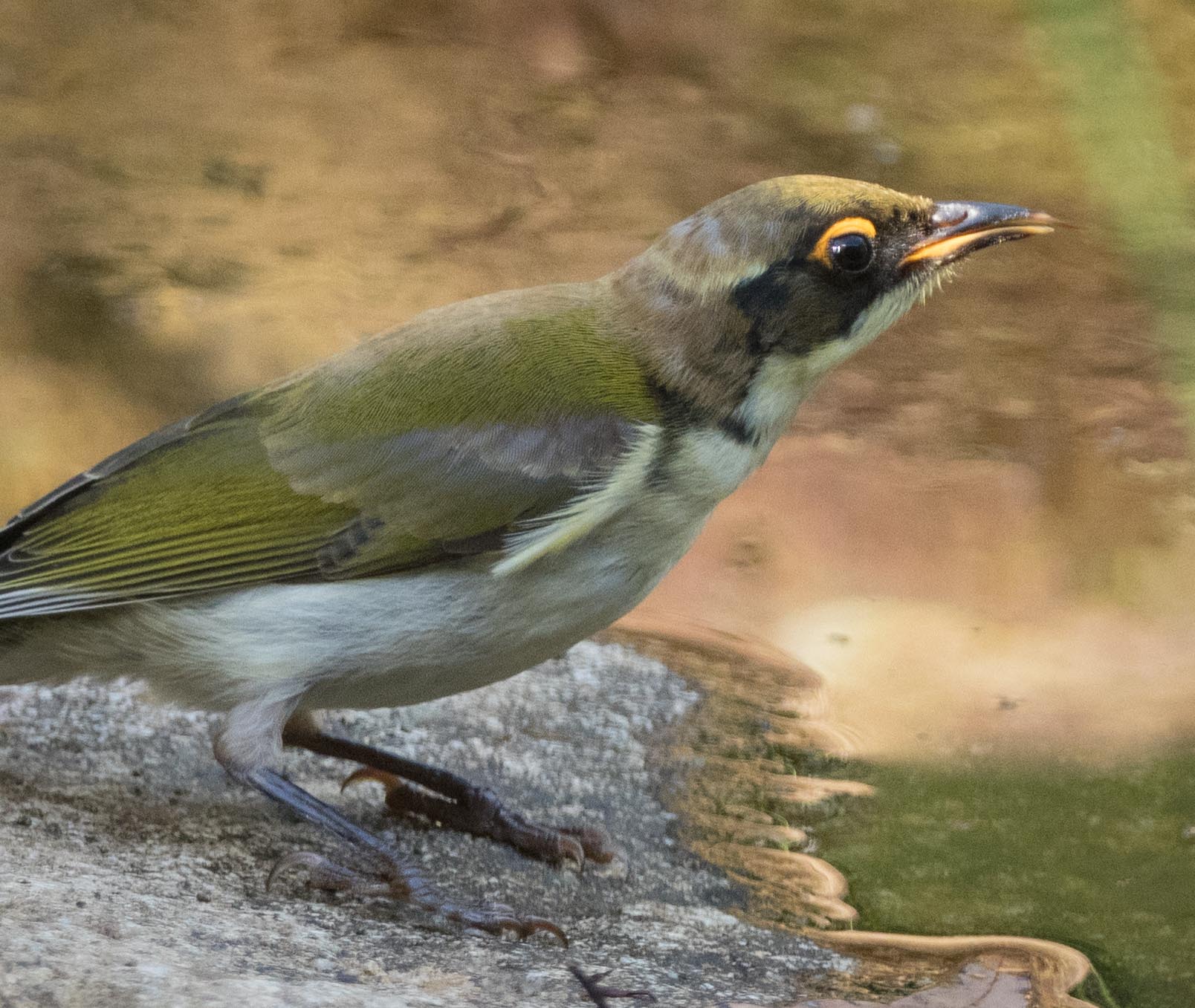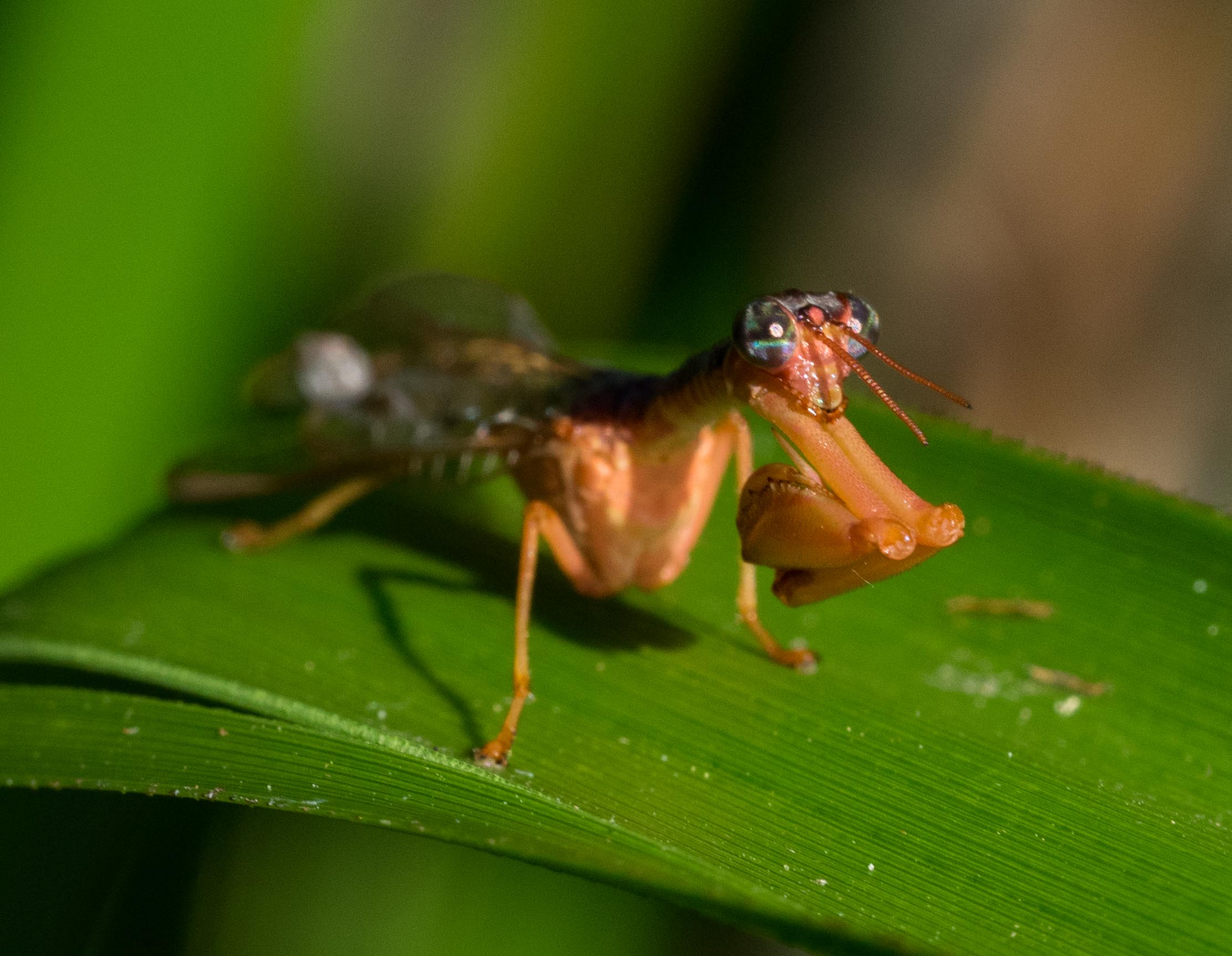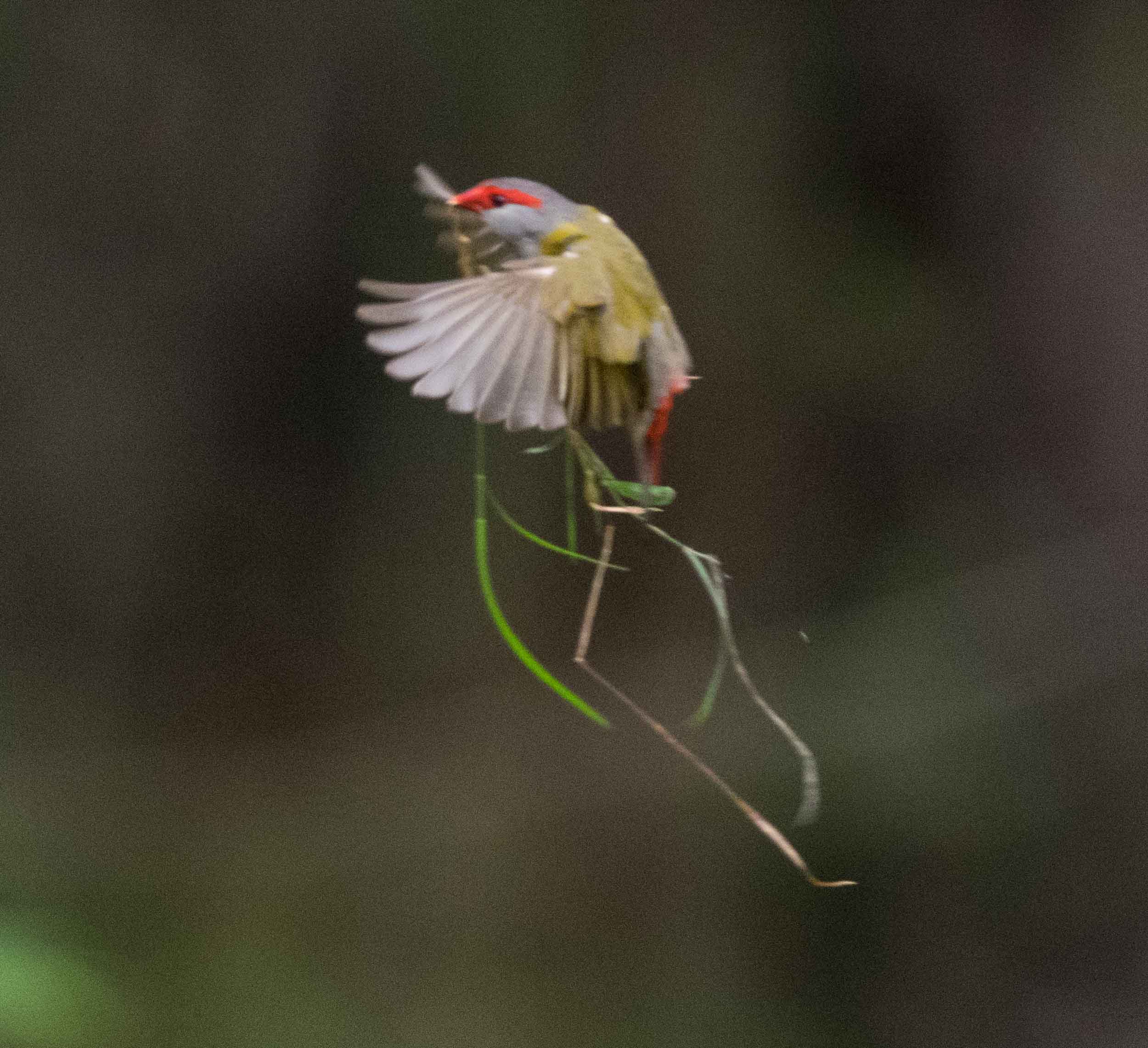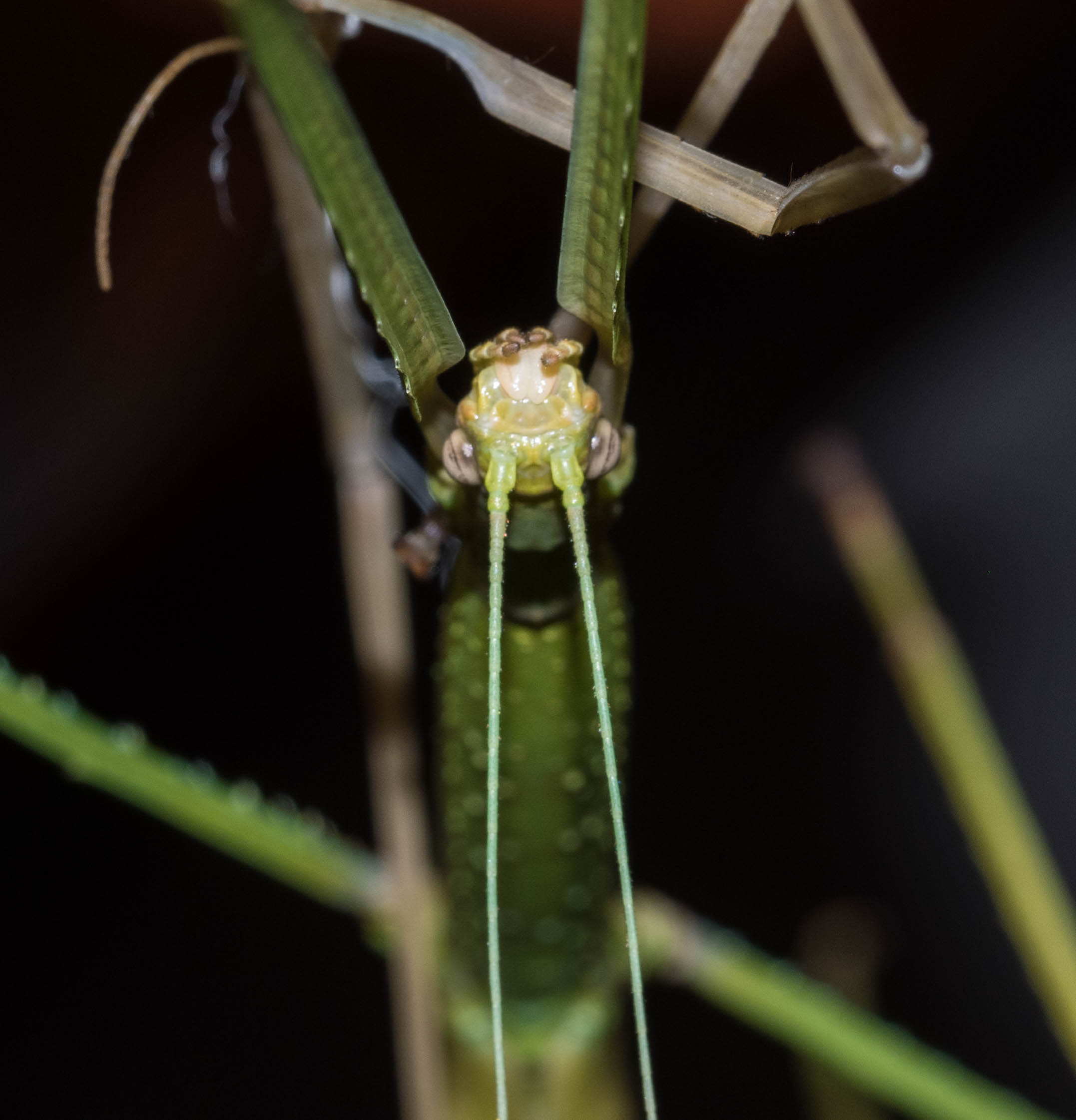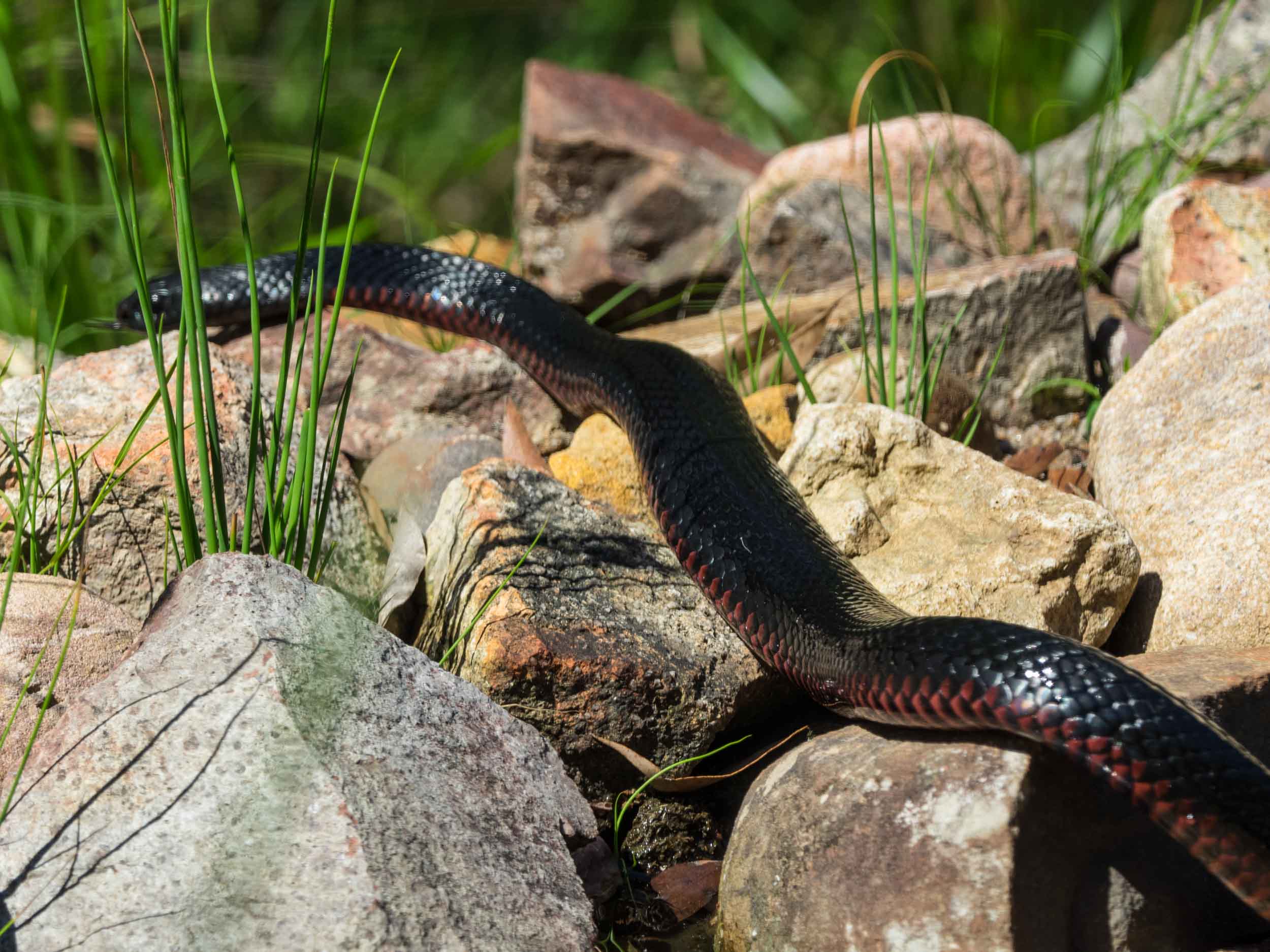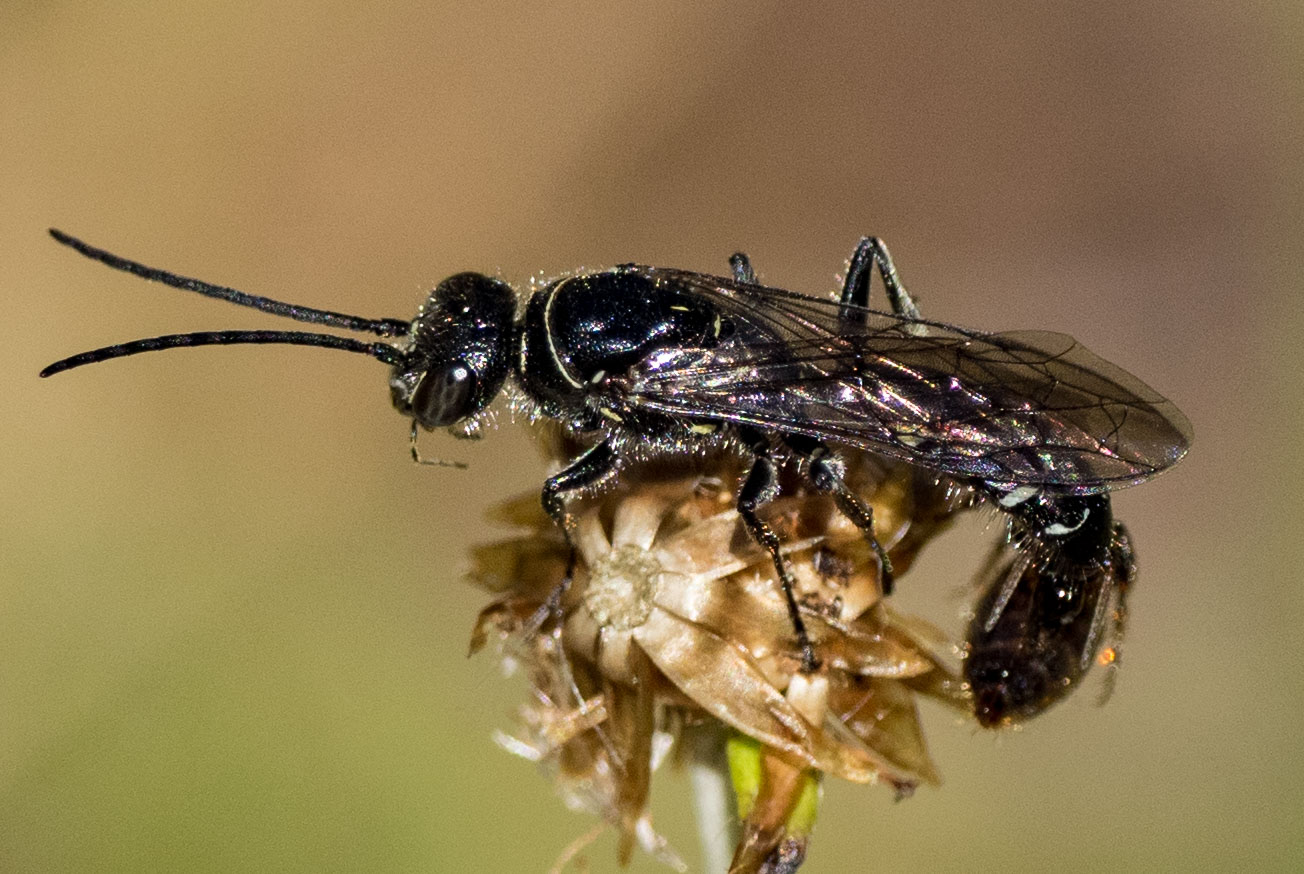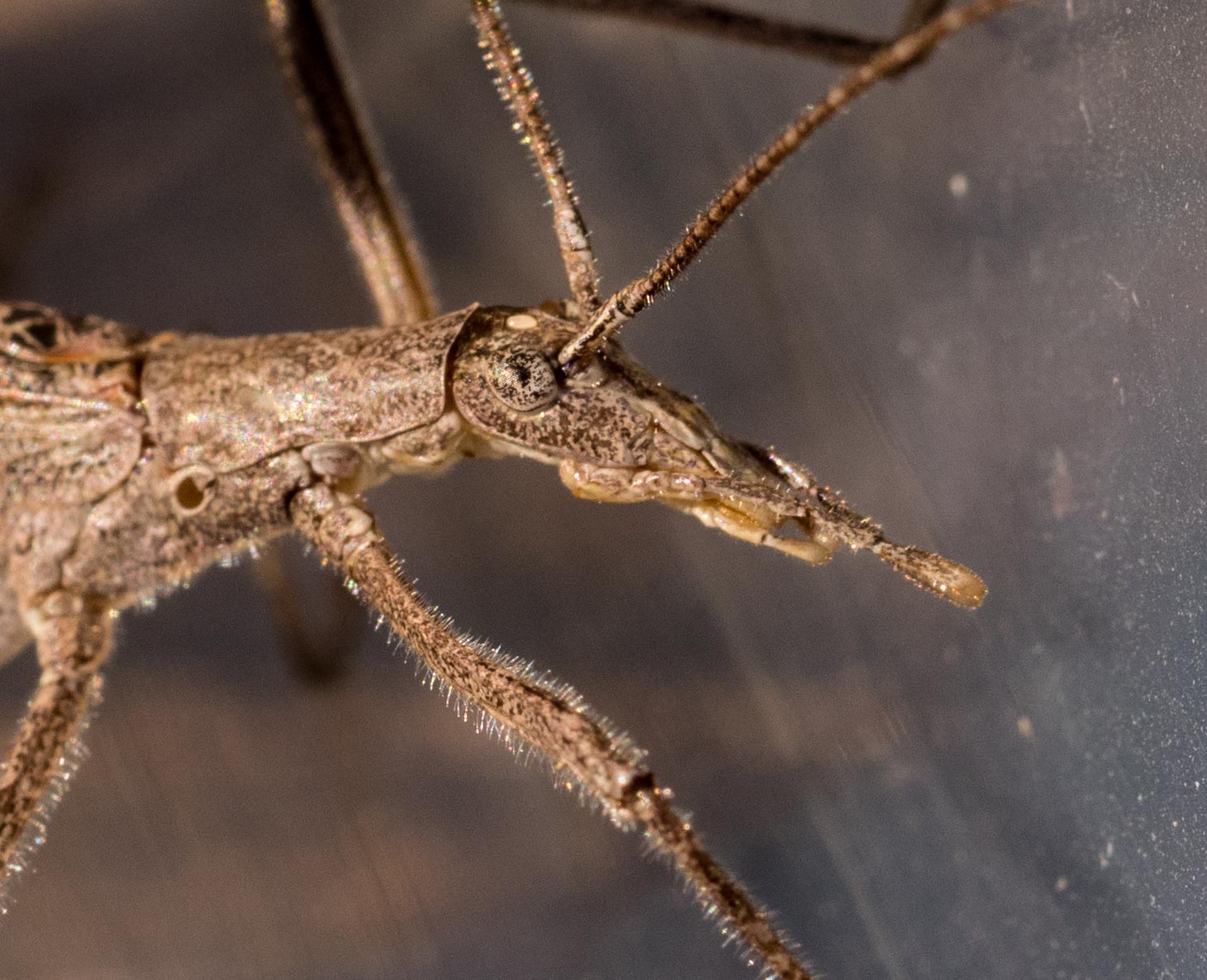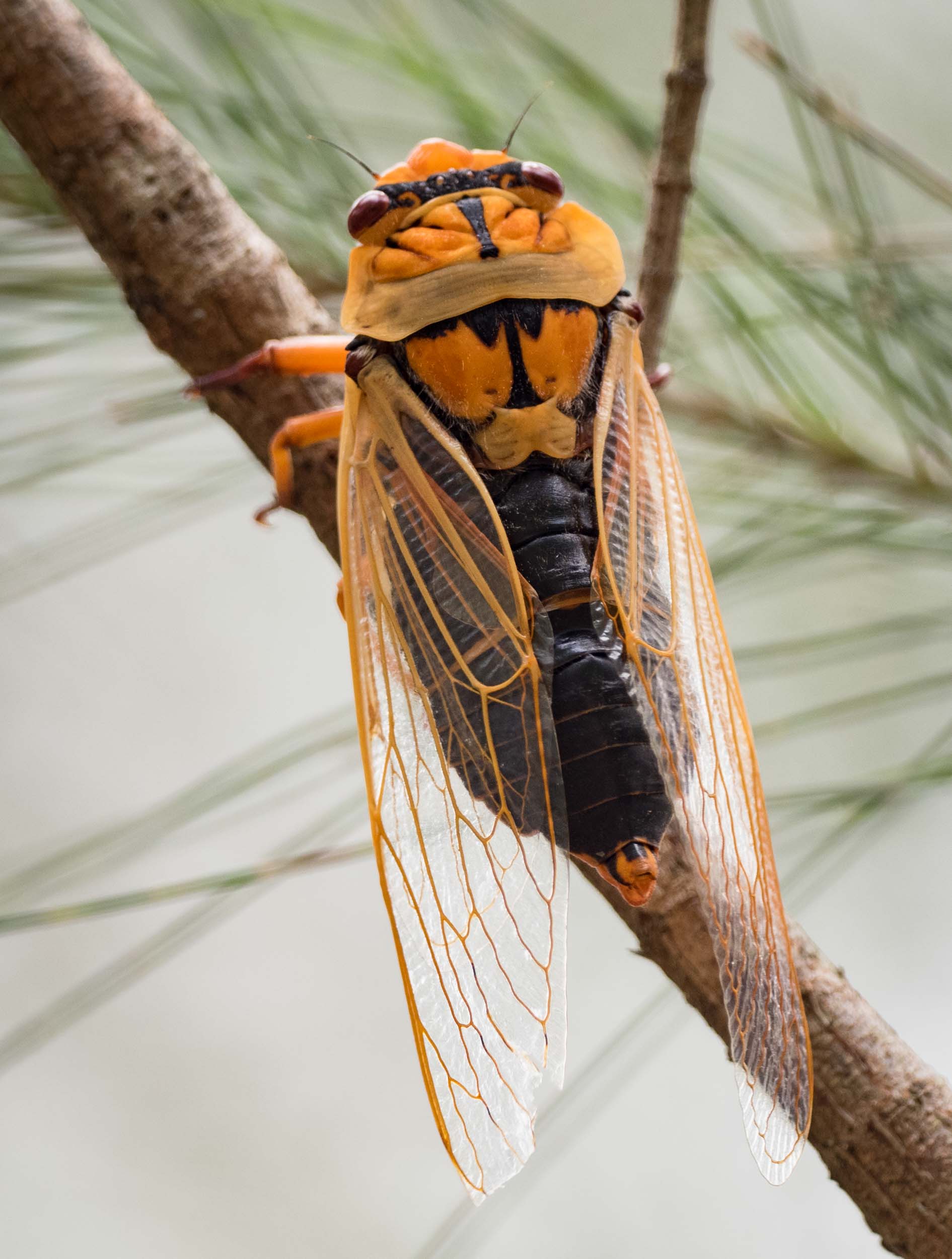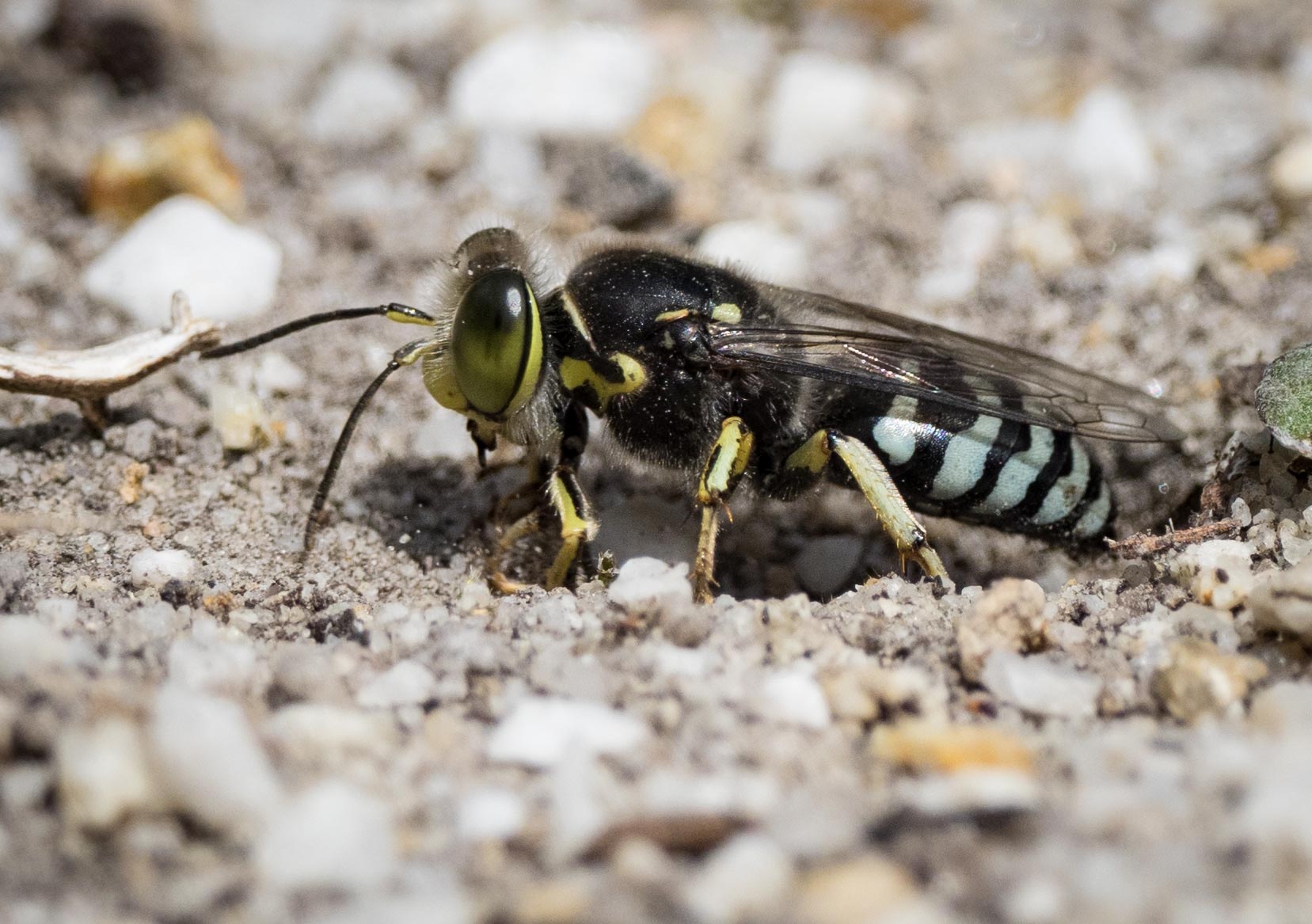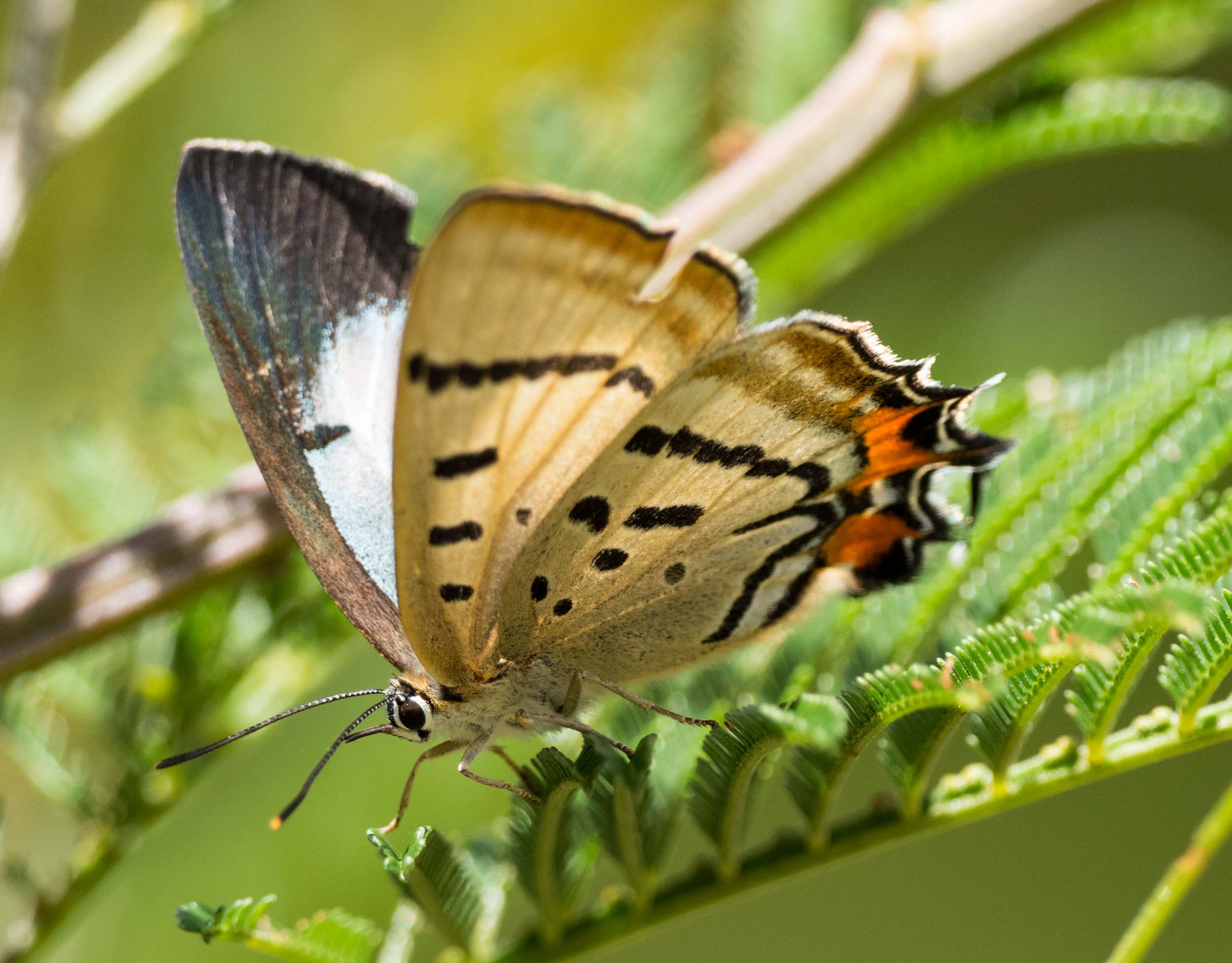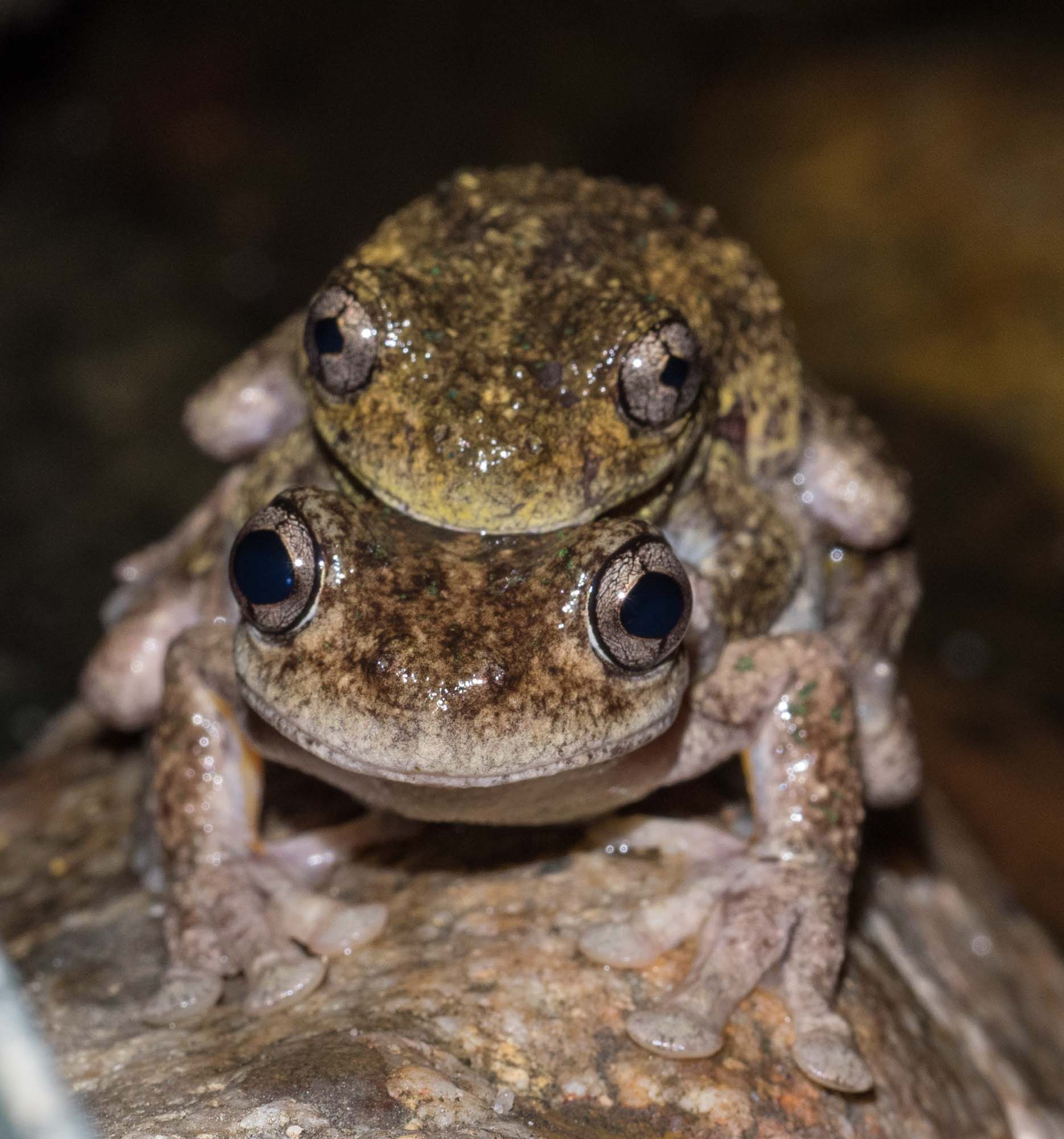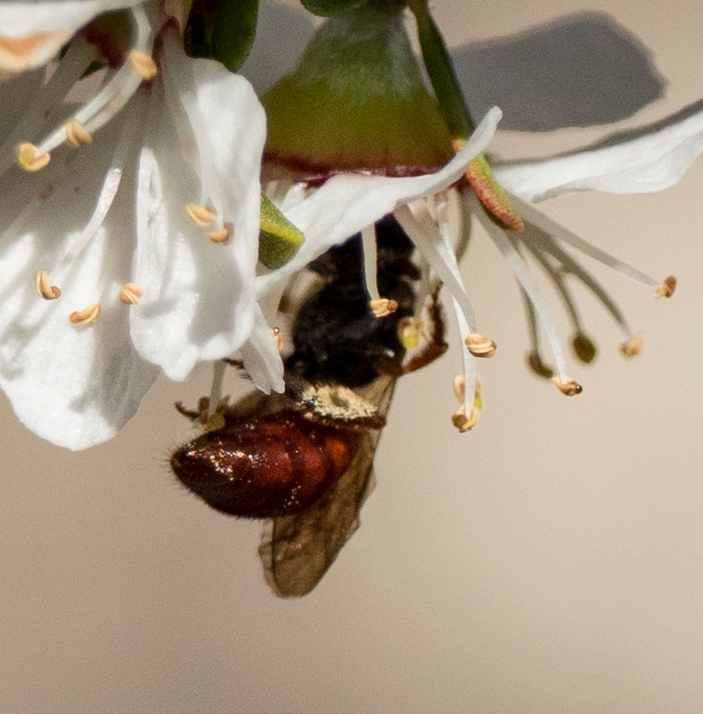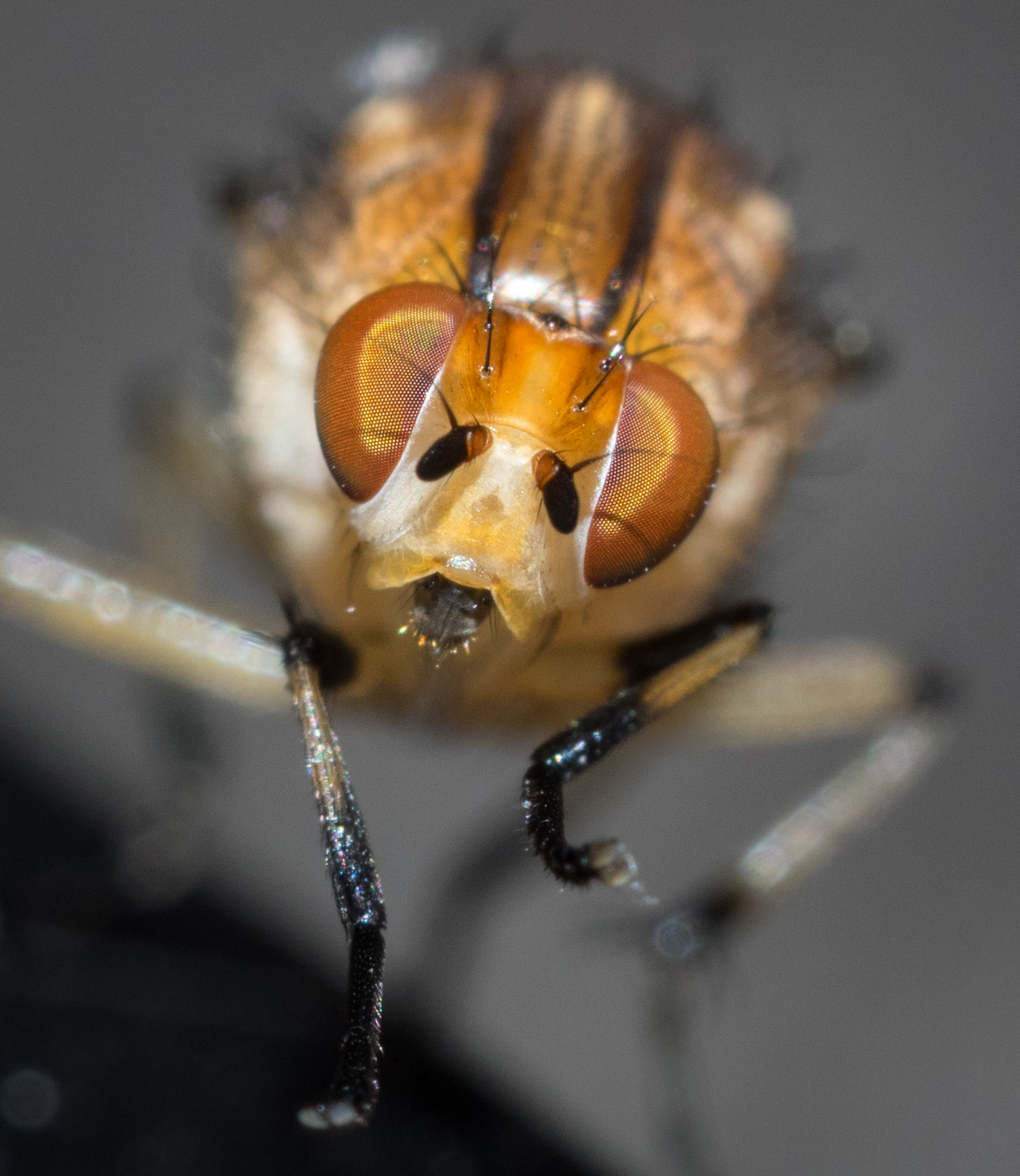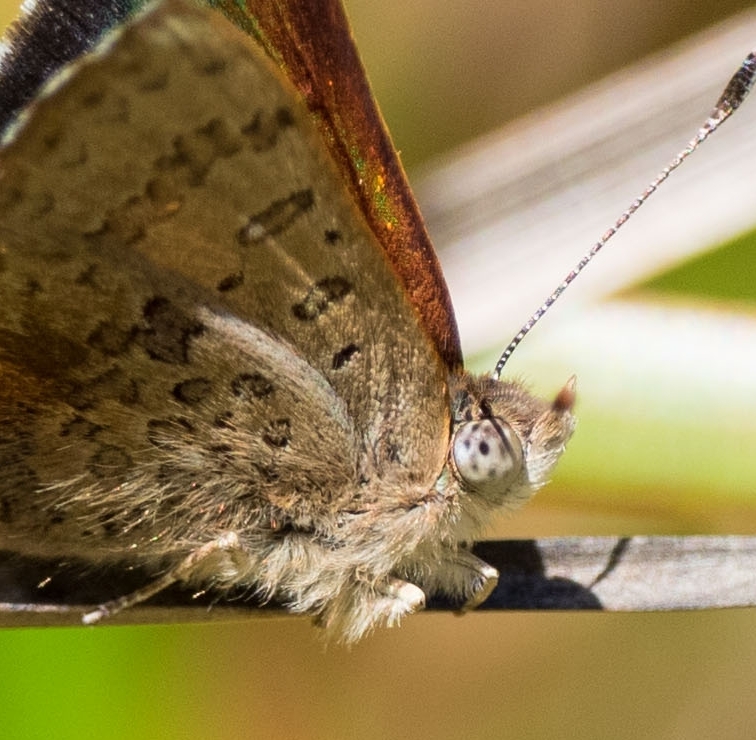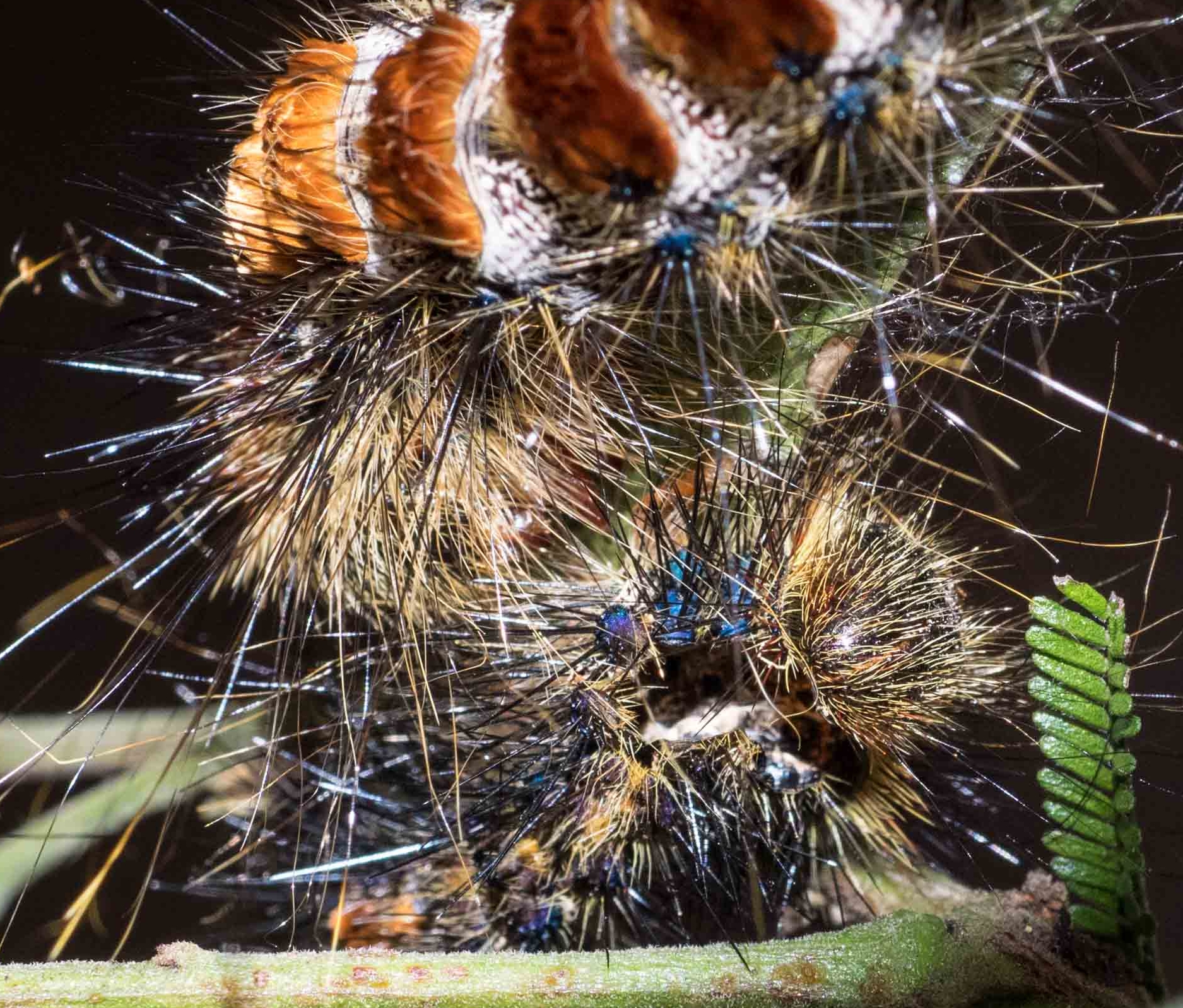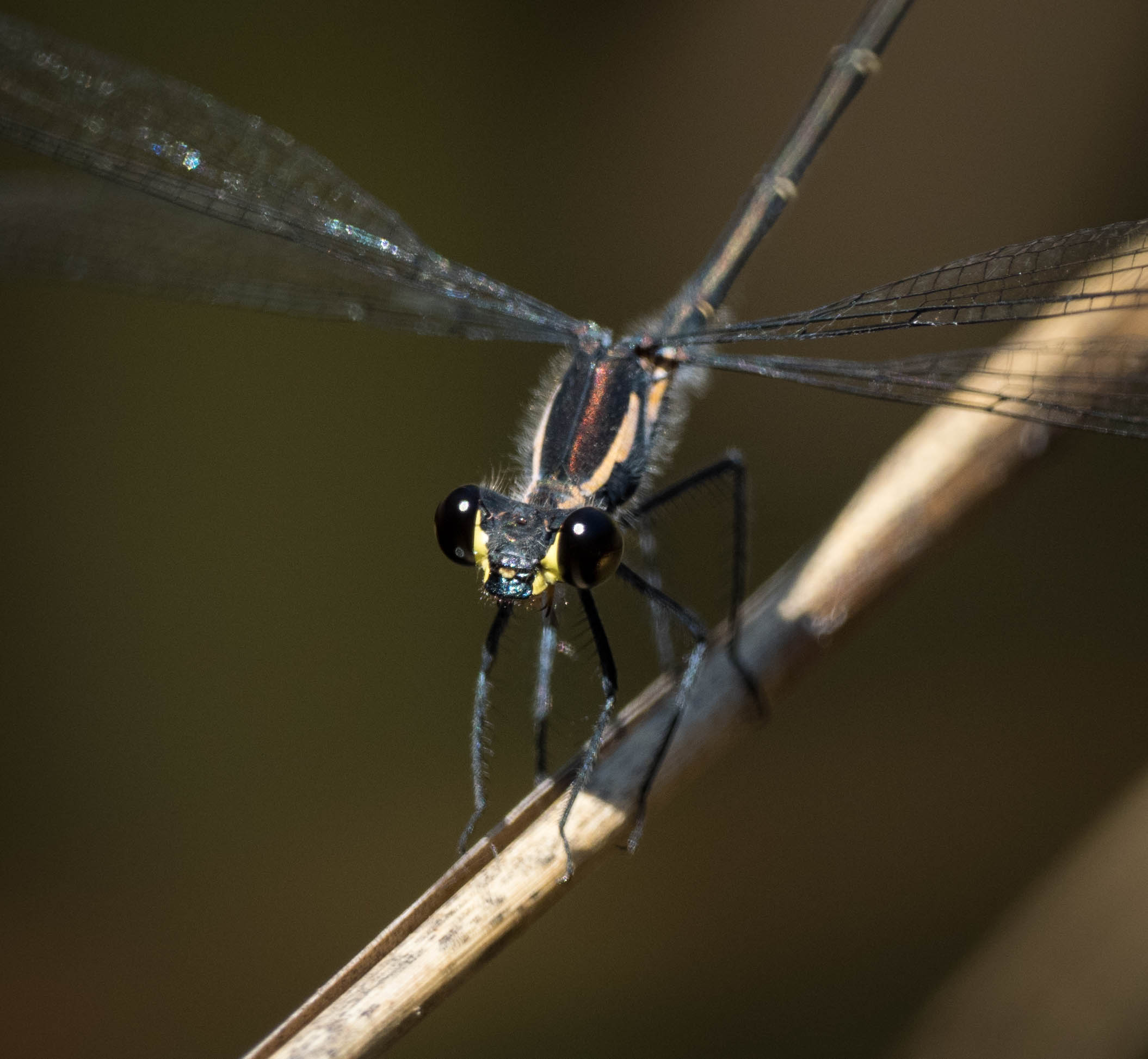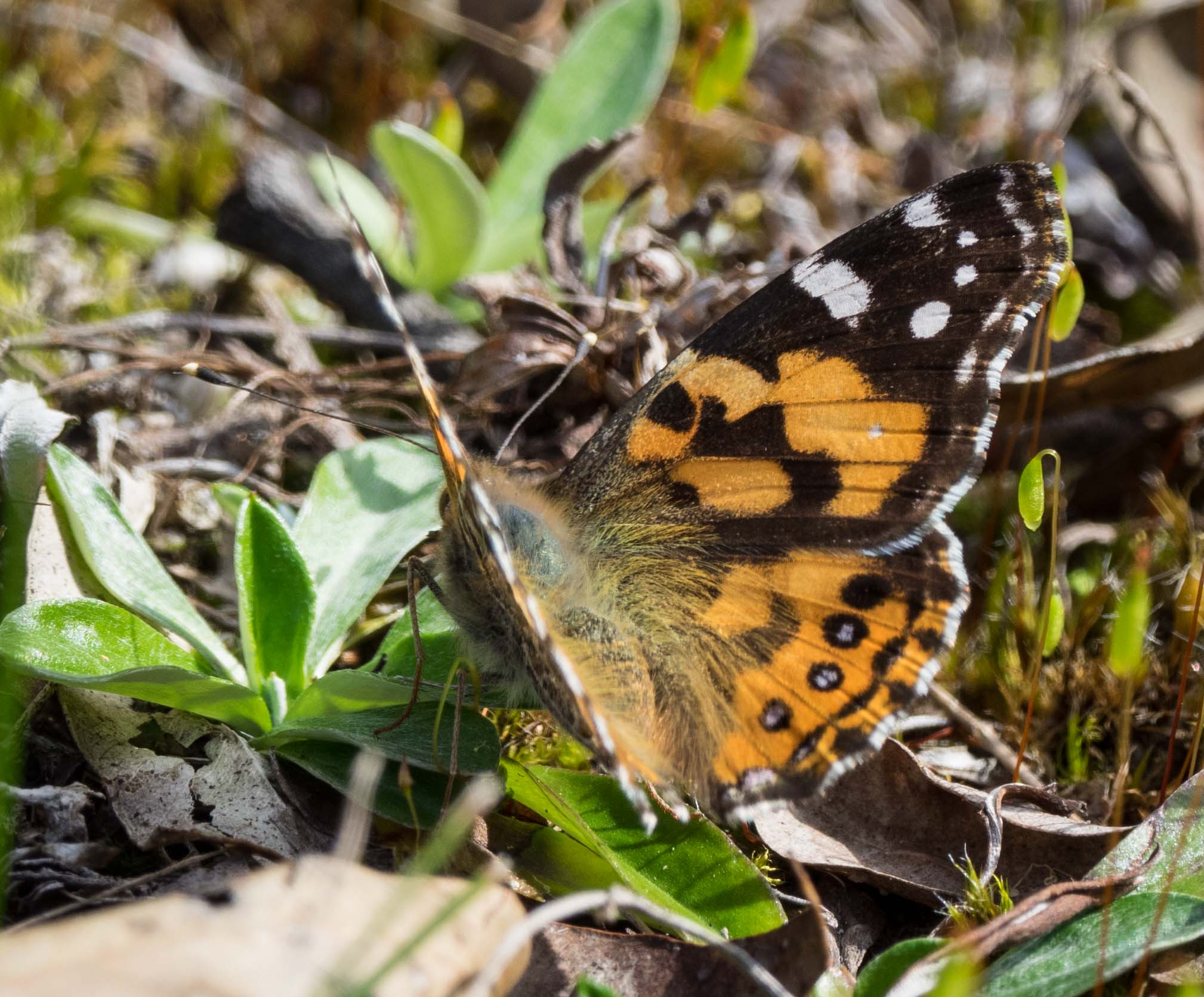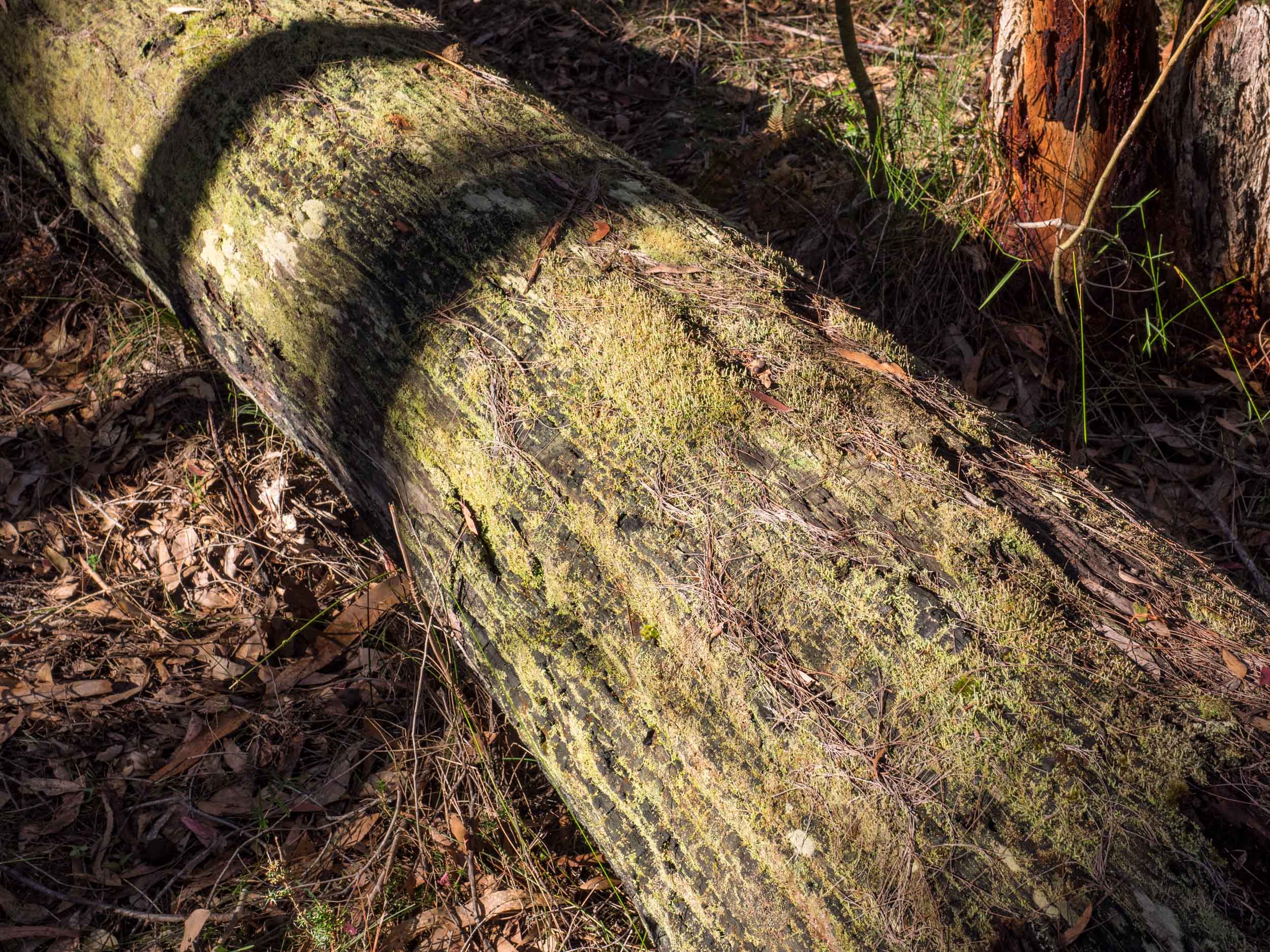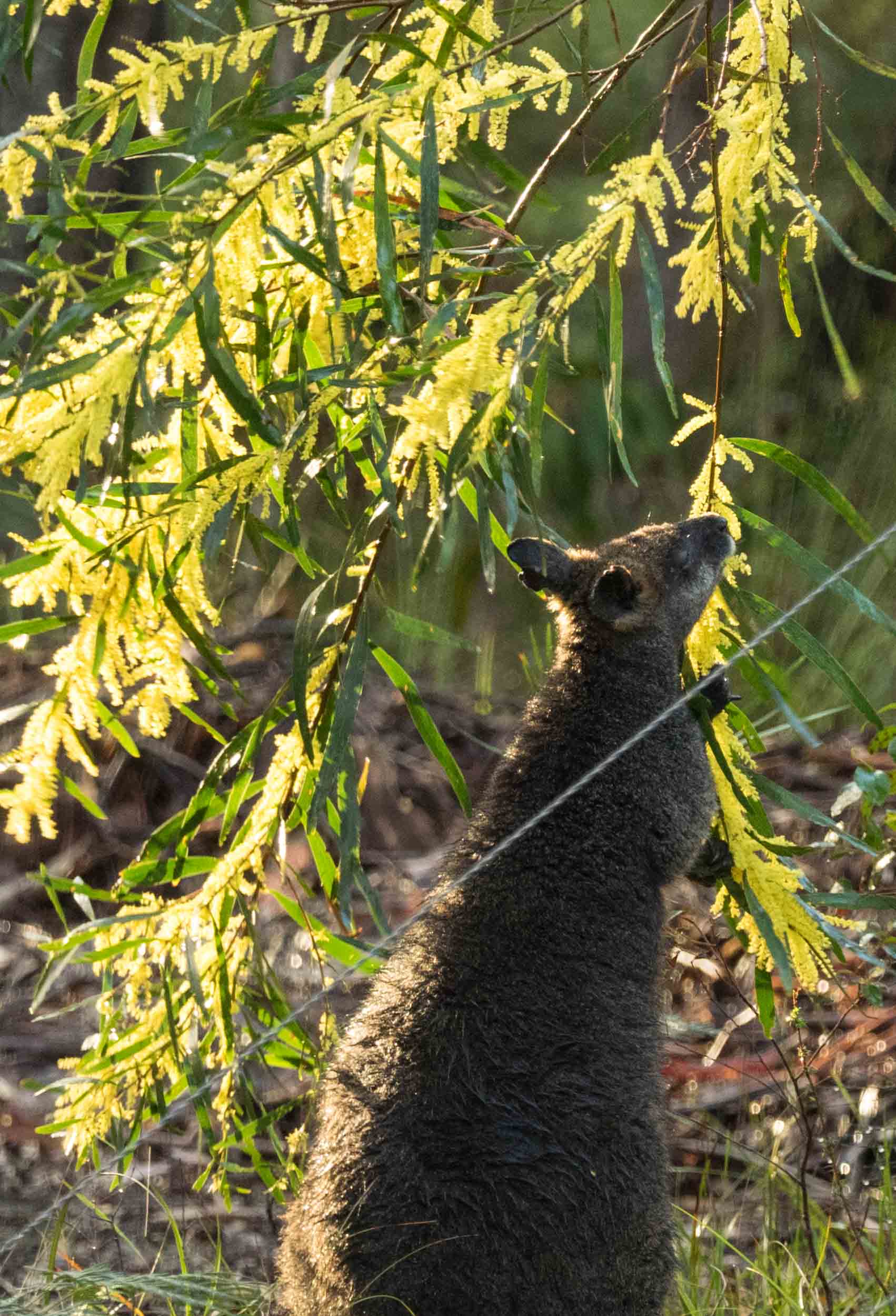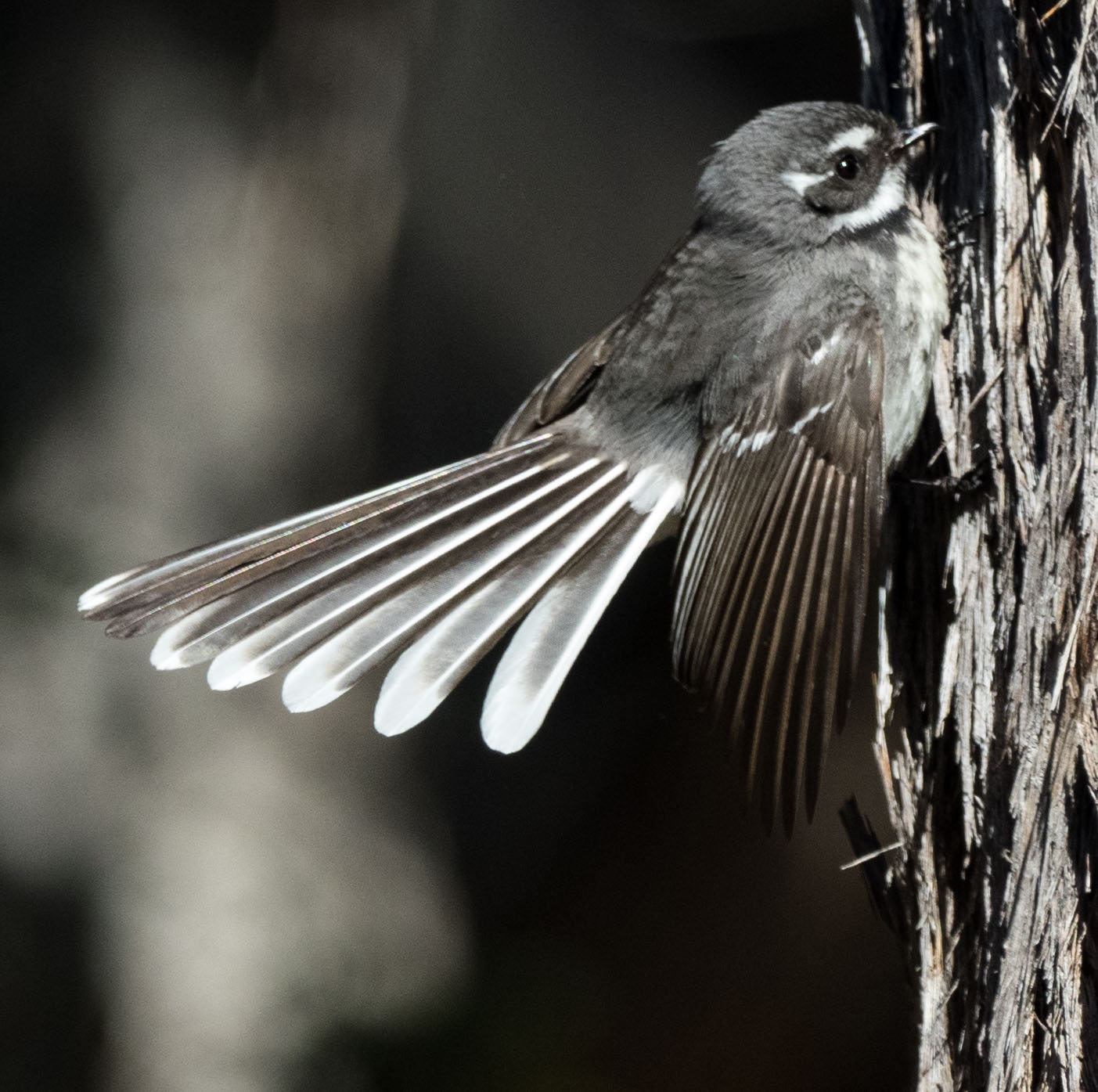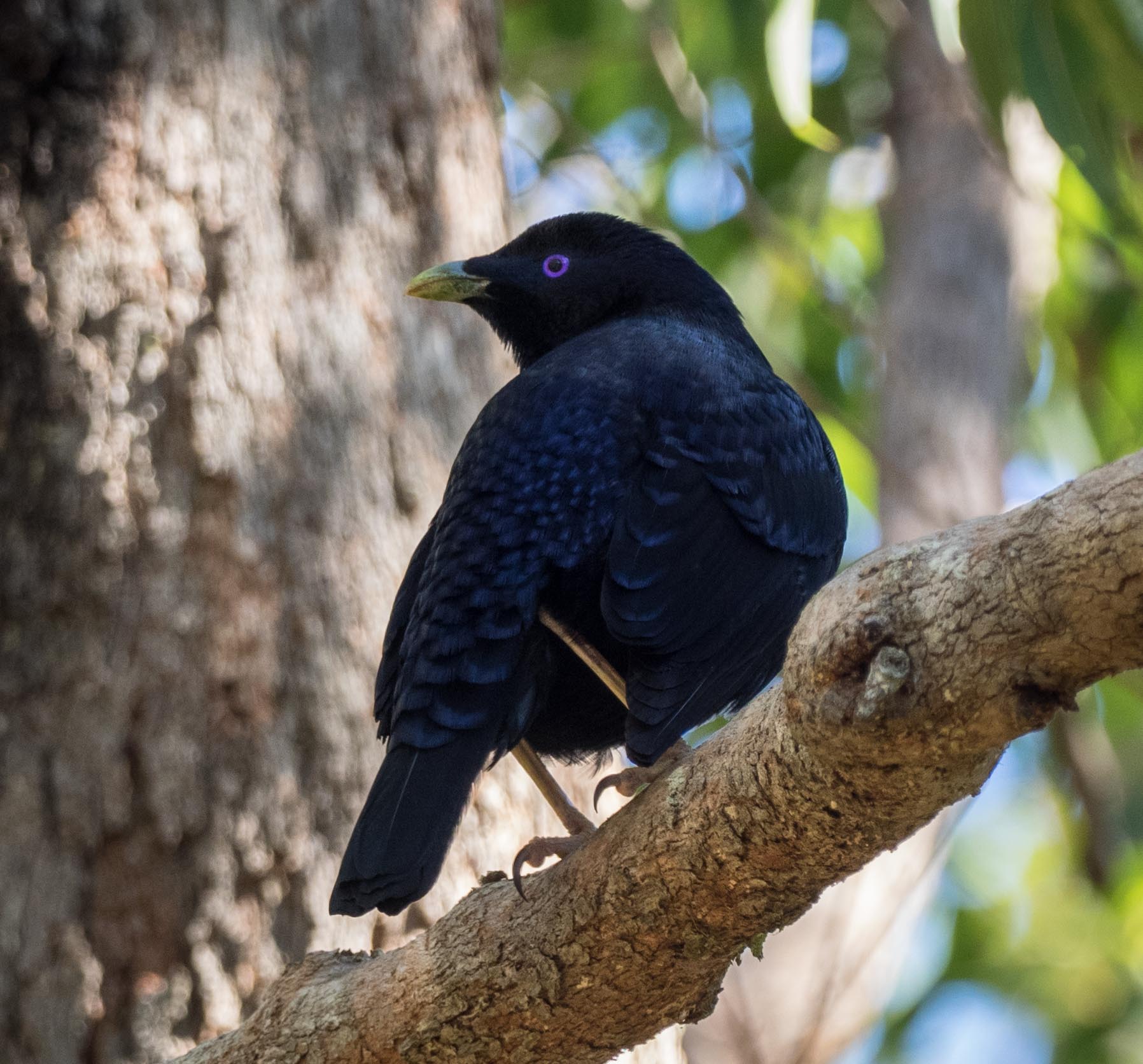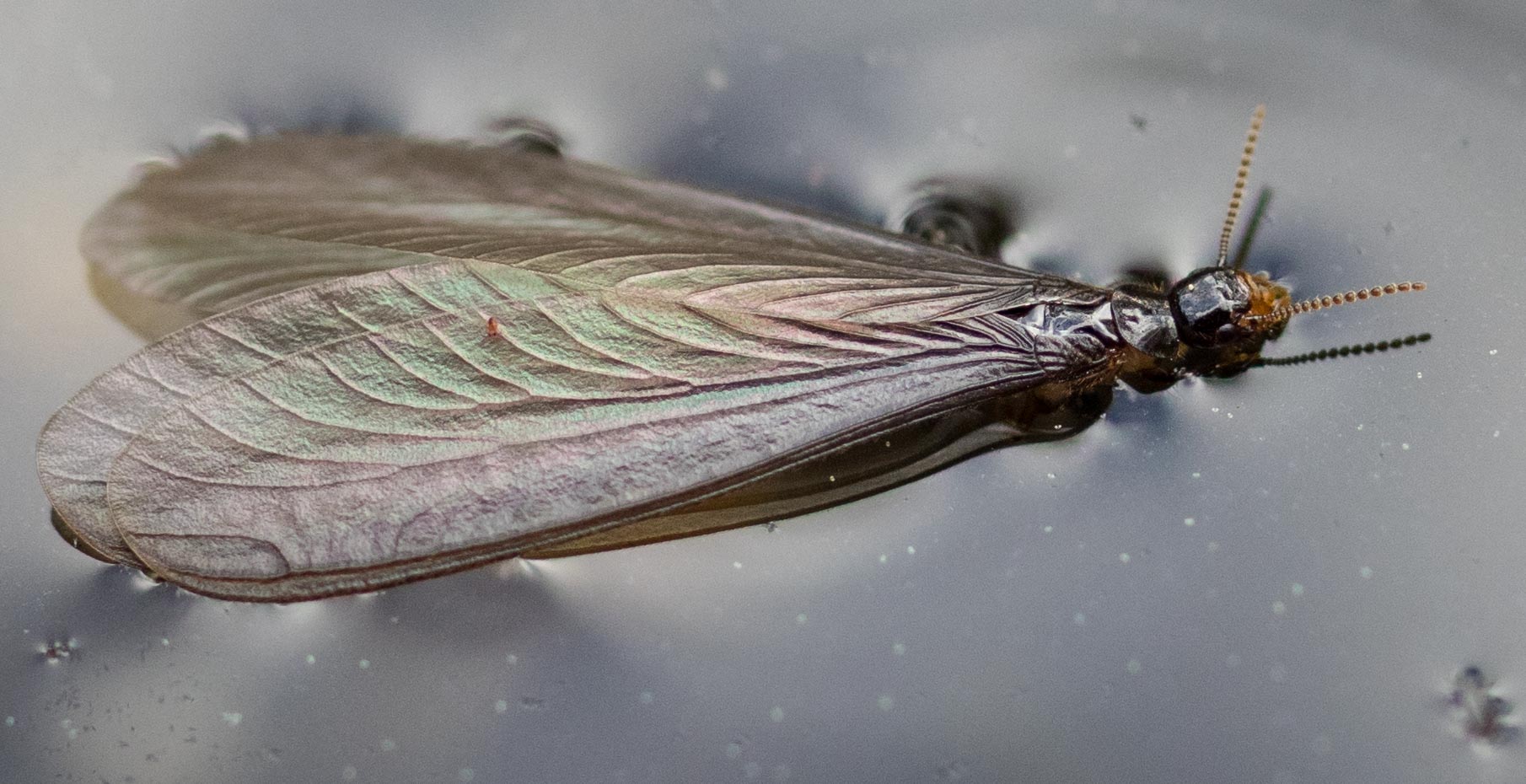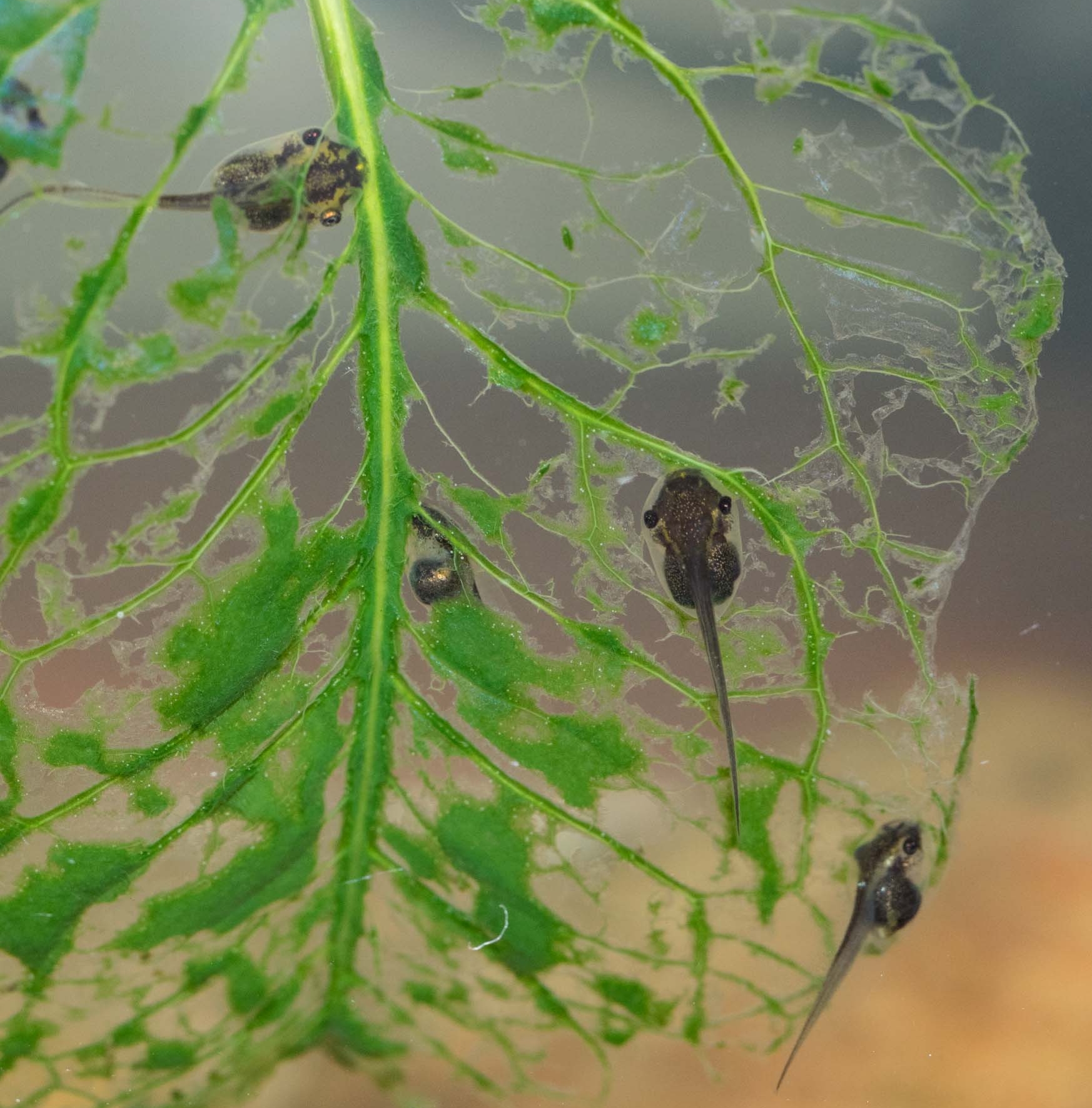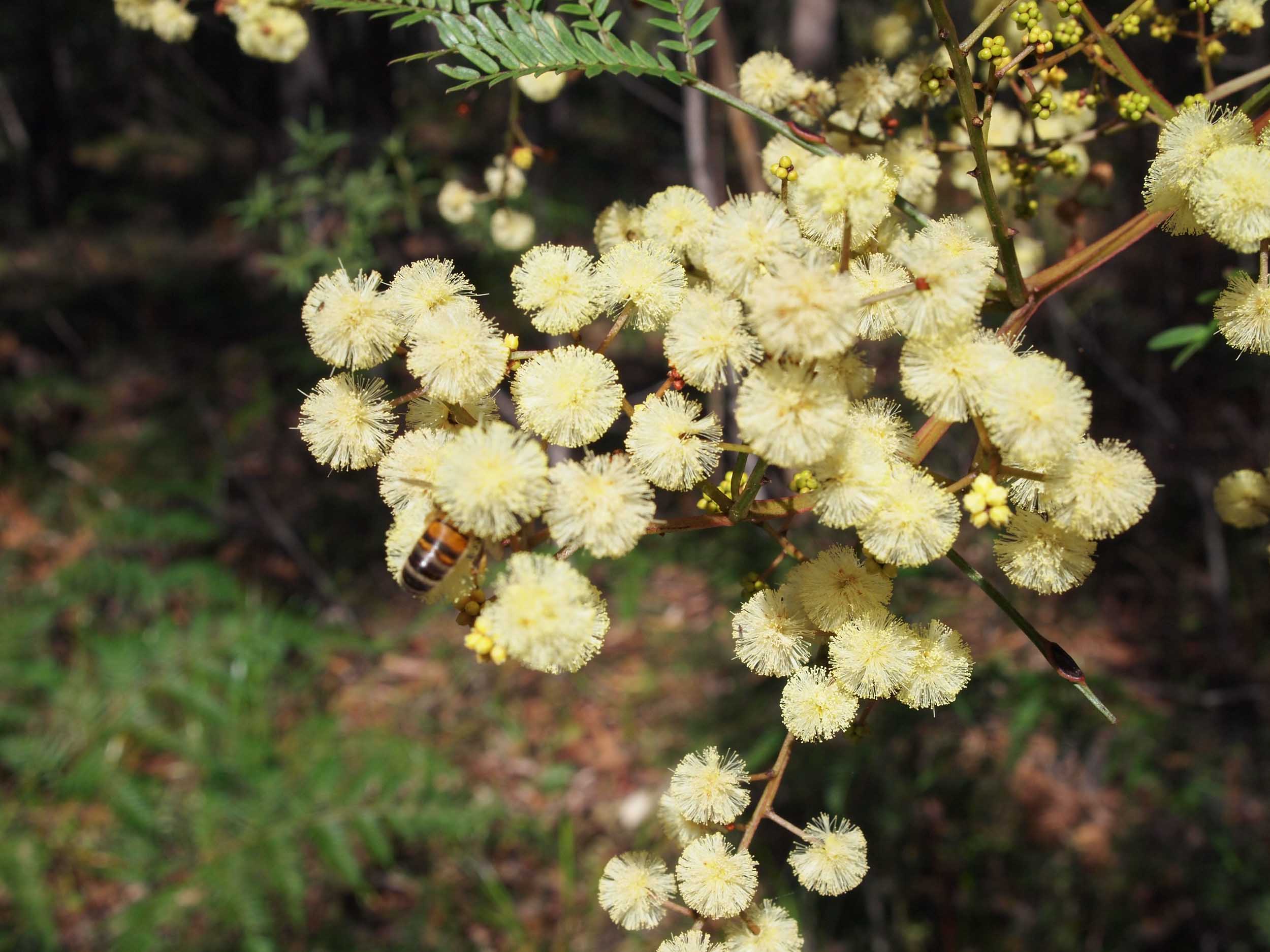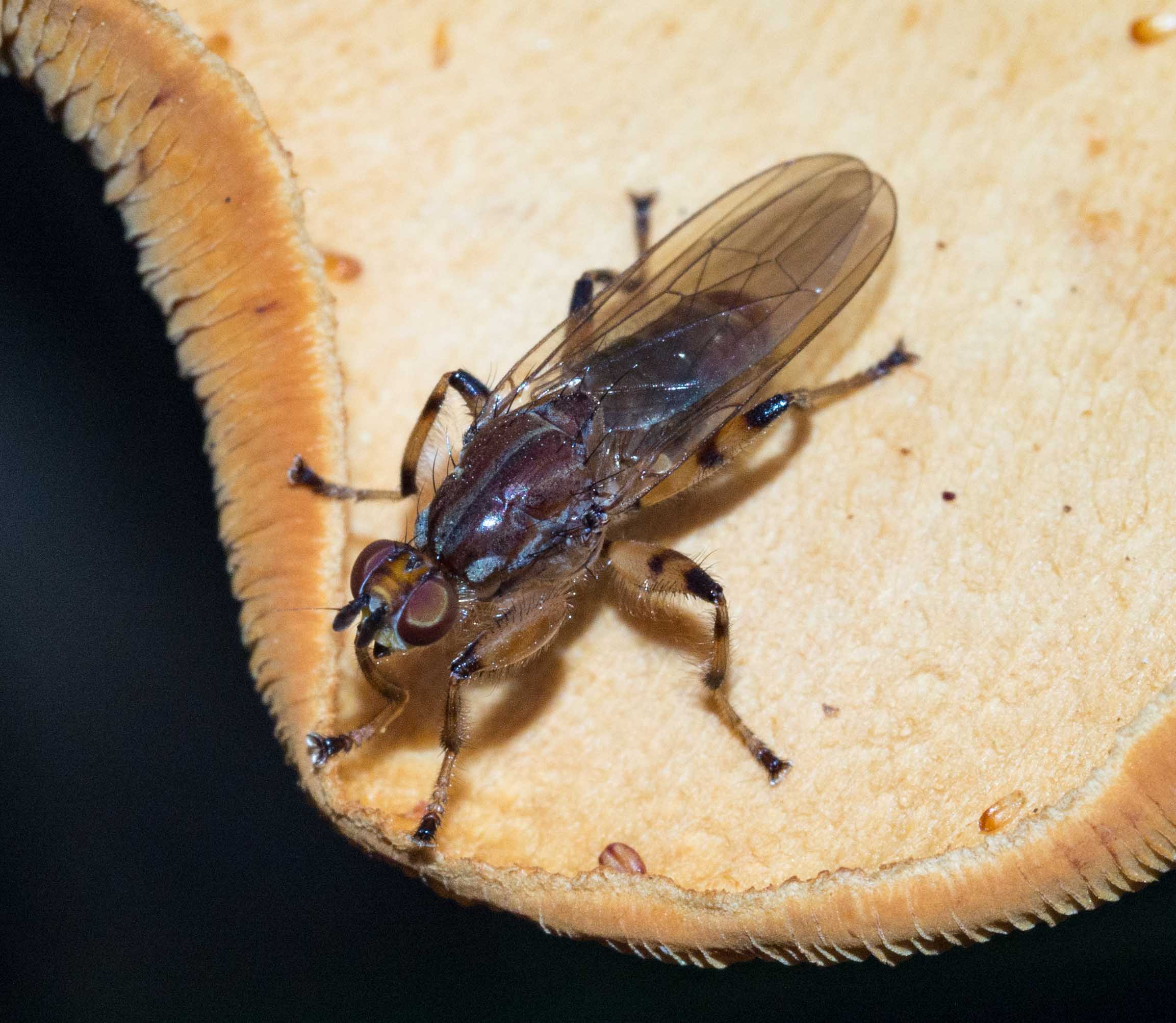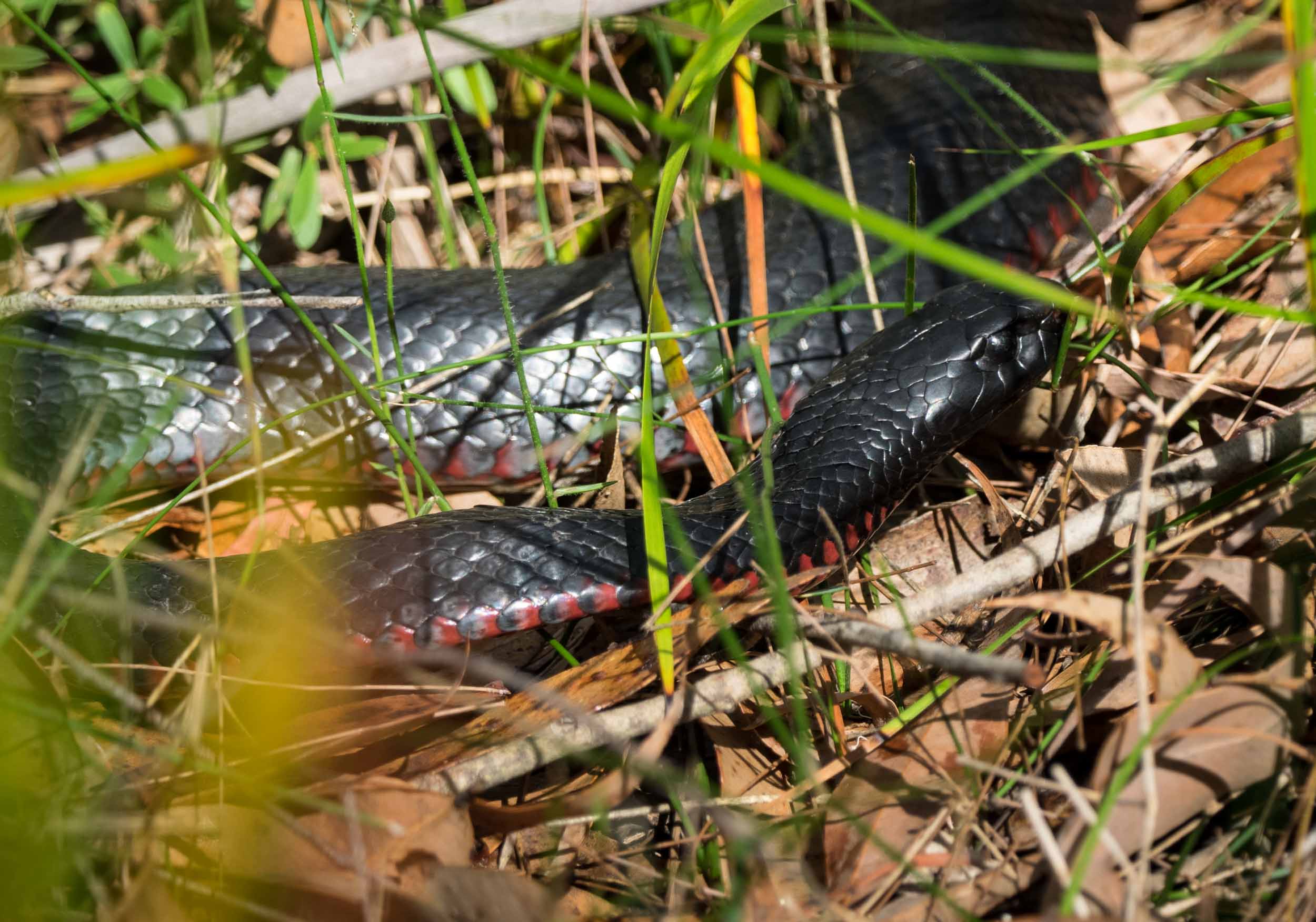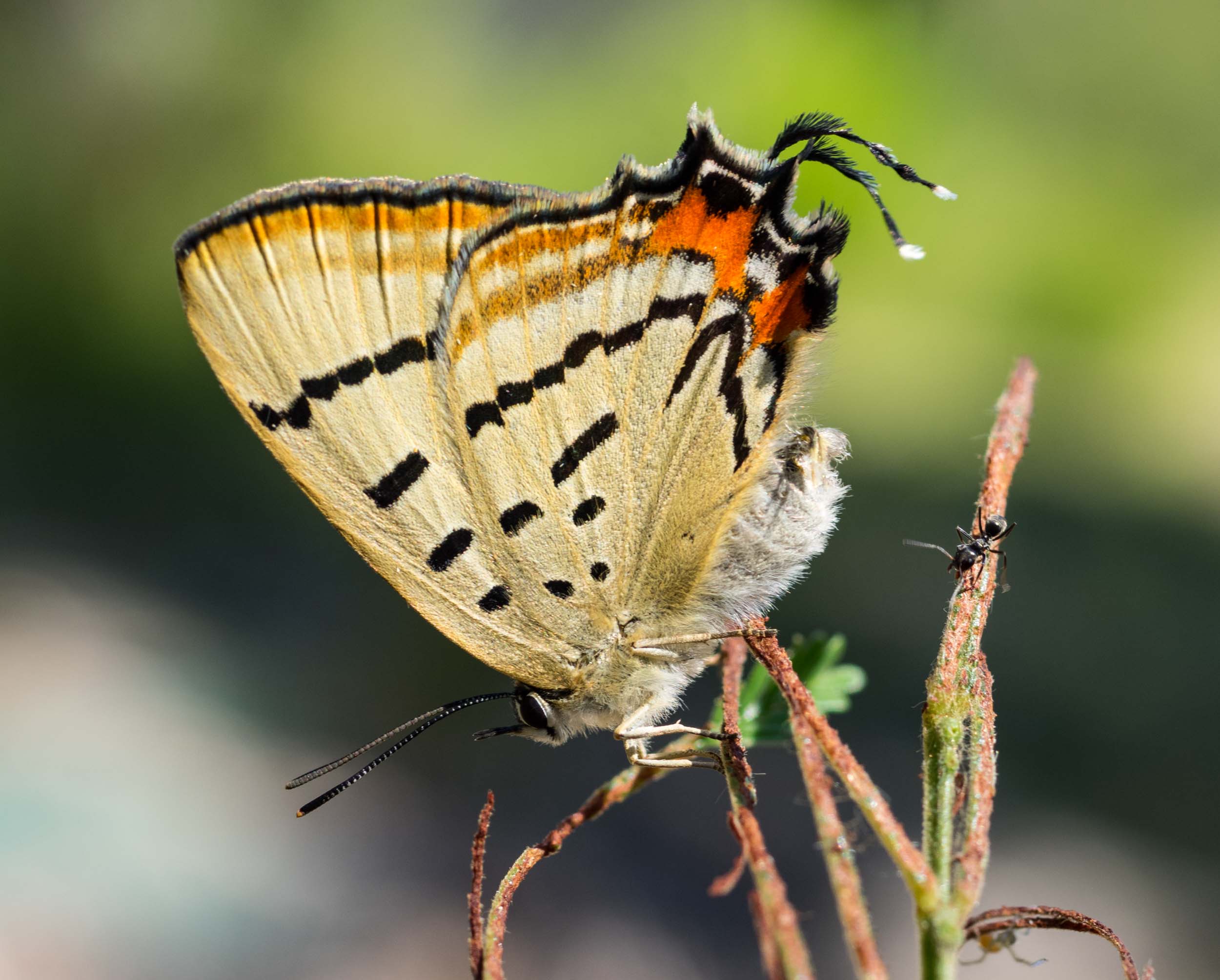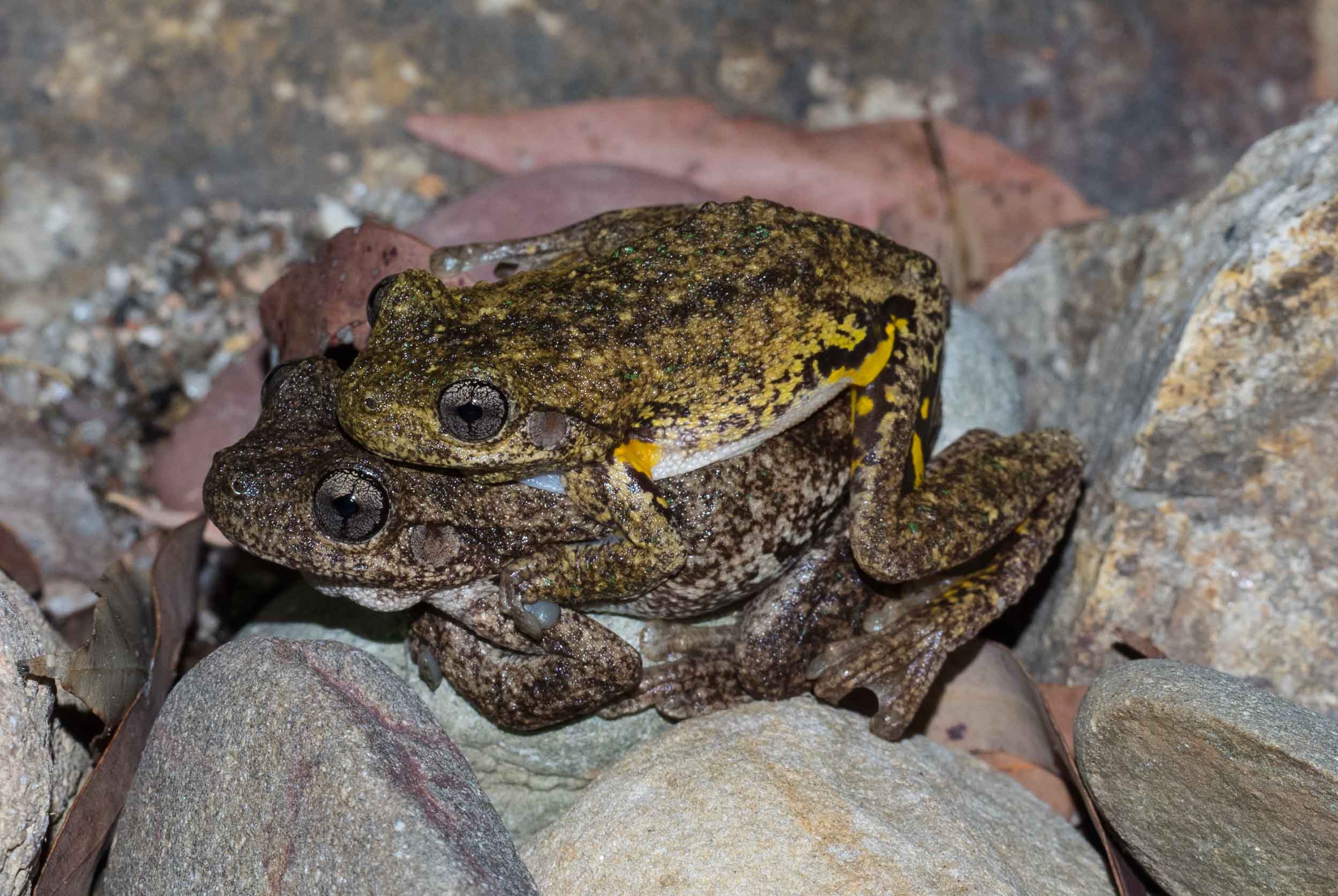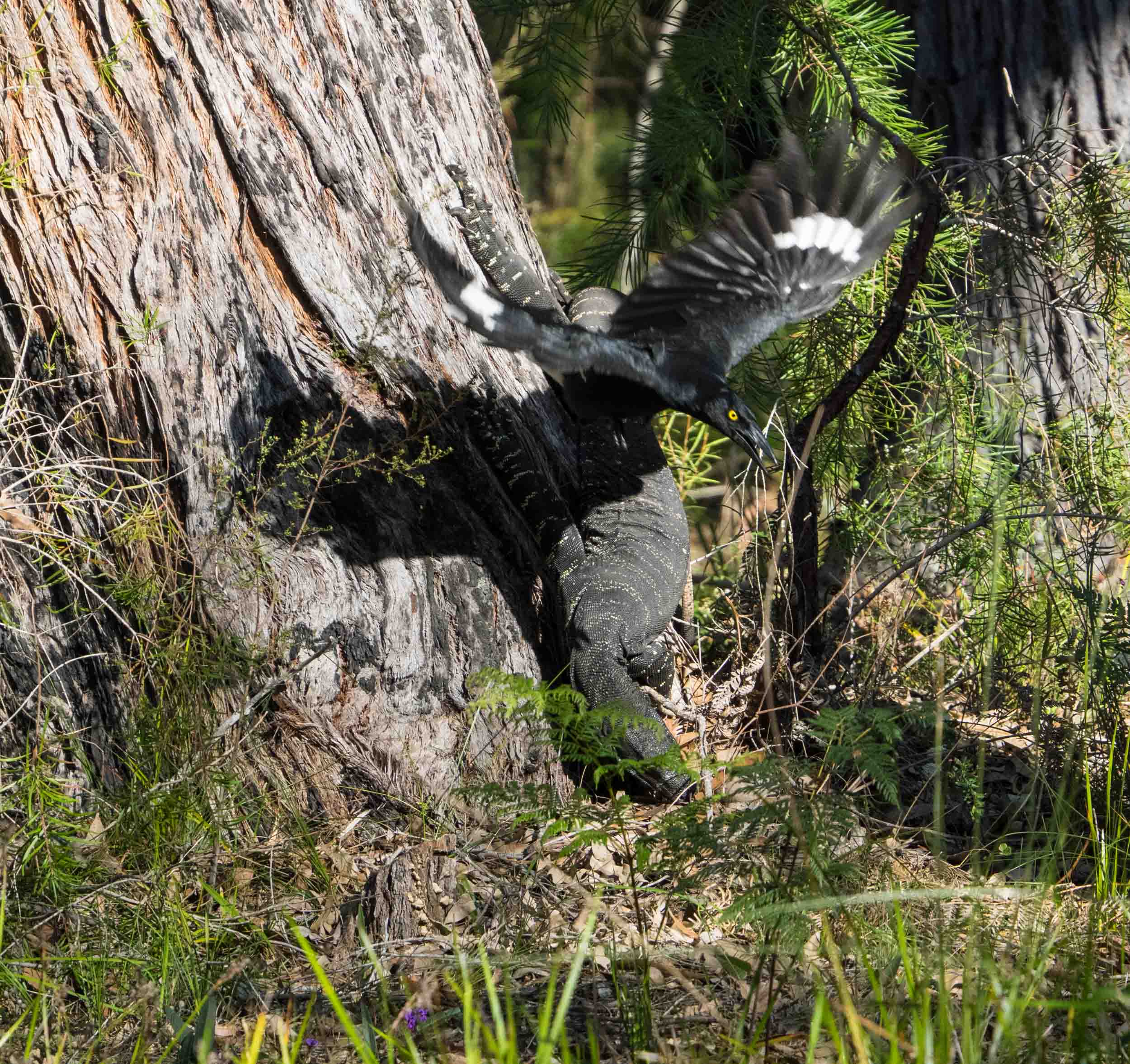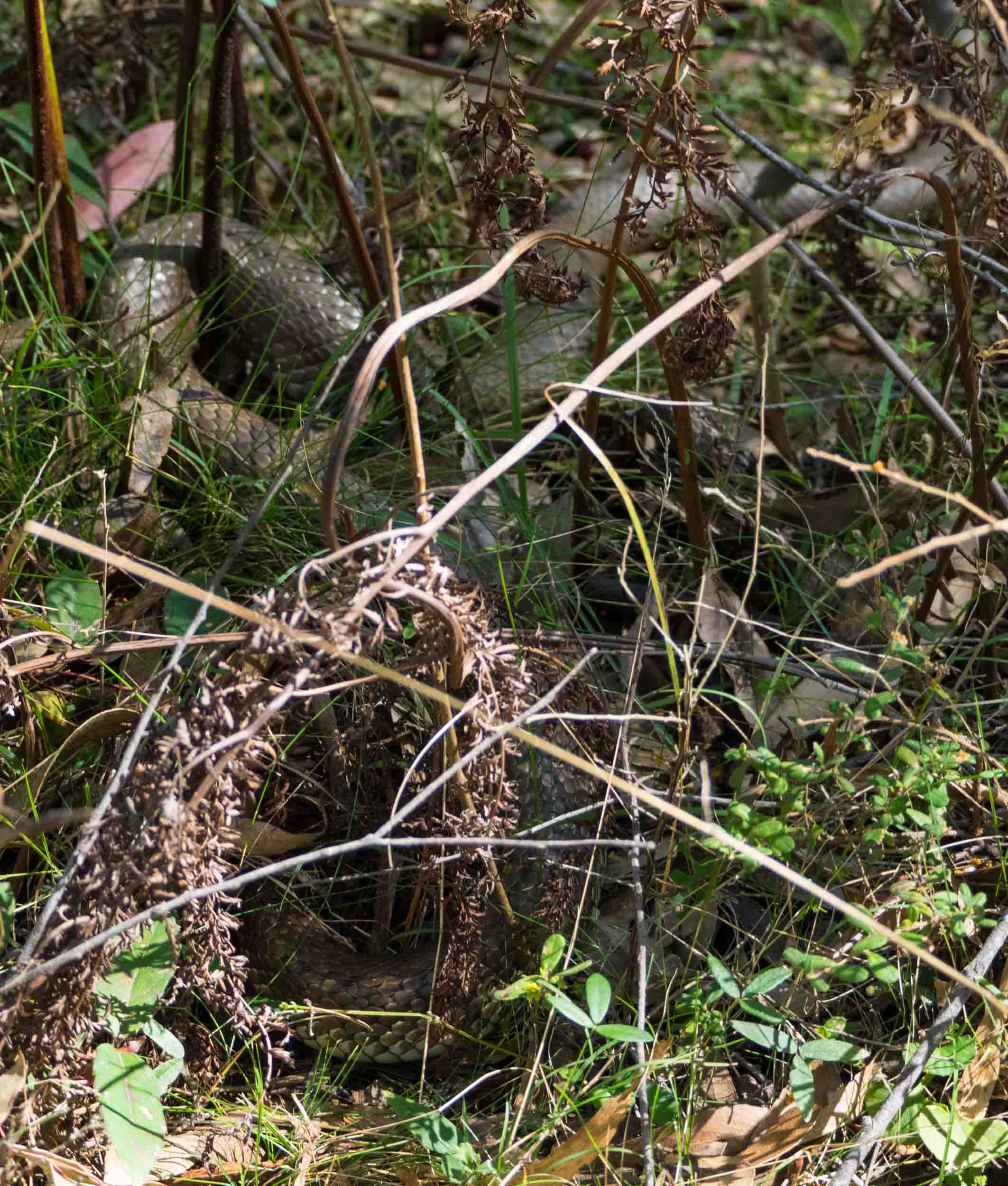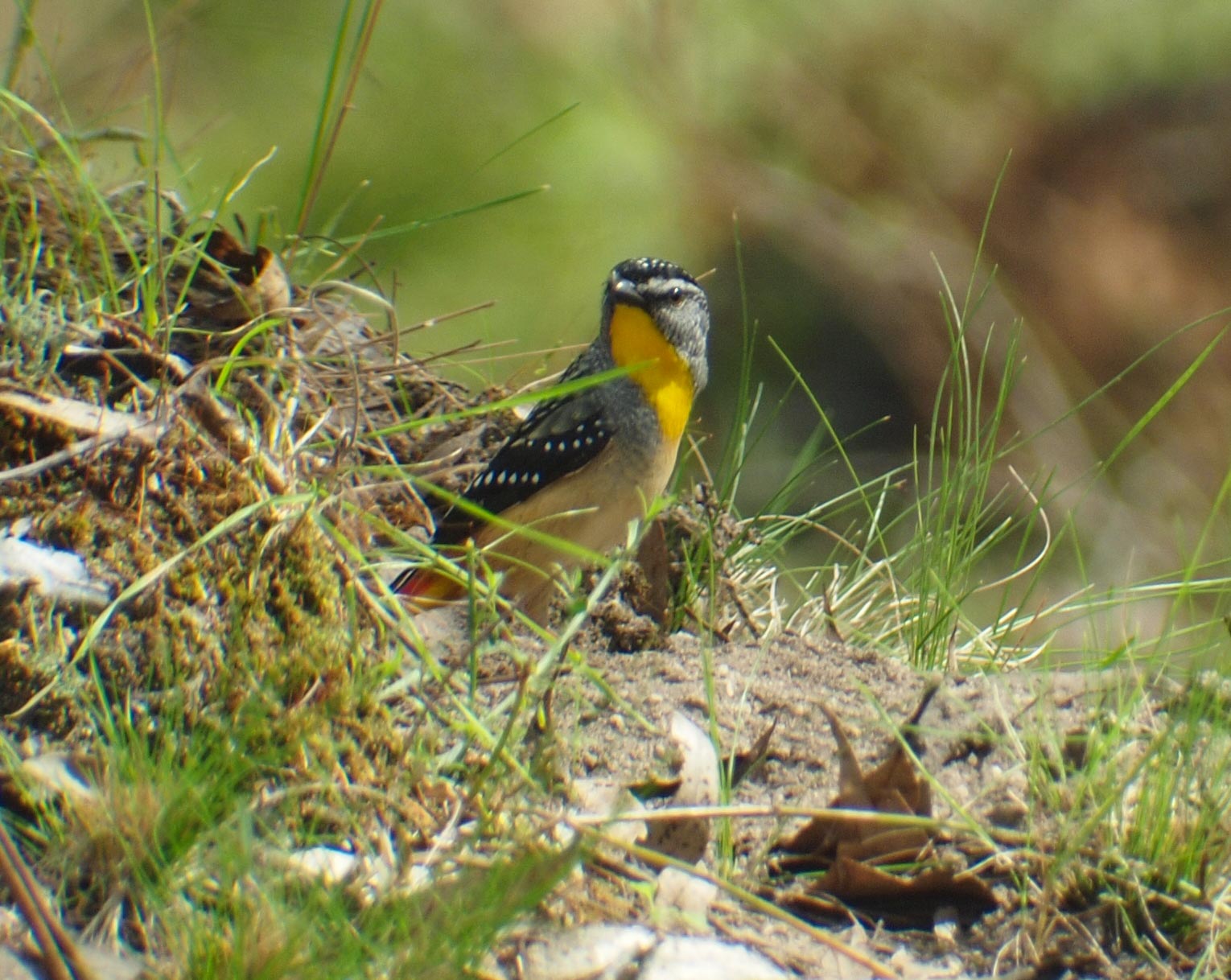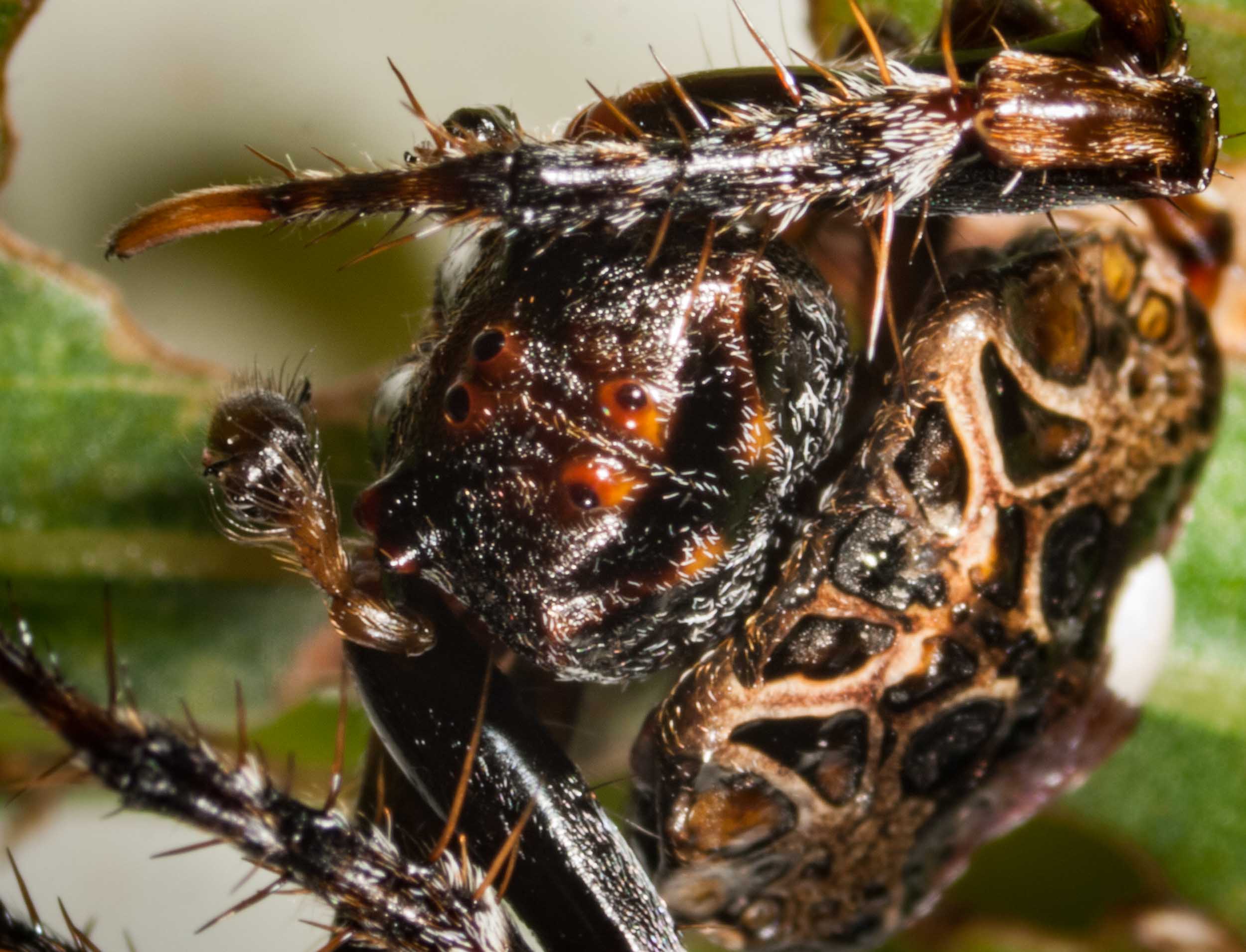The living forest - News & Stories archive
The male gall of the coccid bug Apiomorpha pharetrata consists of hundreds of chambers each housing a single insect. How is this complex structure assembled?
In a break with tradition, an essay. A thought piece. No photos, no field notes, no references. Just musings on why I do what I do.
A very large, quite beautiful orb-weaver and her equally spectacular web are currently on display in the forest
“What did you do with your summer holidays Kerri-Lee?”
Well, let me tell you all about it! I broadened my home range and met several new faces … and some rather special ones at that!
Includes accounts of: Acanothostethus (Crabronidae: Nyssonini); Pseudoturneria (Crabronidae: Crabronini; Megalyra (Megalyridae); and Pseudofoenus (Gasteruptiidae)
A special orchid and its wasp pollinator return after a 4 year absence, providing dramatic views of their interaction
A story of transformation and identification. Having found a newly-emerged, weirdly-shaped fly, I watch her take shape and I’m now confident of her identity: Physocephala nigrotestacea
I explore the extraordinary world inside an extraordinary gall. Fat bodied females, tiny winged males, cute, crawling nymphs and a host of parasites.
This post is an extended version of a talk I gave on 17th September, 2024 in Batemans Bay at a Symposium of the Linnean Society of NSW.
From August into early September: the forest comes to life with a burst of flowering, the emergence of insects and reptiles, and the breeding frenzy of birds.
My winter wasp research projects take a twist when I discover several unfamiliar species ... in the house!
A gallery of insects from the summer of 2023-24
A close look at the mechanics and behaviours involved in Thynninae mating, including genitalia (in all their glory!)
A fortuitous nest location close to the house has provided an intimate look at the rearing of nestlings of the superb fairy-wren
A search for the identity of a small male cricket leads me to characterise its mating call and learn how it is generated
The seasonal transformation begins in August, and with each passing week we welcome arrivals. Here is a compilation of my favourite sightings from the past two months.
A look at some of the activity in the forest and its adjacent river in the cooler months of the year.
Like most Crabronids, Cerceris are solitary wasps. Intriguingly, however, a few species display behaviours reminiscent of social insects. Our local species, Cerceris antipodes, is one such. I delve into the research literature to learn more about their nesting habits.
Yet again the mud nest of a Pison wasps yields up a surprise. Melittobia australica (Eulophidae) displays simple forms of social insect traits, including sib-mating and cooperative behaviours.
Baby wolf spiders spend the early part of their lives on their mother’s back but at some stage they have to leave home. I get a great opportunity to observe this big occasion in a convenient location.
A single regenerating eucalyptus bush has provided the home for 3 different species of sawflies to rear their young.
Spider wasps stash a single spider in a nest as a food source for their developing larvae. I compare how two different species go about this task.
An unfamiliar sand wasp leads me to investigate Crabronidae … and develop tools I can apply to related puzzles in the future.
One small patch of sandy ground, so many ground-nesting insects! Seven species of crabronid, three bees, velvet ants … and more.
Activity in the forest - most of it related to breeding - has become frenetic as we reach the end of spring.
In the natural garden of the forest floor this month, Tetratheca and Stackhousia are islands of calm amid a hectic sea of bees and peas. So I set out to discover more about the pollination strategies of these very different types of flowers.
Sawflies are much more than spitfire grubs. They’re an ancient, diverse group of insects with a fascinating biology.
A selection of images from late Sept to mid Oct 2022
We discover a tiny, sand-nesting wasp and record unique photos and observations of a rarely seen crabronid … Rhopalum coriolum.
A dispersal flight from our long-lived termite mound demonstrates that it still houses a reproductively active colony
The return of the bees, forecast for late August, has been quite dramatic this year. Just a week ago, I couldn’t find a single native bee. Now the Leucopogon flowers are alive with a variety of native species.
In just two short weeks life in the forest has transformed. Flowers are blooming everywhere, insects are reappearing en masse.
A day of flying ants prompts me to learn more about our local ant species - starting with Aphaenogaster longiceps.
More about moths - focussing on their diversity and biology
Another year on since the fire, the forest has continued to recover. It now looks quite different to before the fire. Has it changed for good? Or will it return to its previous state?
With a large mud nest in hand, I investigate the mystery of the mismatched cocoons within. And along the way I learn much about the development and behaviour of cuckoo wasps.
Cuckoo wasp development illustrates the dynamic structure of the insect cuticle – beautifully
The journey of a katydid nymph from fresh hatchling all the way through to the adult.
We watch on as a beautiful flower chafer takes its virgin flight … a rare treat indeed!
The engrossing spectacle of orb-weaver spider mating
Paralysed spiders, greedy mud-wasp larvae, and the most beautiful parasites imaginable! All packed inside little mud houses.
Includes: Pison (Crabronidae: Trypoxylini) and Aglaotilla (Mutillidae: Dasymutillini)
A single flowering teatree bush attracts a host of insects
The back story on the discovery and naming of a new species of funnel-web spider.
We follow the tortuous process by which a katydid nymph hatches from its protective egg case and simultaneously sheds the cuticle coat it acquired as an embryo.
Short stories, videos, a list of plants in flower, and images of the most recent Spring arrivals.
For the first time we’ve seen termites at the start of their flight to establish new colonies. This has lead us to discover much more about their lives below ground.
Curiosity about the identity of flies that parasitise a caterpillar leads me to better understanding of dipteran microanatomy
Winter temperatures still, but the forest is clearly ready for the Spring transformation.
While sitting in just one patch of forest for several hours in the course of one week … more than 20 wasp species from 12 different families. Including Trigonalidae, a tiny and bizarre family, rarely seen.
The forest has undergone an extraordinary renewal - which is ongoing - following the devastating bushfire in January 2020.
Ecosystem recovery as seen with moth eyes
We were looking for moths but we got more than we bargained for. Much more!
A detailed look at the nesting behaviour and identification of two more Crabronidae, Sphodrotes and Austrogorytes – with a Bembix and Cerceris thrown in, for good measure.
An orchid lures a wasp with the promise of sex - to achieve its own reproductive needs
Not at all boring! The arrival of Summer coincides with a dramatic transformation of the forest undergrowth.
Triggerplants are among the speediest of plants. I take a closer look at the structure and function of their flowers.
Podagritus is a genus in the family Crabronidae. It’s a wasp I’ve never seen before and their nesting behaviour has been fascinating me for weeks.
A summary of post-fire recovery of our forest moths - a good proxy for ecosystem health
Flower wasps, Thynninae, are an important part of the forest ecosystem – it was time for me to learn more about them.
Fairy-wrens are settling in to breed, taking advantage of spiky dead vegetation.
For a couple of weeks this month we’ve been taking note of our nocturnal house visitors. It’s quite a collection!
Soil biodiversity is a good indicator of forest health. The signs are all good!
A close look at the insect traps of Drosera auriculata, in all their glory
We anticipate an extraordinary display of Xanthorrhoea flowers this Summer. Fire promotes flowering of these iconic plants. In preparation, I’ve been seeking to learn more about our local species.
Ghost moth larvae took refuge deep in the soil as the fire swept through the forest, to emerge as adults 5 months later.
Observing flies on fungi leads me to the discovery of a new species of orchid in our forest - get the connection?
Rebuilding our fire-damaged frog pond was an ideal opportunity for a pond-life audit
The strange looking foliage that has appeared on our eucalypt trees since the fire houses a wealth of creatures - an ecosystem in its own right.
Piece by piece our forest ecosystem is reassembling. Insects are populating the rapidly regrowing vegetation.
Three months on, the epicormic growth is astonishing. I seek to learn more, even as I marvel at a sight I may not see again for many years. Indeed, I rather hope not to.
Recovery of the forest vegetation proceeds apace
As the plants regrow the insects return. Many are species we know but there are new ones too. Importantly the makings of the next generation are also underway.
With each animal that appears, it’s intriguing to consider where it was when the fire swept through.
A forest begins the slow process of regrowth following an intense bushfire.
One month since The Fire and our home bird list is growing. Some of our regular forest birds are returning, but there are some unusual visitors too. We’re hoping they don’t all stay!
Reflections on building to withstand a wildfire
Around 2am on 5th January 2020 our forest was engulfed by fire. Just 4 of the more than 5 million hectares burned in NSW this season, but it’s the 4 hectares we know and love.
Under the cover of bark, an insect larva embarks on a long, circuitous journey that will lead to its transformation
Finding hidden spiders is a challenge, and watching their behaviours day-after-day is fascinating.
Many different types of insects land on the convenient flat surfaces of the tea-tree flower in search of nectar and pollen
Different bees use different strategies when it comes to tackling a pea flower.
Mating Brown Snakes … a rare and intriguing sight!
Following an unidentified spider on her maternal journey.
A moth’s face up close is surprisingly beautiful - and provides clues to the identity of its owner
A light trap in the forest during the dark of the moon draws hundreds of insects.
We venture out on a cold, still, dark, late Autumn night to search for a ghost (fungus)
Rearing caterpillars to discover which moth species they belong to can bring surprises!
Autumn, rain, dark of the moon. The perfect conditions for ghost moths.
Tenagogerris euphrosyne: our most common local species of water strider
A view of an insect making the transformation from nymph to adult under the cover of darkness
Finding a colony of burrowing beetles last week led me on a journey of discovery. I now recognise 3 species of Passalidae on our home list - and present a detailed chain of evidence. This post is a bit more than a casual read, I’m afraid!
I describe the female of a species of cricket previously known to science only from a male specimen.
Mid Winter is a quiet time in our southern forests. With nearly all the honeyeaters gone, and hardly an insect to be found, life does seem to be ‘on hold’.
Finding some new representatives of the spider taxon Mygalomorphae (Mygals, for short) leads me to discover more about this endearing group of animals.
On a rainy night, with Trapdoor and Funnel Web Spiders climbing the walls, it is a tiny white spider that catches my attention - and a large meal.
Few birds, few insects, but it’s a Winter fungi frenzy
Watching a group of Glossy Black-Cockatoos this week led me to think more about how they feed.
A resident Two-spined Spider has turned her Banksia home into a very busy nursery web.
A new frog for our home list, and a relatively newly-evolved species … a mere 10,000 years plus!
I rediscover the Ogre-faced Netcaster spider and her amazing method of trapping prey
There are few plants flowering at the moment, but Banksia spinulosa is looking quite spectacular. Low light, brilliant flowers, and a beautiful bird - an Autumn afternoon treat.
Butterfly eggs aren’t the only target for wasp parasites - Lacewings can suffer the same fate
An ingenious mode of parasitism employed by a tiny wasp - lay your egg inside someone else's egg!
A brief return to the ongoing challenge of getting to know our native bees.
With few options available at this time of the year, insects looking for a feed of nectar or pollen seek out the tiny flowers of Prickly Broom-heath.
As Winter draws nearer, butterflies & grasshoppers are engaging in a breeding frenzy.
It's a lucky day when we see the Glossies feeding ... but to see them breeding is a rare sight indeed.
Winged ants gather together as they prepare to take flight to found new colonies
I rekindle a love affair...
A chilly morning, and life in the undergrowth is slow to warm up and get moving.
A small Red-bellied Black Snake has been frequenting our frog pond in recent days - preventing some of the tadpoles from becoming frogs
I look at one of the major contributors to energy flow in our forest ecosystem
The few glimpses we get of life below ground is a reminder of how much is taking place beneath our feet.
Includes: Bembix (Crabronidae: Bembicini); Cerceris (Crabronidae: Philanthinae)
An update on my quest to get to know our local bees.
I witness a formidable little monster - a lacewing larva - coming into the world
My attempt to explain the complex mode of reproduction of the Eastern Grey Kangaroo
These familiar butterflies surprised me this morning, bullying and posturing to secure prime territory.
January marks the peak of flowering of two members of the Proteaceae that are widespread on the block - Saw Banksia and Geebung. So what is a banksia flower anyway and how does it differ from the "common garden" flower?
After watching native bees feeding on Persoonia flowers, I work my way to a better understanding of who they are and what they are doing.
Breeding season is a challenging time for birds, even for a species as boisterous and bossy as the Yellow-faced Honeyeater.
I chance upon another insect - a katydid - doing the houdini trick of escaping from its nymphal skin
White-naped Honeyeaters consume large numbers of spiders, and leaf-curling spiders seem to be a particular favourite.
Lacewings provide an example of an evolutionary quirk - a new design arises within one group of animals that bears a strong similarity to a pre-existing design in another group.
Damselflies and dragonflies undergo extensive changes during their final moult, adapting to the shift from swimming to flight.
The baby Sacred Kingfishers are out and about – and seem younger than ever before!
A pair of Red-browed Finches have chosen a nearby Geebung bush as a nest site, giving us a good view of their construction activities.
We get to witness ecdysis - moulting of the exoskeleton - taking place in our resident stick insect.
A new visitor to the pond in company with a familiar one
The promised update showing hatching of the caterpillar of the Imperial Hairstreak butterfly
The mating strategy of flower wasps is really quite bizarre.
Stick insect? Cricket? Grasshopper? This insect had us stumped for quite a while.
A bumper year for the cicadas prompts me to take a closer look at their biology.
Congregations of burrowing wasps are distracting me from my pursuit of native bees ... for now, at least.
Some of my earliest (and rather naive) observations of Bembix furcata (Crabronidae: Bembicini)
I get to see the beginning of the life cycle of the Imperial Hairstreak butterfly - egg laying on the host plant for its caterpillar.
Halloween has passed but this seems to be the week for spiders – of all kinds.
We get to witness a Red-bellied Black Snake feasting on amphibians again
It's all happening out there on a warm Spring evening in the forest
Nectar and pollen attracts a wealth of insect life
Early attempts to become acquainted with the local bee fauna
A few of the insects attracting our attention this week.
Who said flies are dirty! This lauxanid fly spent ages cleaning up
Territories, new arrivals, and battle scars
The termite swarms that accompany a pressure change provide a feast for the local skinks
We make a short excursion to the forest near the beach to find flowering orchids - with success!
After closely watching a feeding butterfly, I was curious to learn more about how the proboscis works.
Many moths and butterflies suddenly appear in Spring – yet most are here in the forest all Winter, either as eggs waiting to hatch or as pupa waiting to eclose.
An echidna finally makes an appearance!
Insects flood in for a feast, as flowering of Beard-heath reaches a climax
Announcing a new section of the website – Species ID, which includes Identifying vertebrates; Identifying invertebrates; and Identifying Plants.
As an early breeding 'arrival', this Australian Painted Lady butterfly gives her offspring a head start.
A diverse community of organisms lives inside a rotten log, recycling resources to support the growth of plants and animals in the larger forest ecosystem
We watched an encounter between a flowering wattle and a Swamp Wallaby - explaining why we see so many wattles with snapped trunks.
Grey Fantails made a showy reappearance in the forest this morning,
Small changes in the mix of birds, the gradual return of insects and spiders, and early patches of floral colour.
We know the seasons have turned when termites take flight. Here we take a closer look at these tiny insects: their dispersal strategy; courtship behaviour; and the general feeding bonanza they support.
Wattles are a prominent group of plants on our block. Different species contribute to all strata of the forest - from the undergrowth to the canopy.
We were lucky to witness a special event - a Netcaster Spider making her net.
Cassytha, Devil's Twine, illustrates some of the interesting ecological roles played by parasitic plants.
Eucalypt or "gum" trees are an integral part of our forest ecosystem.
We get to see some of the earliest steps in the formation of perhaps the most complex structure in the Universe - the vertebrate brain.
Tracing frog development back to earlier stages - the young embryo.
A twist on the theme of plants attracting birds to pollinate their flowers.
Fungi occupy an important place in the Web of Life. A couple of examples...
Austrolestes leda (Wandering Ringtail) damselflies - a summer breeding frenzy
Red-bellied Black Snakes are surprisingly good swimmers!
Following the life cycle of a butterfly uncovers some surprising interactions with other organisms!
We get to see how frogs make more frogs.
Birds really don't like goannas! A noisy change in bird calls is often our first indication that a goanna is nearby.
A rare glimpse of an event that is probably quite common: a Tiger Snake preying upon the nestlings of a ground-nesting bird. Gruesome, but amazing.
Lace Monitors (Varanus varius), active during the warmer months, are voracious predators and provide a highly efficient carrion disposal service.
A close look at the unusual nesting behaviour of this small bird
Black-faced Monarch cleverly conceals its prey, only to have the hapless moth end up as another's meal.
As a 'first' for us, discovering this spider in the undergrowth was an exciting find. What I didn't realise at the time was how rare it is to get a photo of a male Bird-dropping Arkys spider. My lucky day!
I get to witness a fascinating event - a male St. Andrew's Cross Spider courting then mating with a female...and the macabre postscript.
This website was launched in August 2017, but you will notice that some posts pre-date the launch. We chose to pre-populate the page with a small number of 'past' stories. Starting in August 2017, and for years to come(!), we will be adding news and stories 'as they happen' here in the forest.




